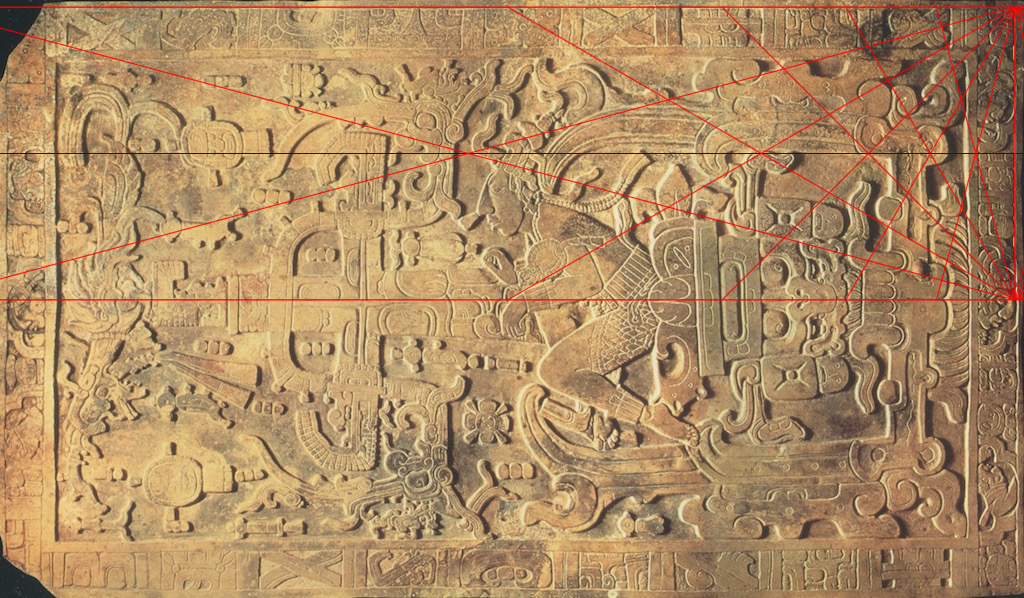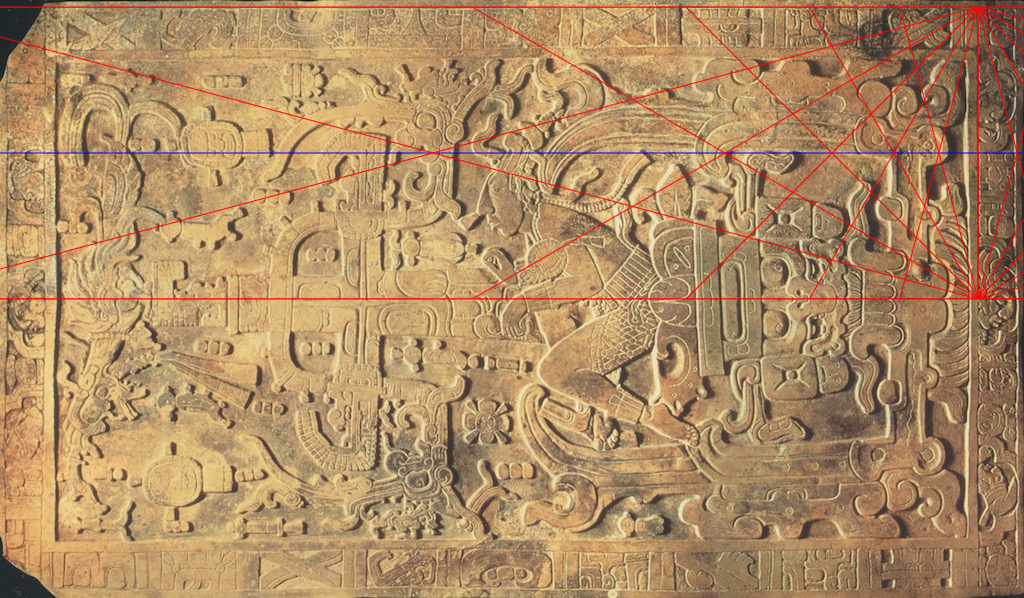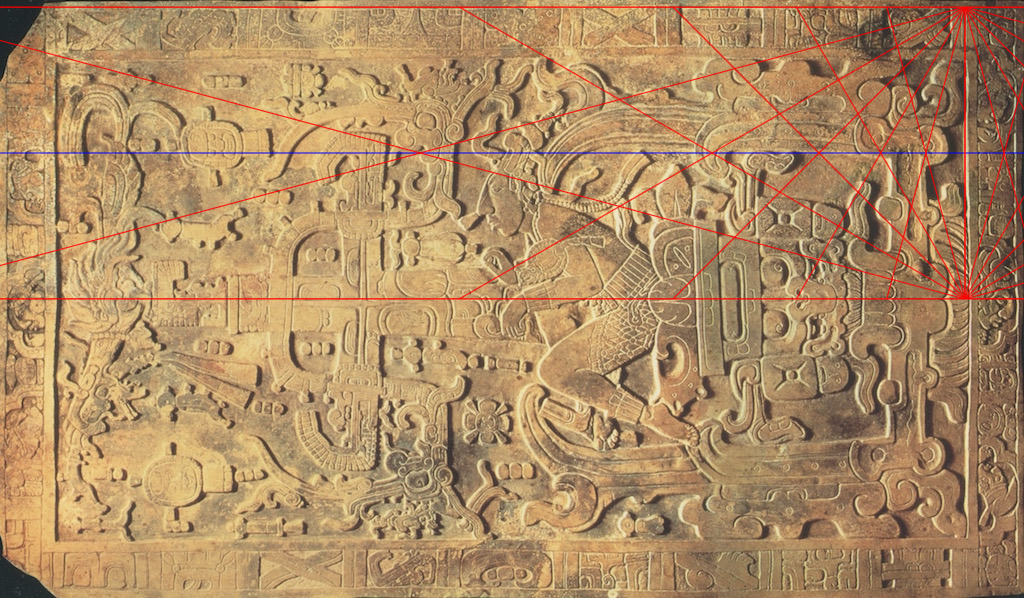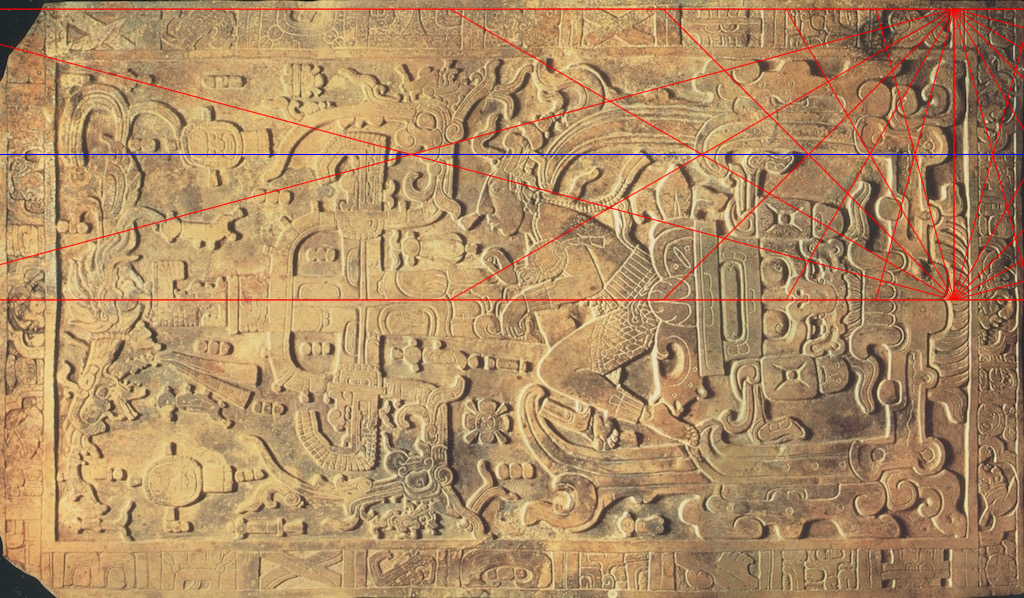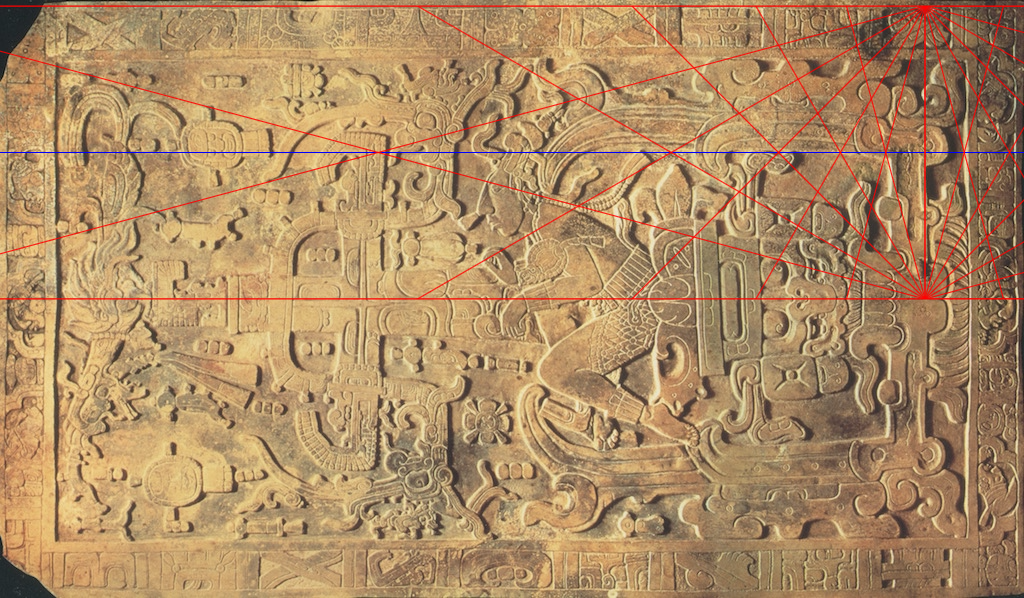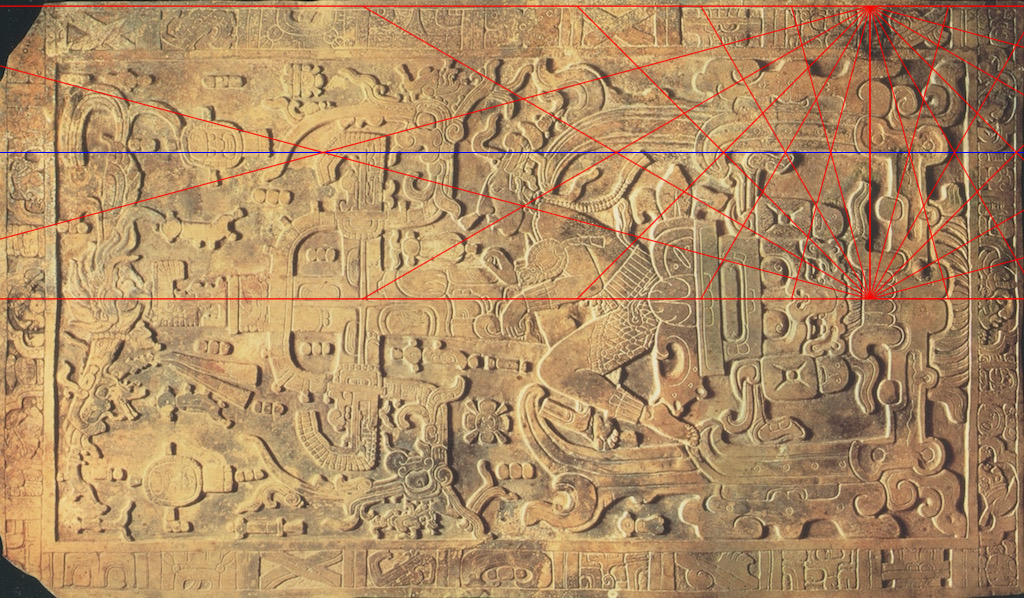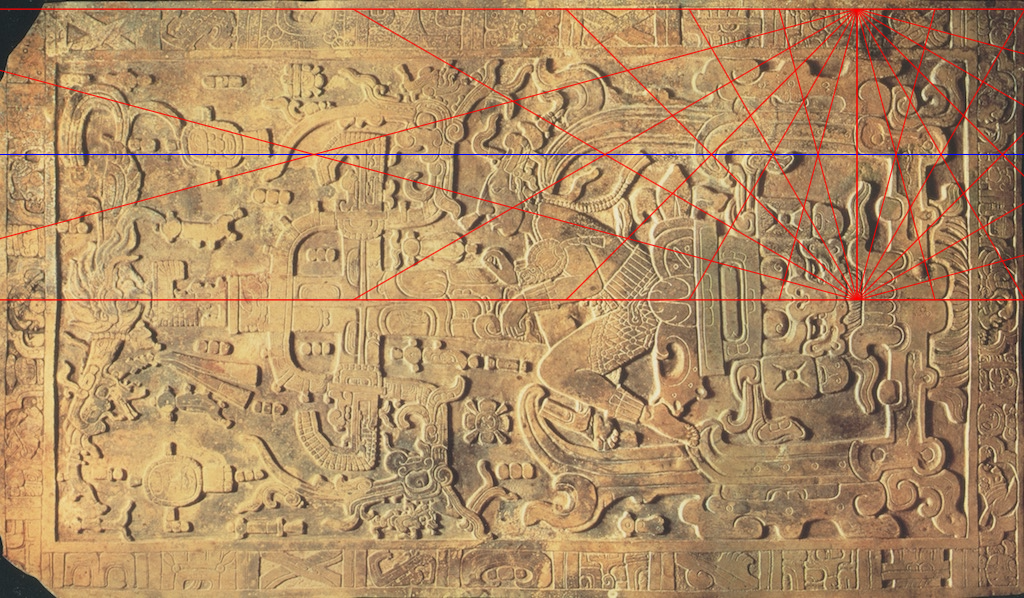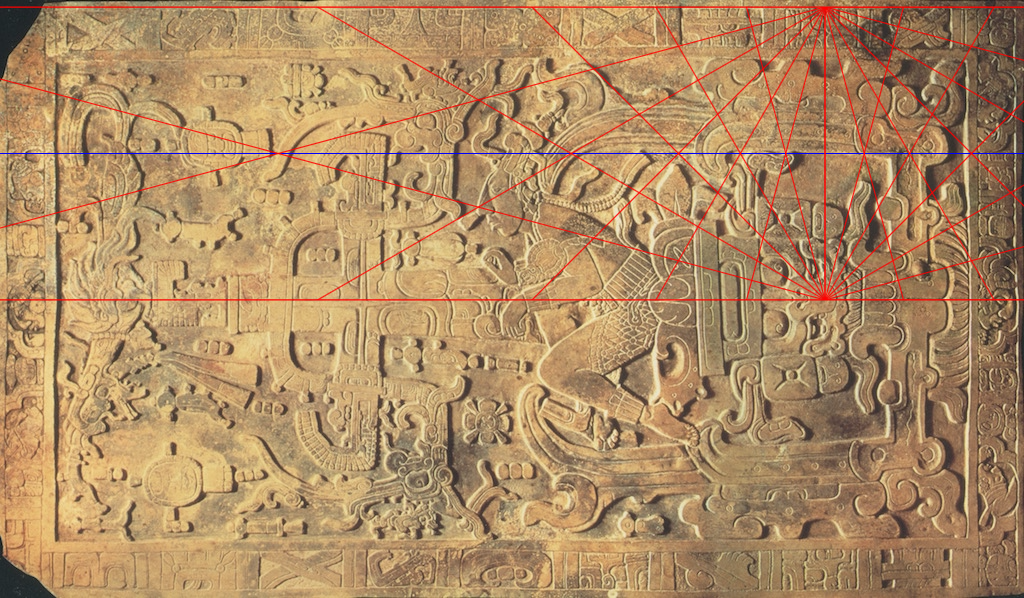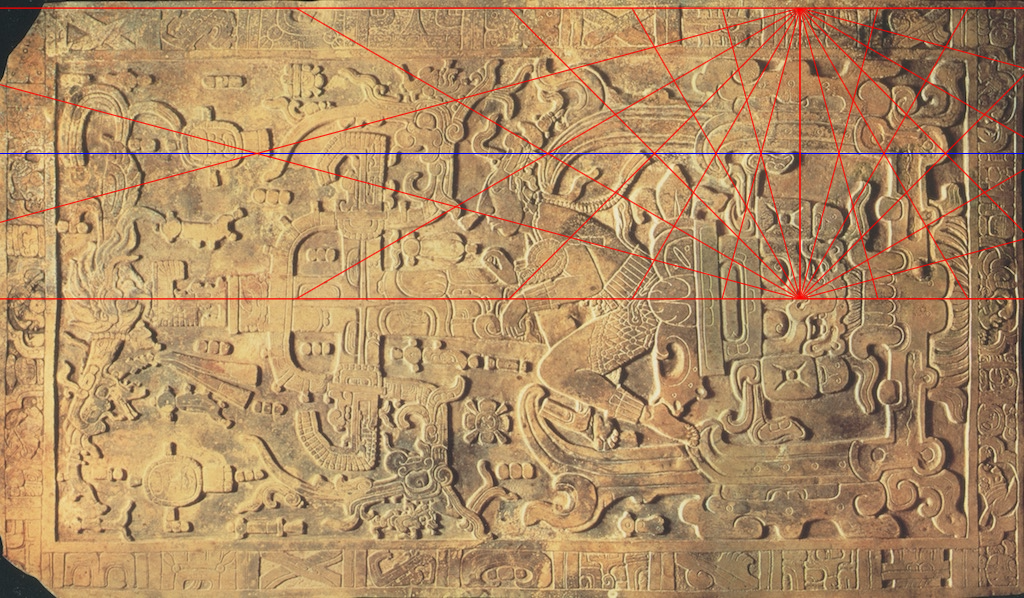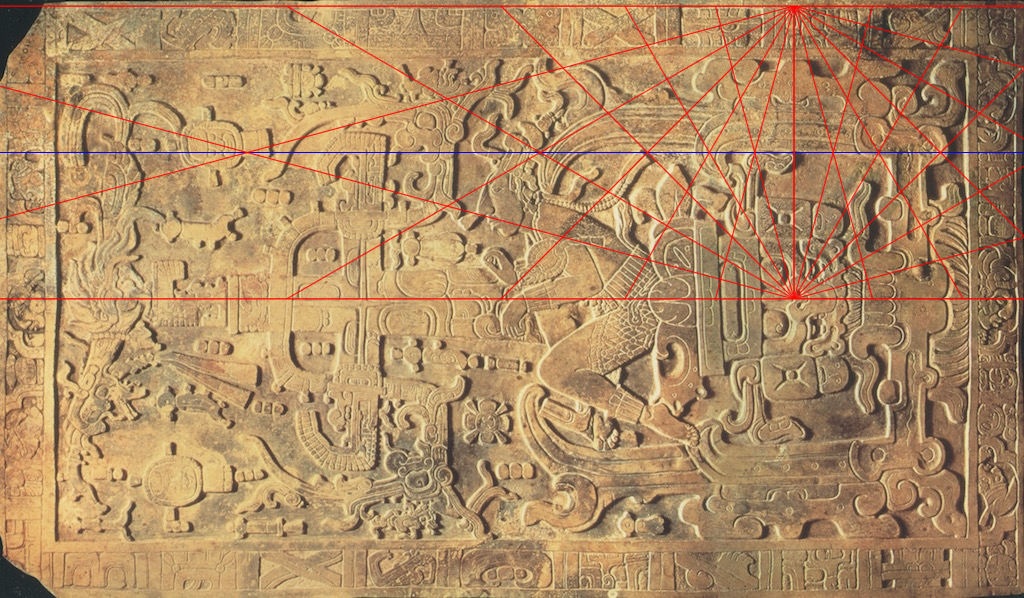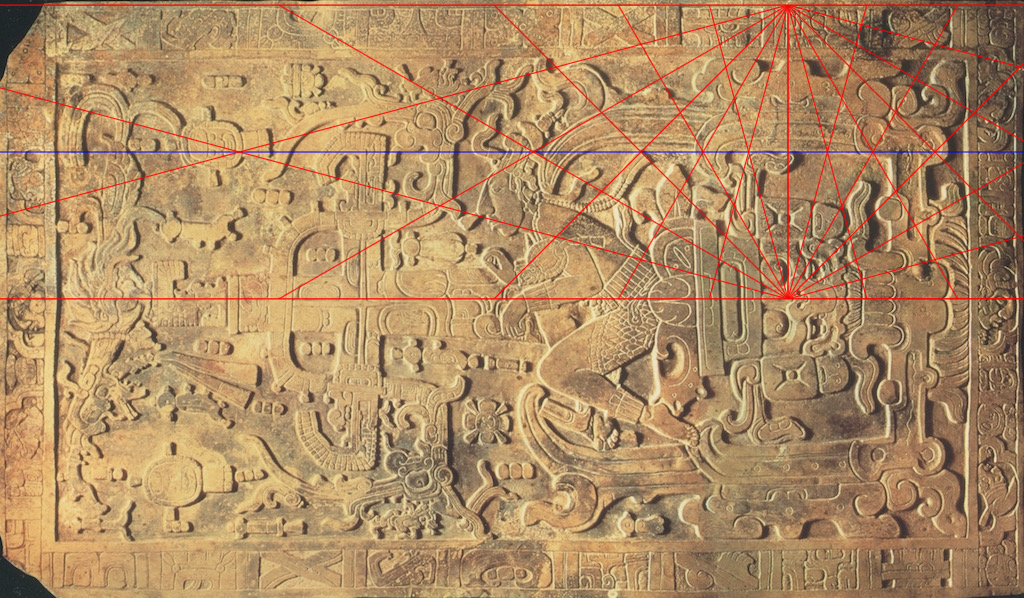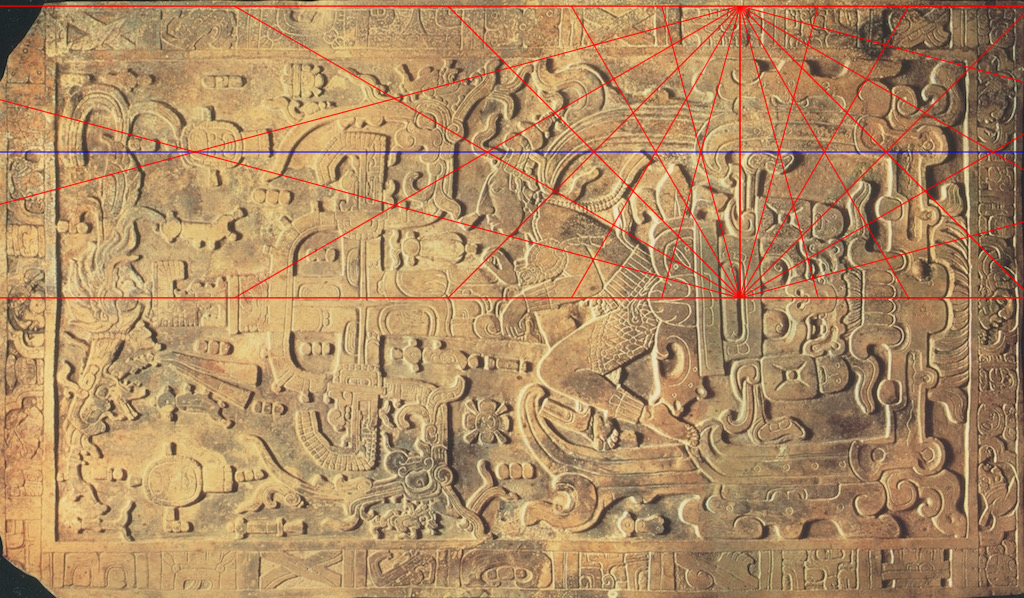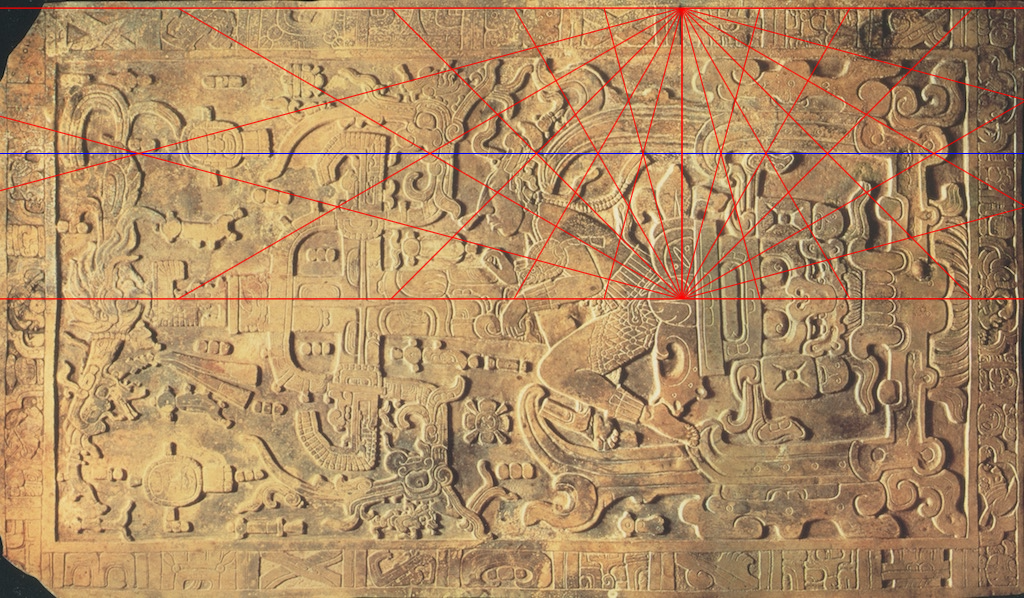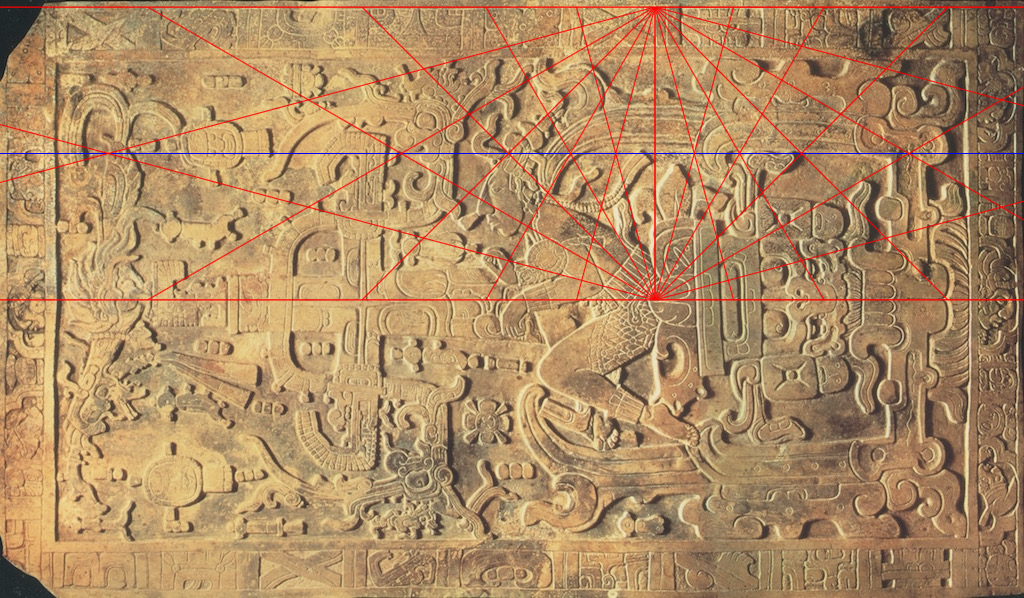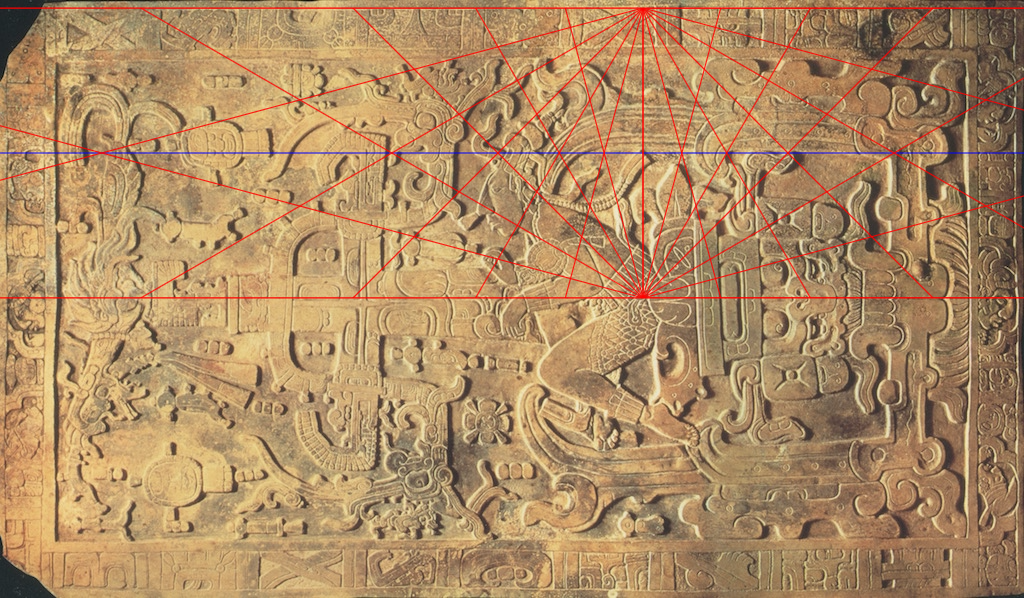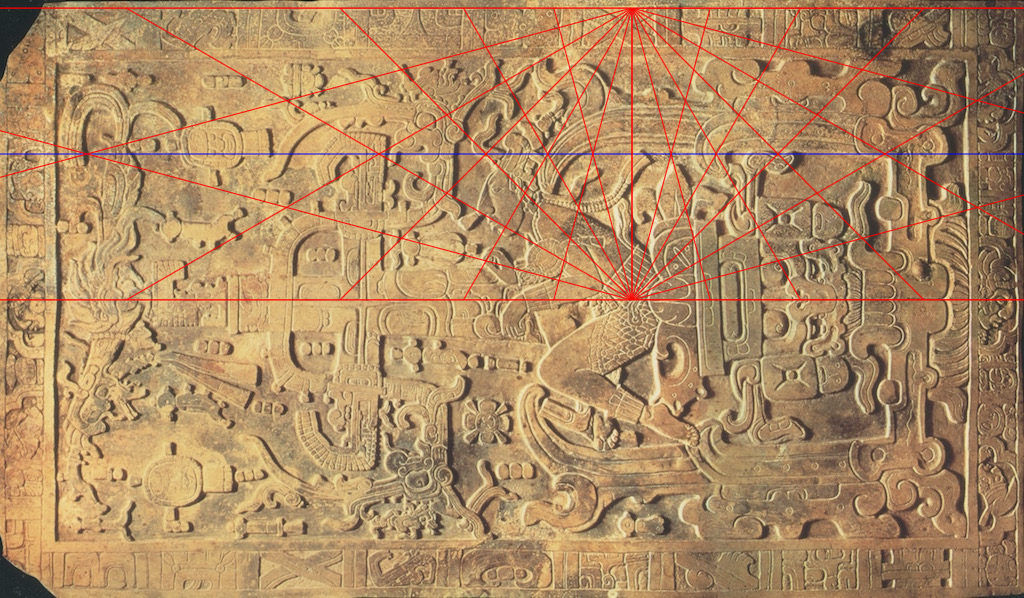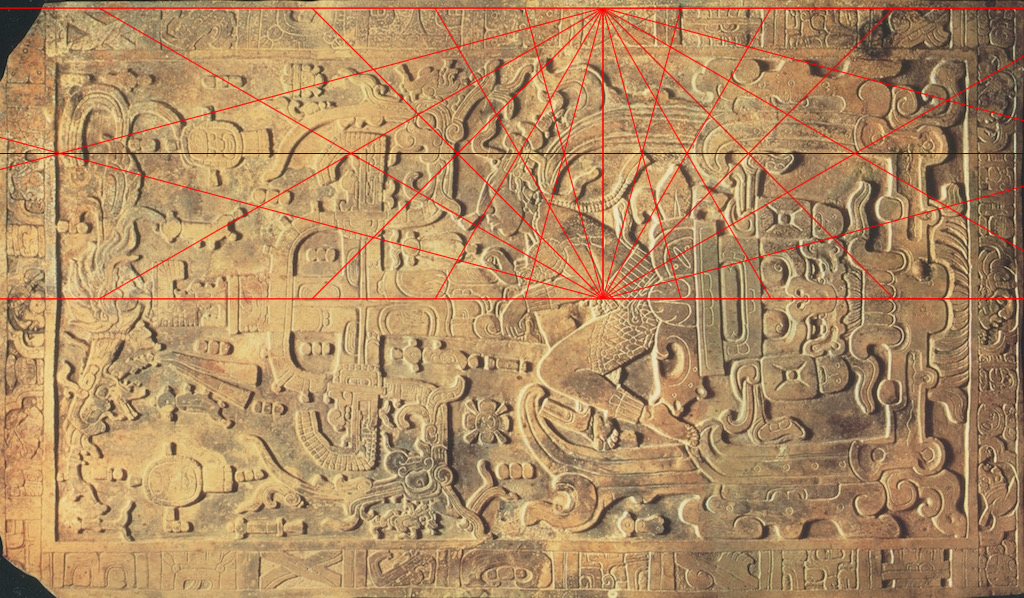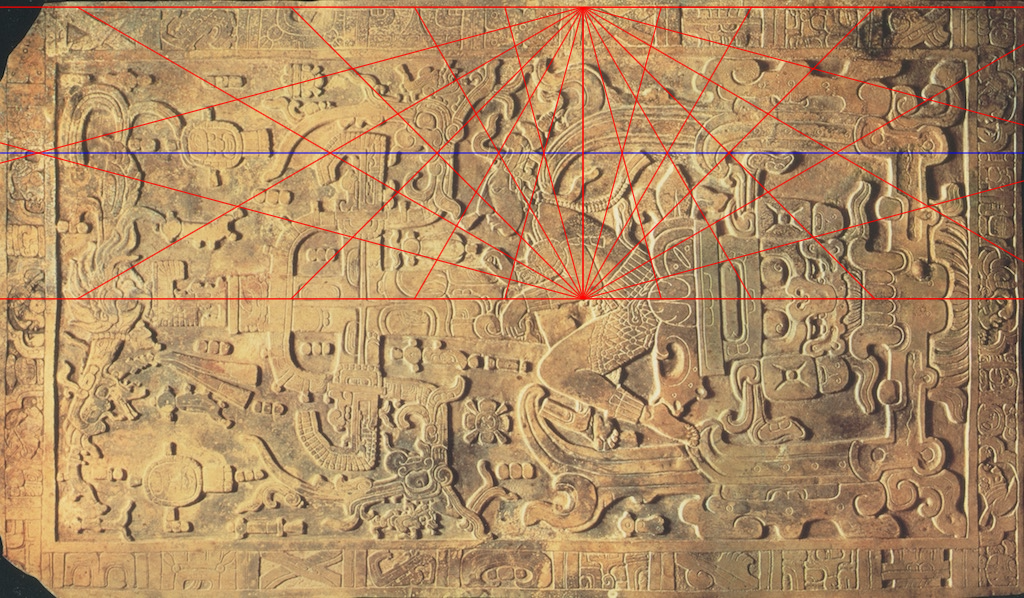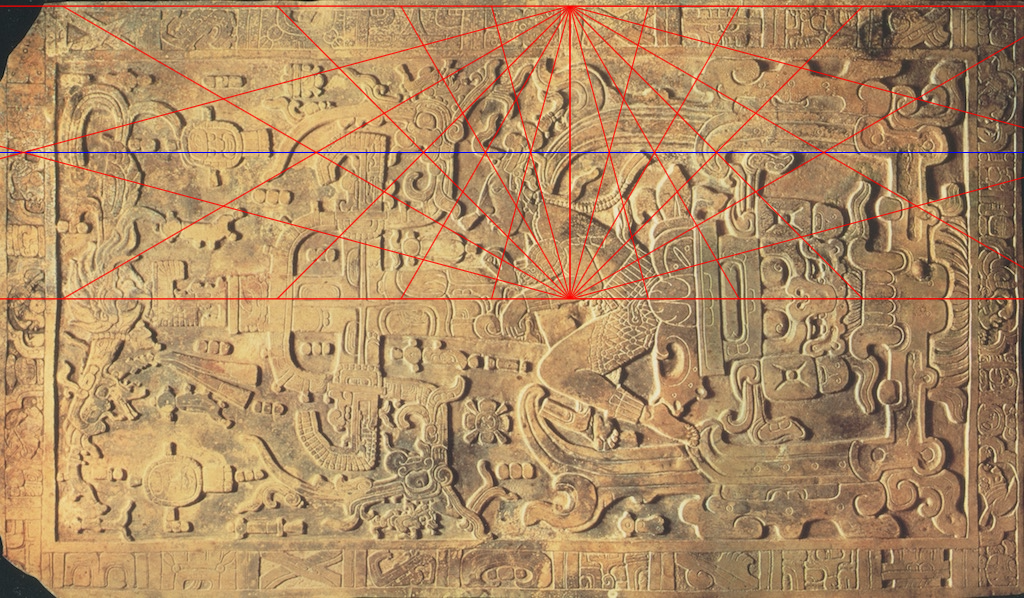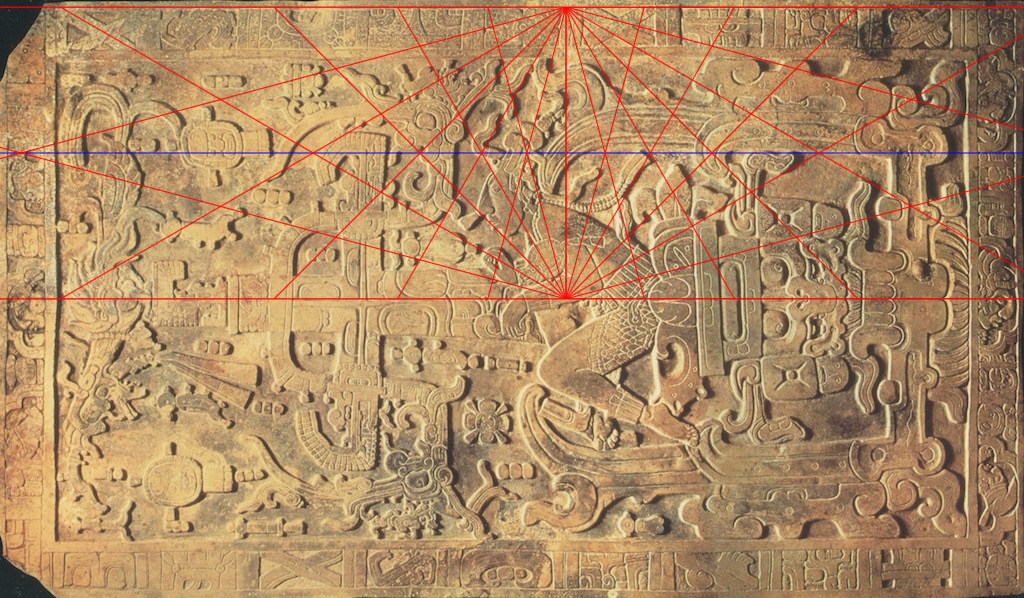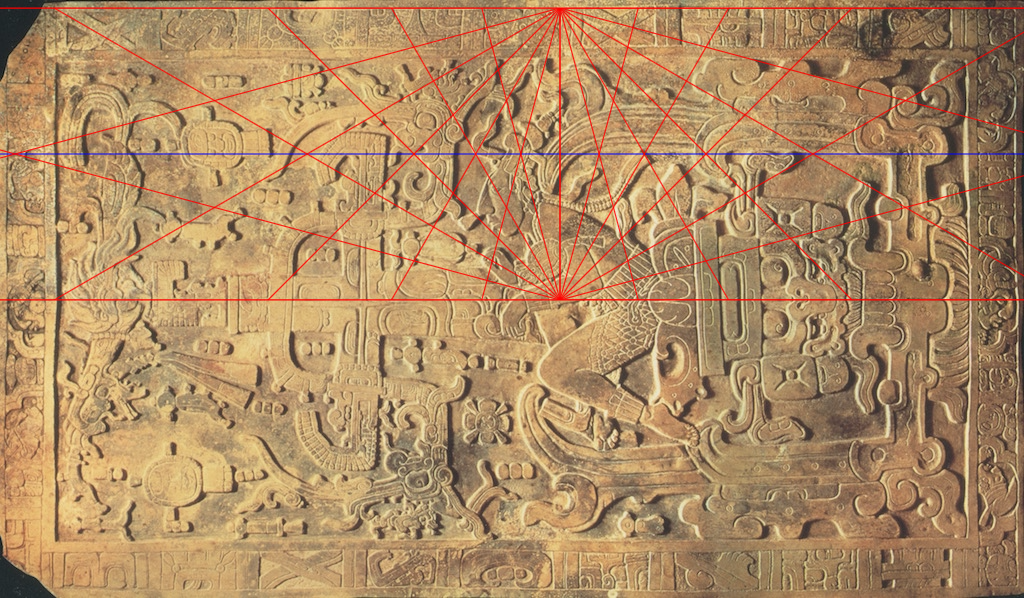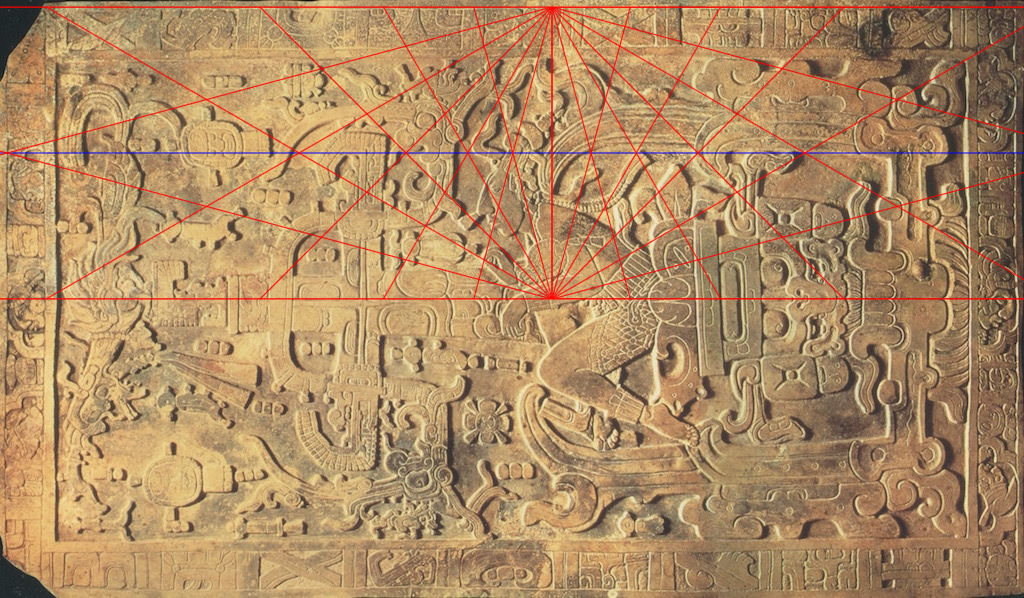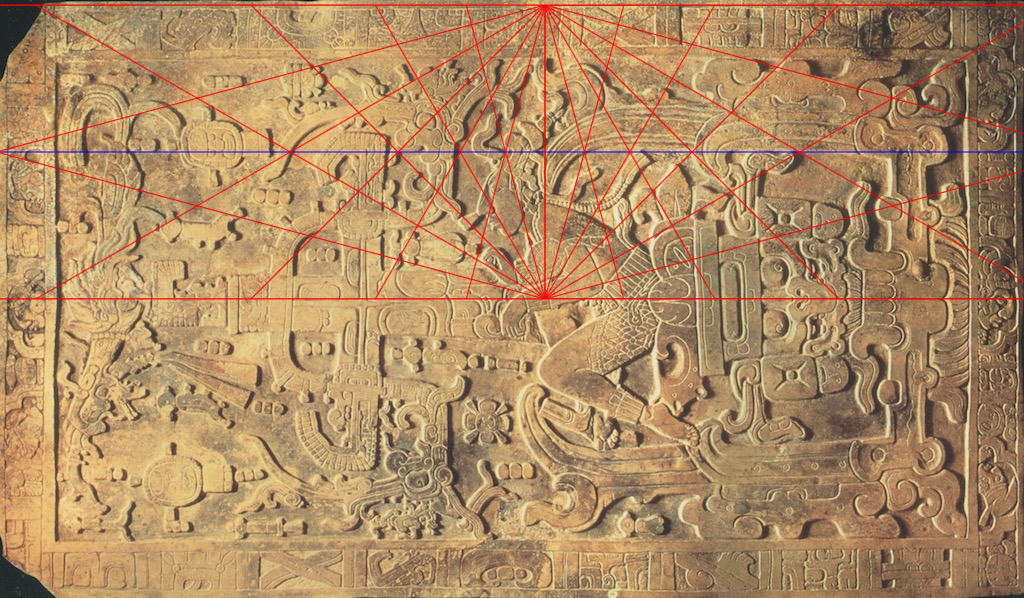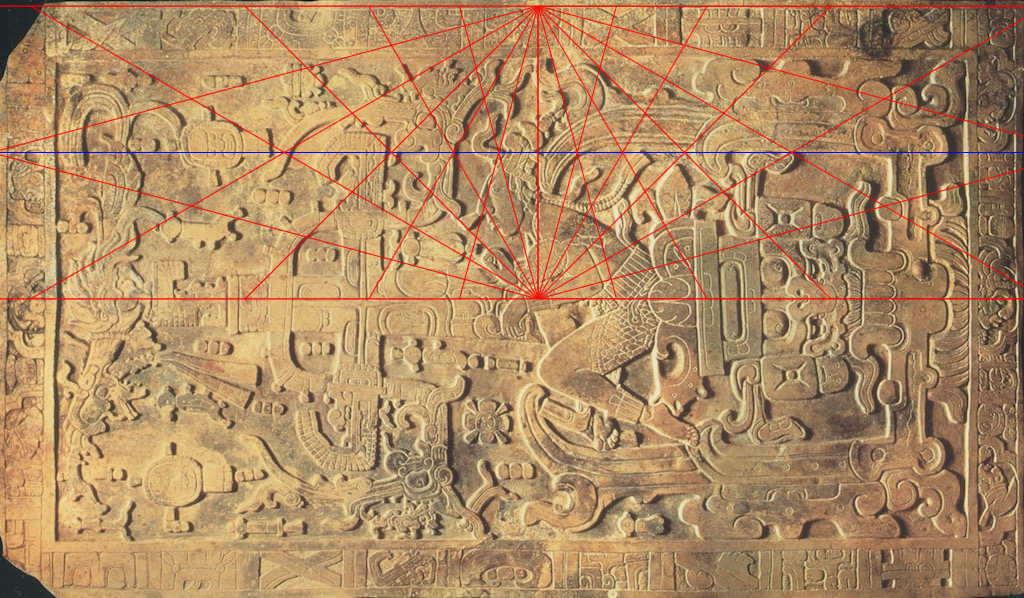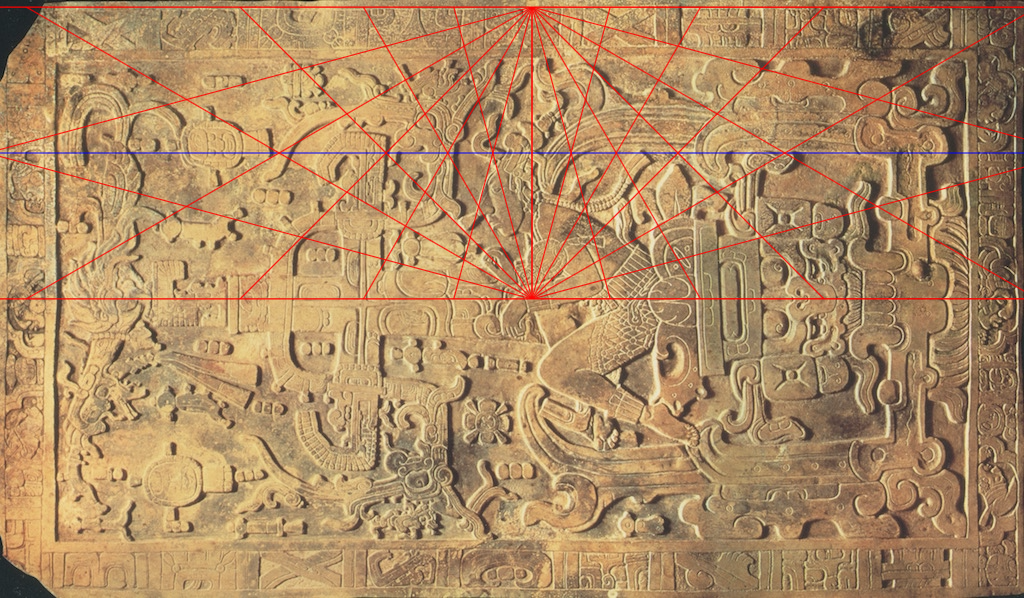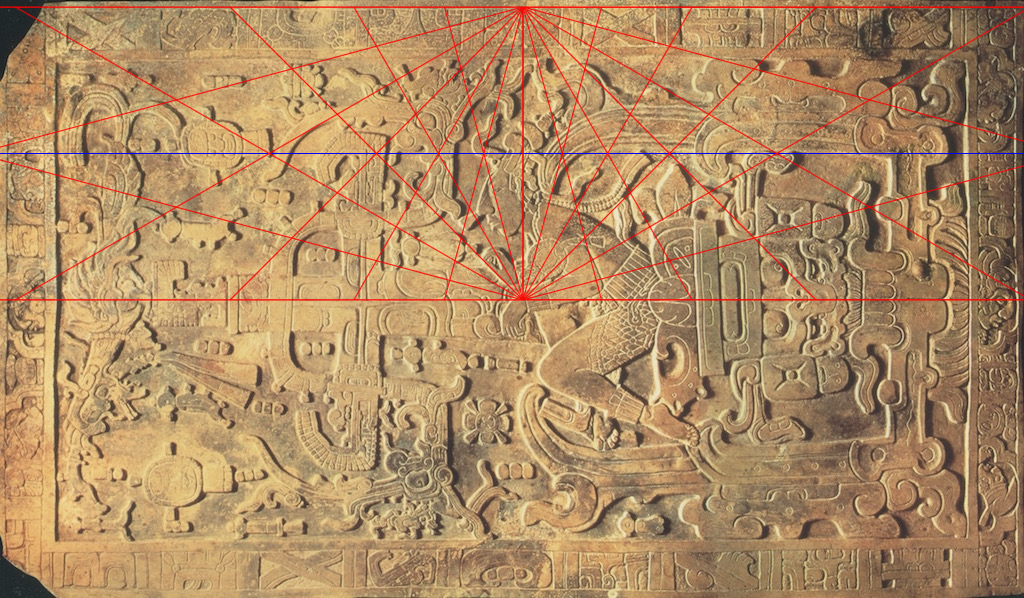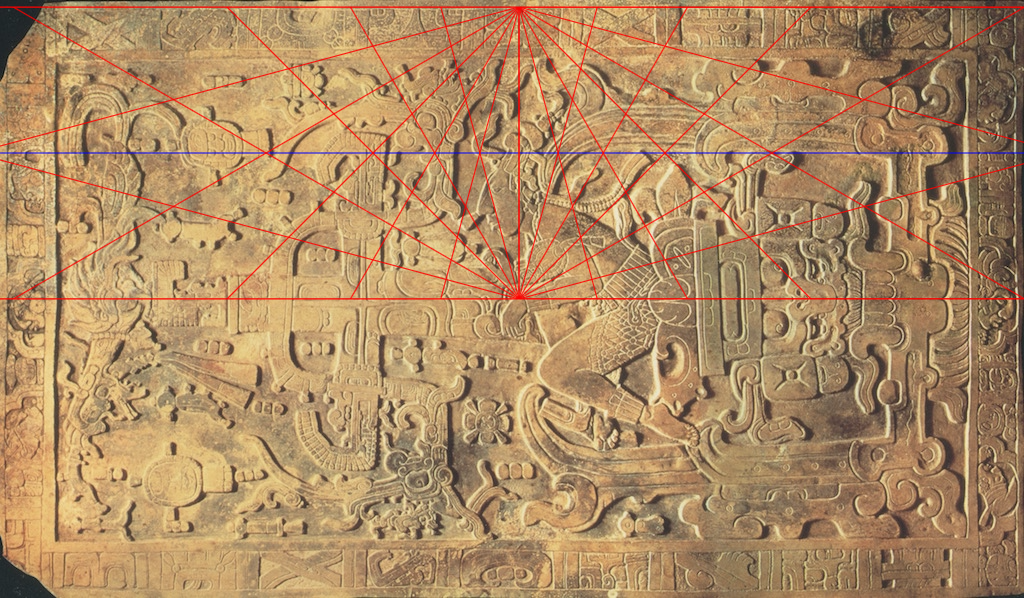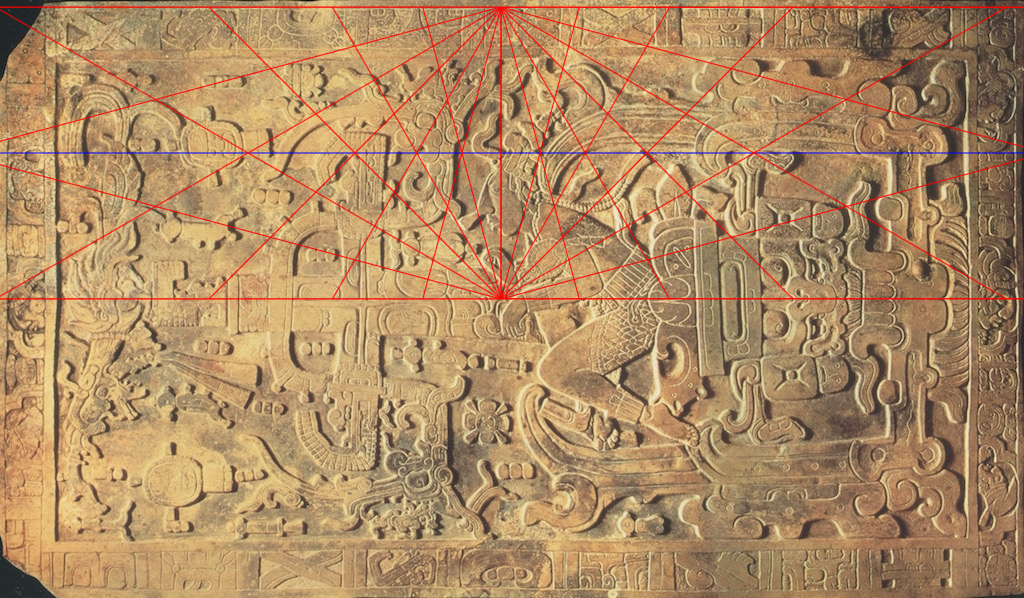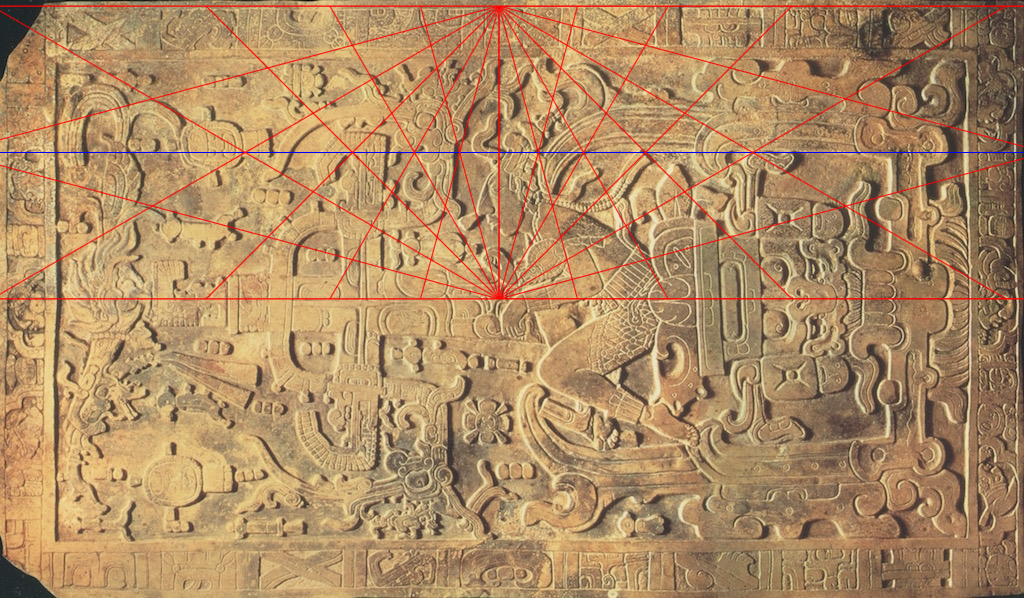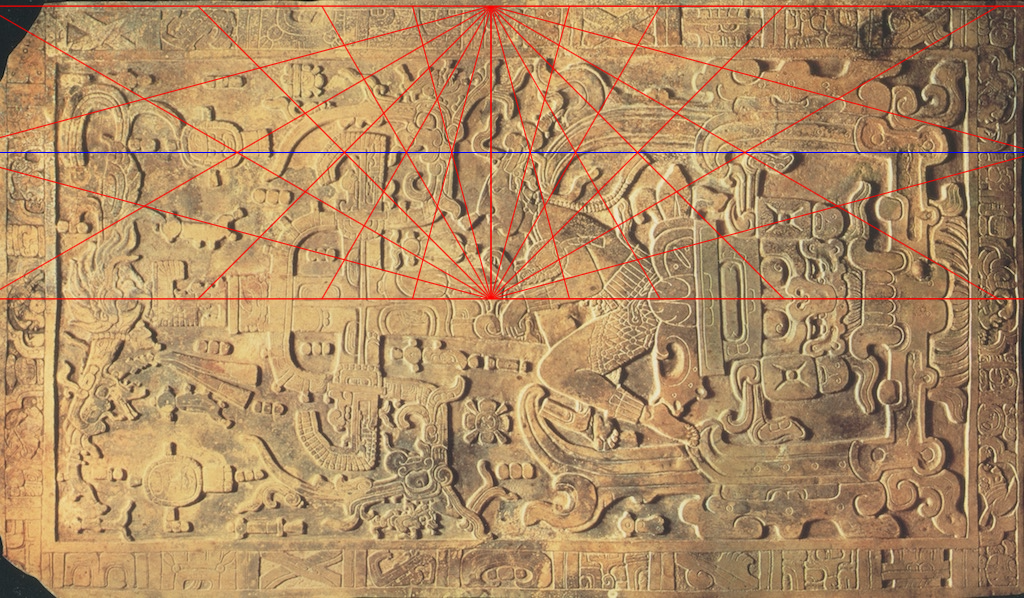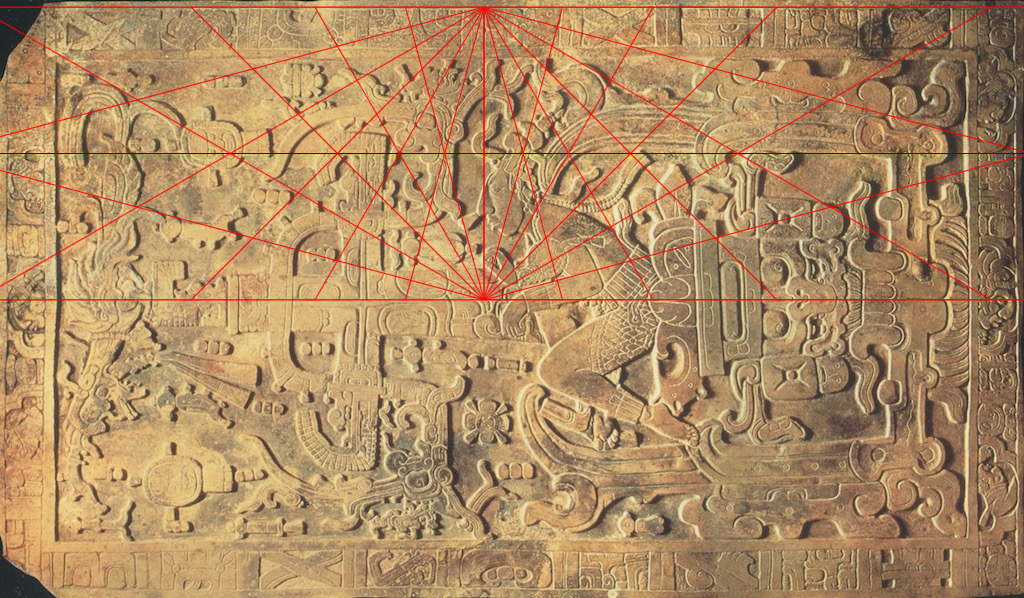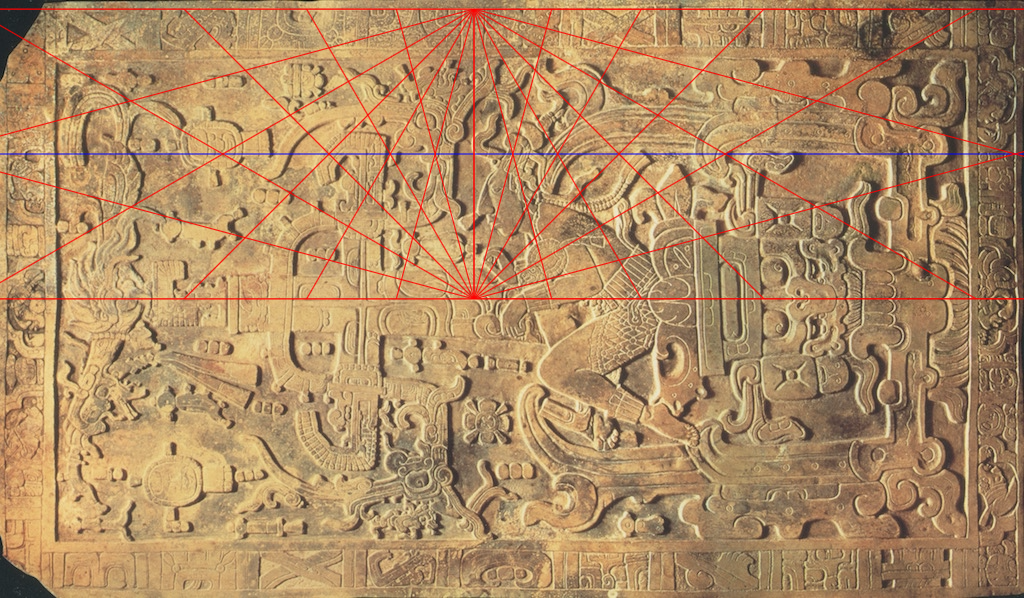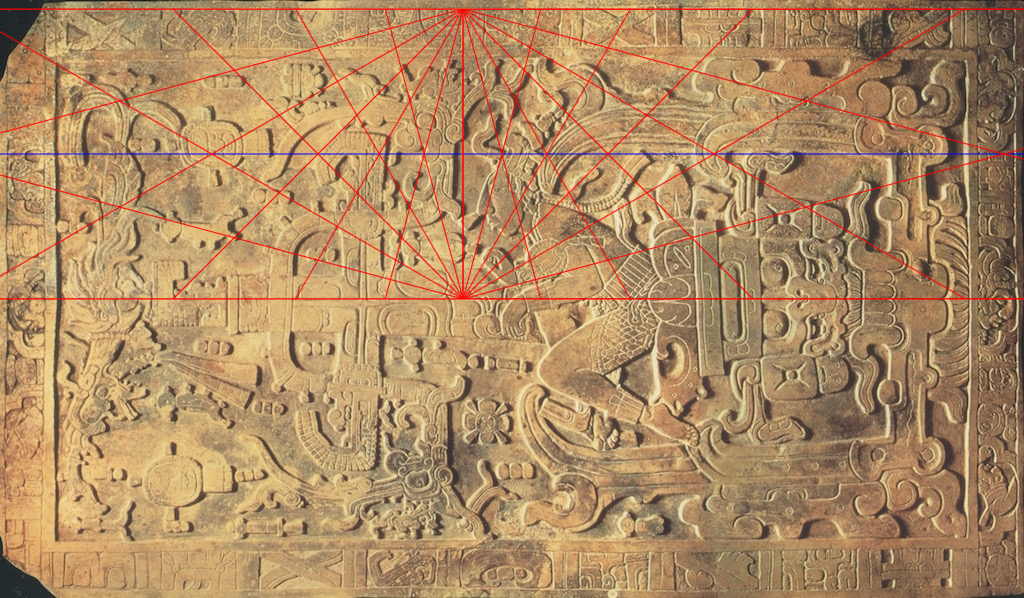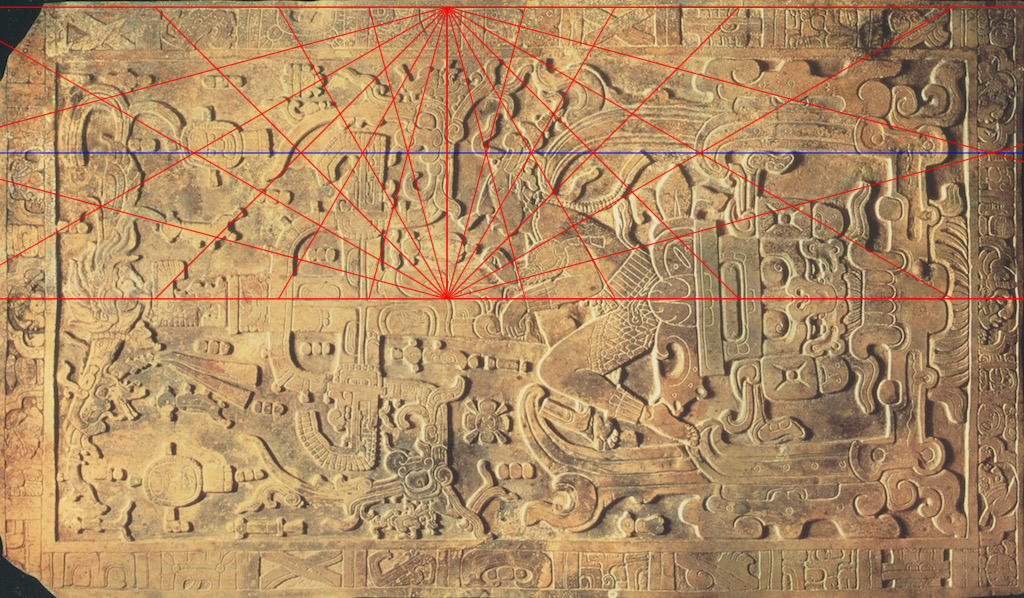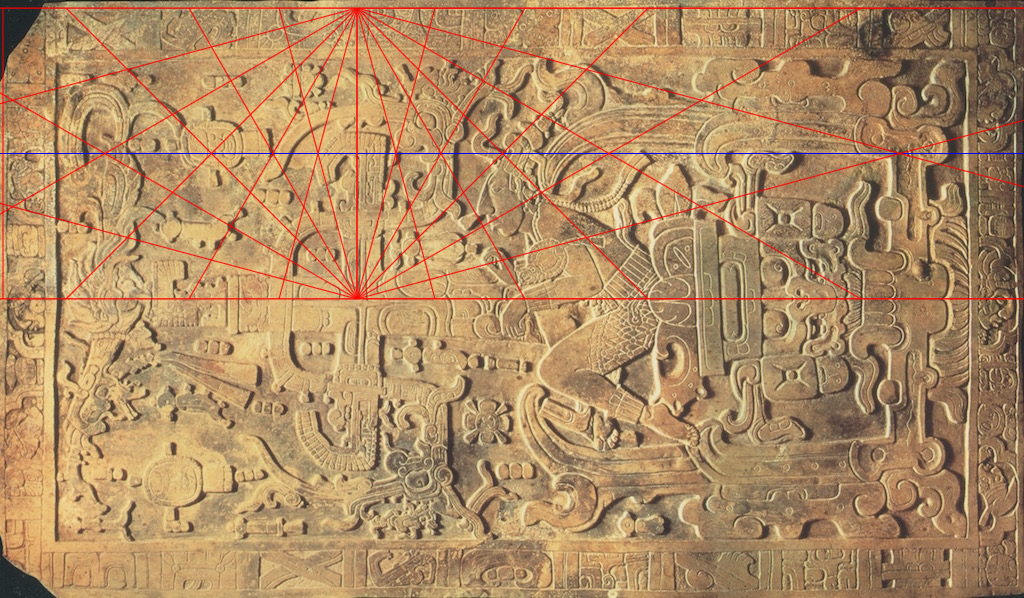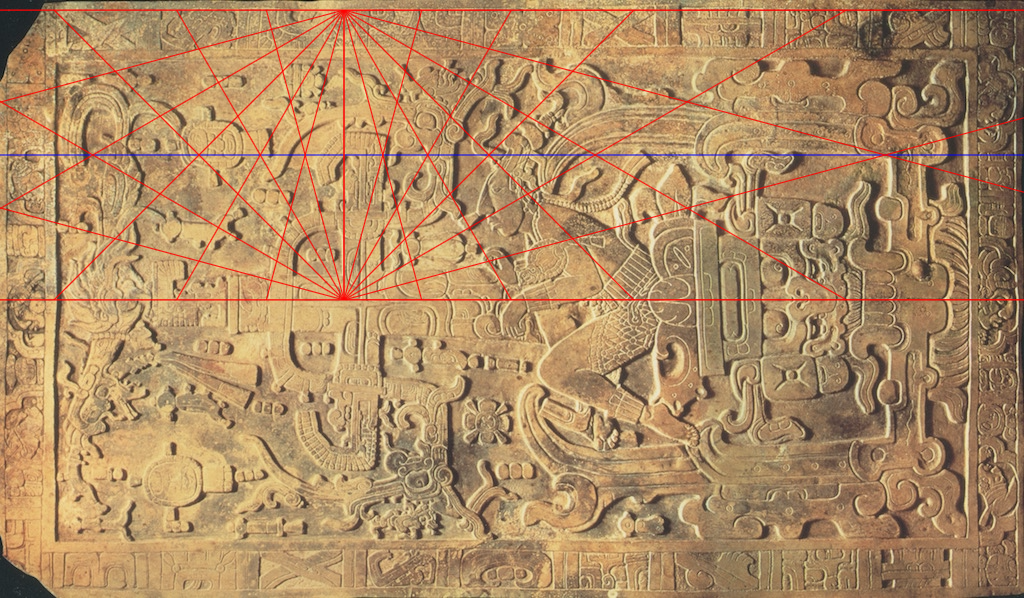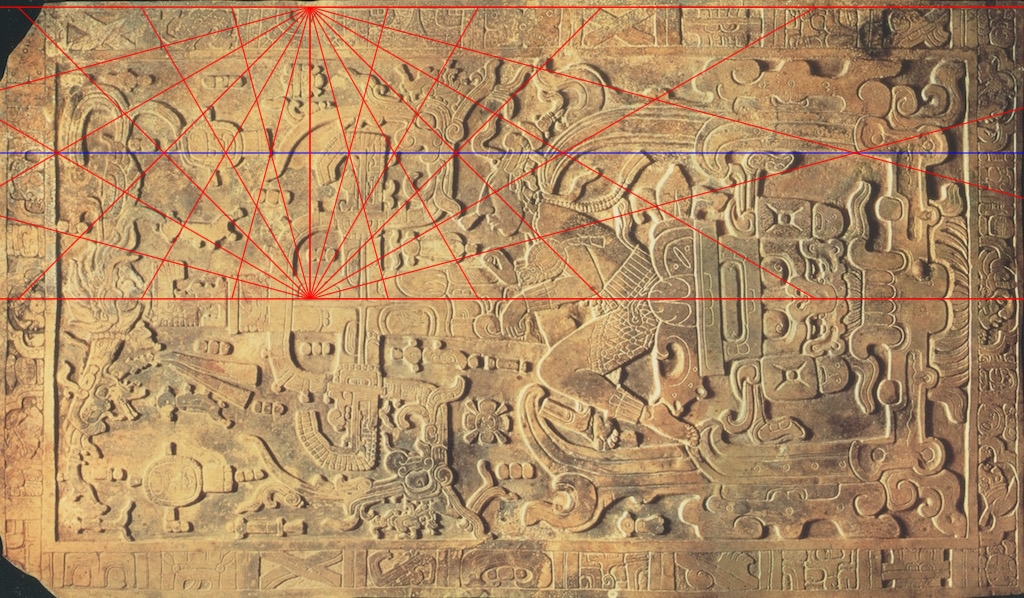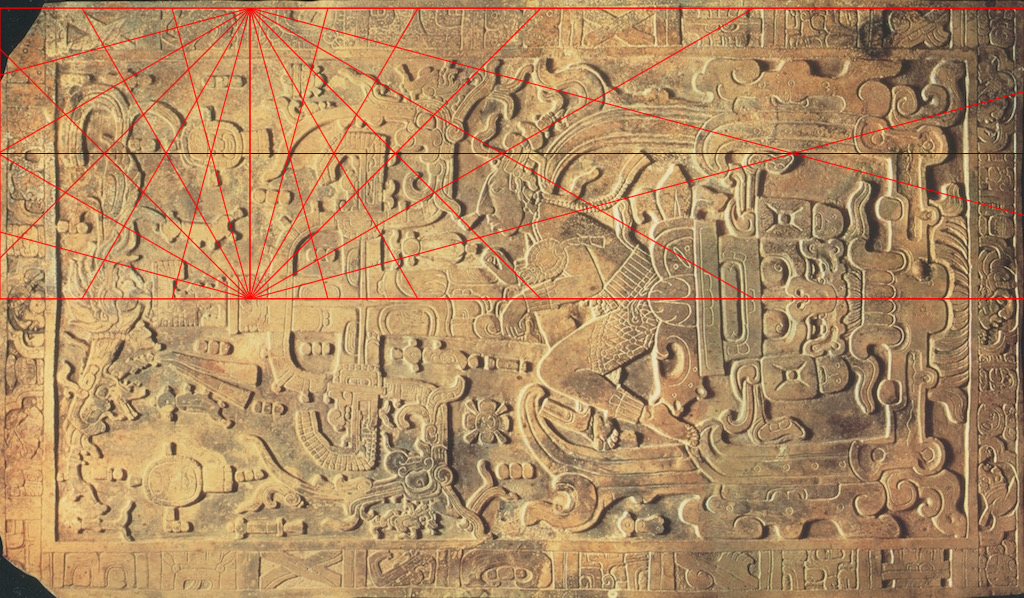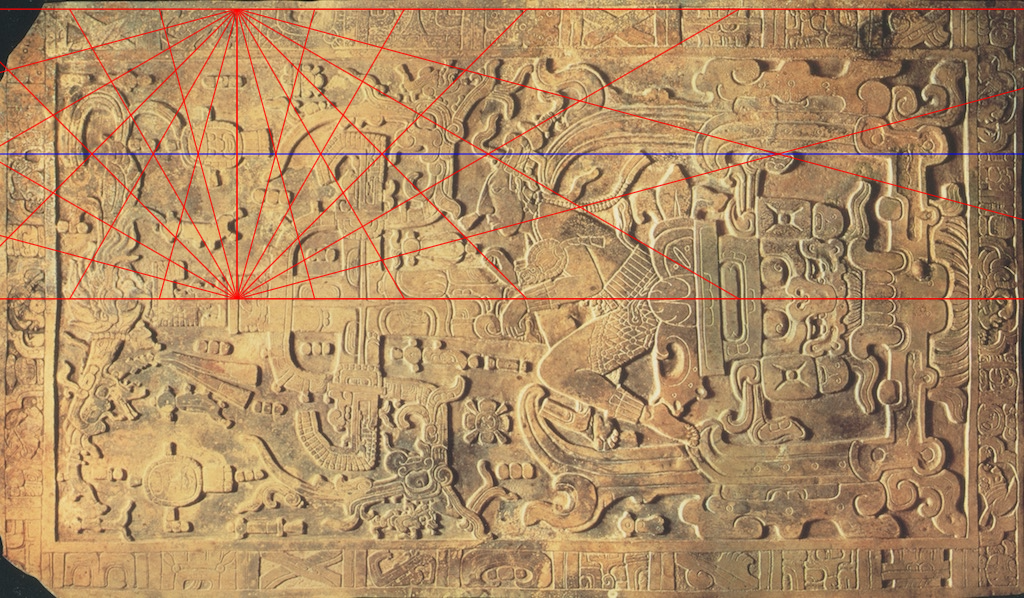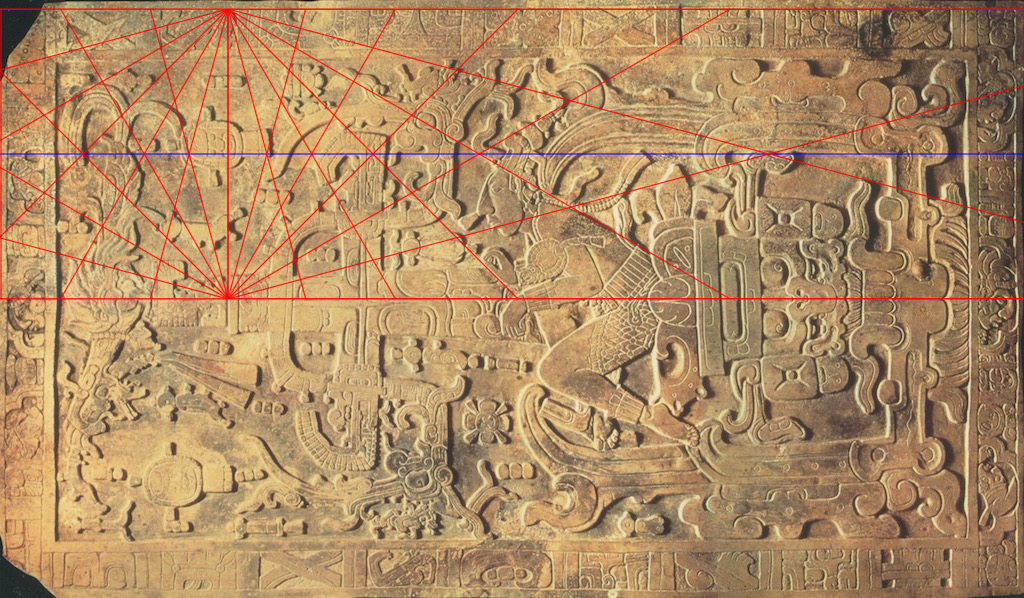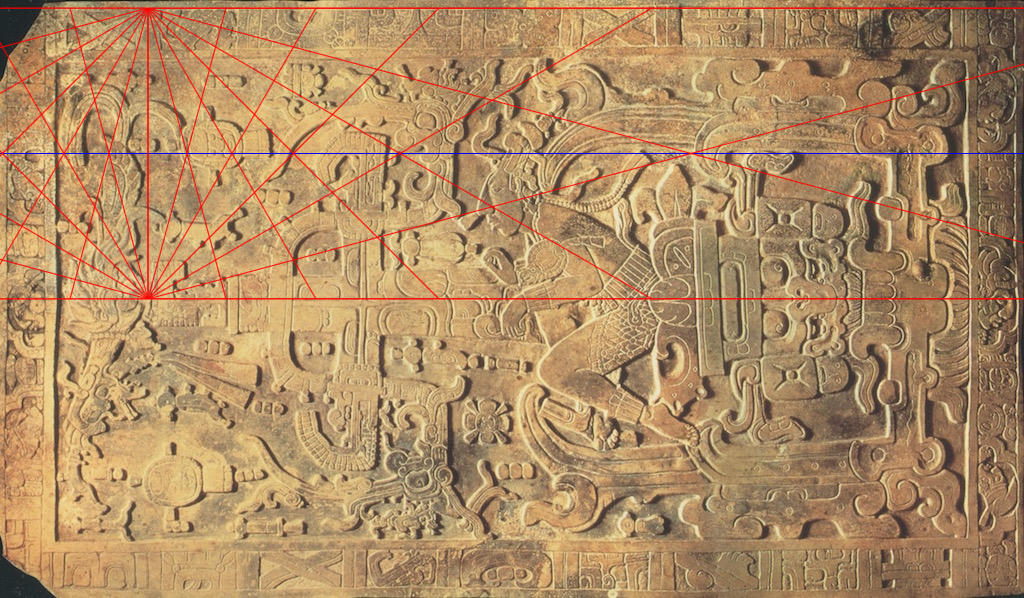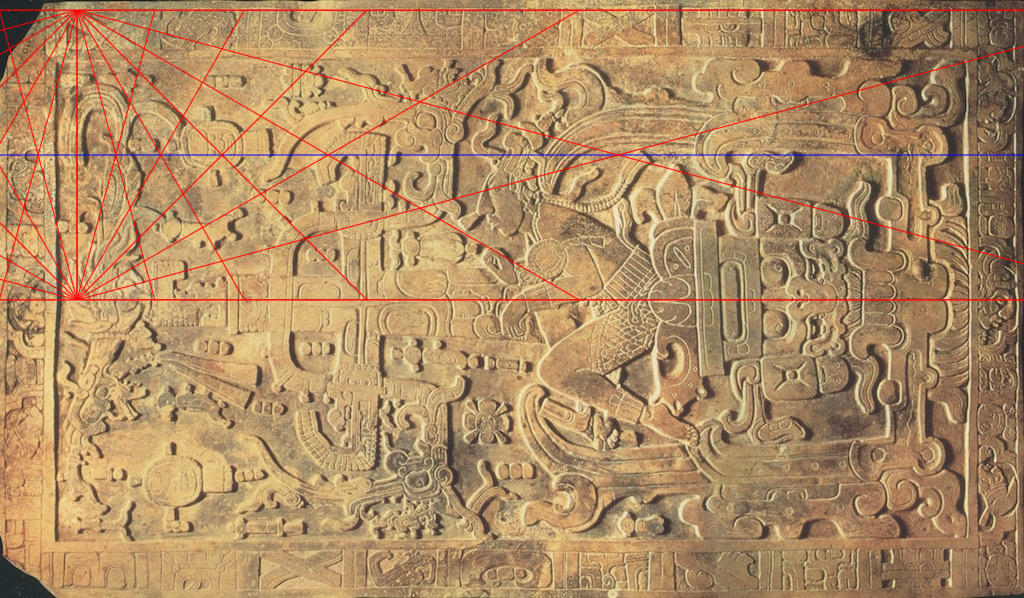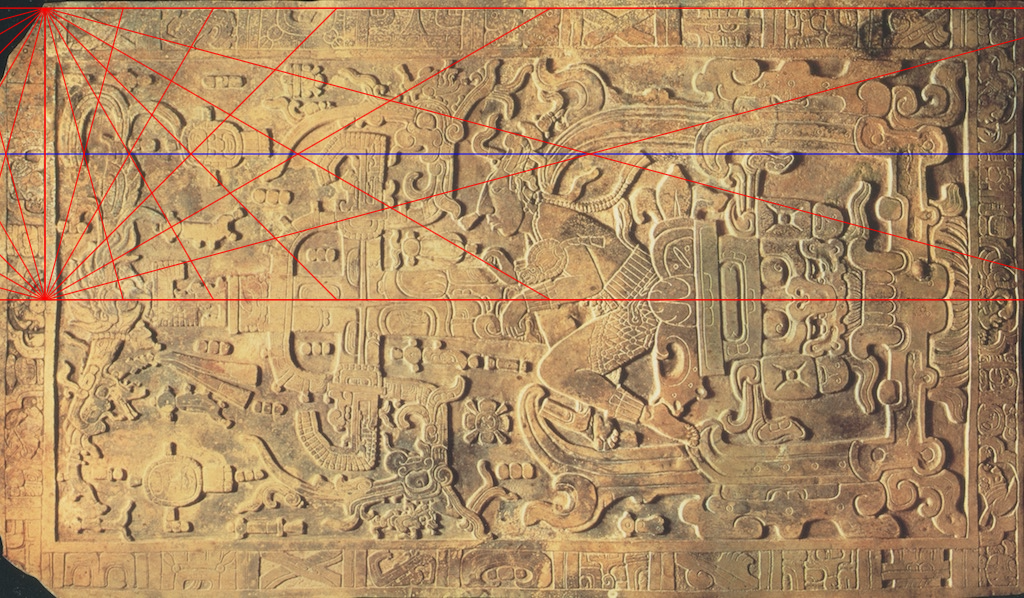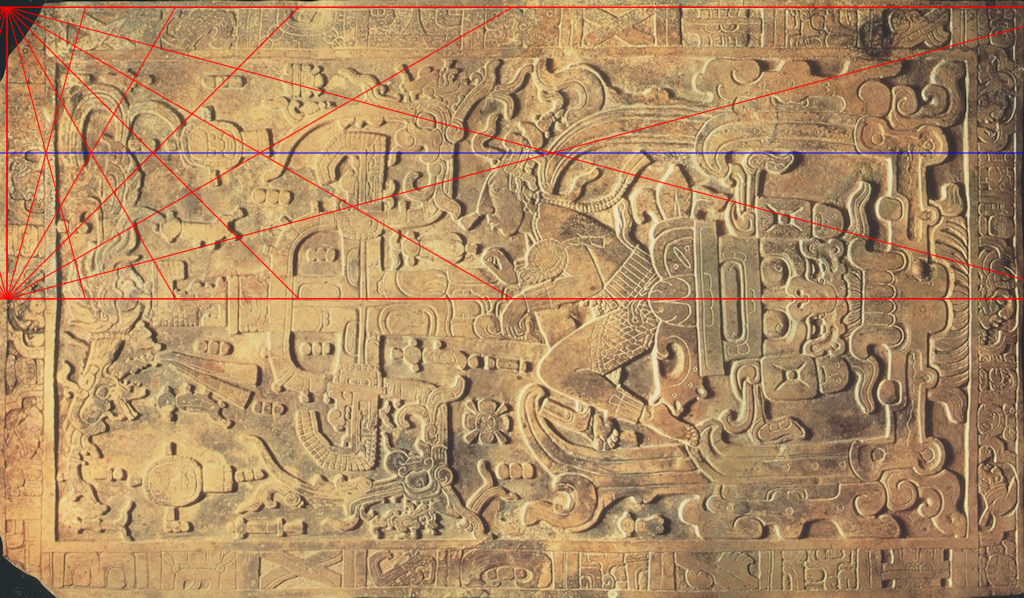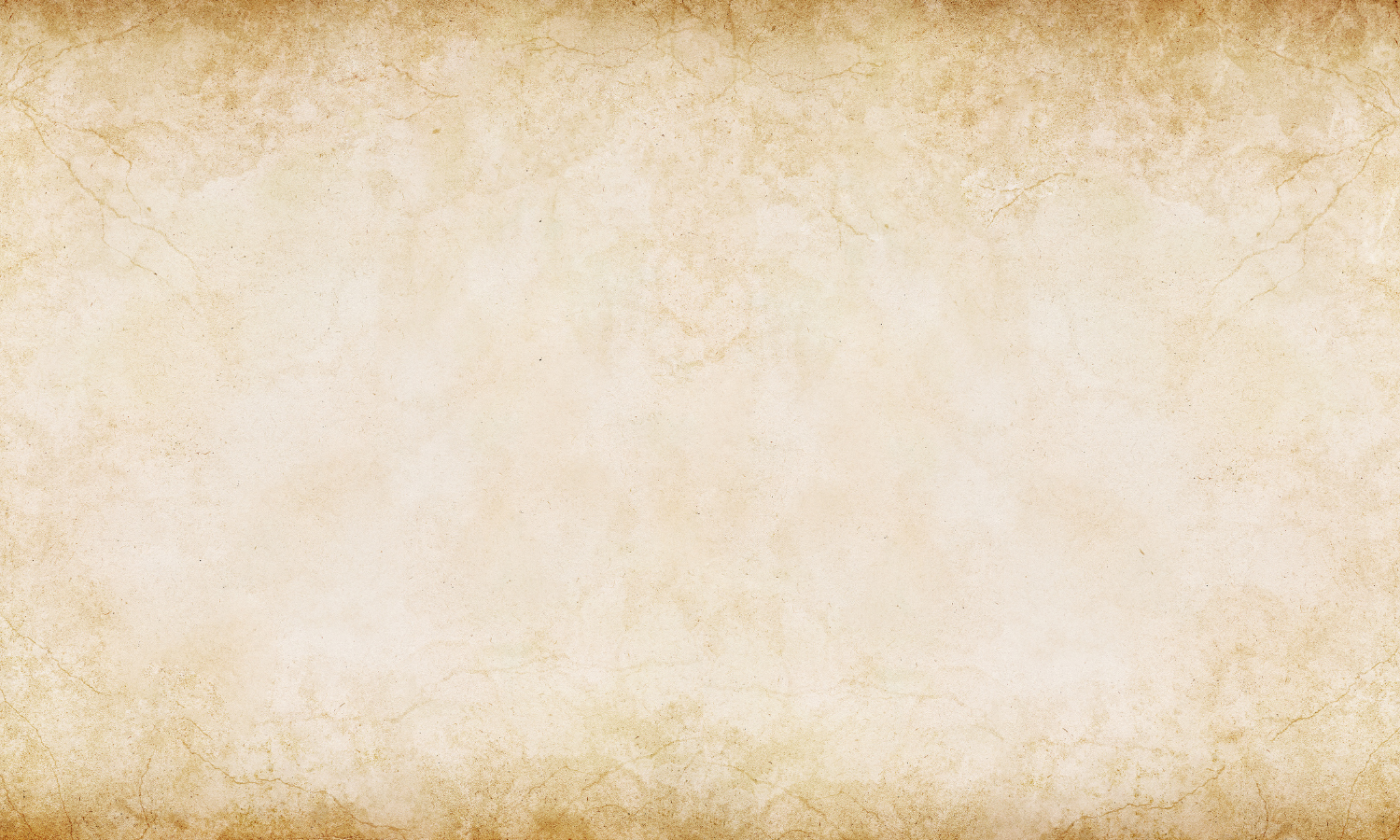
PAPYRUS OF ANI (ANI-R_A1-A33)
This is the Weighing of the Heart scene from the Egyptian Book of The Dead. It shows Tutu and the scribe Ani entering the weighing chamber where Ani’s heart will be weighed against the Feather of Truth. The lower and upper baselines selected are the first logical choices for exploring the possibility that the circle’s geometry was used to design and encode the narrative. Any other horizontal features or motifs are also candidates for additional baseline pairings that allow for the encoding of more detailed narratives within the larger narrative. The grid of rays offers something of an overall generalized schematic of the narrative at 15-degree intervals. If anything is aligned, it is more than likely everything else is aligned. The earth rotates 15 degrees per hour. This baseline pair places the centerline passing just under Tutu’s eye as she appears to be watching the balance beam of the scales further down the centerline. The centerline goes on to pass through one of two of Osiris’ hands holding the crook, flail, and uas scepter. The balance beam is not level nor is the scale’s stand plumb. Compare this to the scales with a level beam and perfectly vertical stand in the Papyrus of Hunefer. (Art Motifs Fig.117) It is quite possible that the stand and beam represent earth’s celestial equator as earth approaches its alignment with the plane of the ecliptic on the Vernal Equinox. The stand is tilted down from right to left in the symbolic axial tilt direction (see Art Motifs) with the beam dropping down from left to right at the symbolic celestial equator angle. The Papyrus of Hunefer seems to be using the ‘T’ symbol to encode the actual moment of alignment, the Vernal Equinox dawn.
The vertical lines between the columns of hieroglyphs act as non-biased alignment points for the y-axis. The columns of glyphs separate the narrative into introduction, confession, witnessing, weighing, observing, and recording. The first aligned image shows a 15-degree ray projected down from the top aligned to the point of Thoth’s pen and the fingers holding it. This alignment is not only compelling but is also an example what to look for when scrolling the software. Begin by looking at one of the fixed y-axis vertical line alignments and see if there is anything obvious aligned by the rays, then begin scrolling slowly and watch the glyphs and the details of the narrative such as eyes, ears, hands, feet, scale dishes and cords, balance beam and stand, heart, Feather of Truth, and what Anubis is doing come into alignment with each other as the narrative progresses. An especially interesting place to scroll is the empty space just above the scales between Columns 16 and 17.
(Wikimedia Commons/Public Domain)
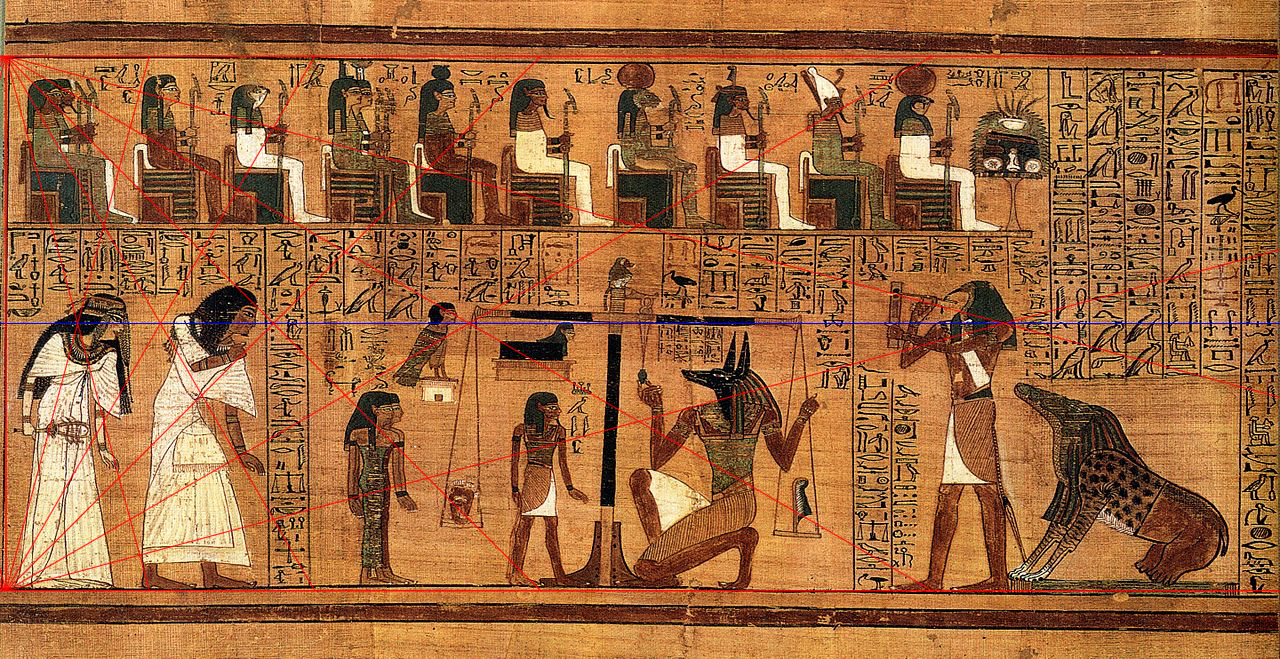
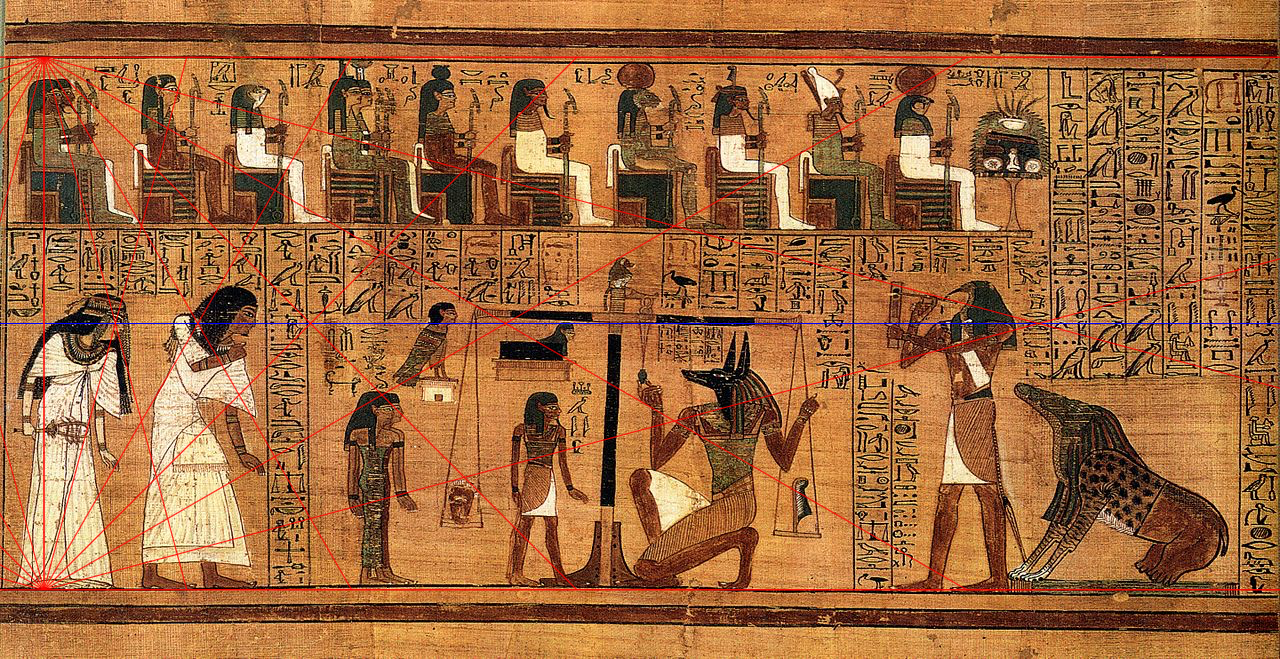
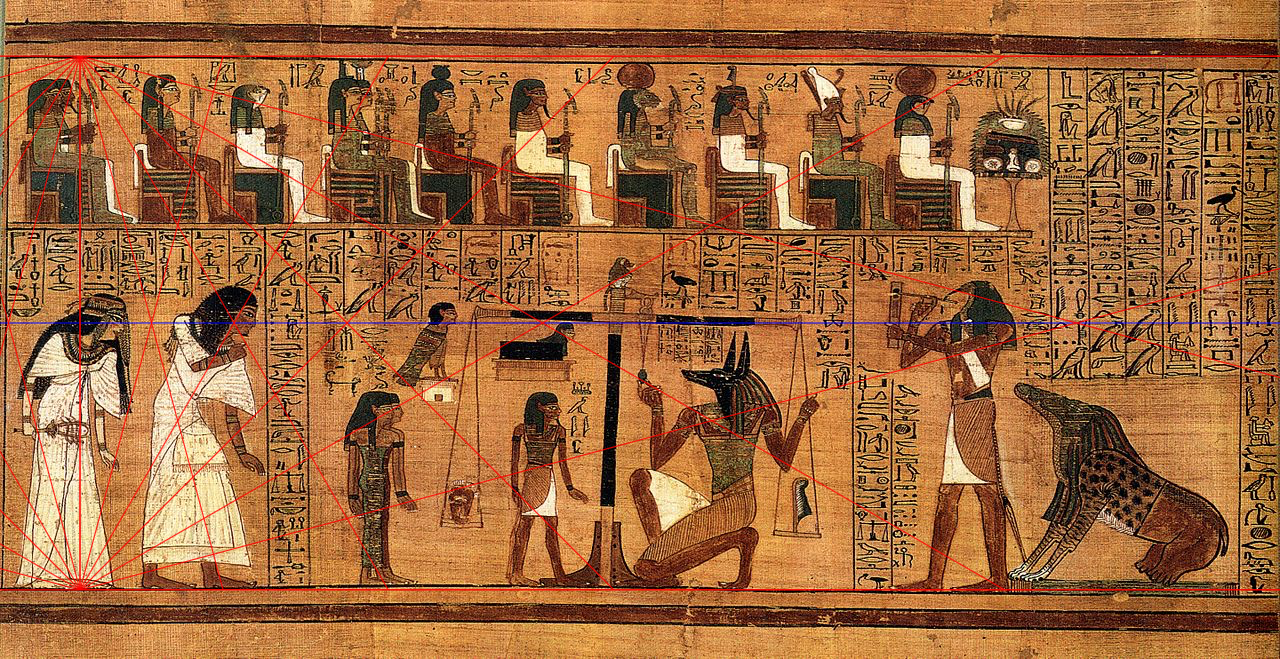
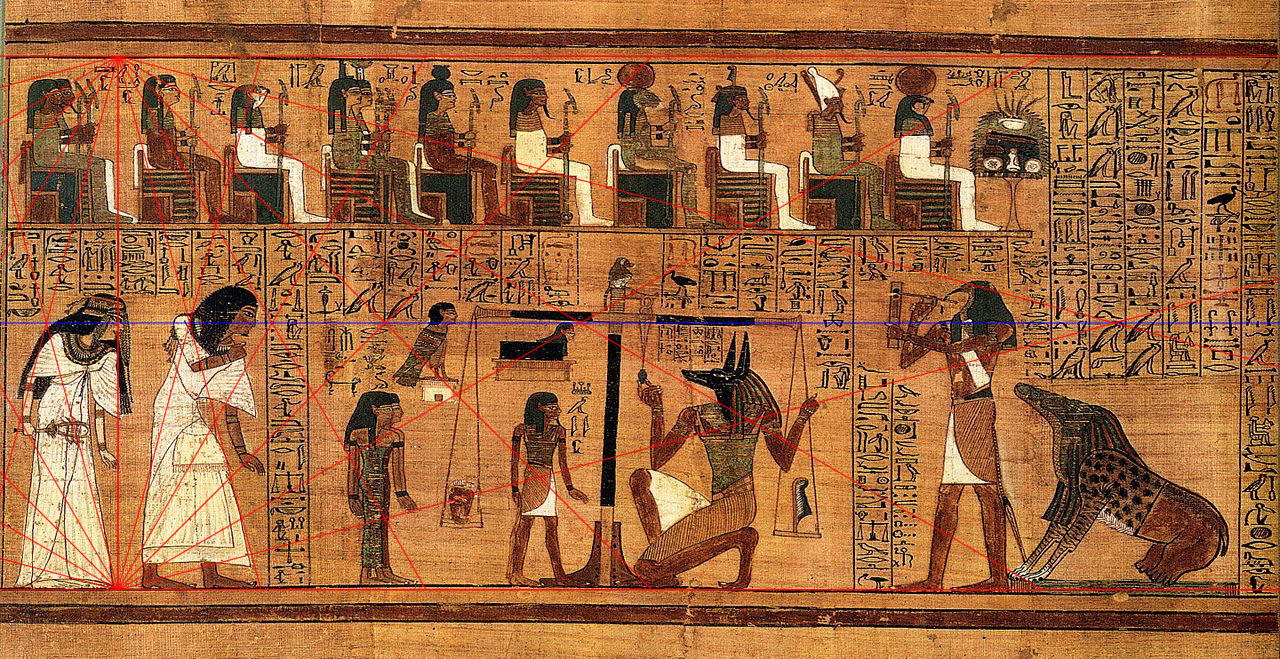
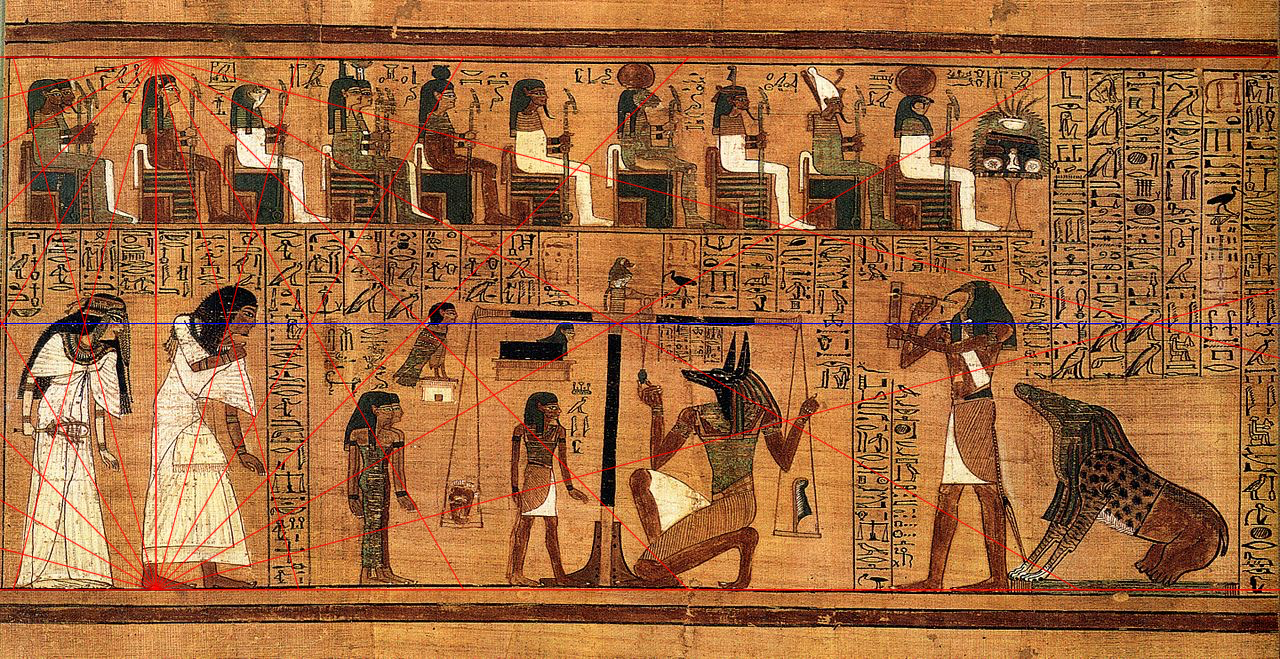
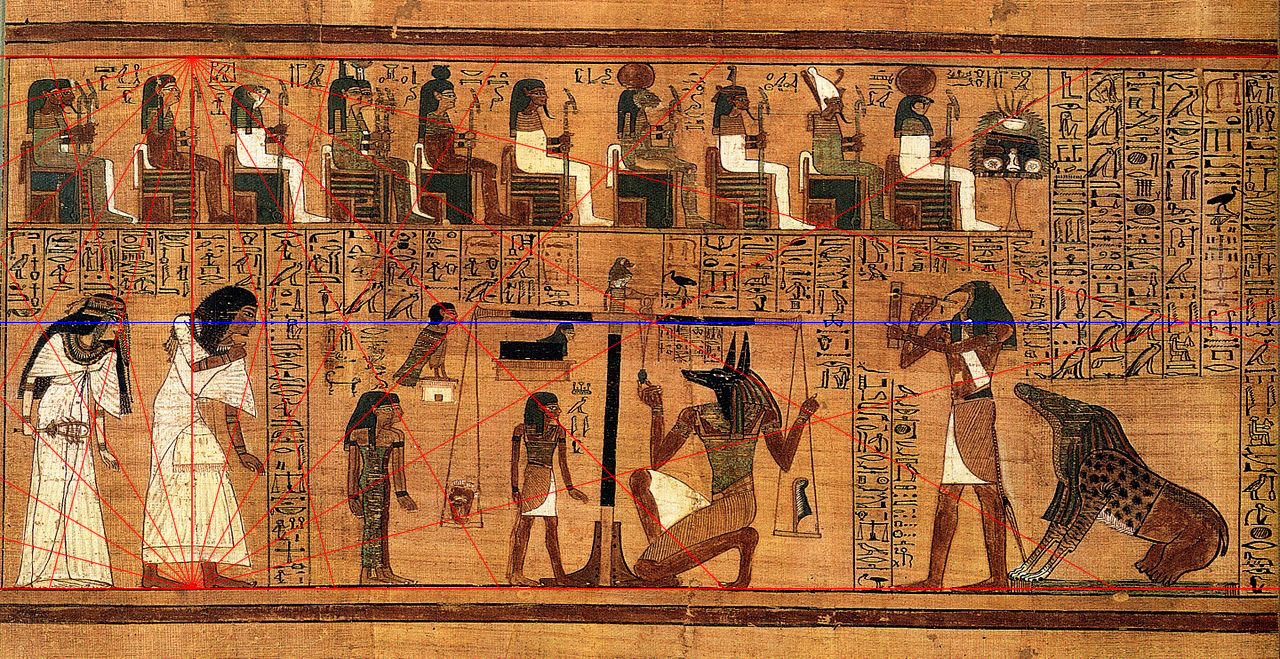
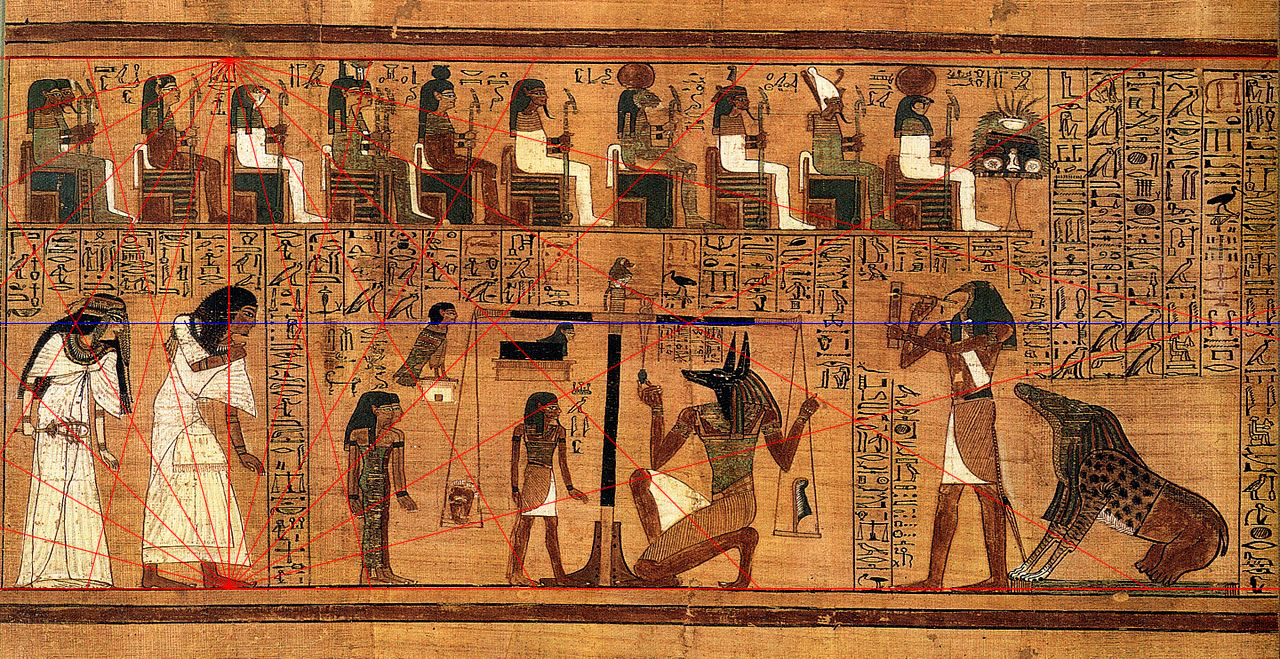
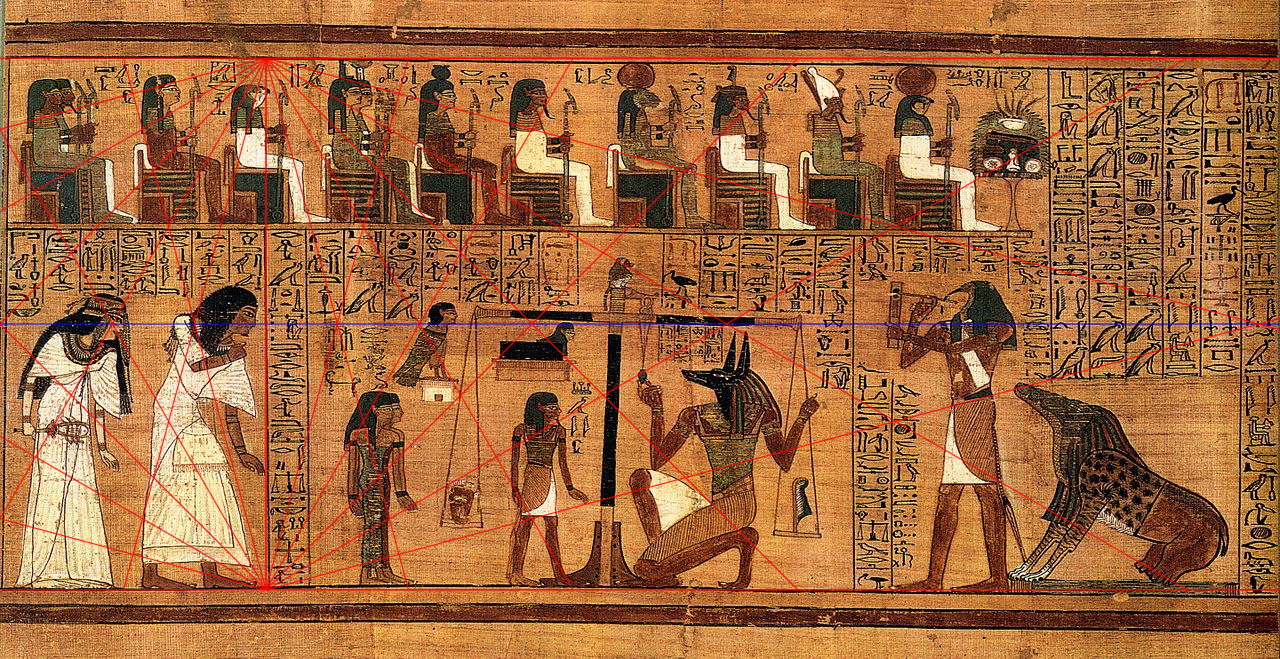
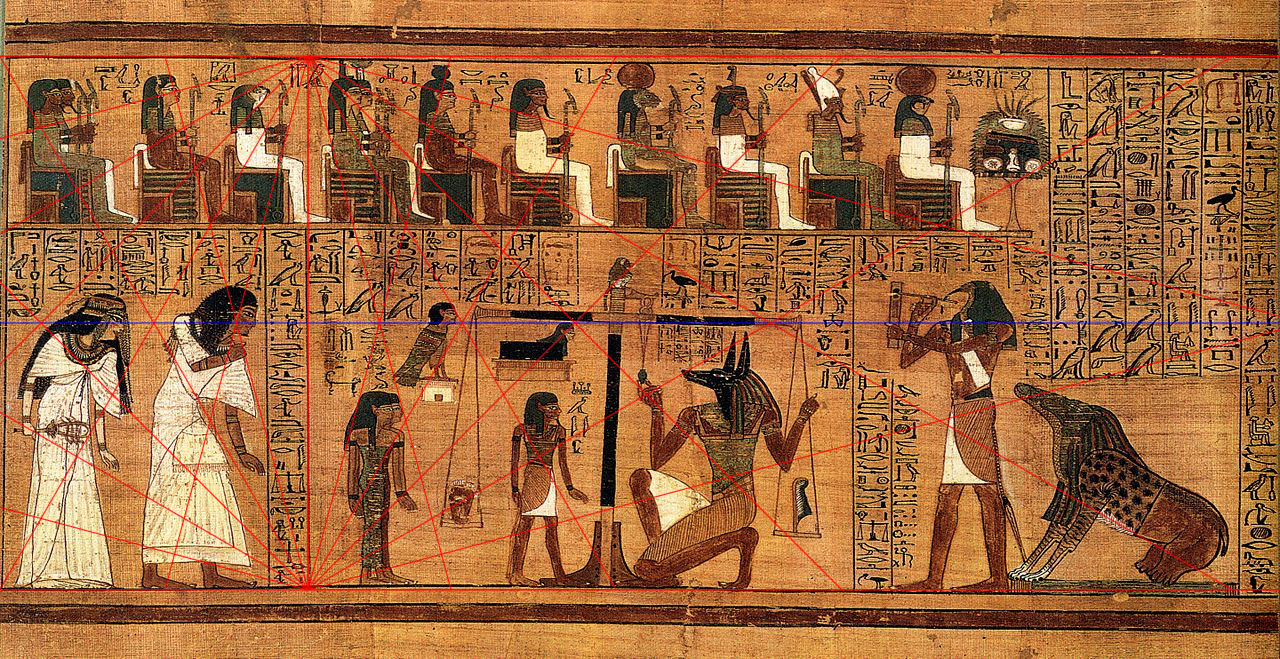
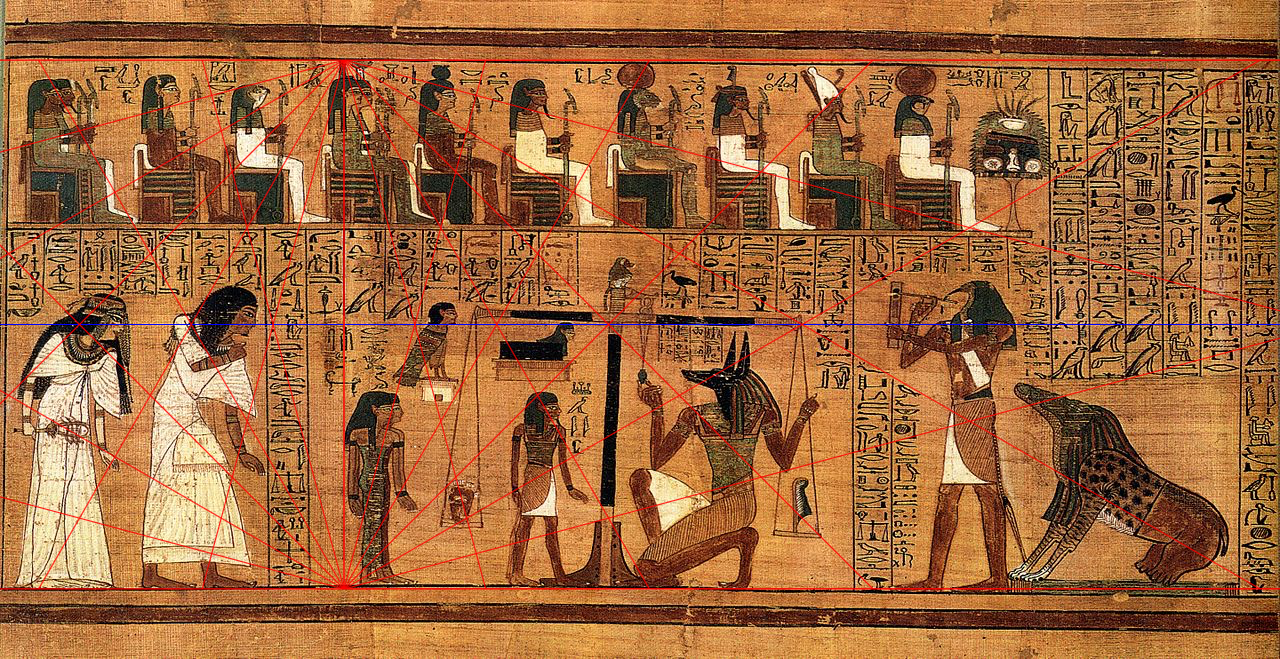
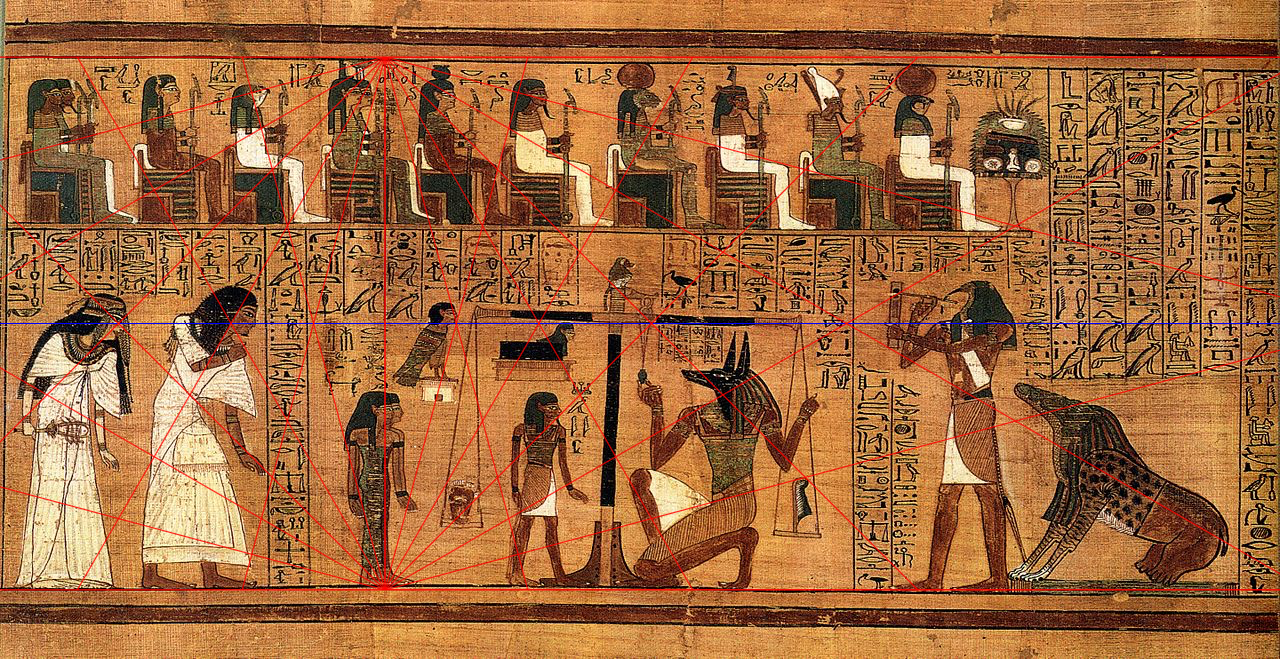
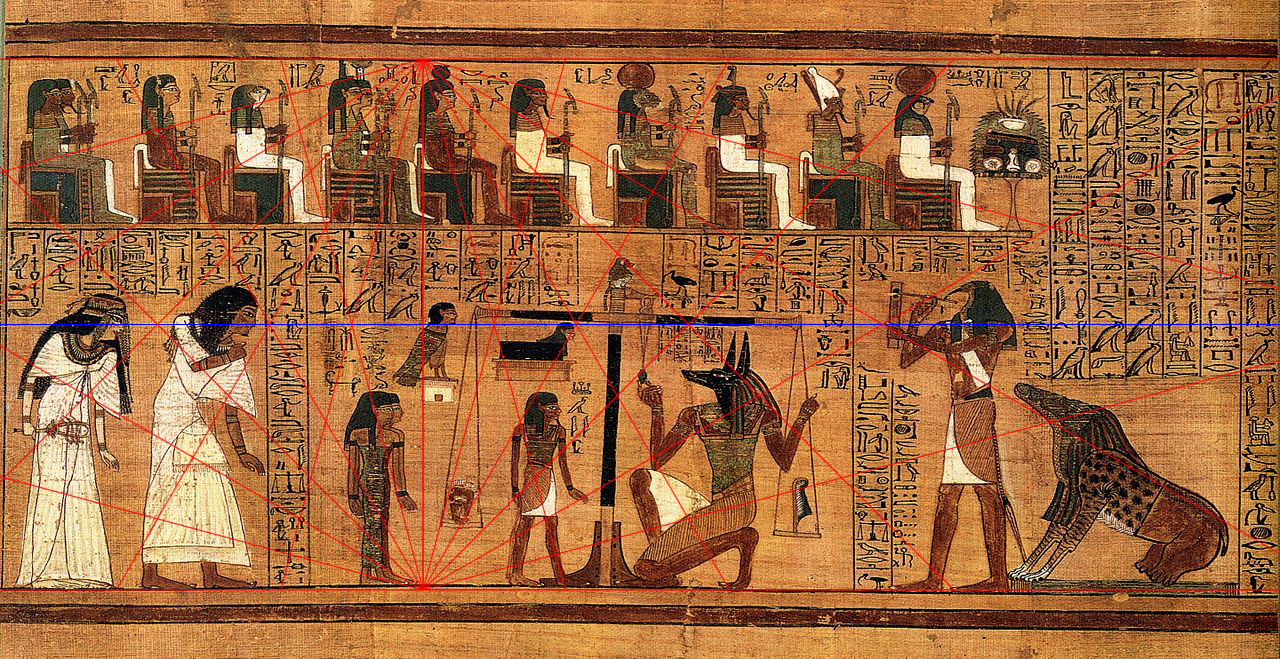
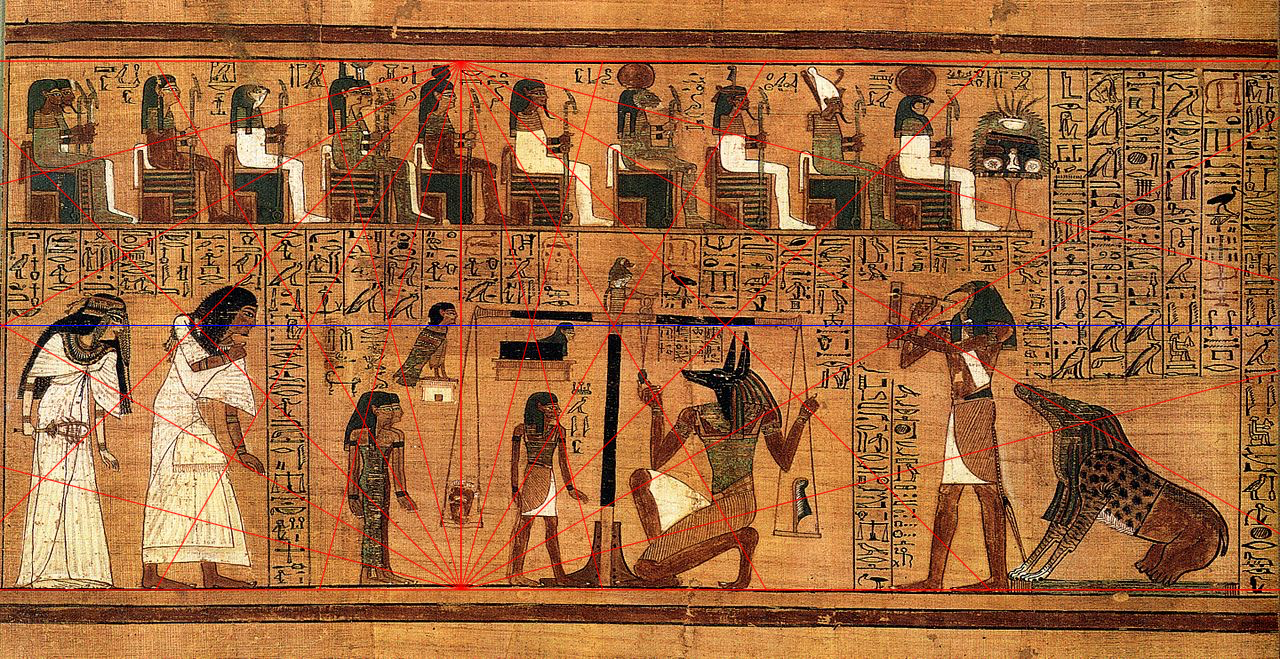
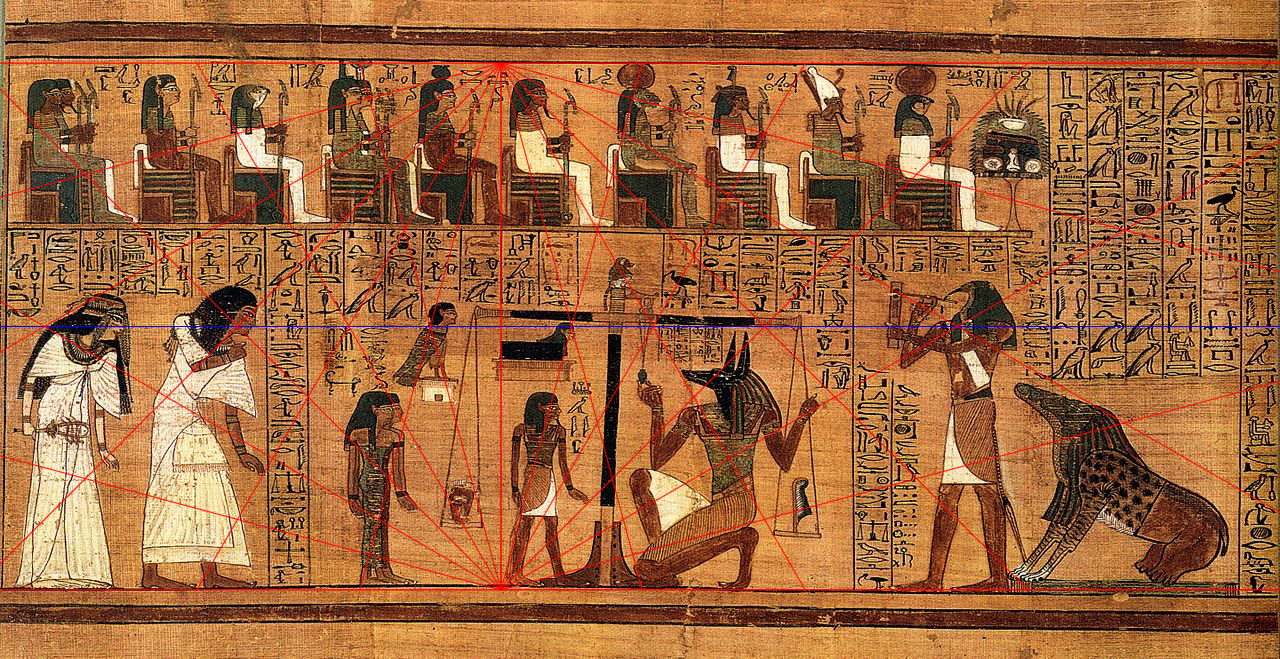
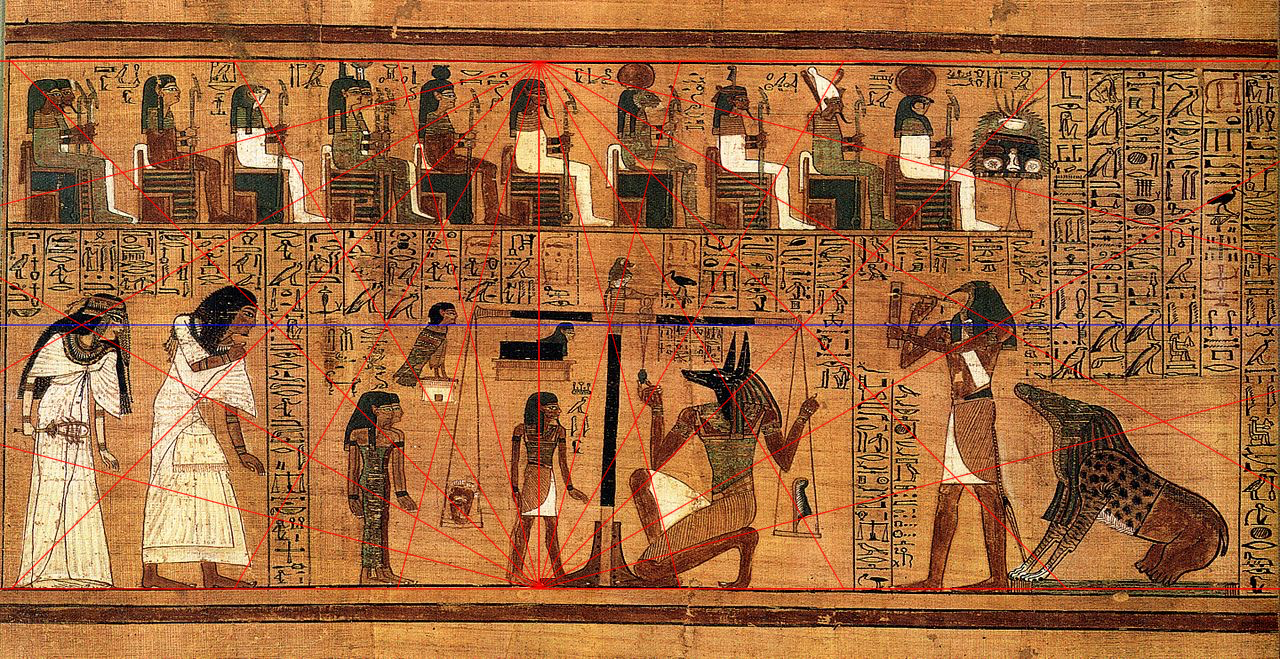
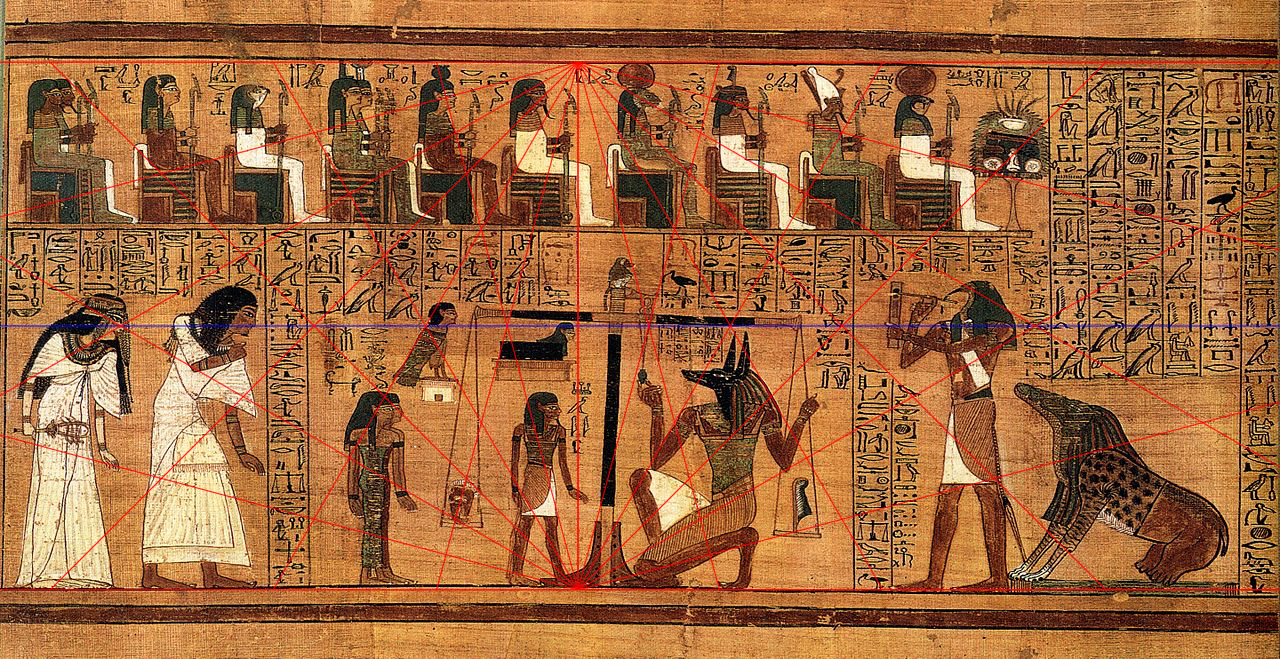
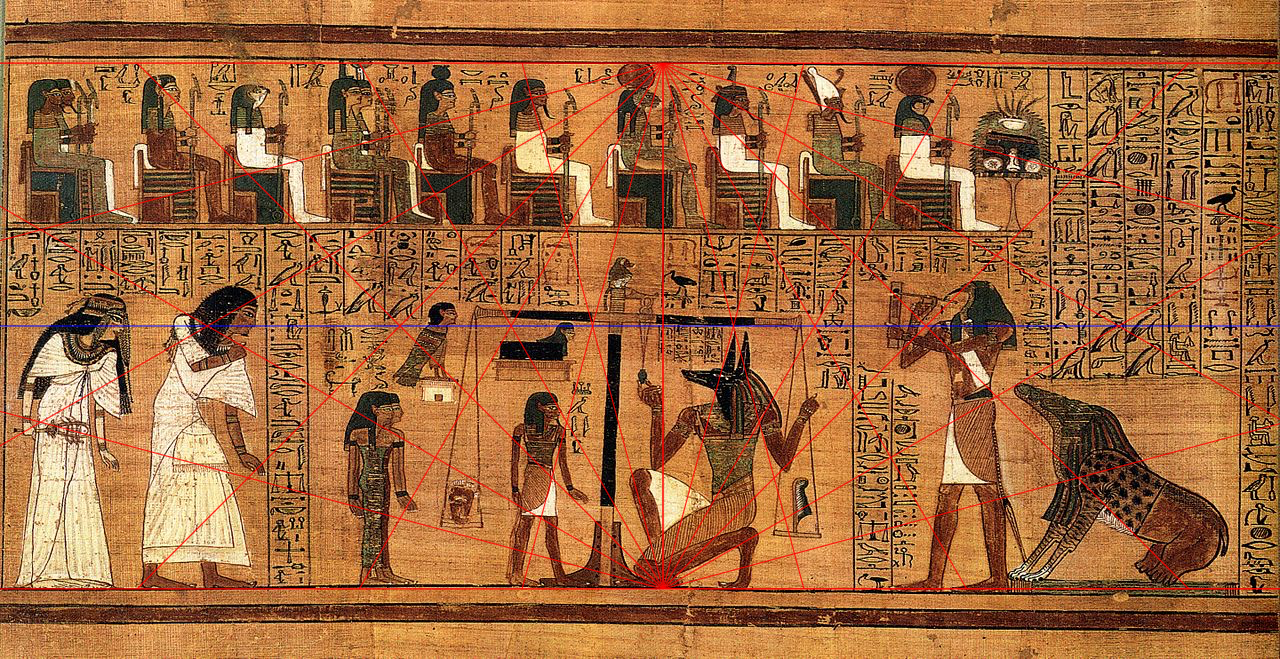
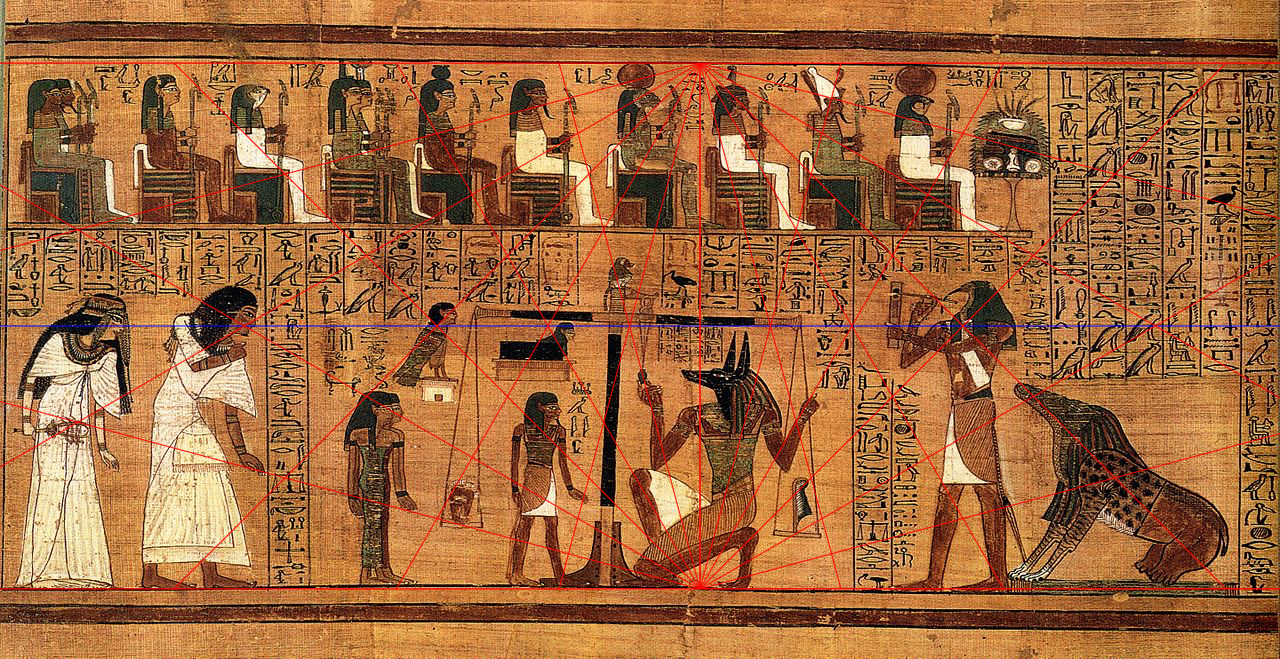
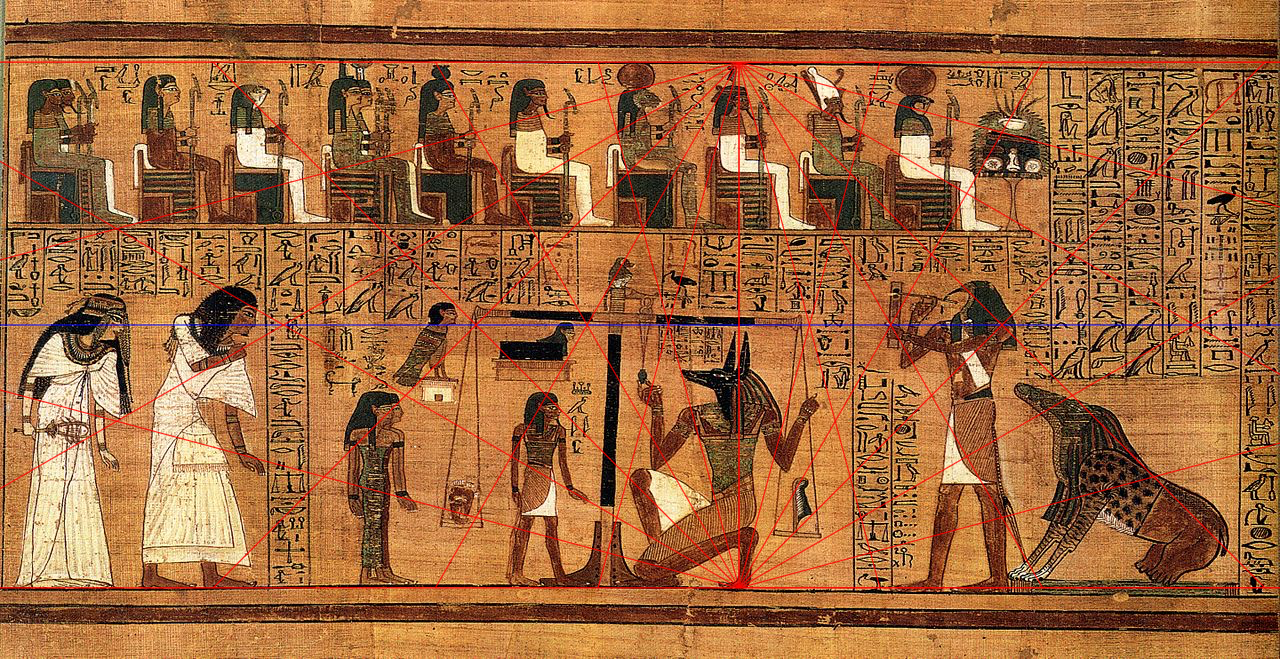
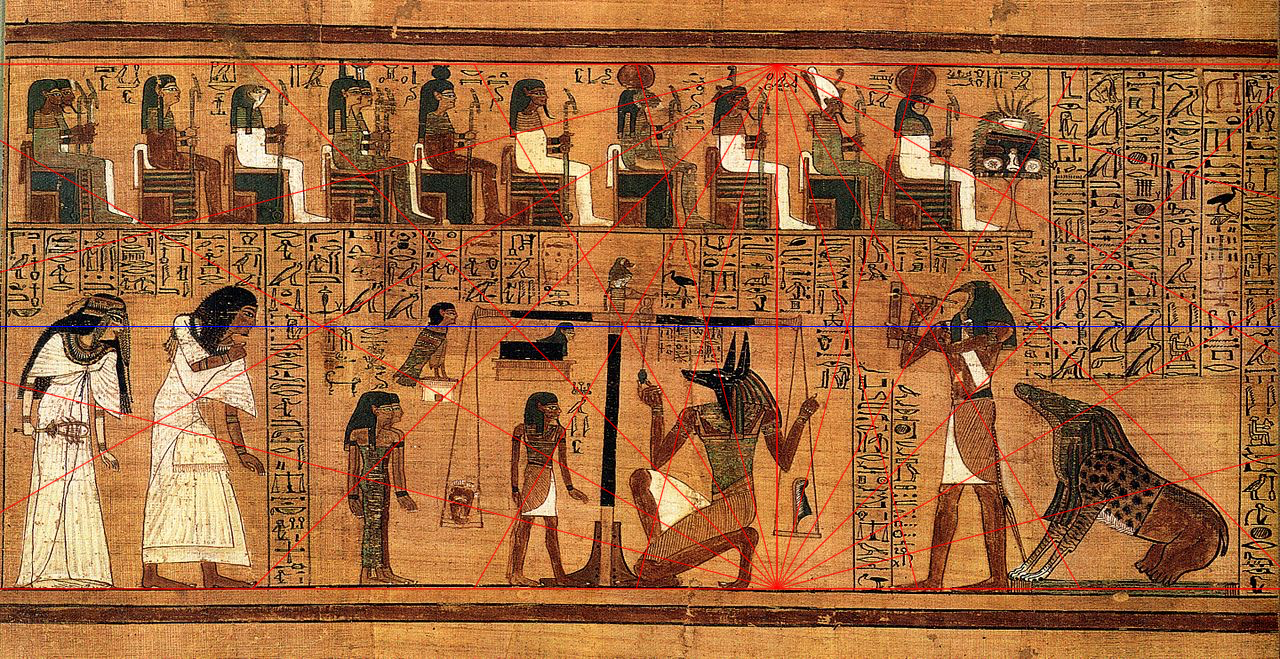
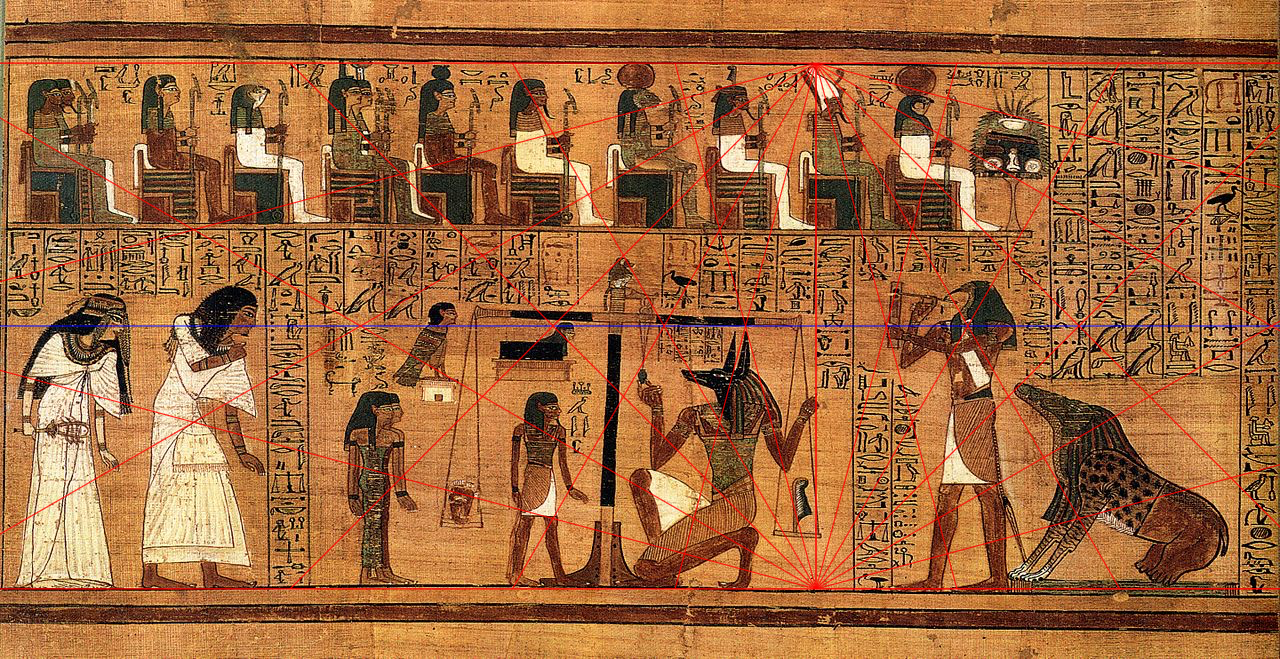
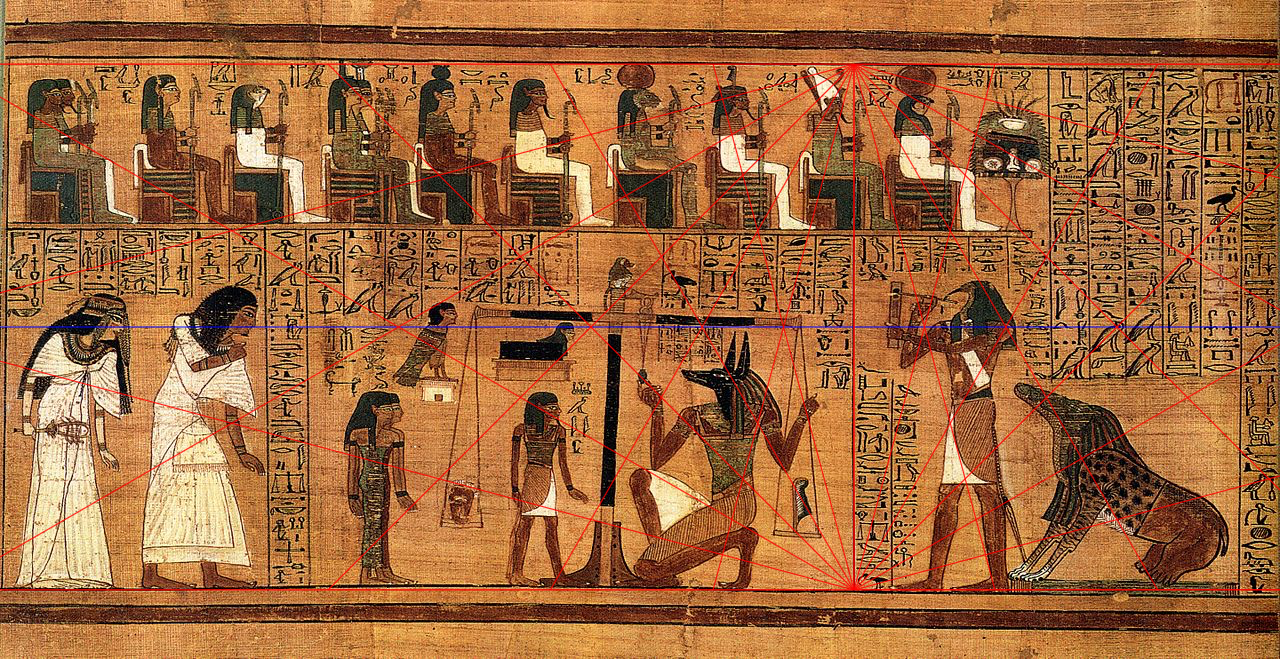
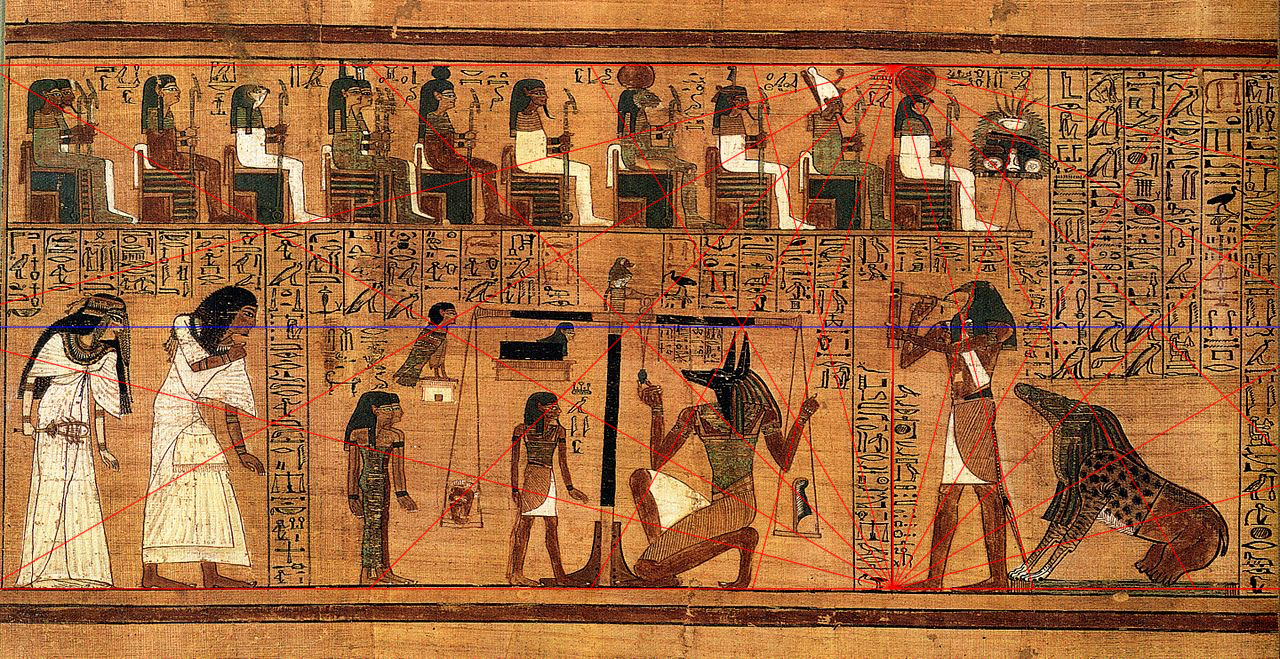
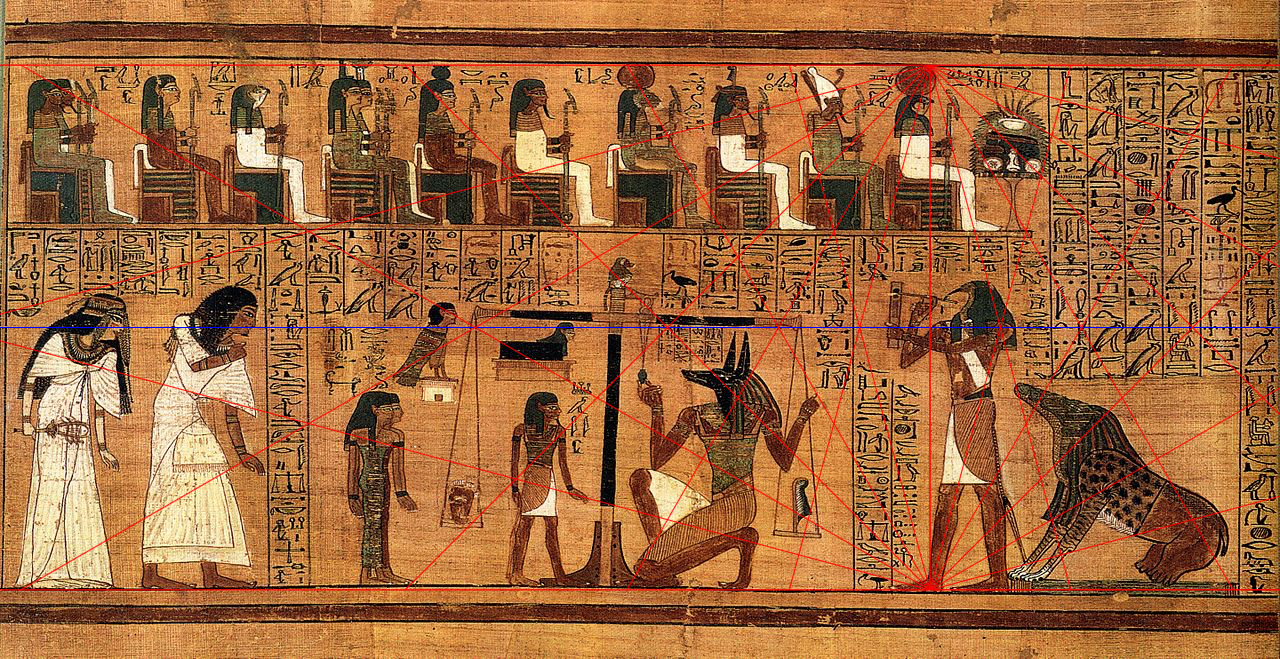
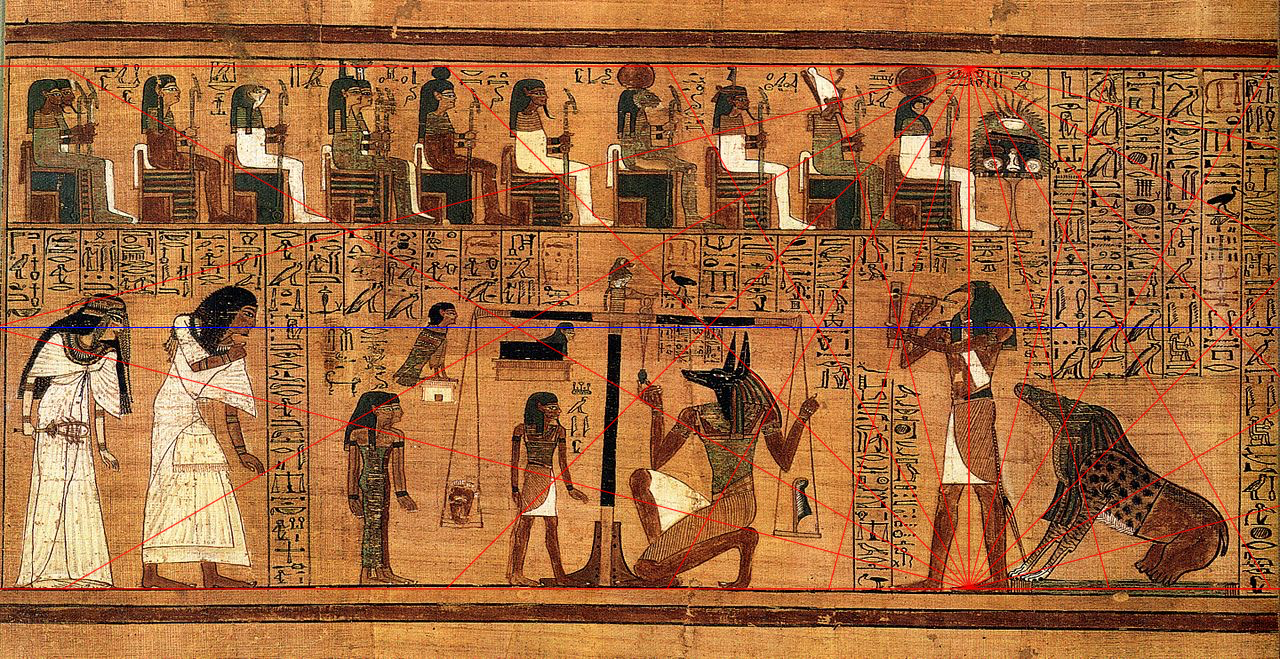
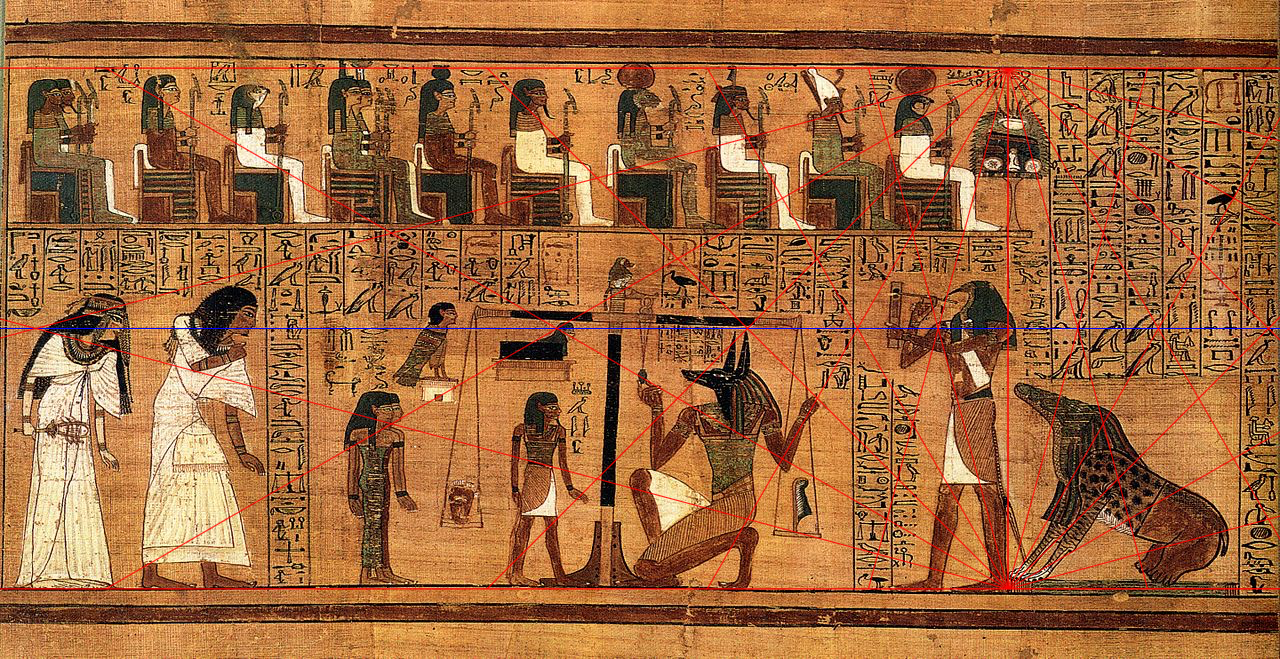
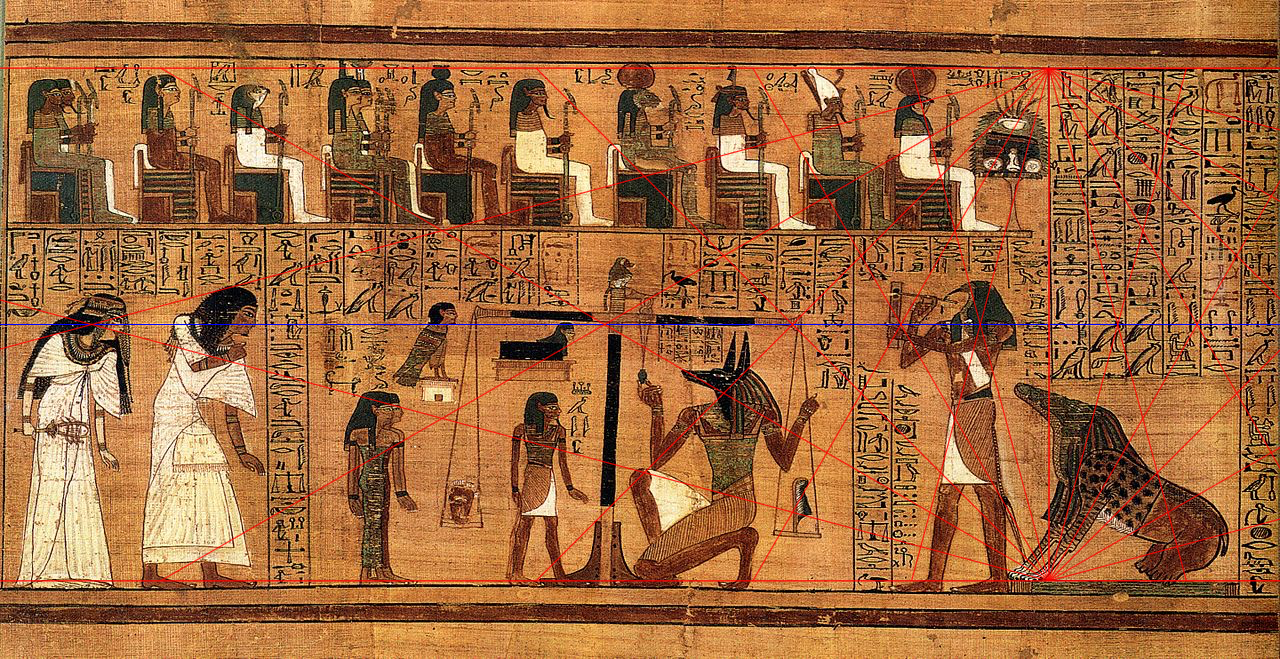
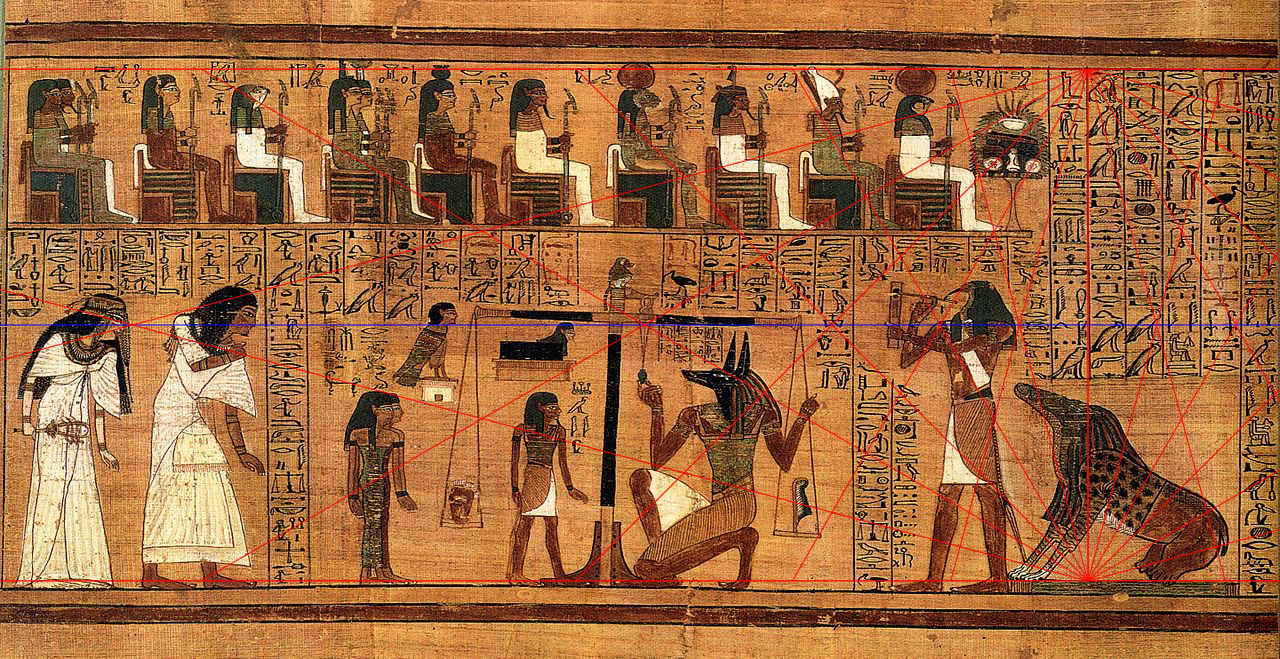
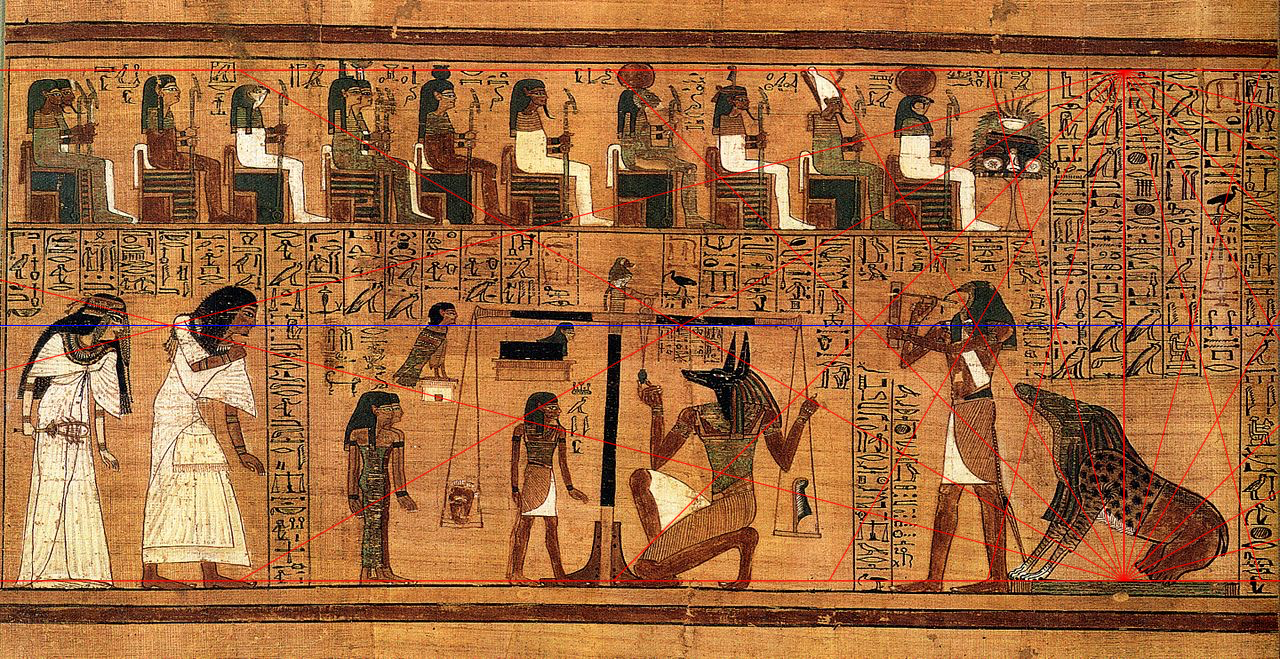
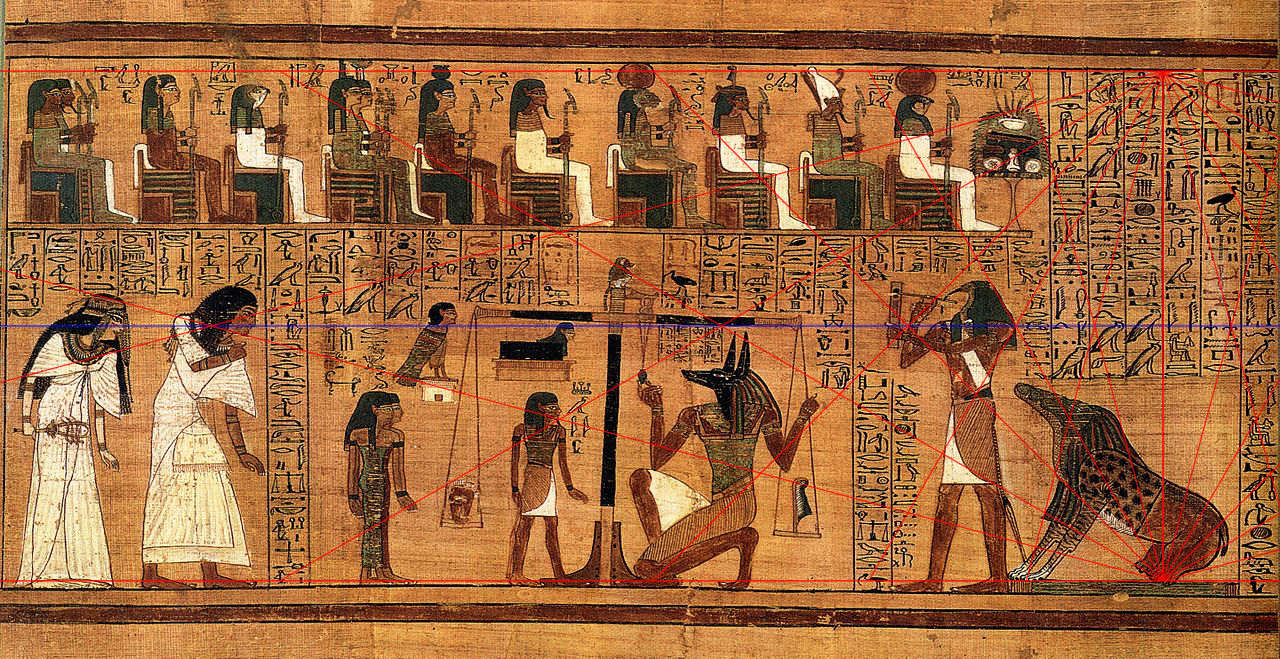
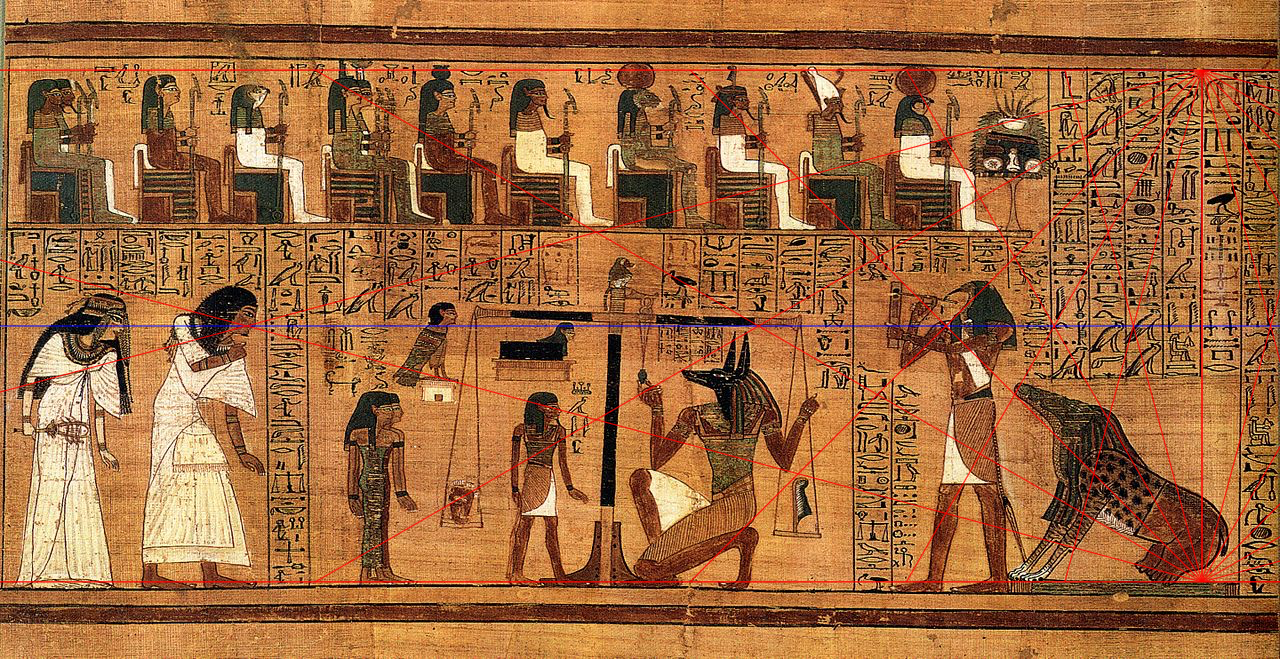
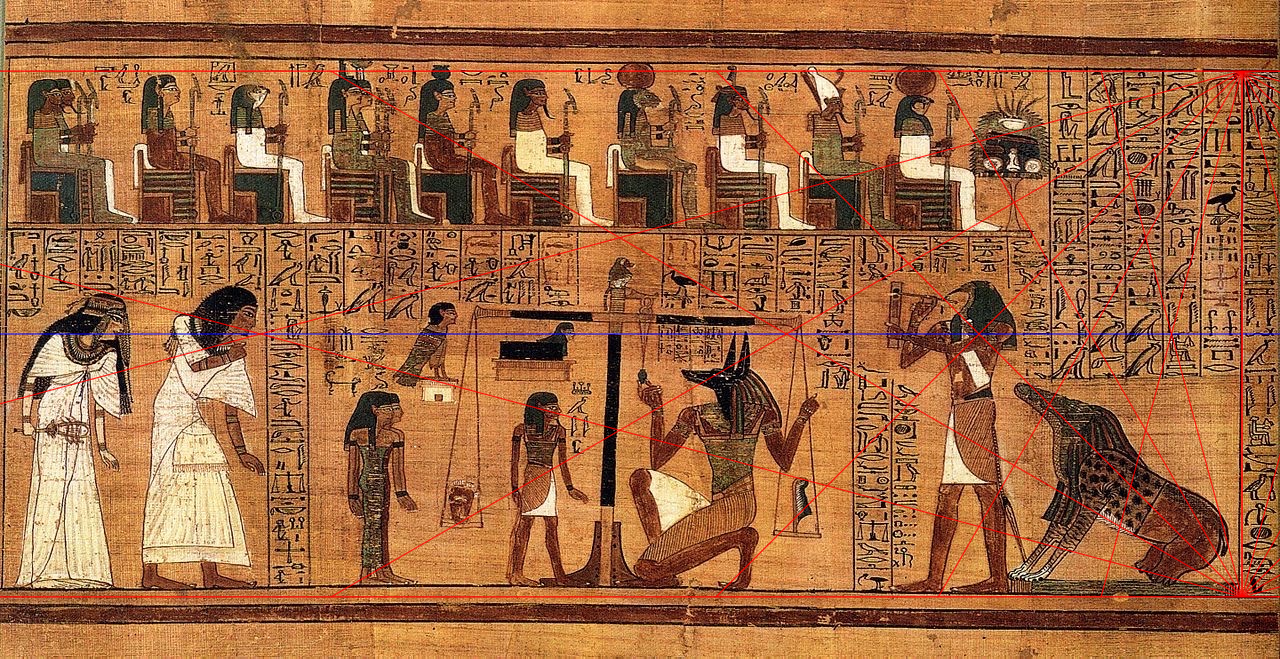
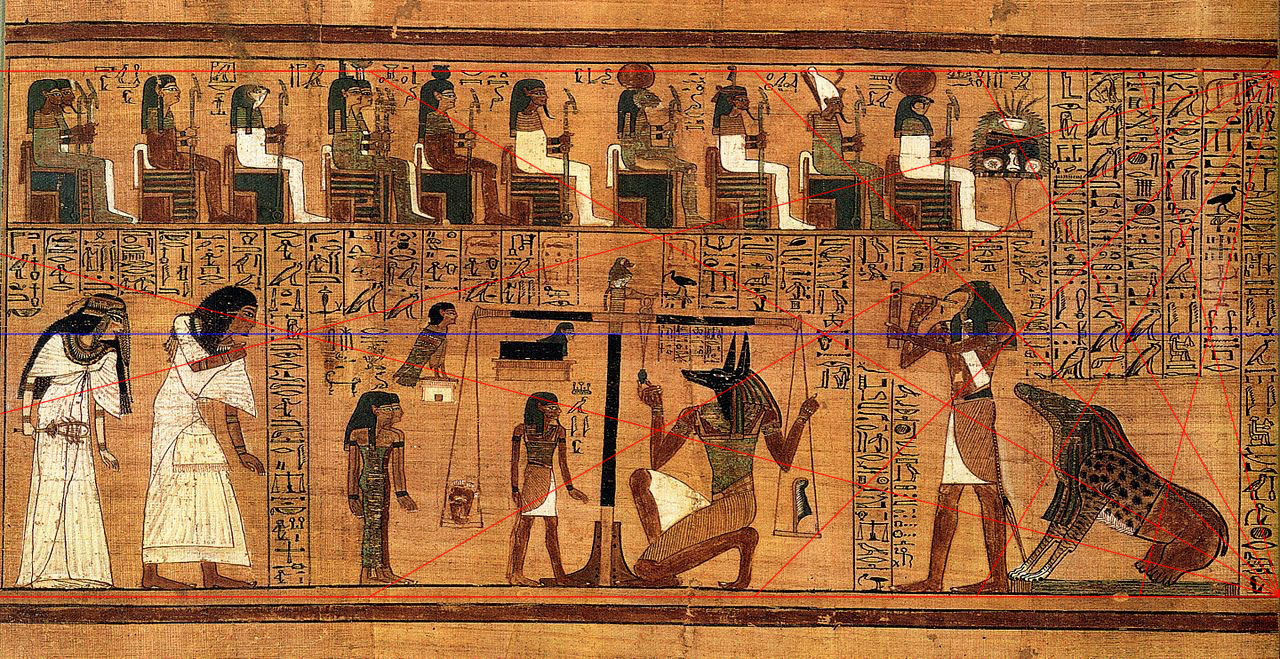

PAPYRUS OF ANI (ANI-CB6PS_B1-B26a/A45)
The baseline pair here is the same lower baseline as ANI-R_A with the upper baseline being the long horizontal border above the columns of hieroglyphs, placing the centerline passing through several of the witnesses eyes and Anubis’ left hand. This is an example of additional baselines and narratives encoded within the larger narrative. The upper long side of the six-pointed star’s Square Root of Three rectangle is the same as the centerline projected by the outer baseline pair of ANI-R_A and passes just below Tutu’s eye as before but with a Square Root of Three emphasis. This composite geometric shape composed of a white cube, blue six-pointed star inside a blue hexagon inside a red circle is all about the Square Root of Three. The circle’s radius projects the Square Root of Three throughout the entire six-pointed star. The long sides of the rectangles are always a multiple of the Square Root of Three. The arcs along the circumference of the circle are defined by the radius of the circle and are directly associated with the Square Root of Three with the space in between the chords and arcs offering a specific and unique area for symbolic encoding. The diagonal of a cube is the Square Root of Three and thought of by some as the diameter or polar axis of the planet. As the narrative progresses from left to right watch the arcs and chords begin to intersect with parts of the scales, the dishes and the cords holding them, Ani’s heart and the Feather of Truth, other parts of the scales, Anubis’ eye, hands and ears, Thoth’s pen, tablet, and hands, and last but not least, Ammit’s eye. The description of the weighing seems to begin when the circle’s forward arc tangents Column 8’s vertical separation line. Near the bottom of Column 8 is a ‘scales glyph’ and as the vertical line/y-axis alignments progress watch the arc, chord, and long sides intersect parts of the scales geometrically aligning the glyph(s) to the narrative. There are additional alignments that involve the end chords of the Square Root of Three rectangle aligning to vertical column separation lines simultaneously and in conjunction with the y-axis also aligned to a vertical line. The relationship between the chords at the ends of the rectangle and or an object or glyph is a Square Root of Three relationship. The arcs, chords and the rest of the geometry proceed to align with the chords of the dishes, the chords themselves, the scale stand and beam and the eyes of the observers. There are several alignments in the center between the heart dish and cords and the Feather of Truth dish and cords that encode the Square Root of Three using the six-pointed star’s rectangle. Scroll back and forth in the empty space just above the scales and align the white y-axis of the cube to either sides of the tilted scale stand. As mentioned in ANI-R_A the tilting scale stand and balance beam suggest earth’s celestial equator approaching that special time and place when earth’s axial tilt aligns with the plane of the ecliptic. See ANI-CB6PS_A45 for the Square Root of Three rectangle aligned to the pillars of Osiris’ pavilion. What’s interesting is when scrolling the rectangle back and forth only three of the four corners align with the pillars at any one time. These three ‘corners’ are the 30/60/90 right triangle and by applying the Pythagorean Theorem using a radius of one results in the long sides equaling the Square Root of Three. This also happens in The Papyrus of Hunefer.
(Wikimedia Commons/Public Domain)
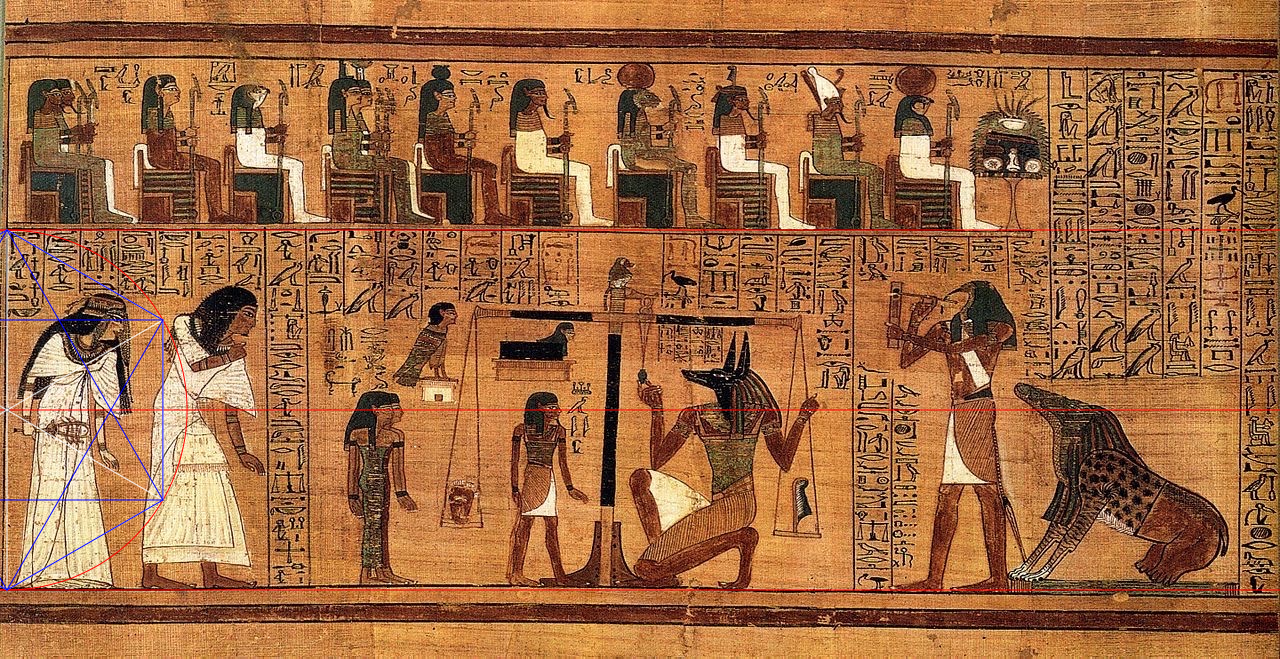
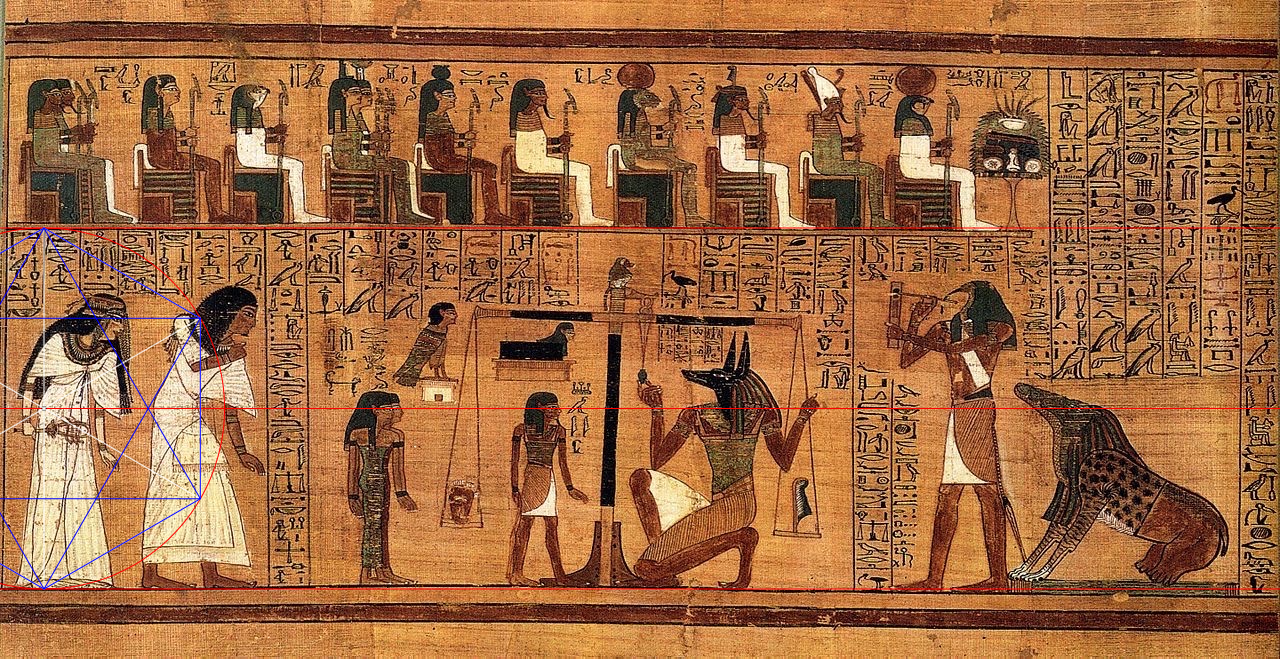
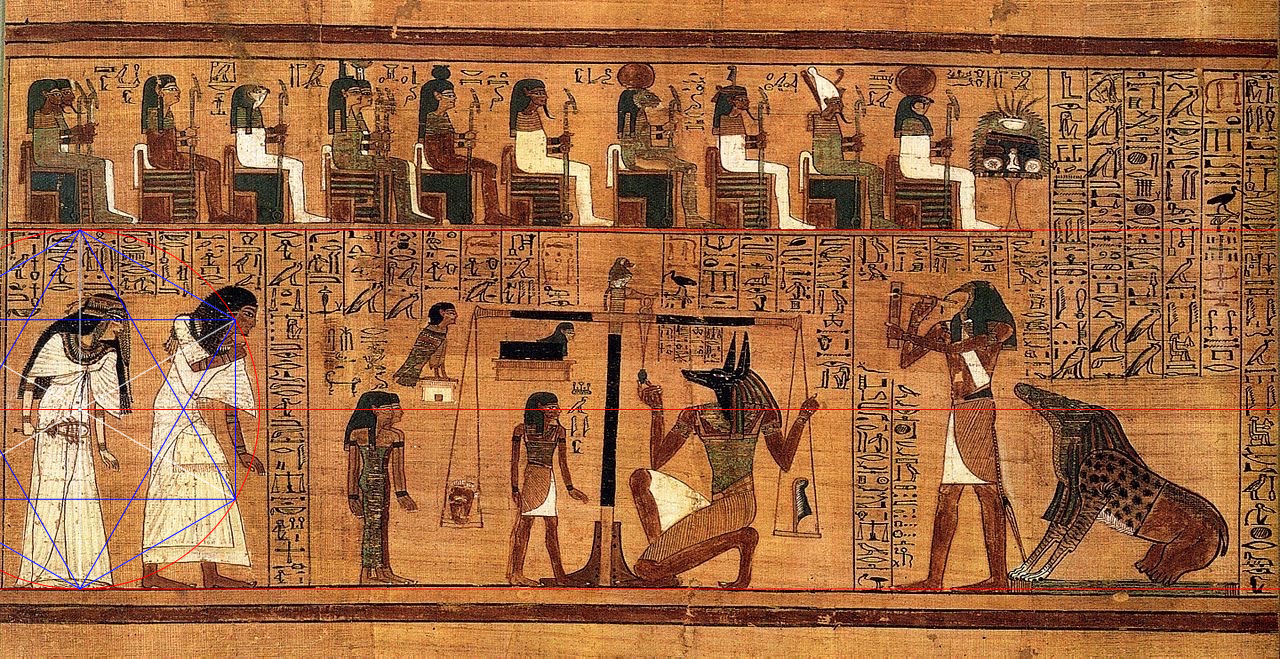
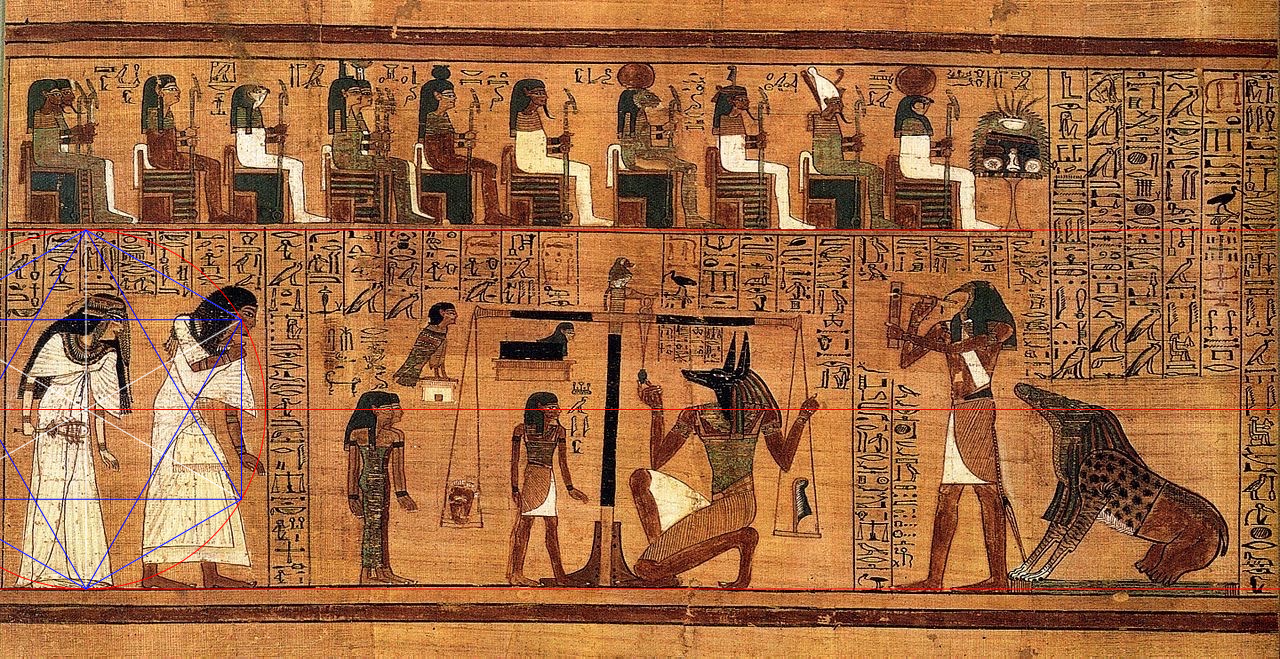
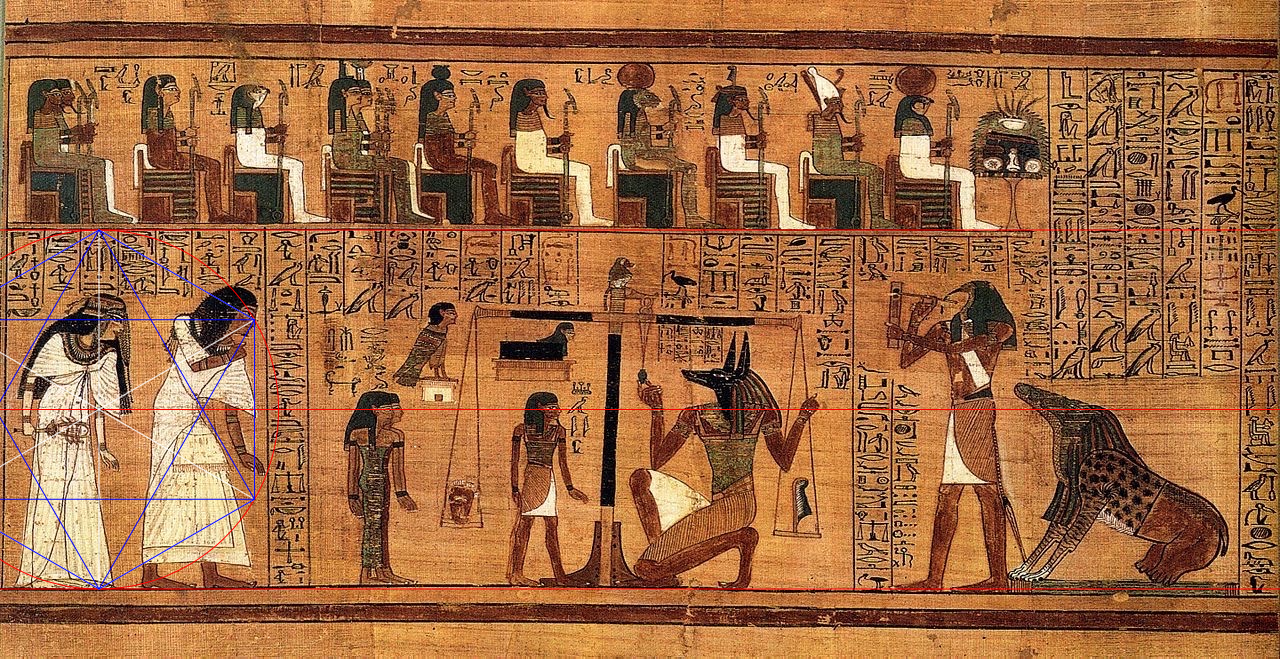
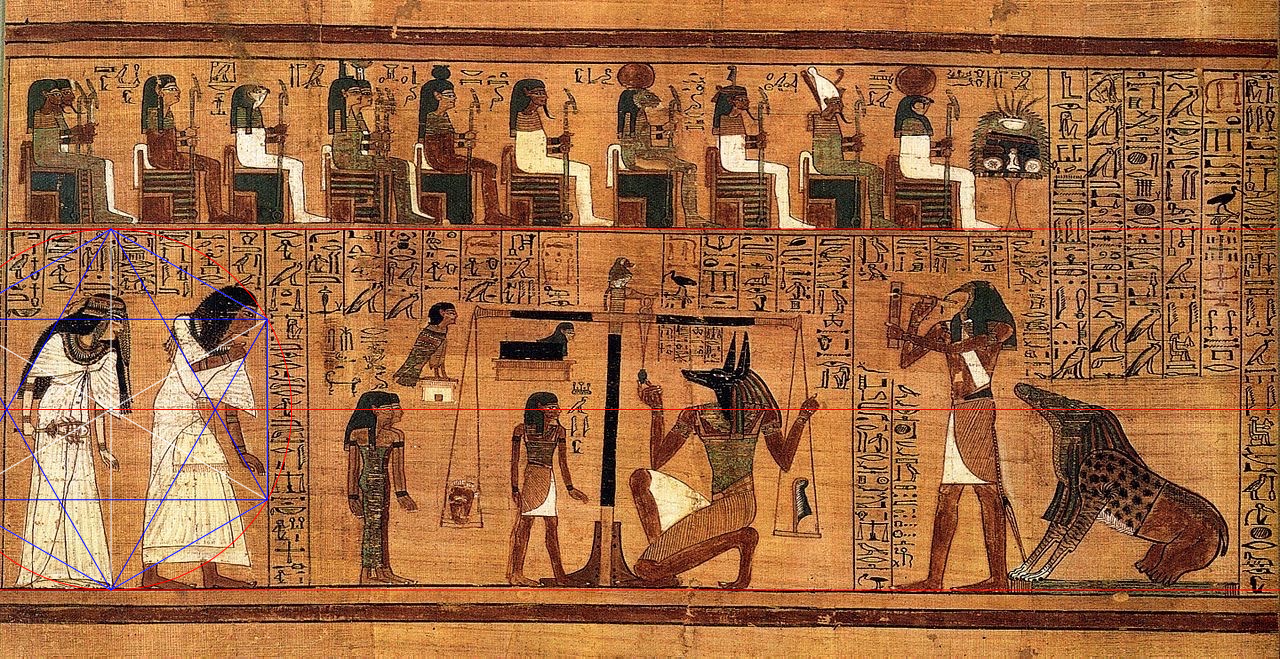
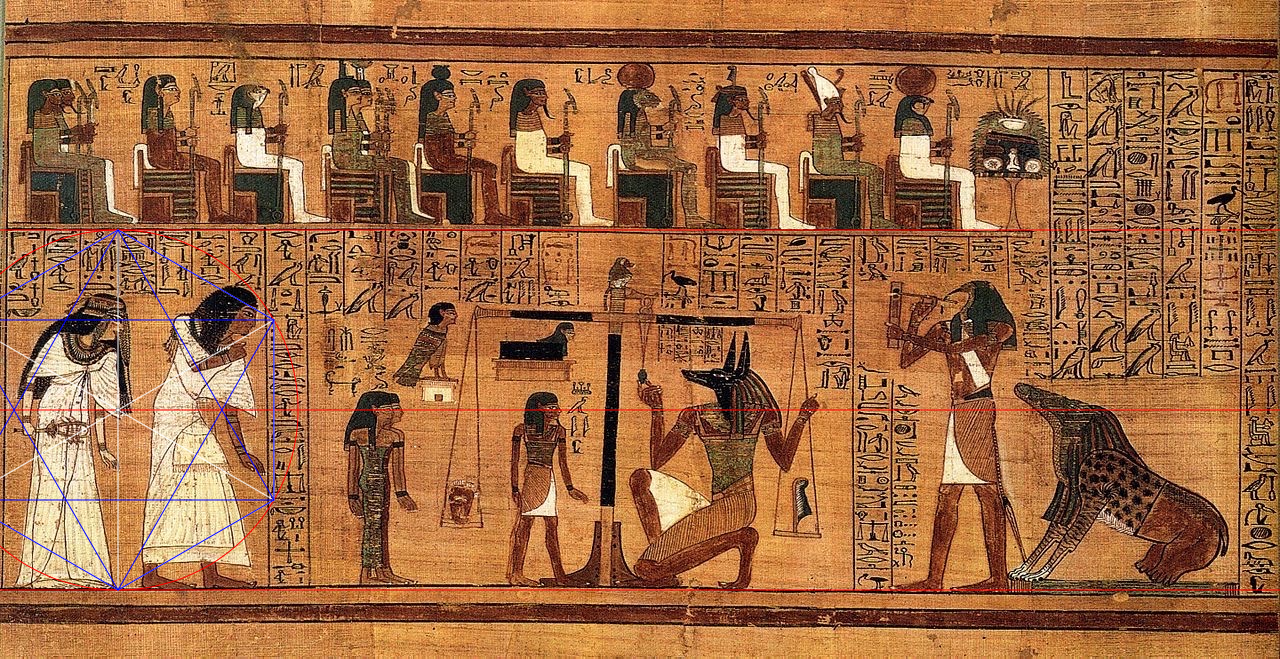
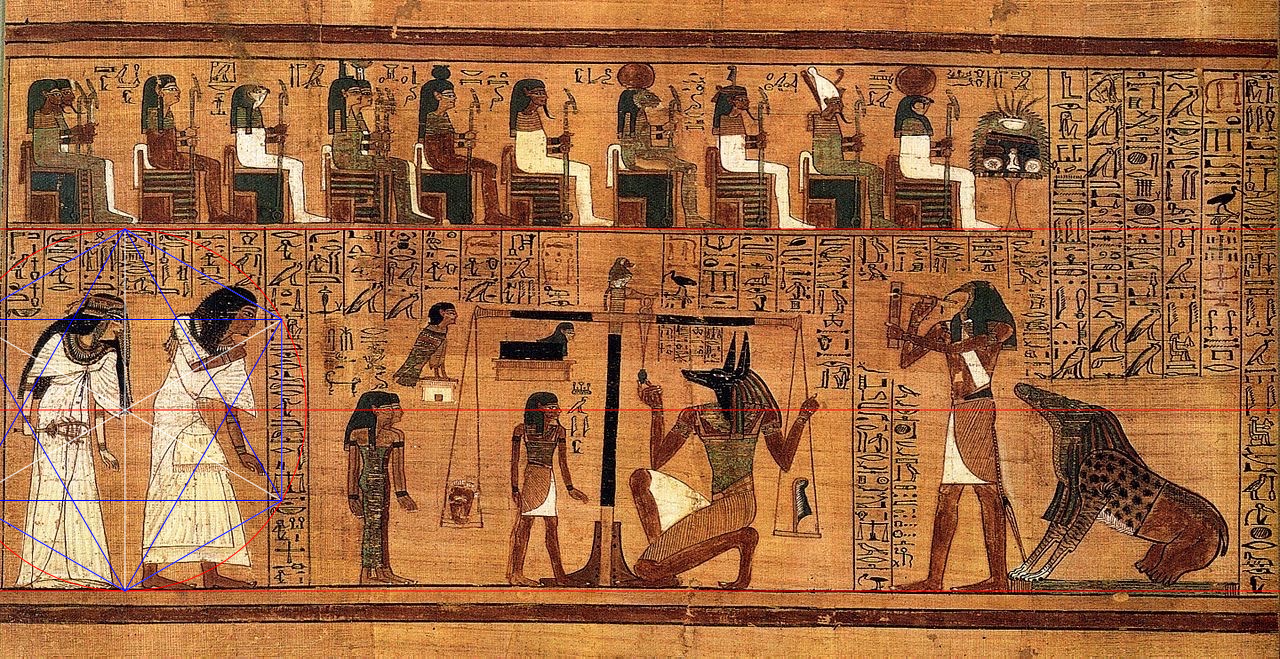
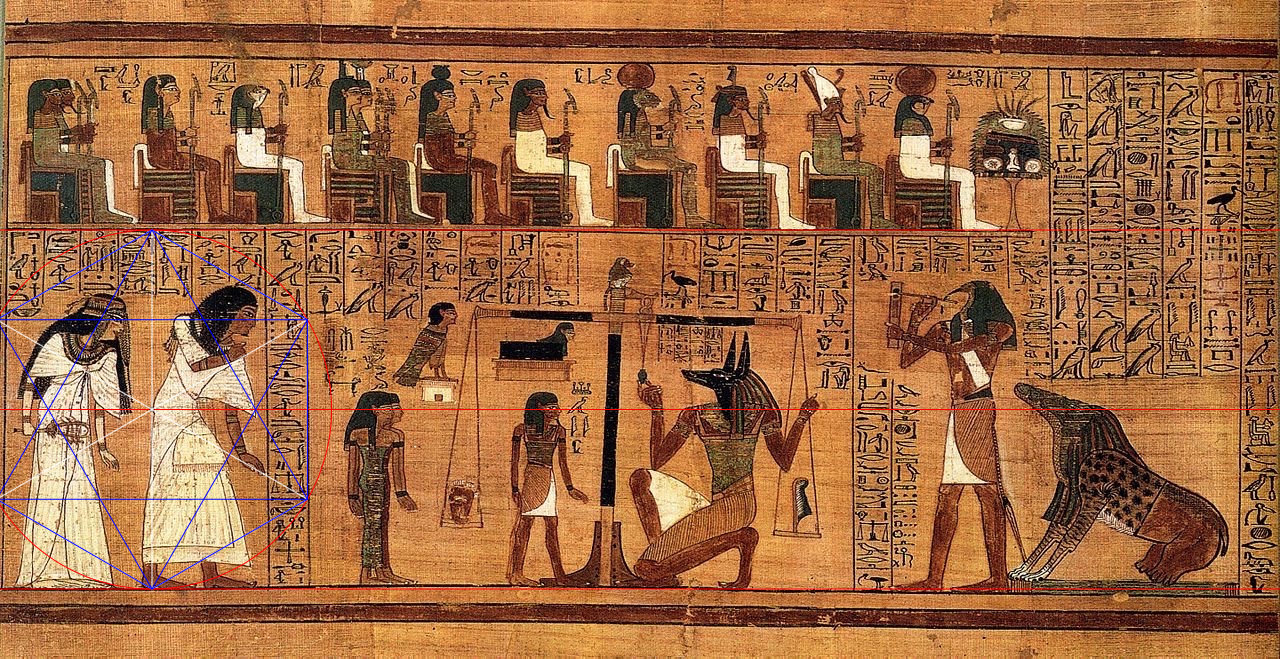
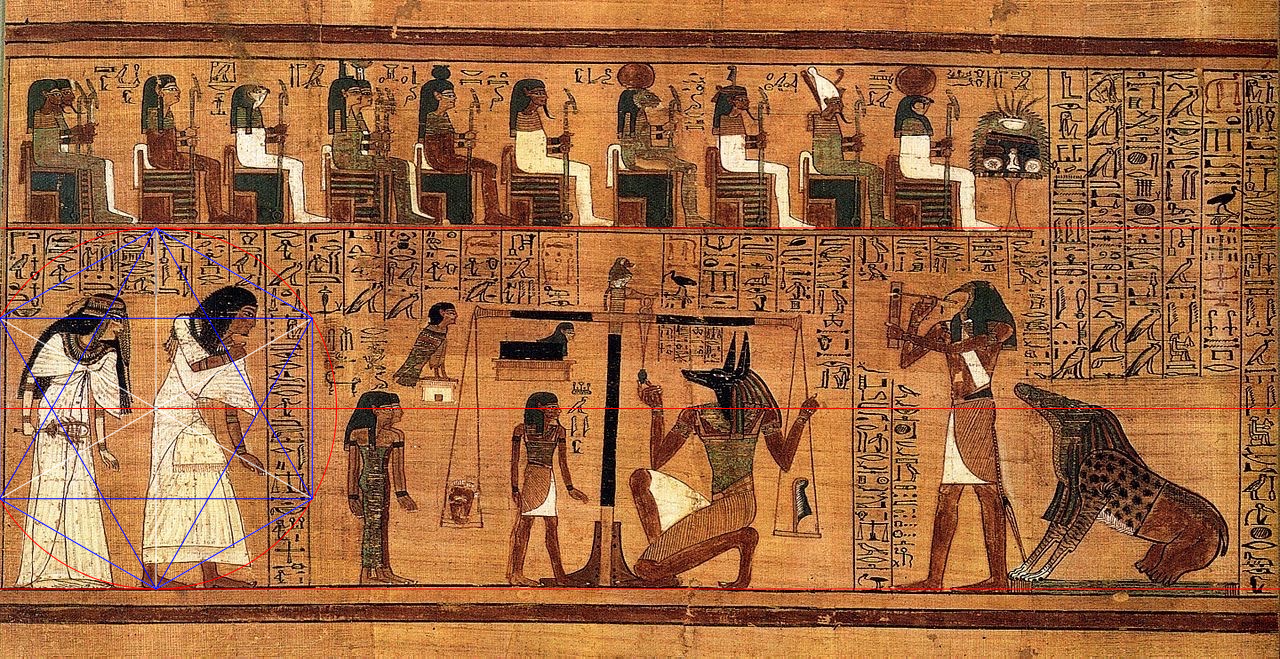
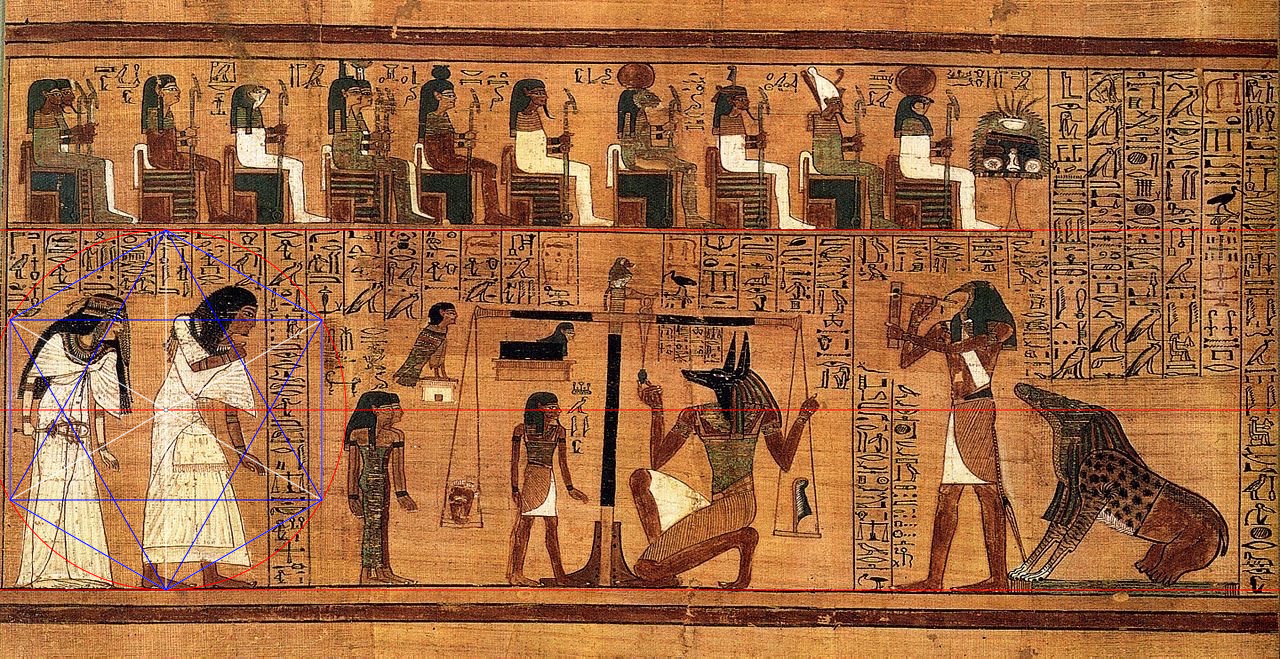
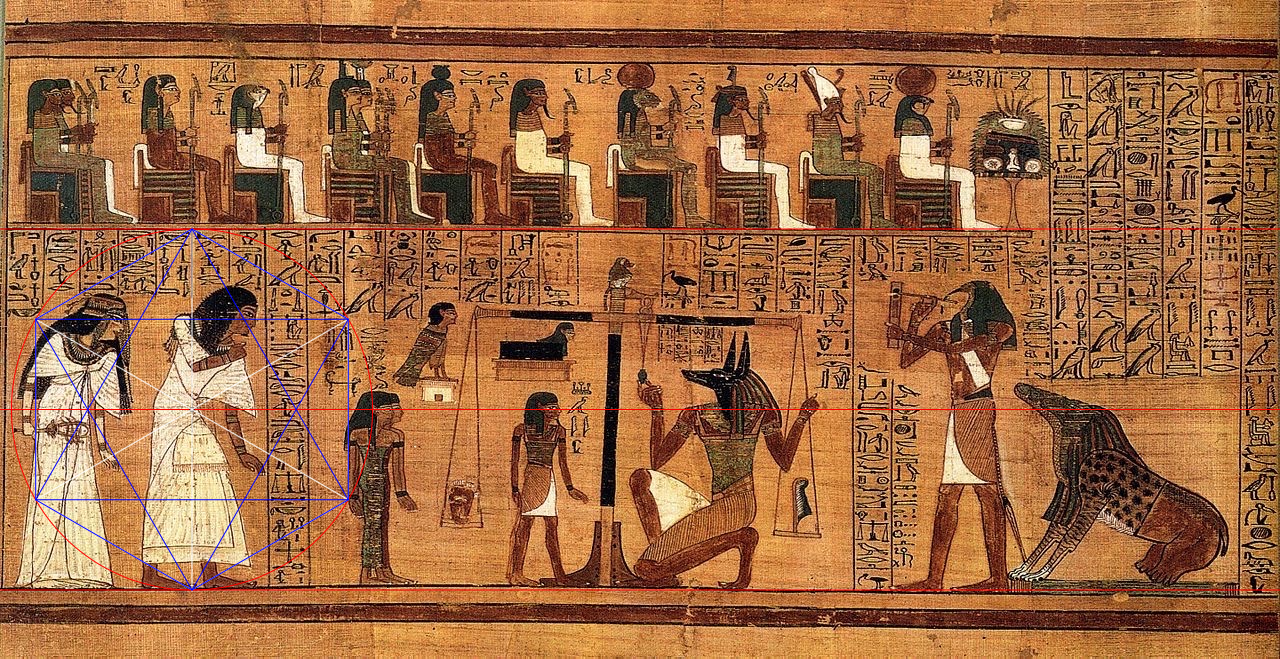
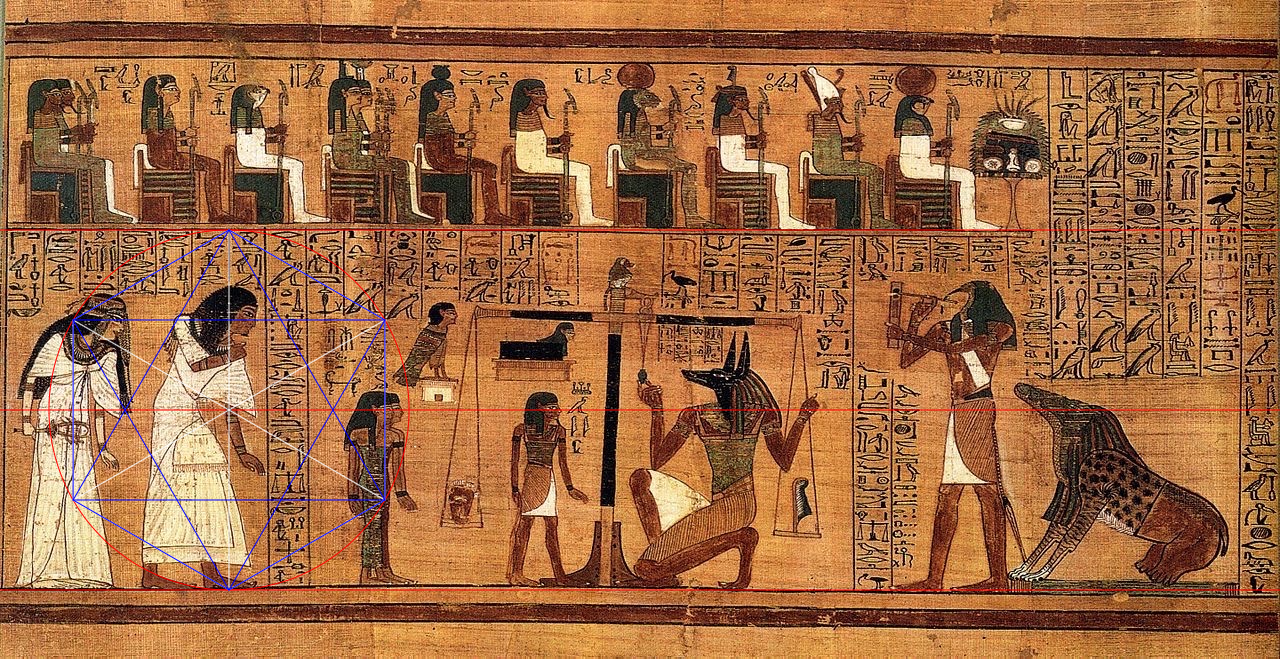
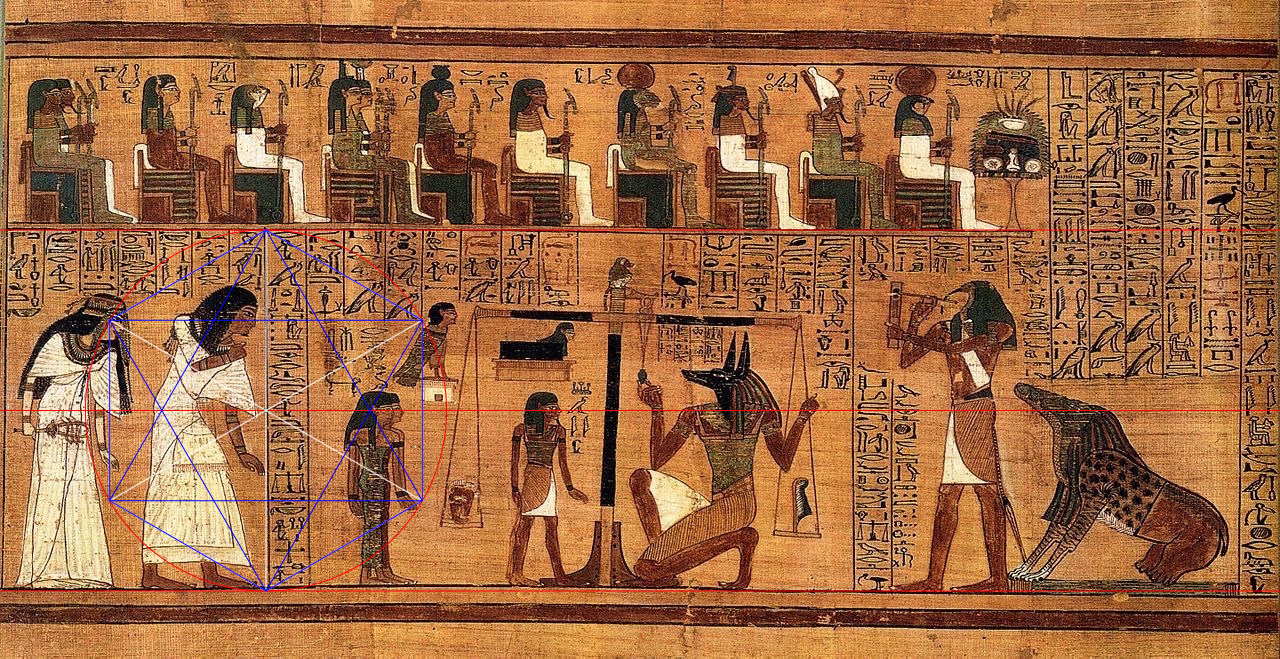
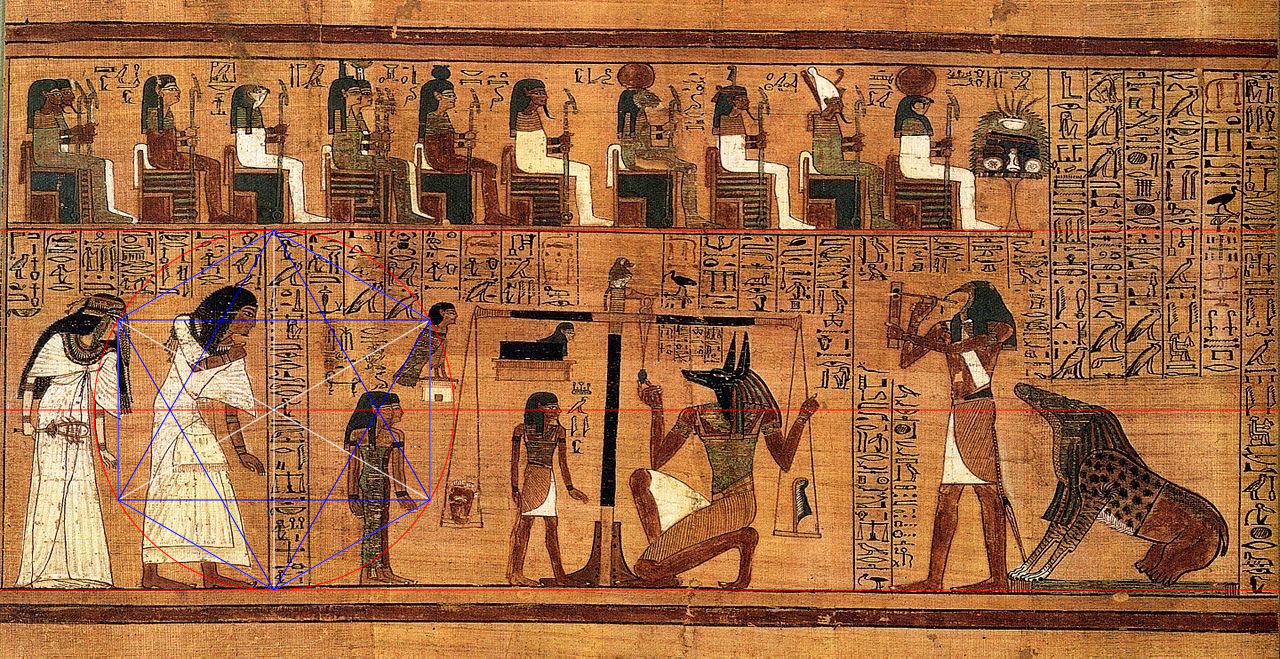
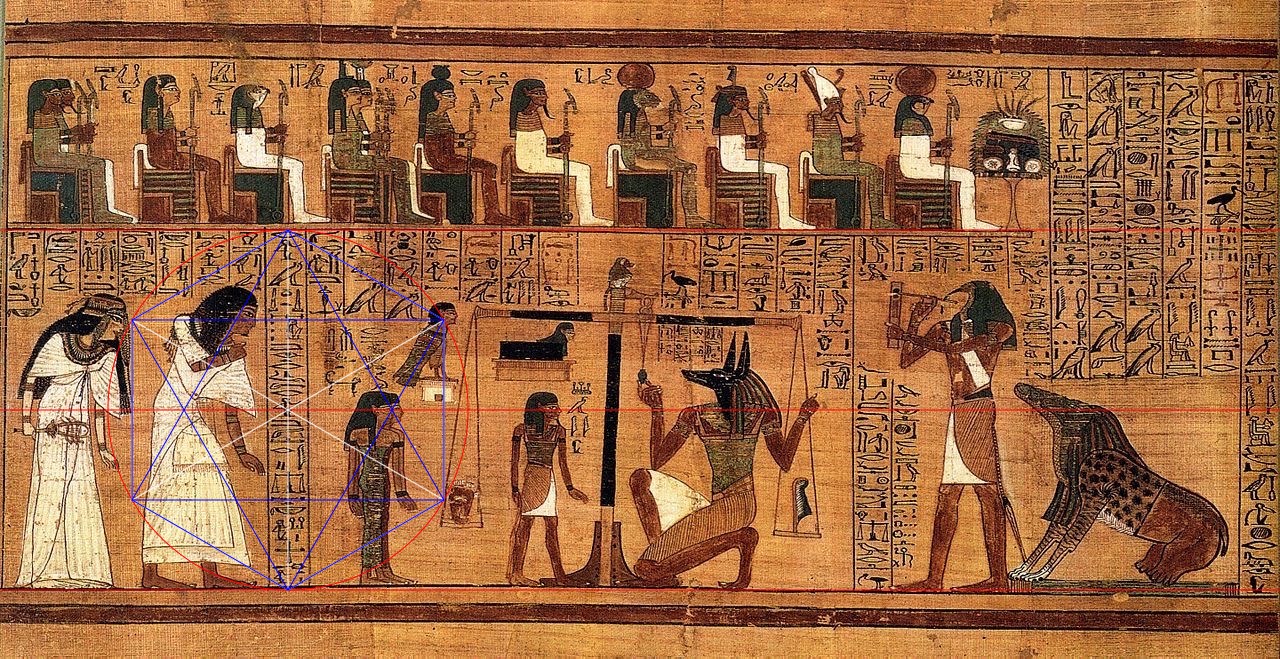
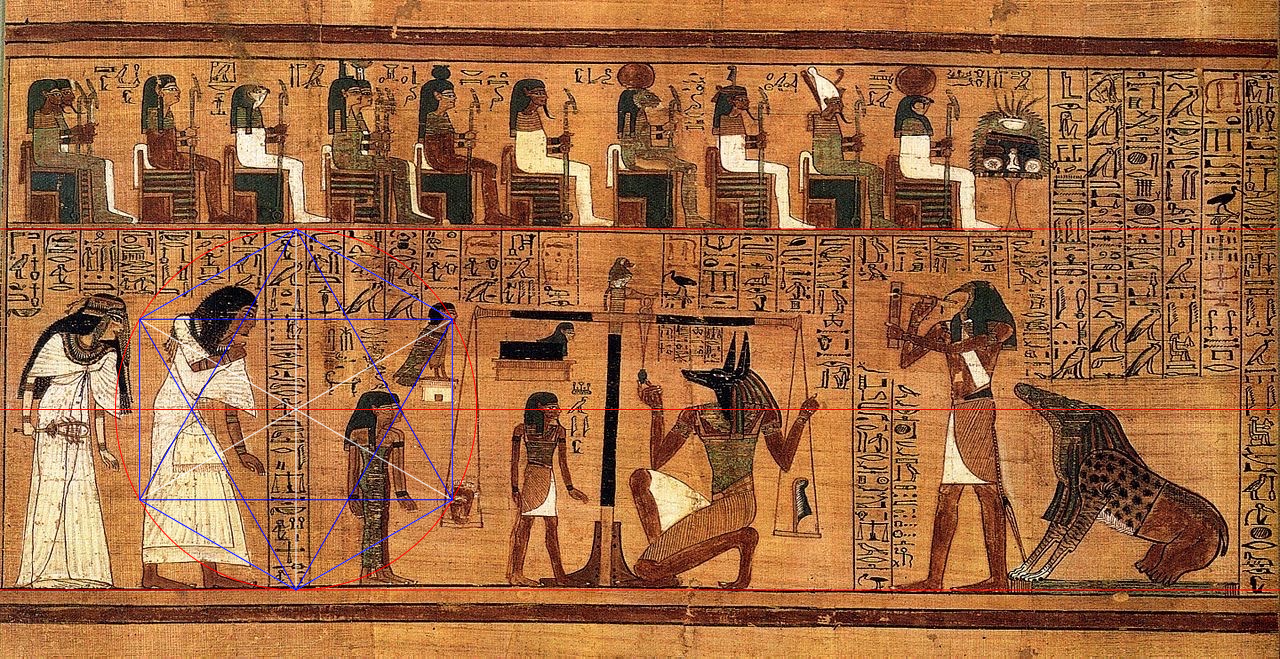
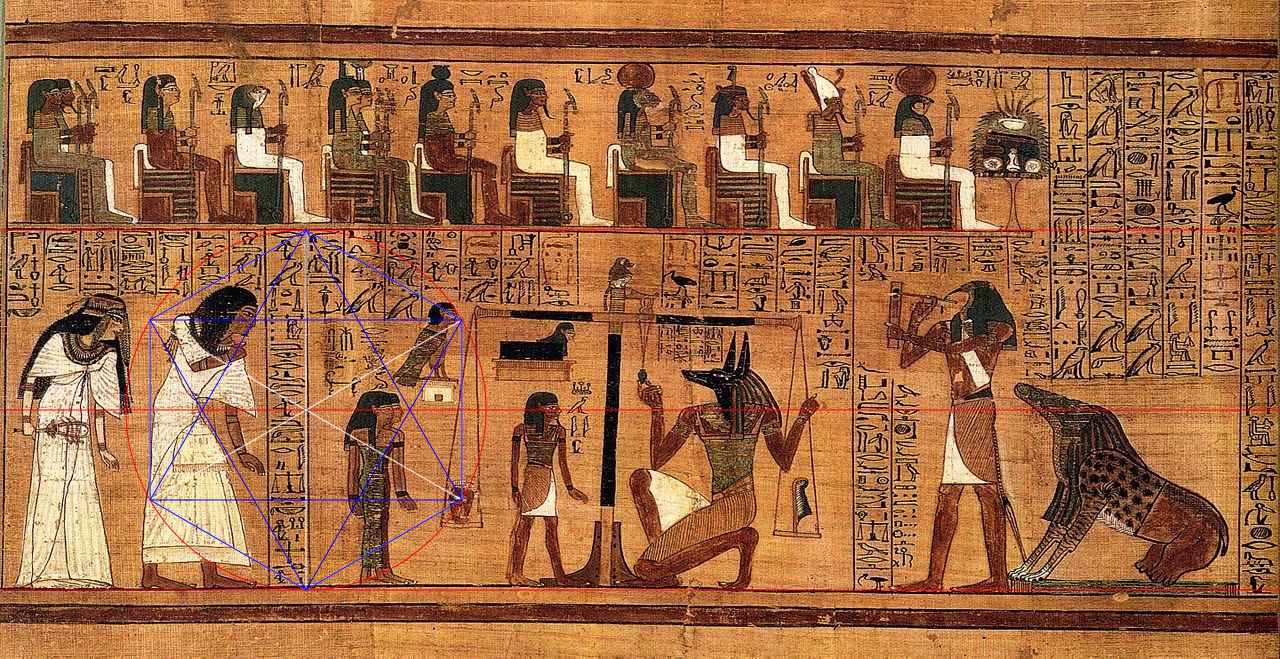
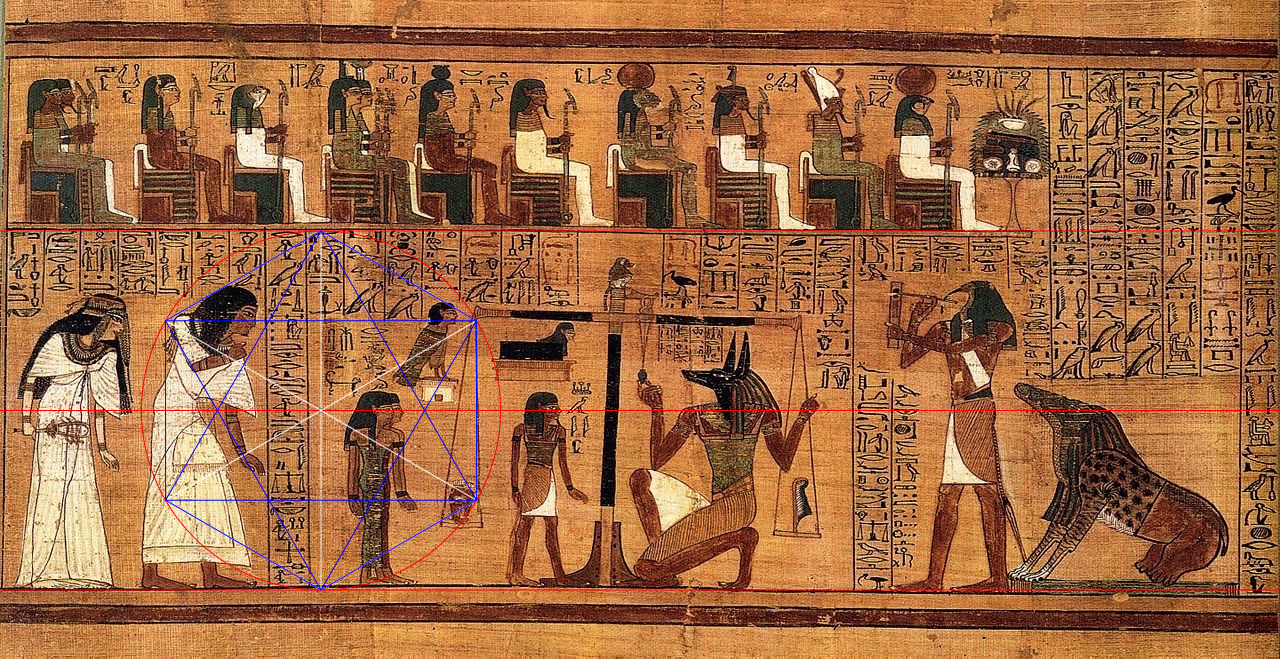
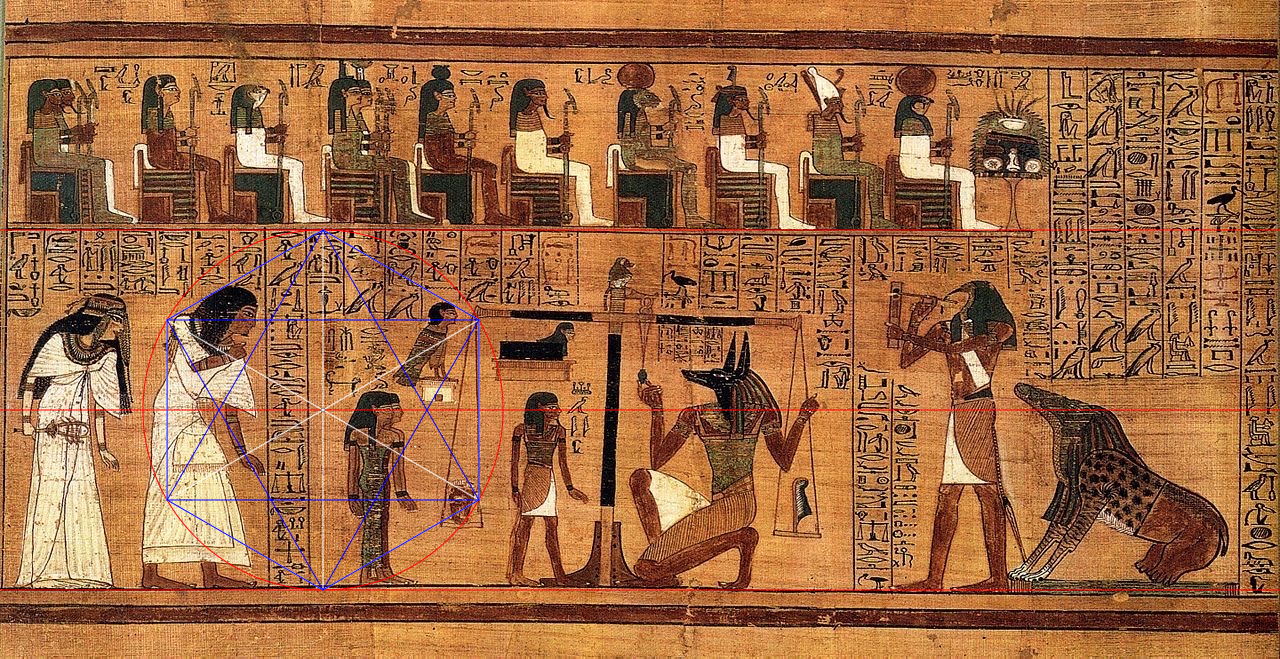
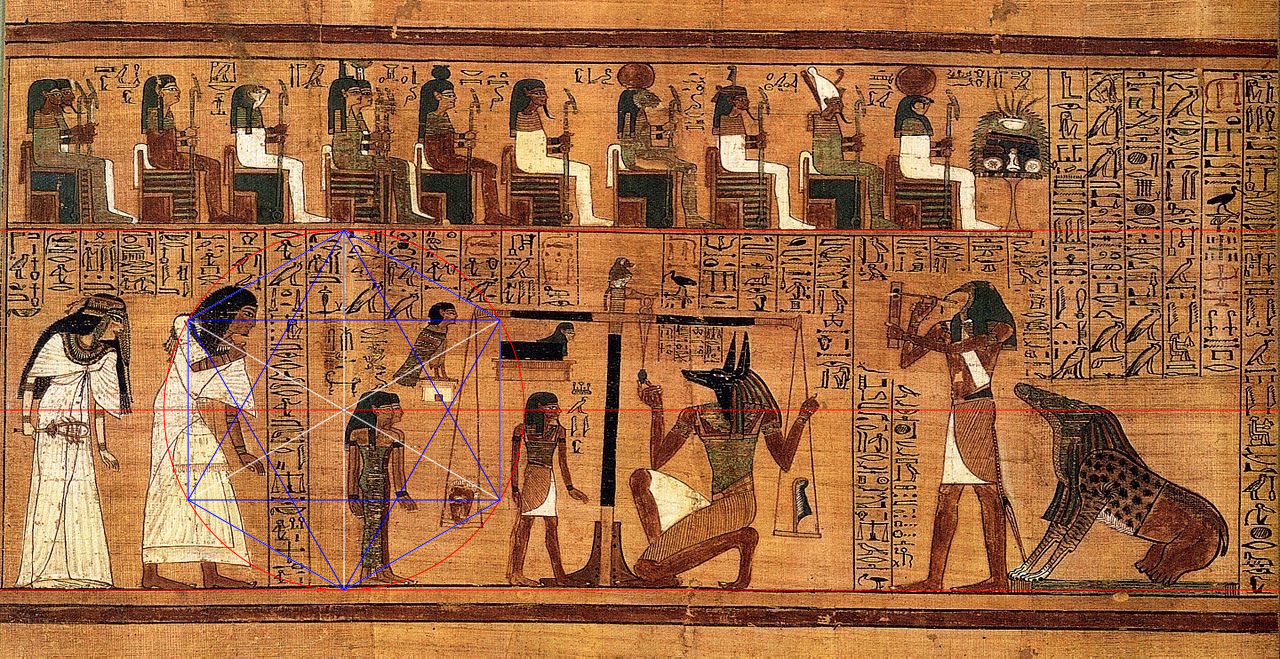
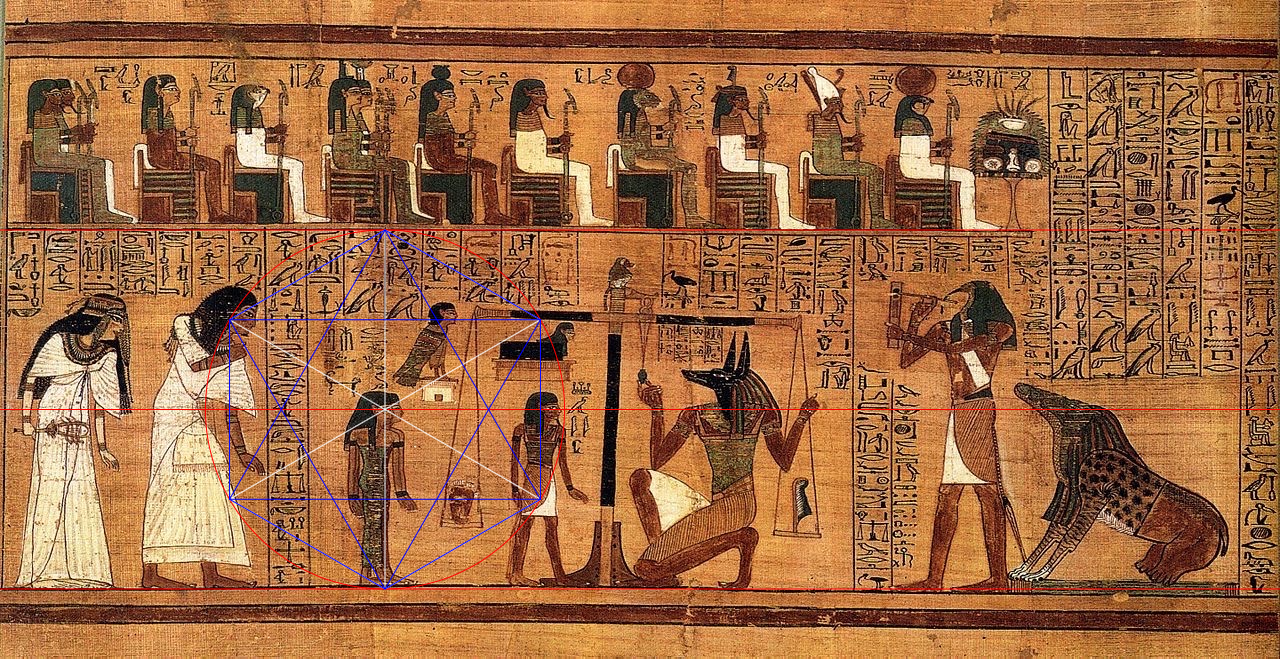
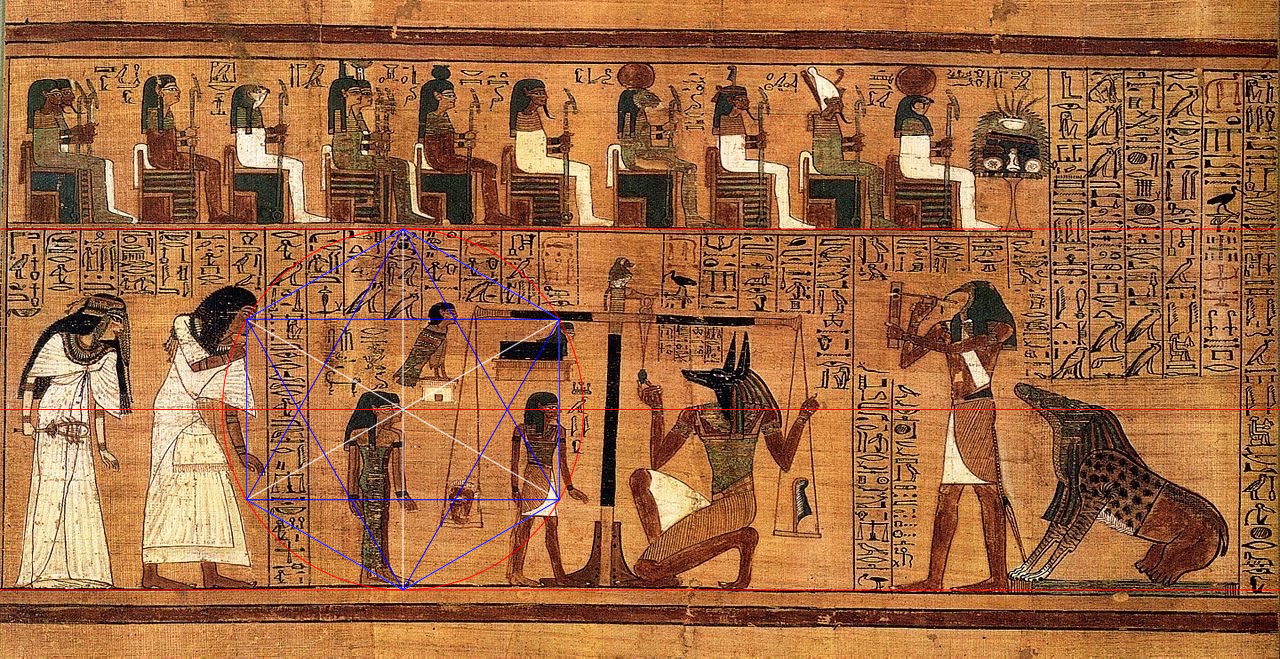

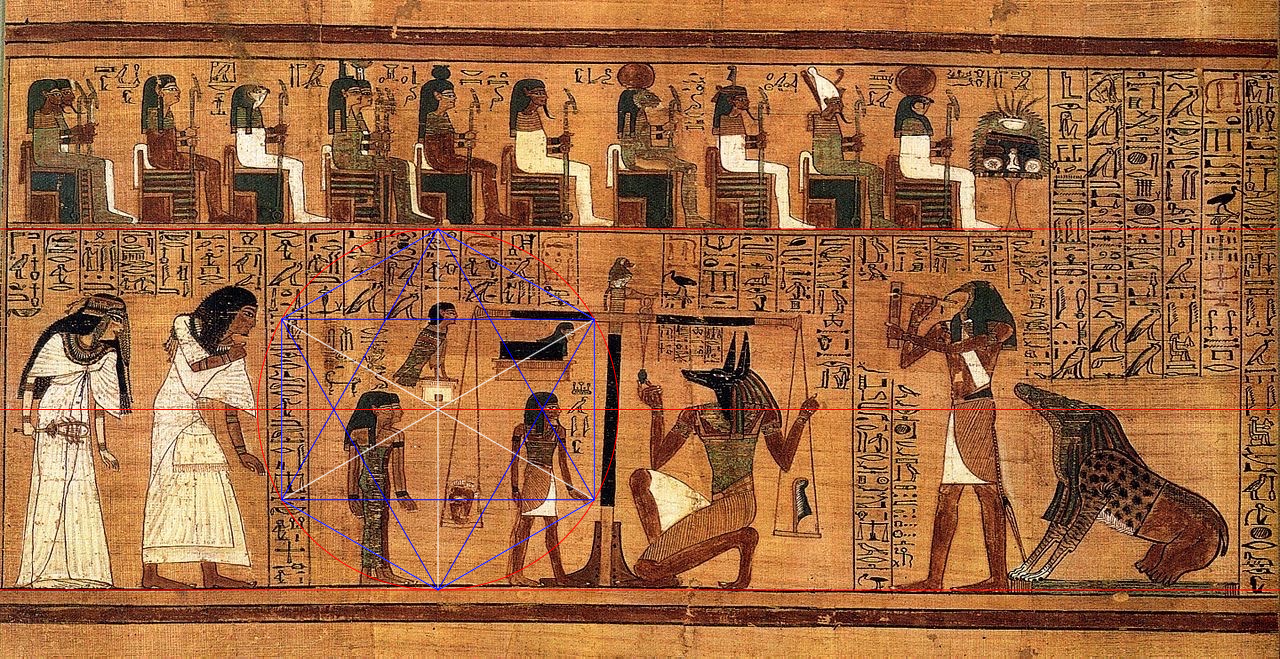
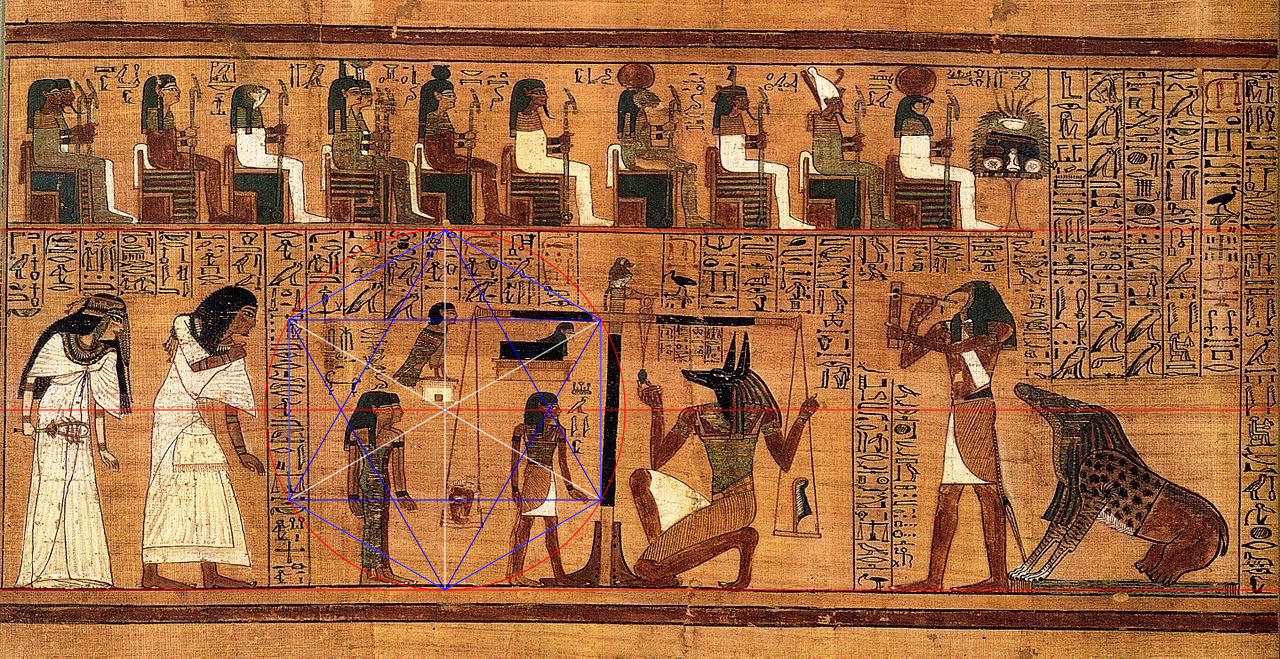
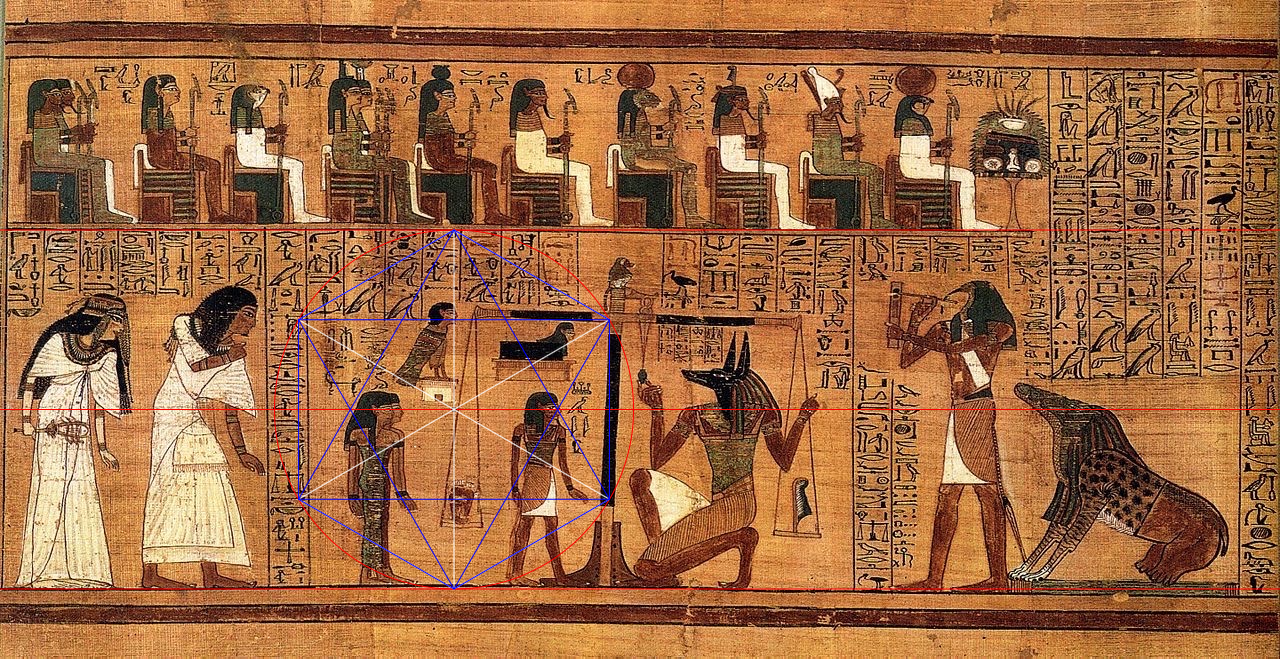
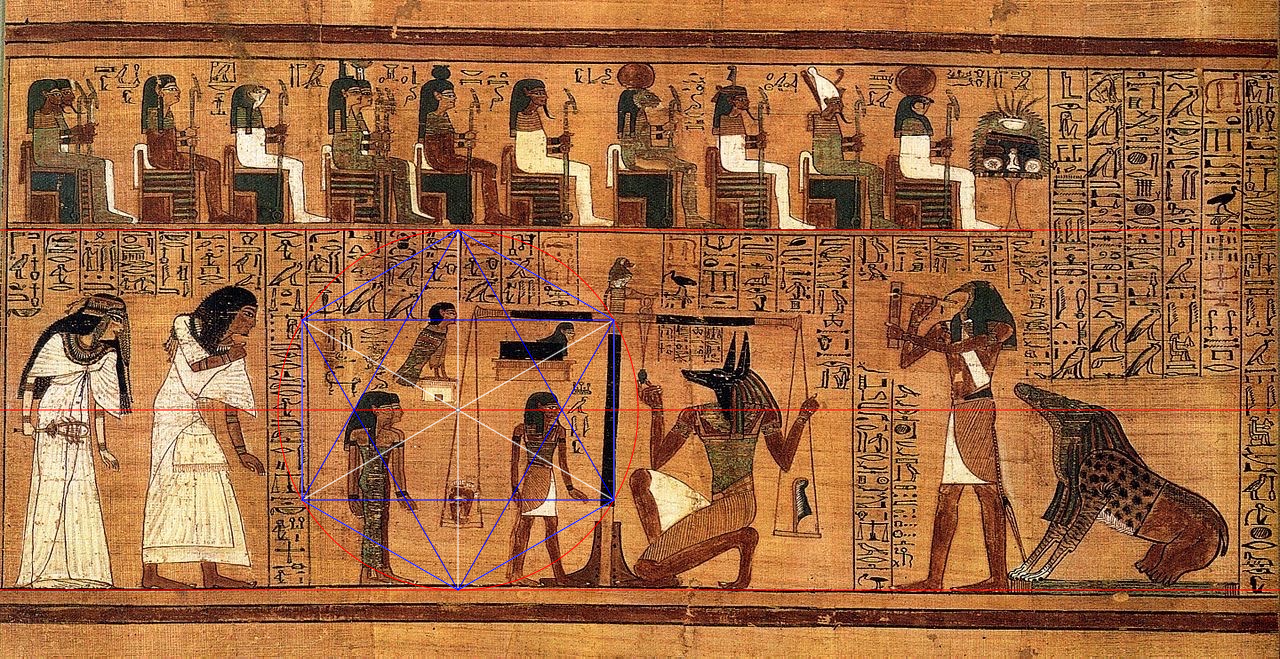
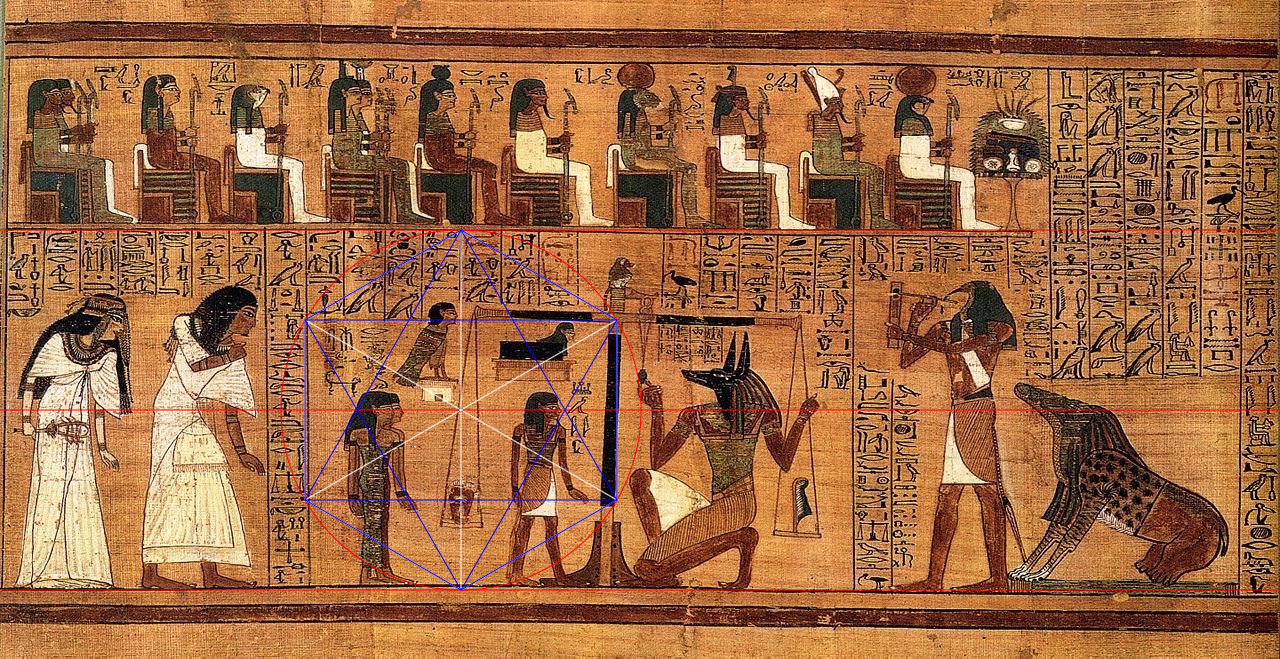
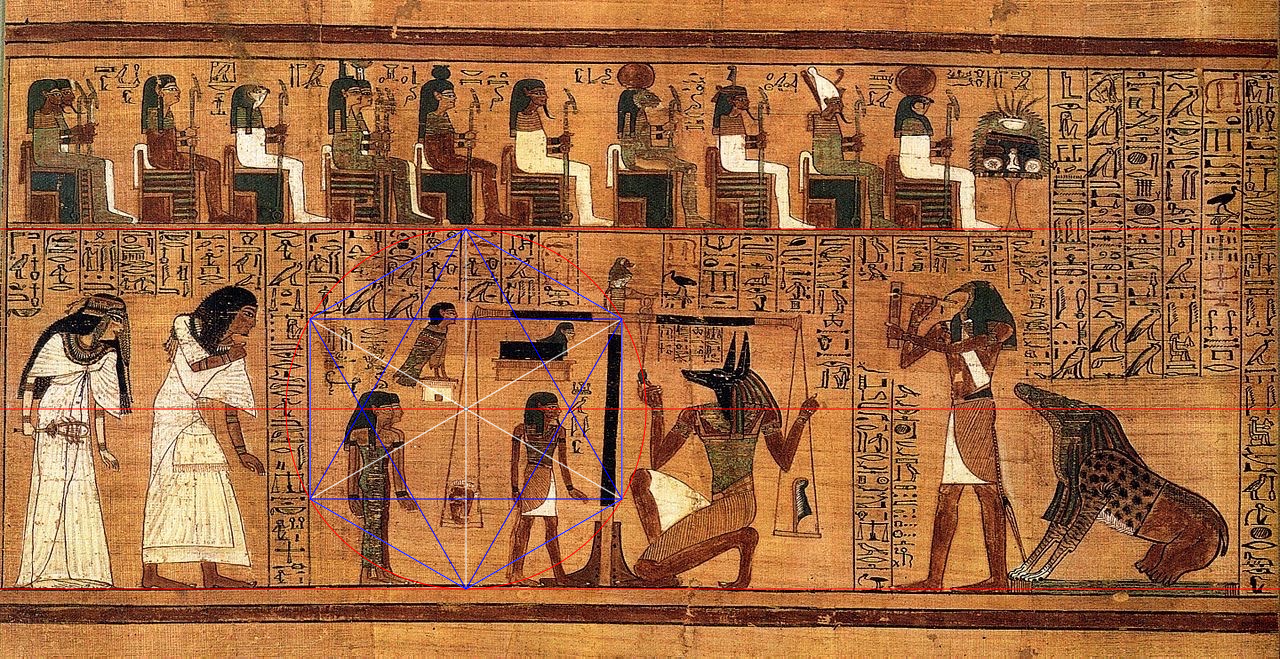
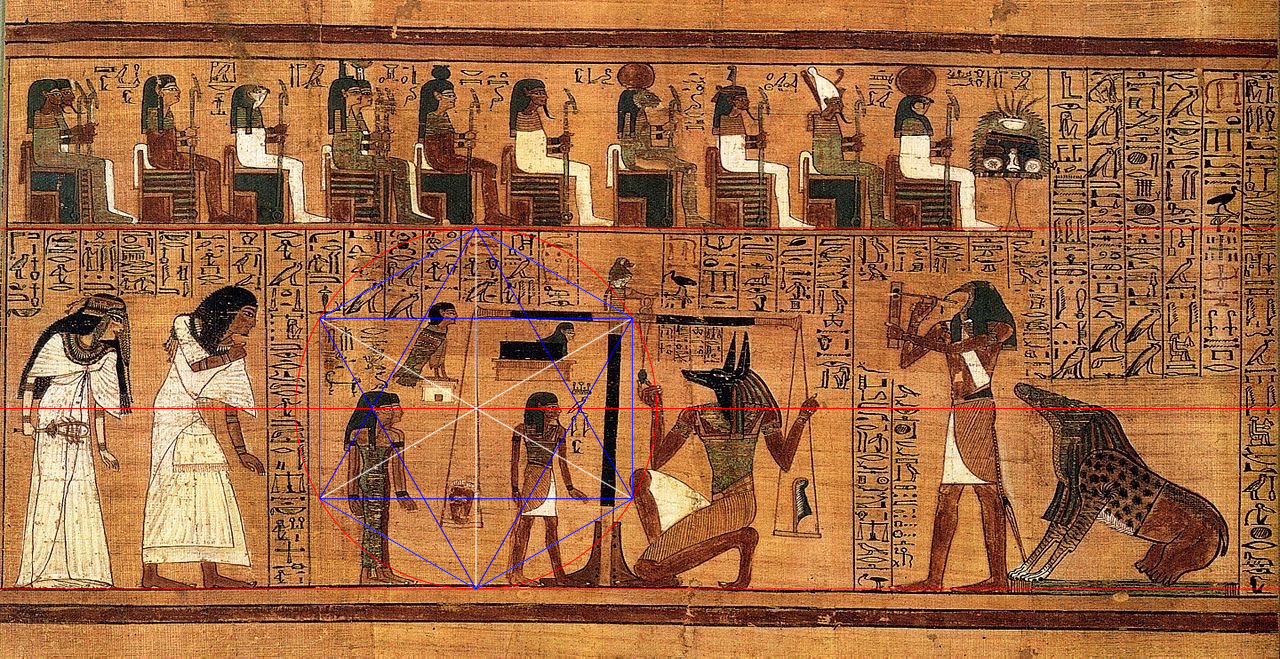
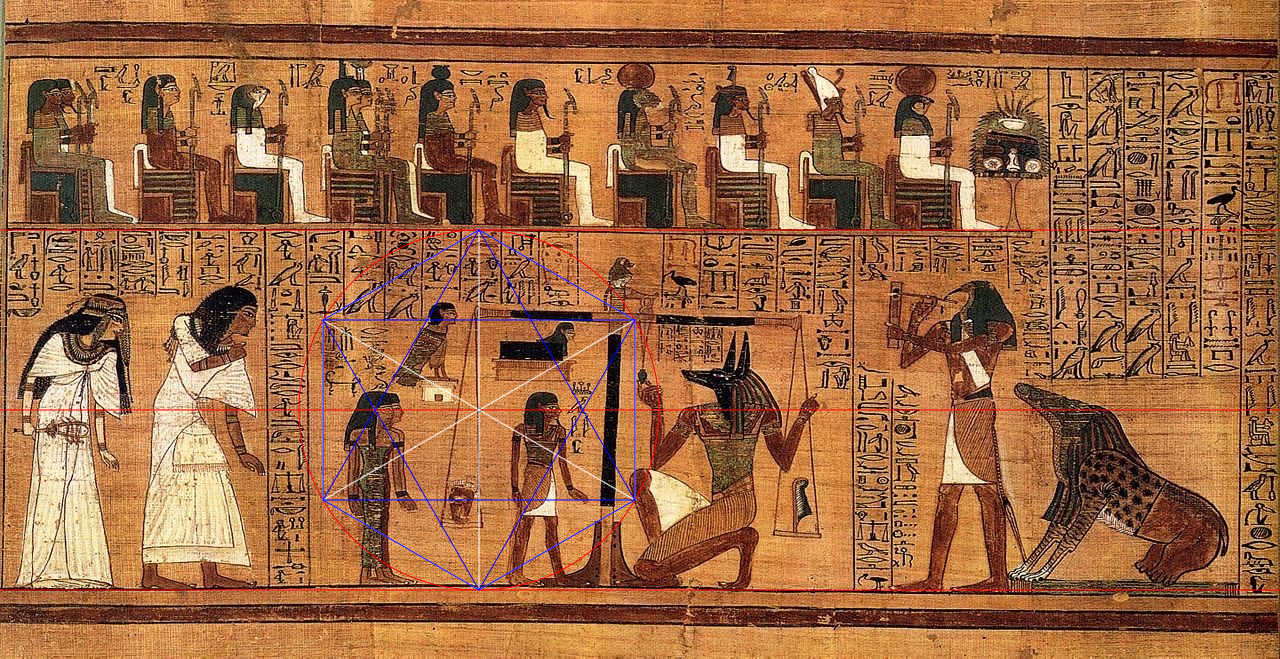
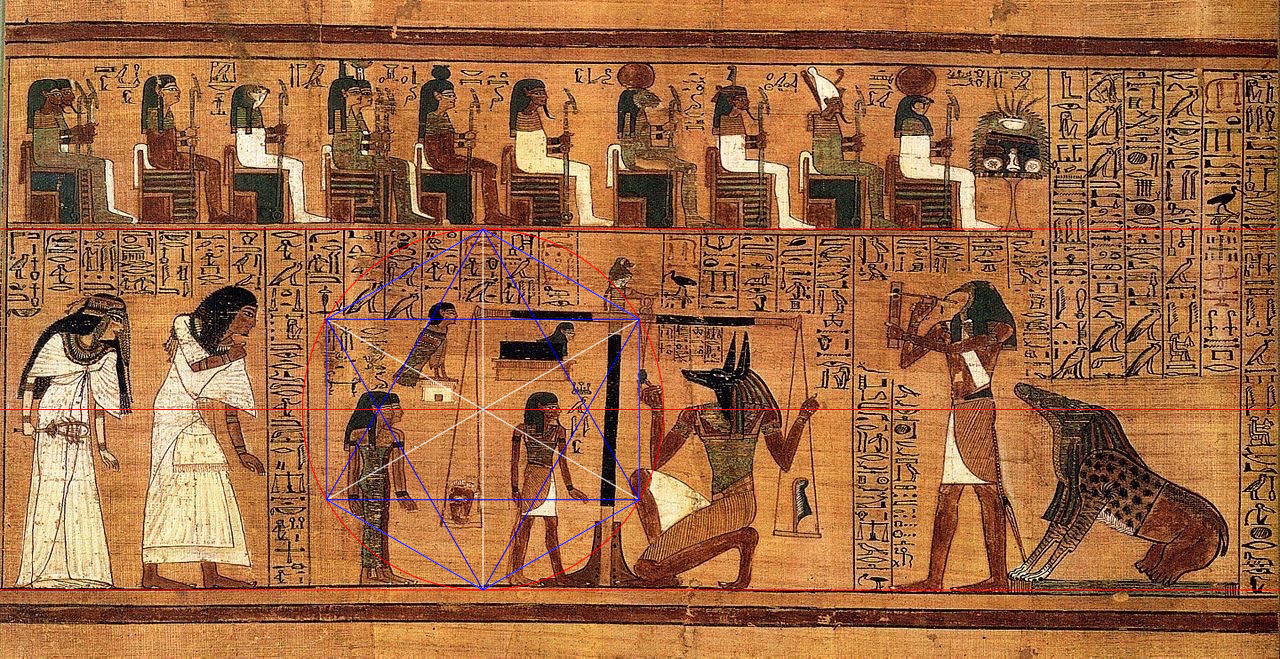
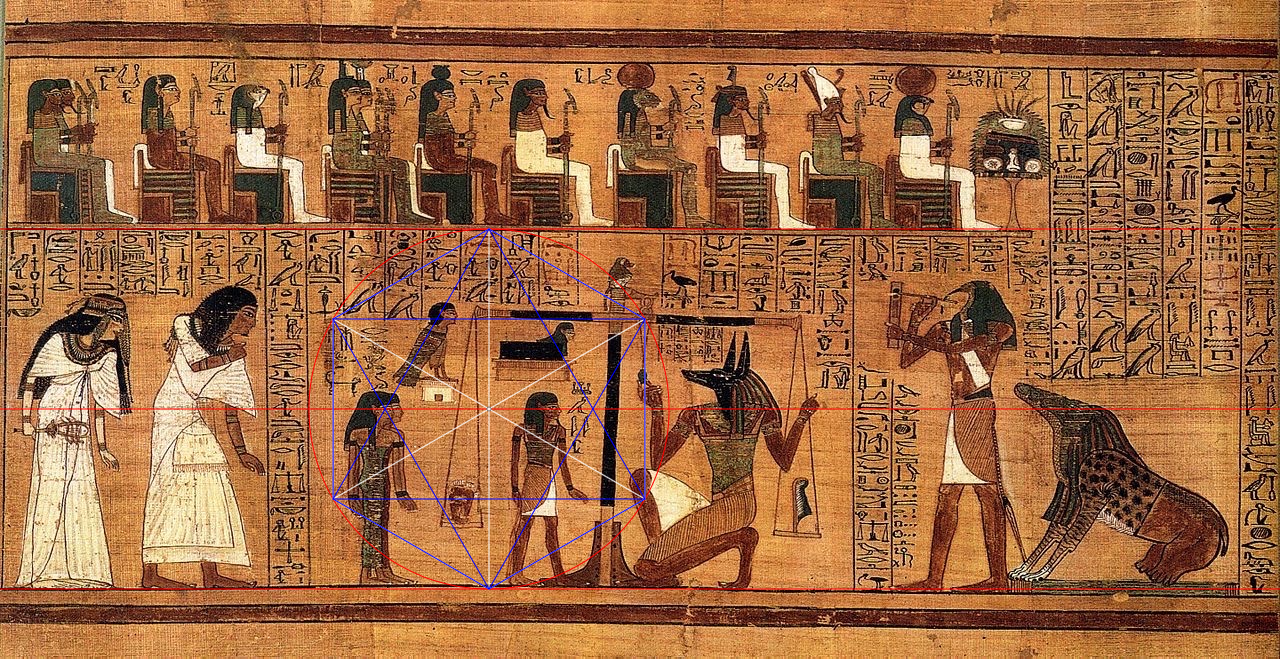
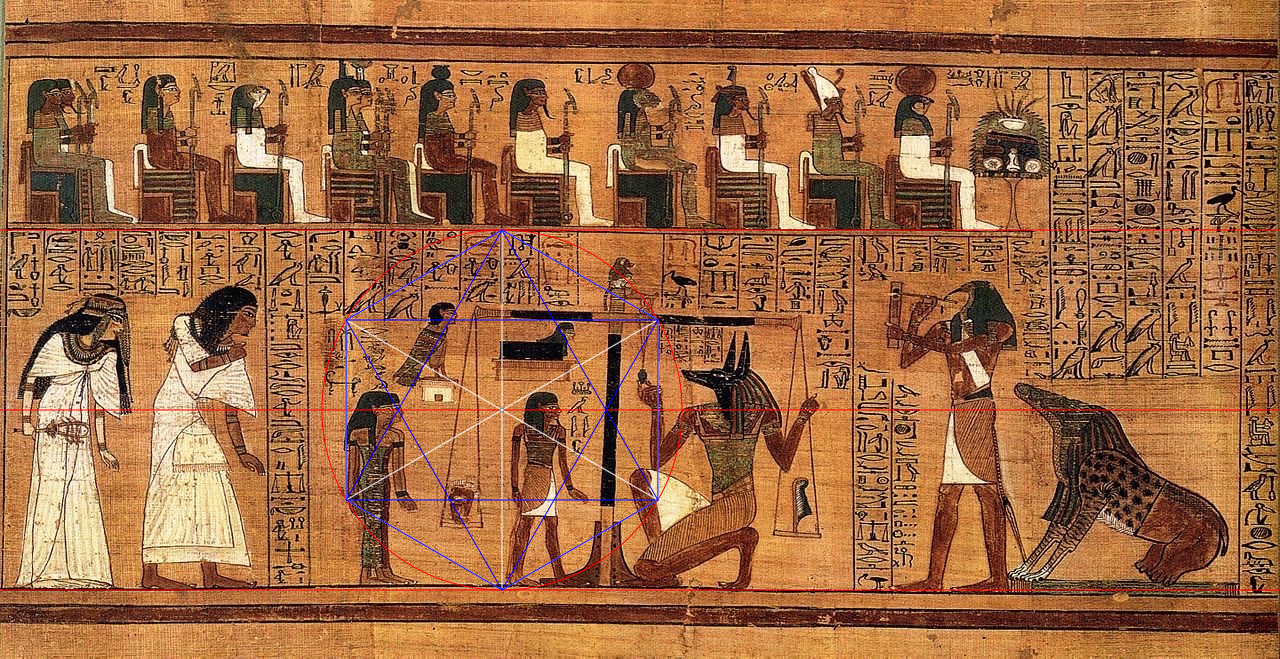
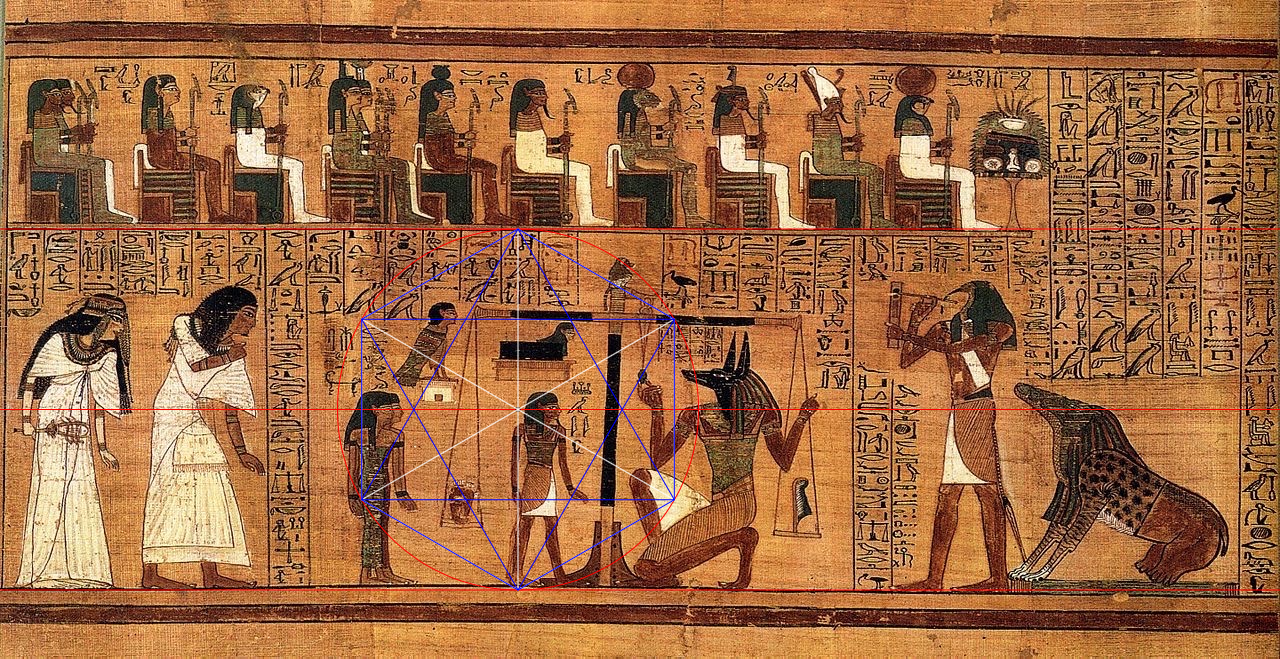
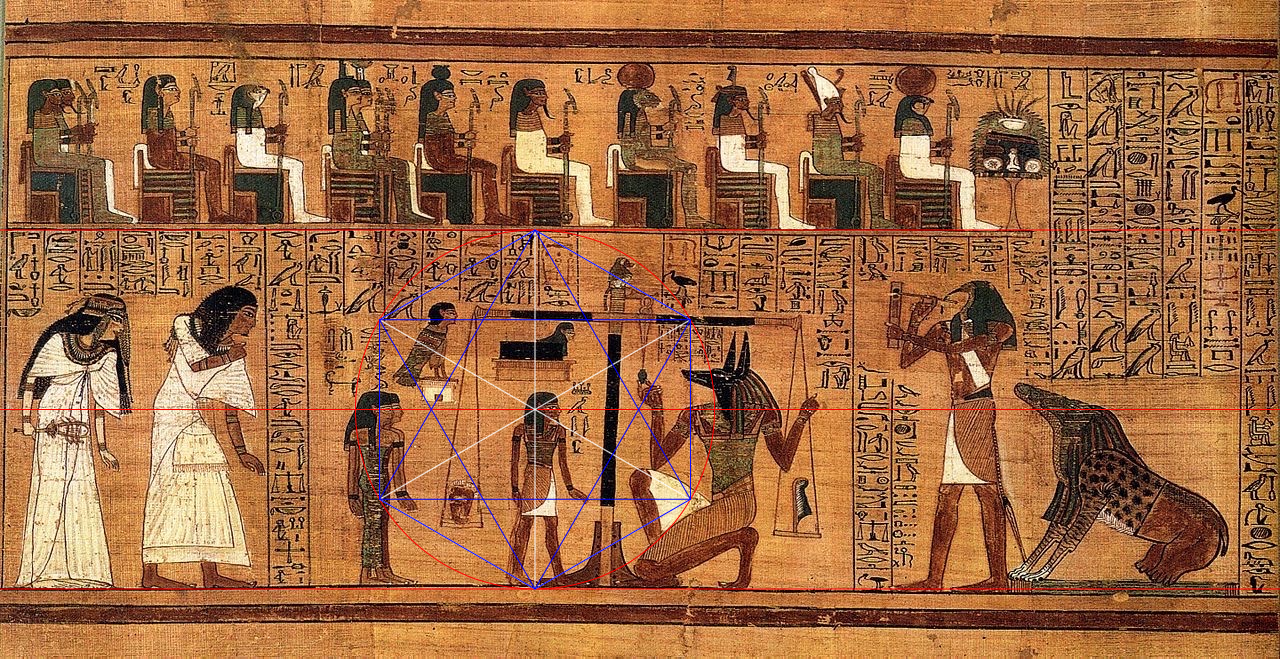
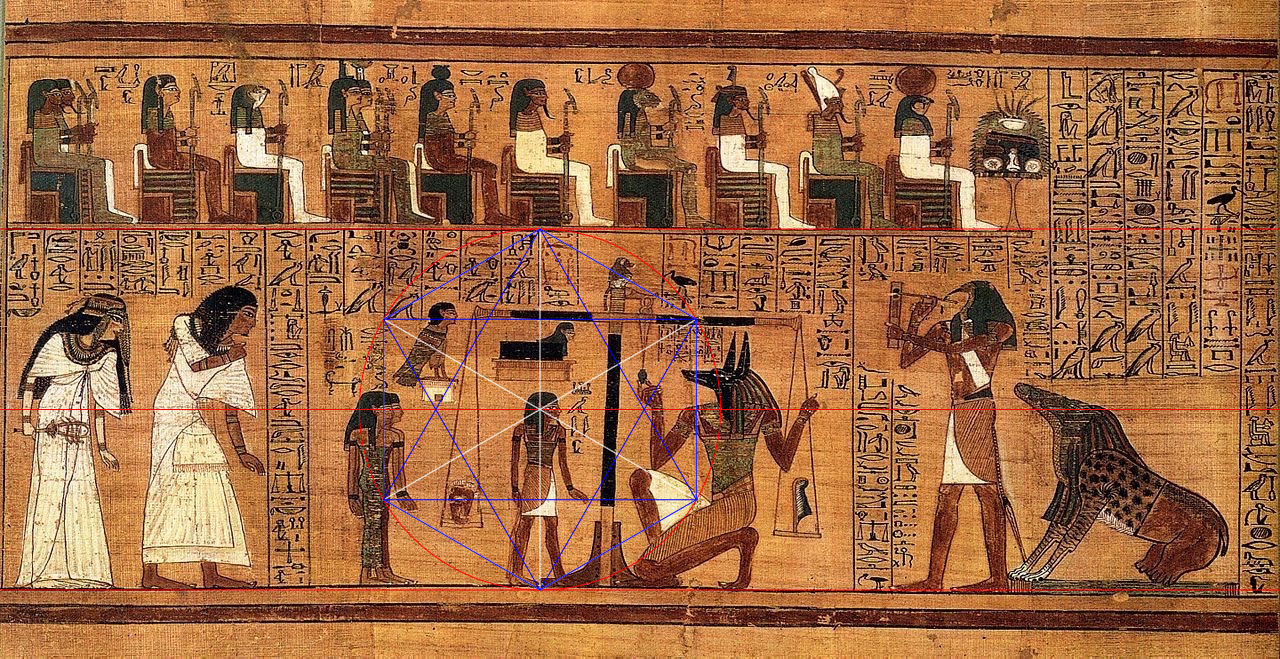
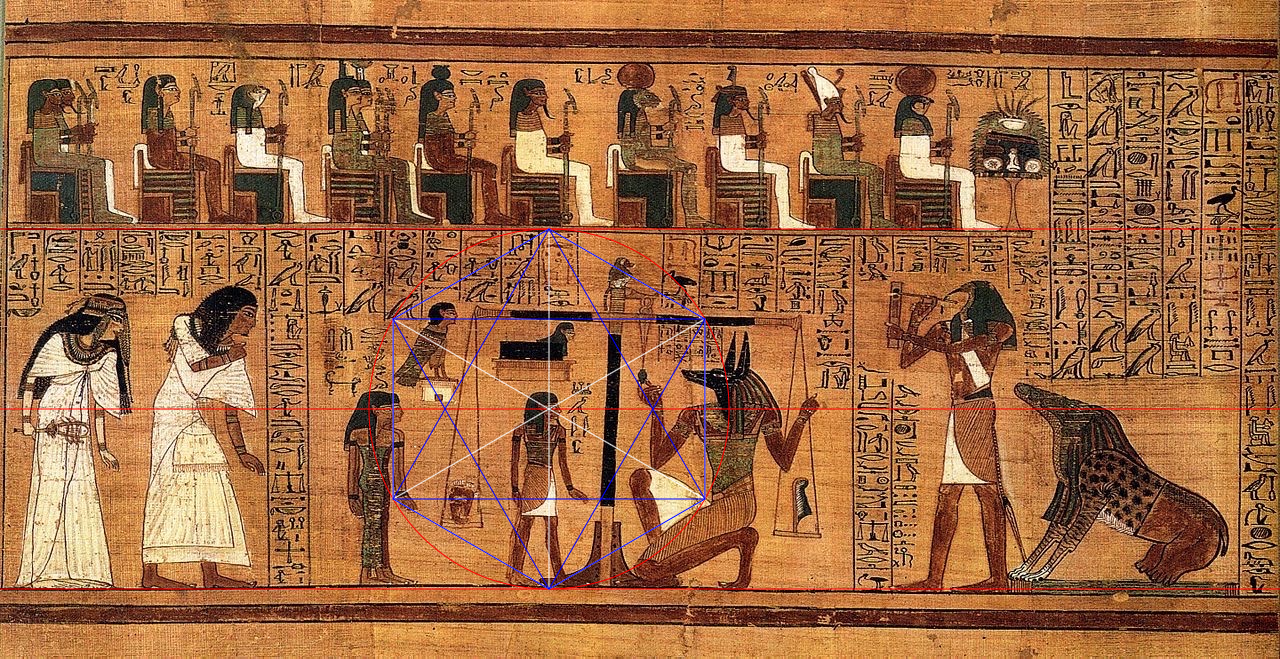
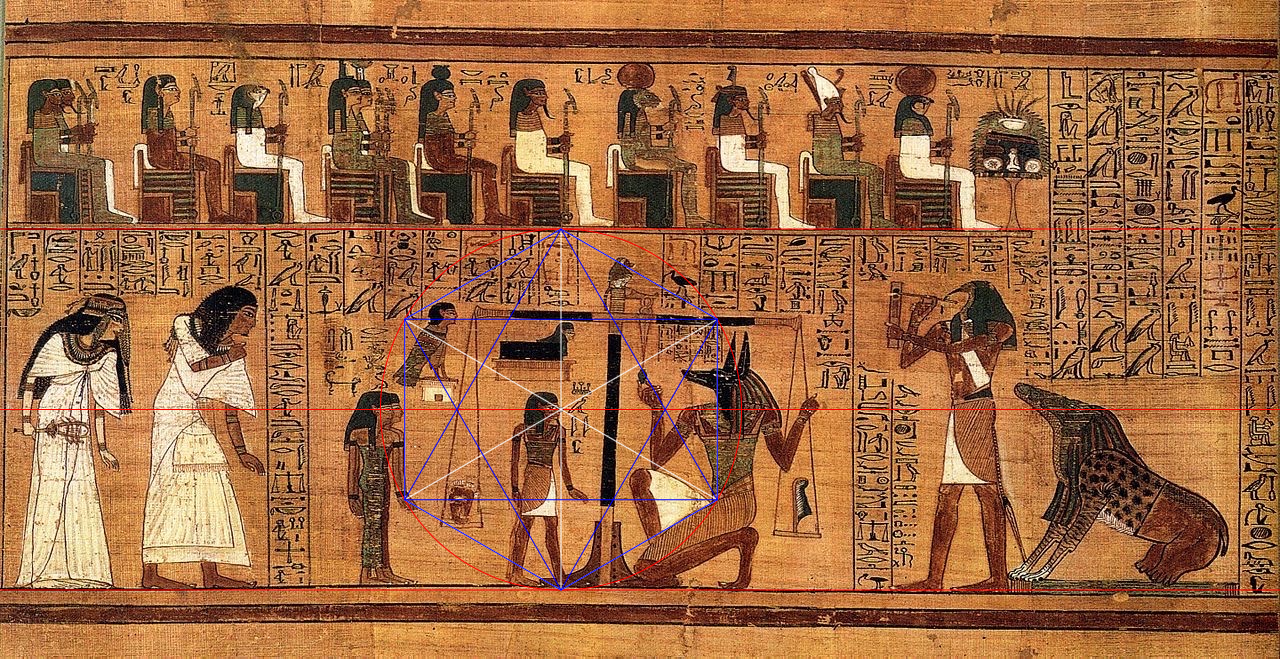
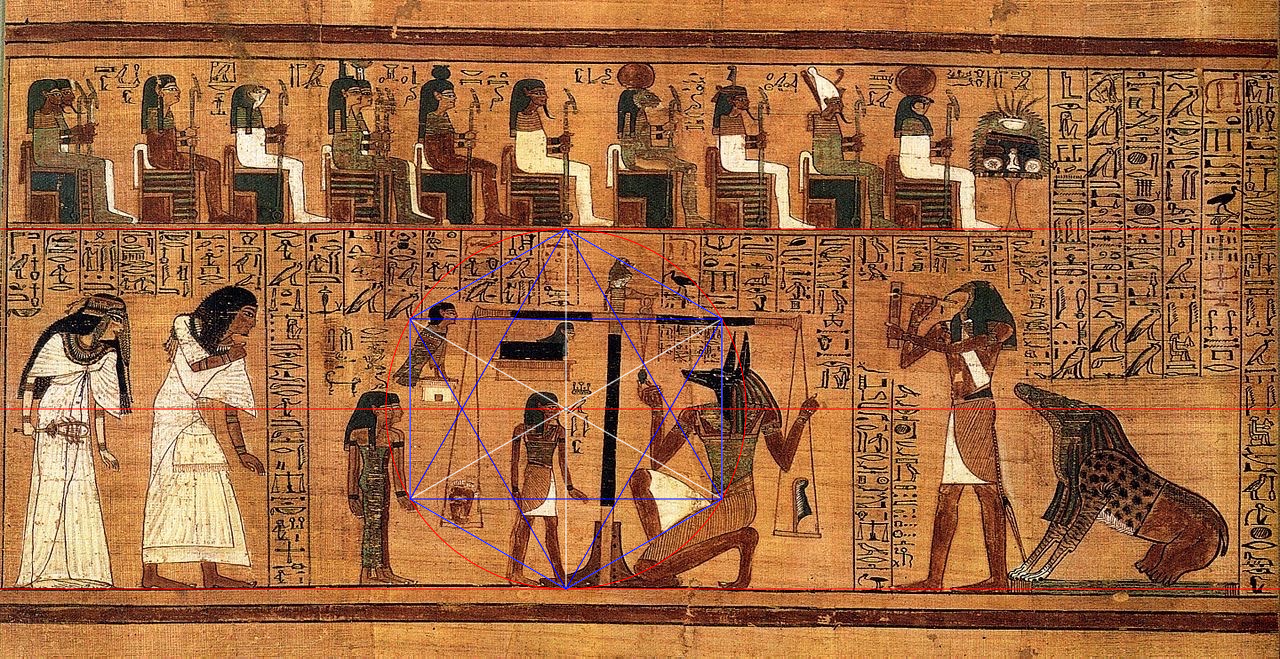
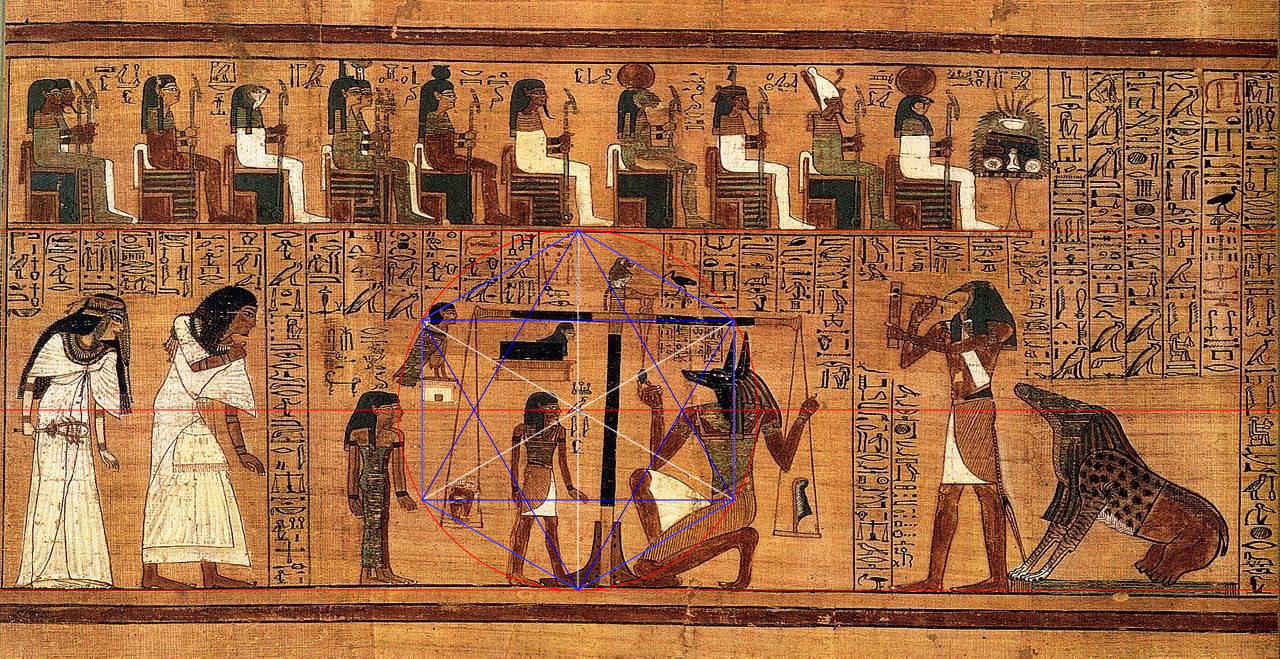
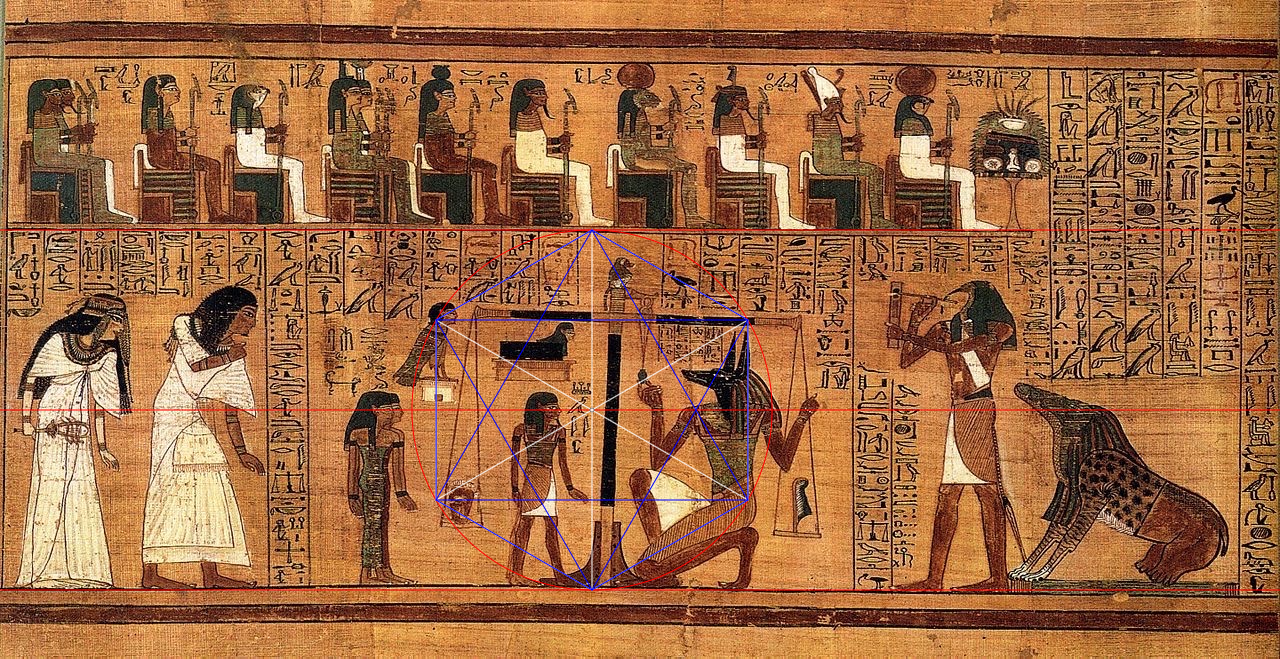
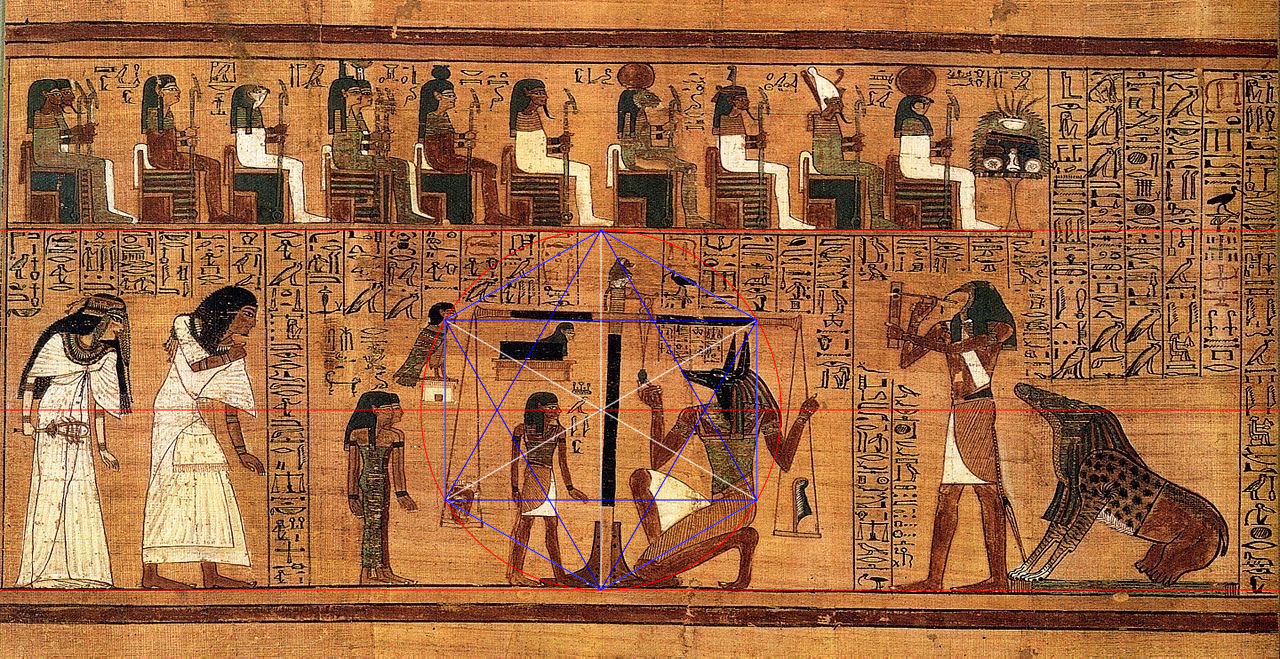
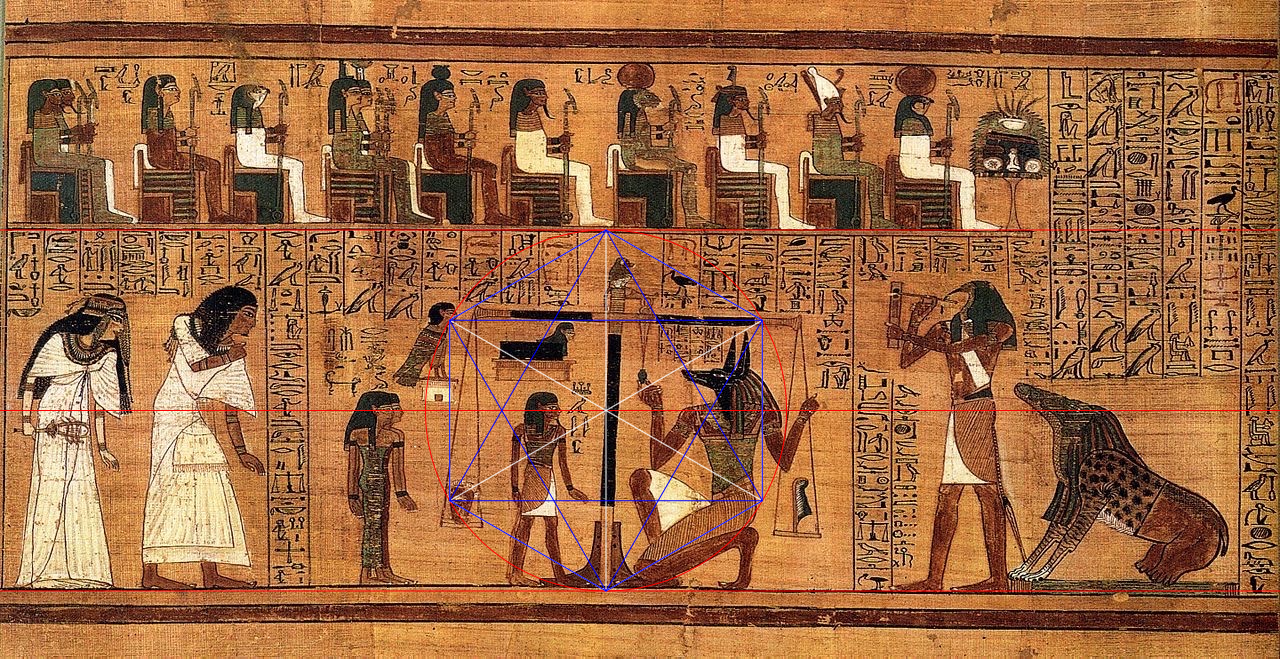
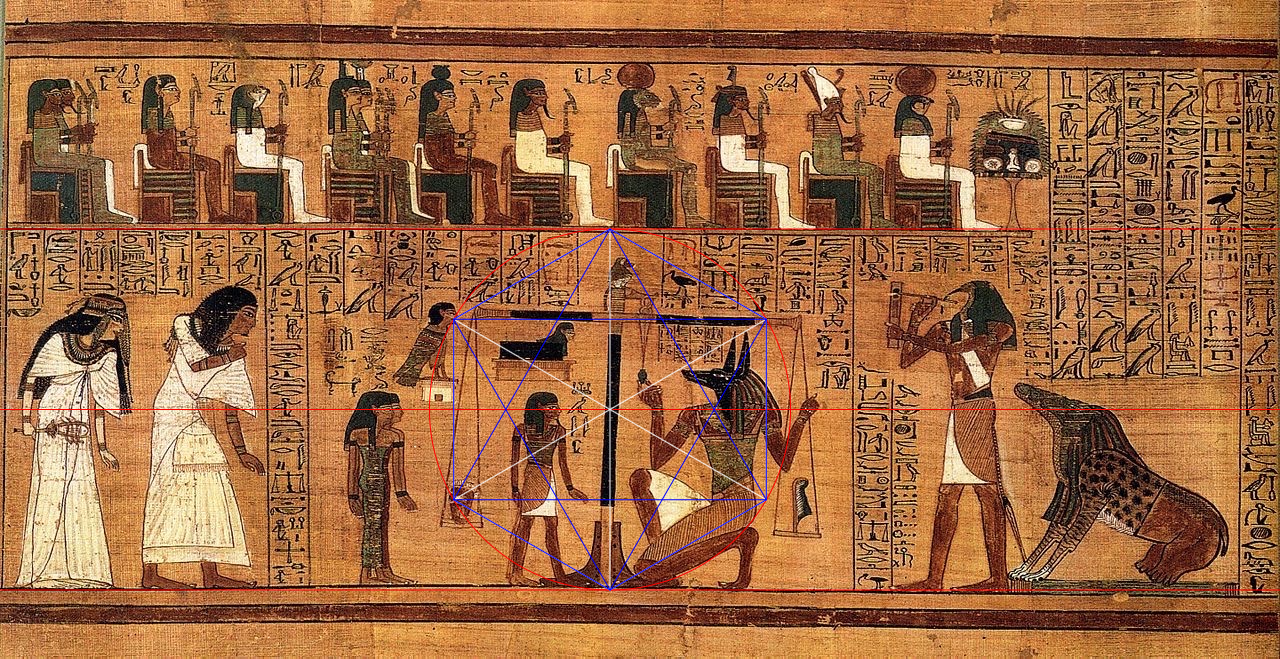
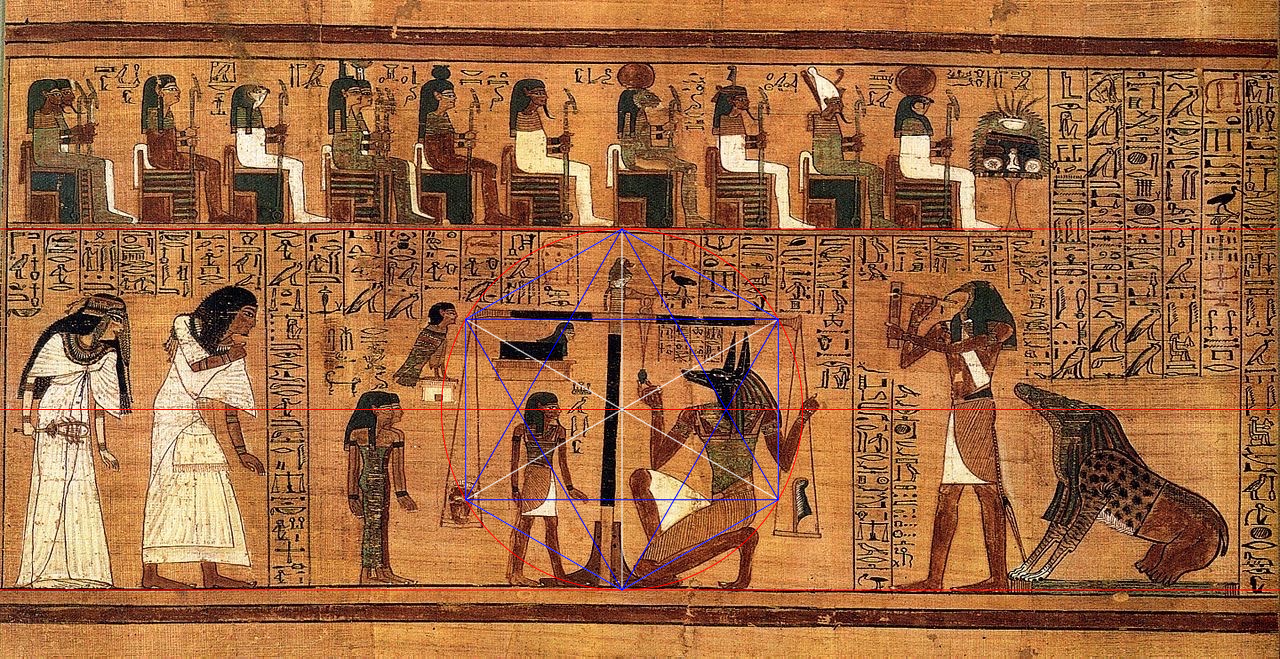
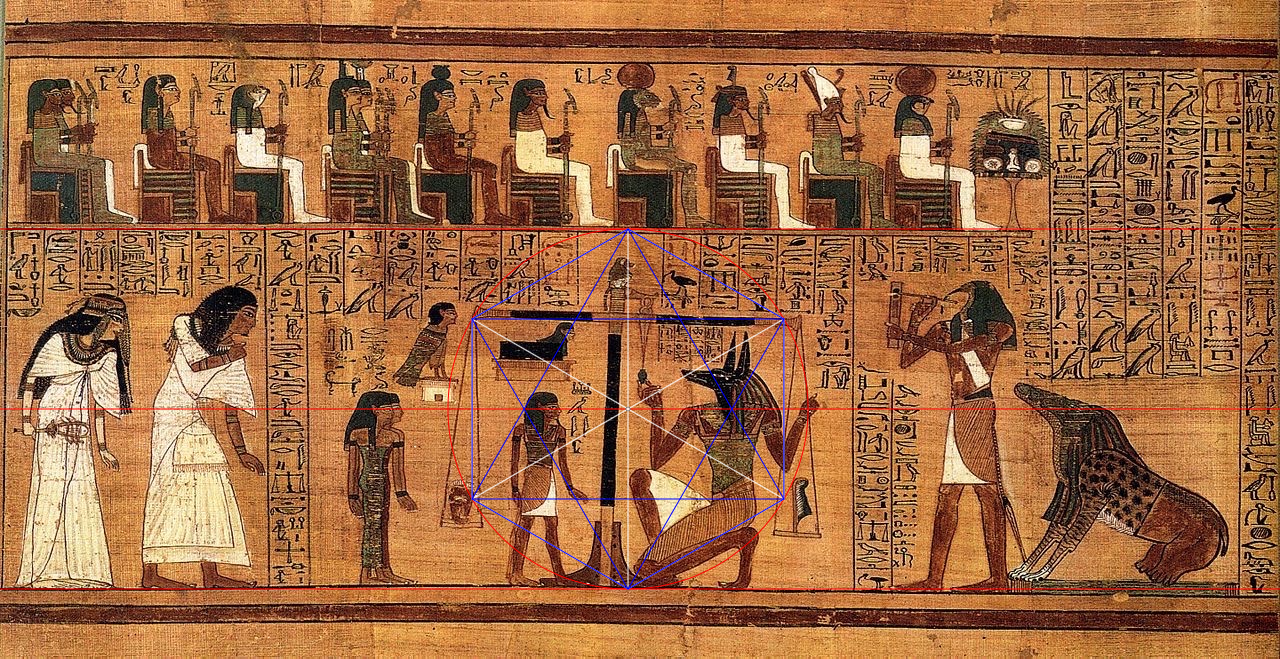
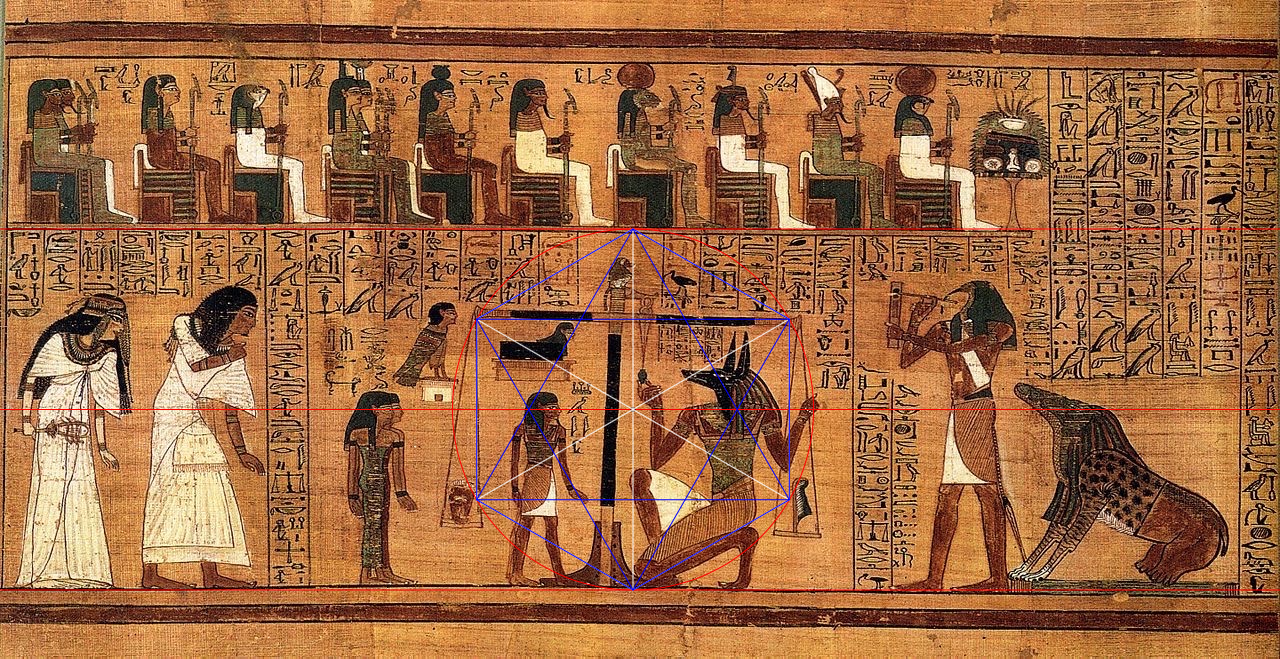
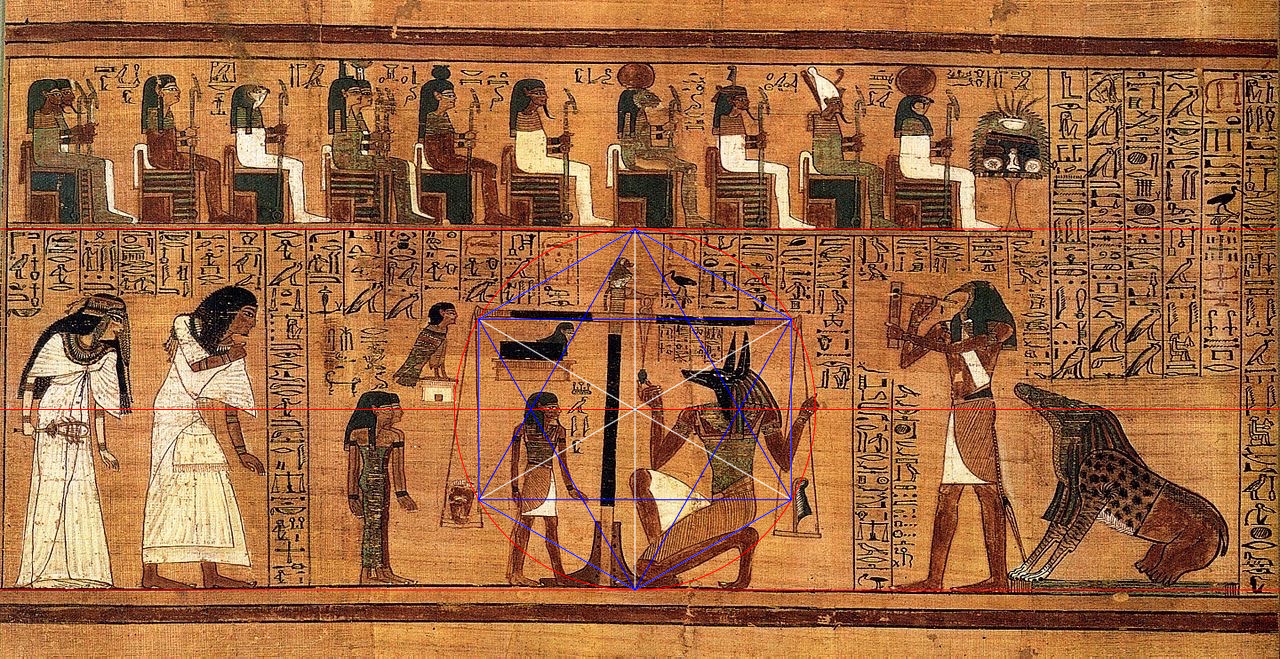
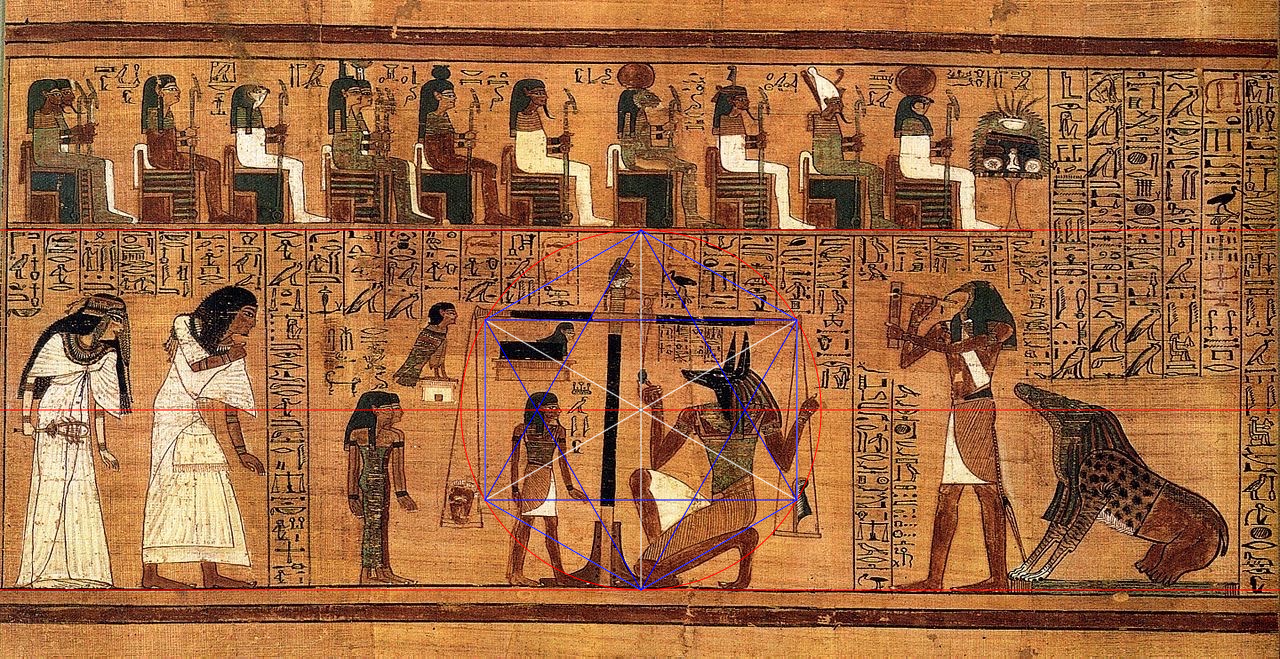
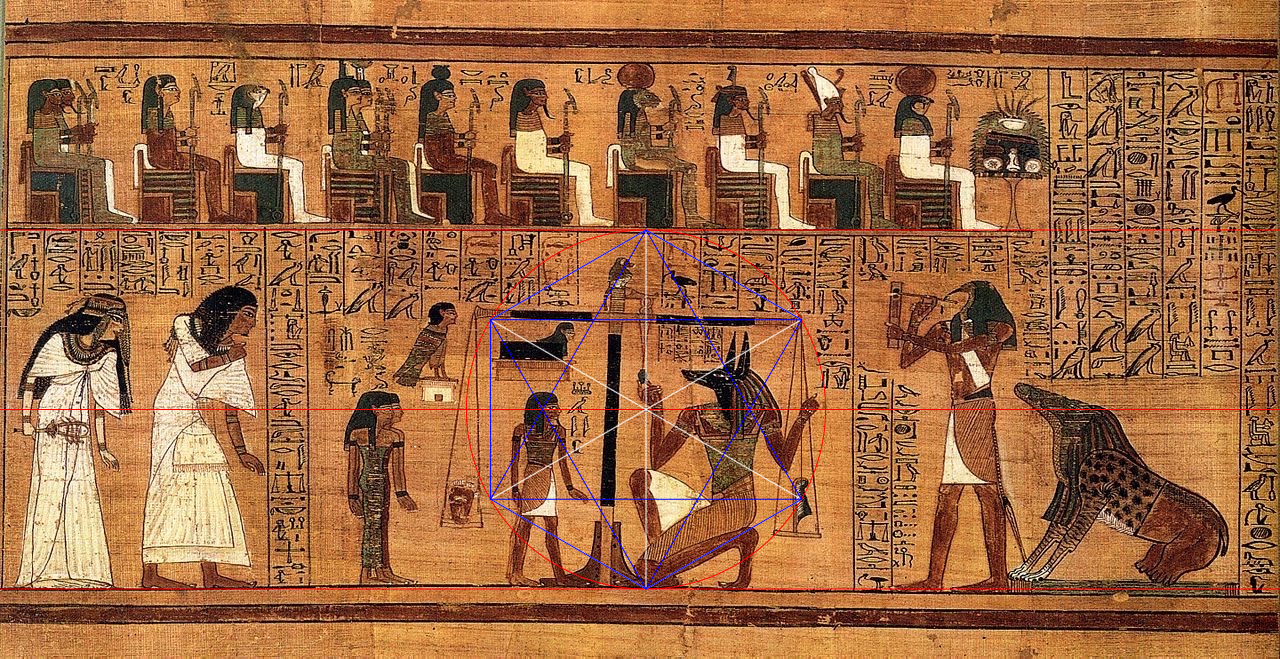
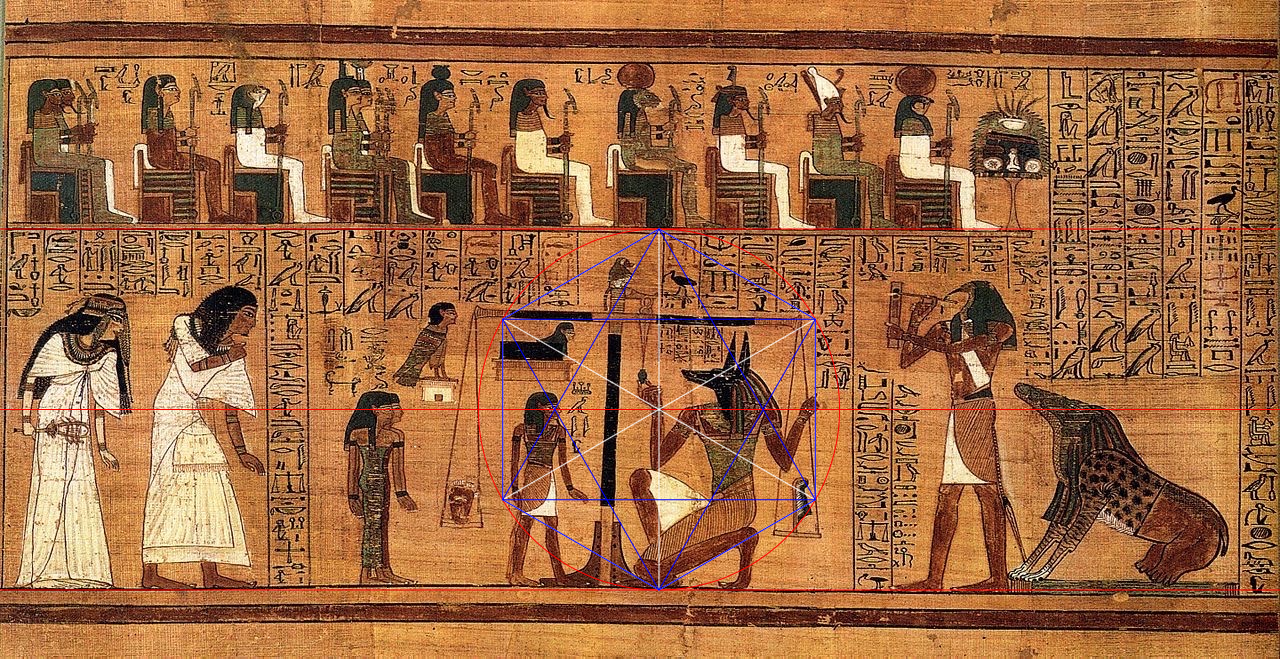
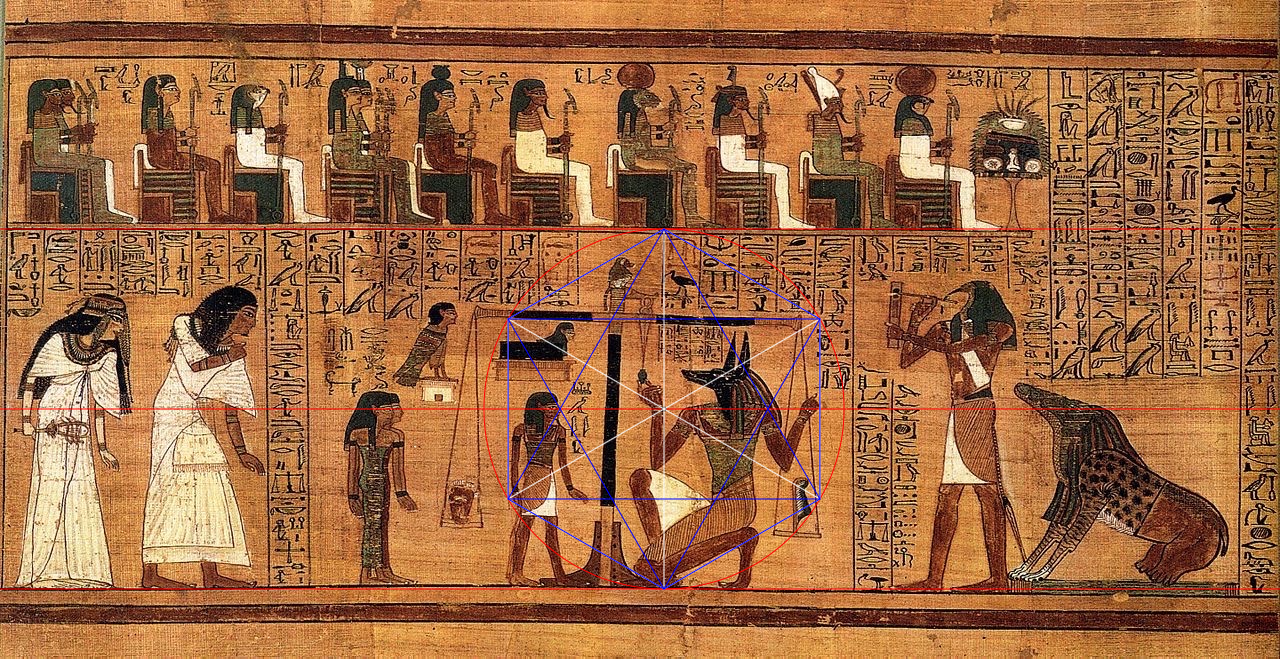
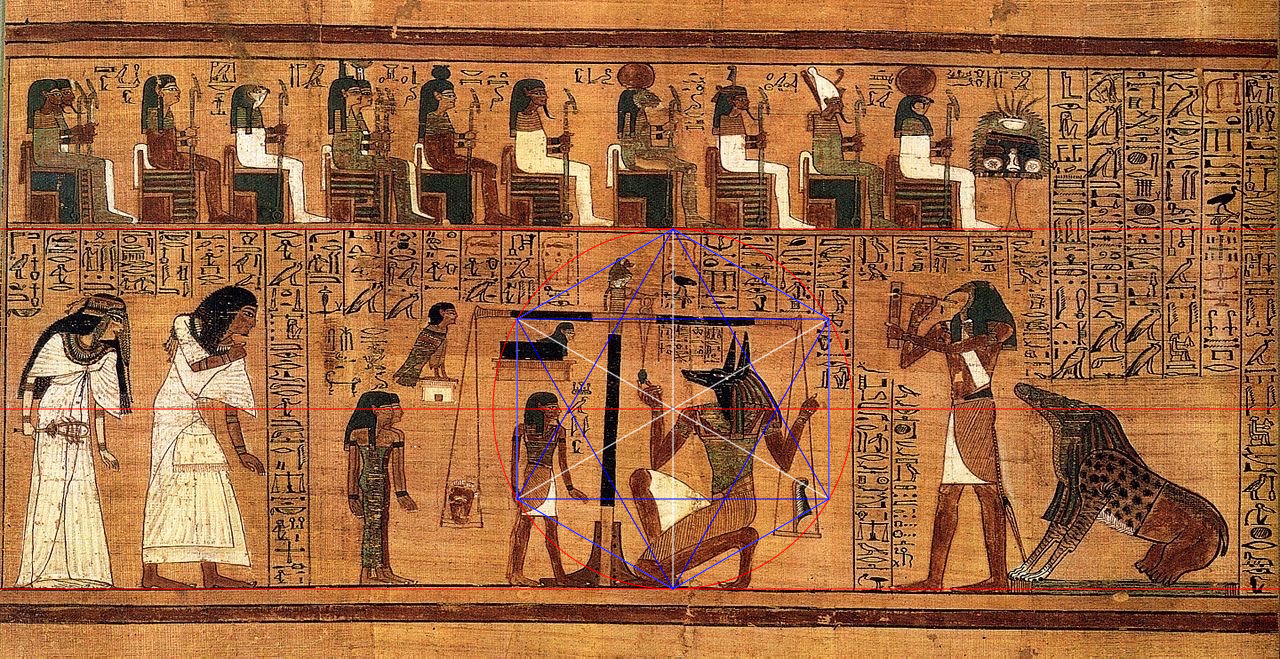
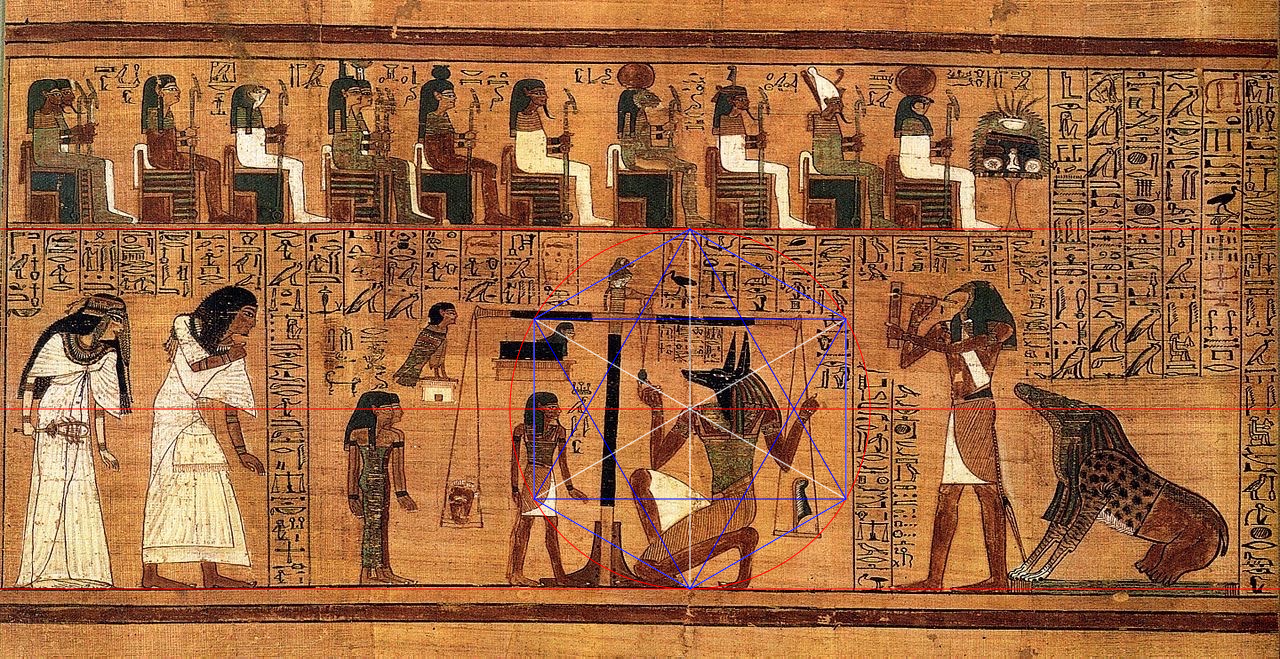
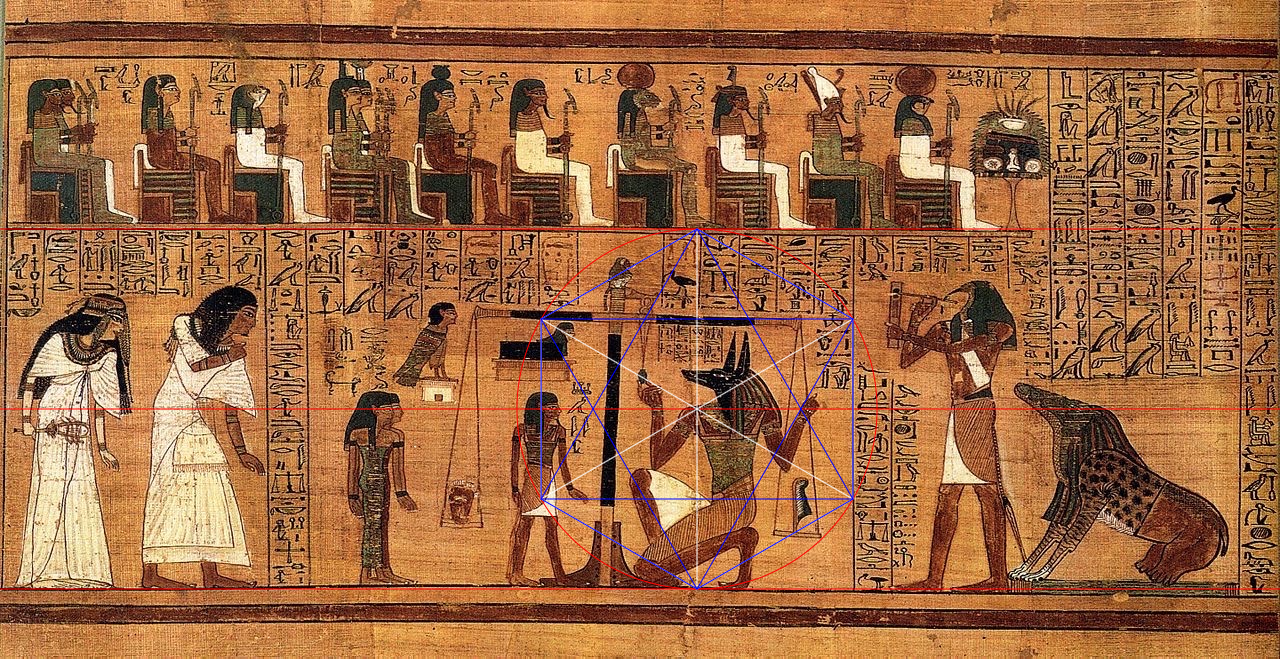
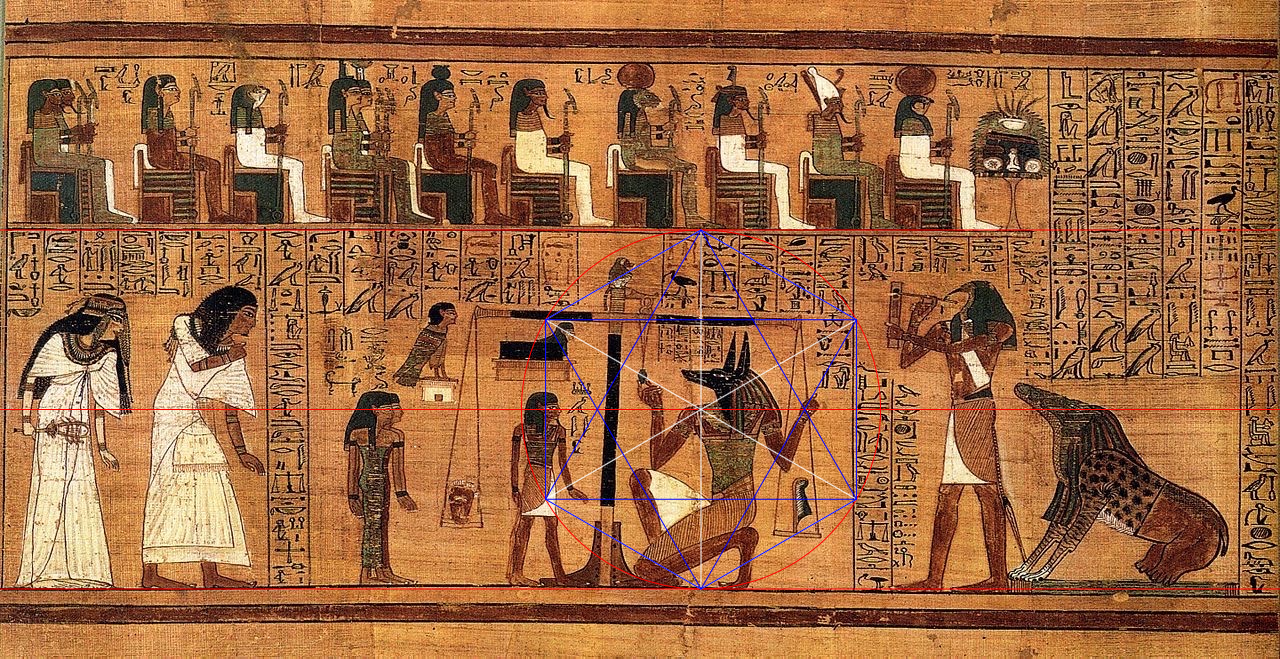
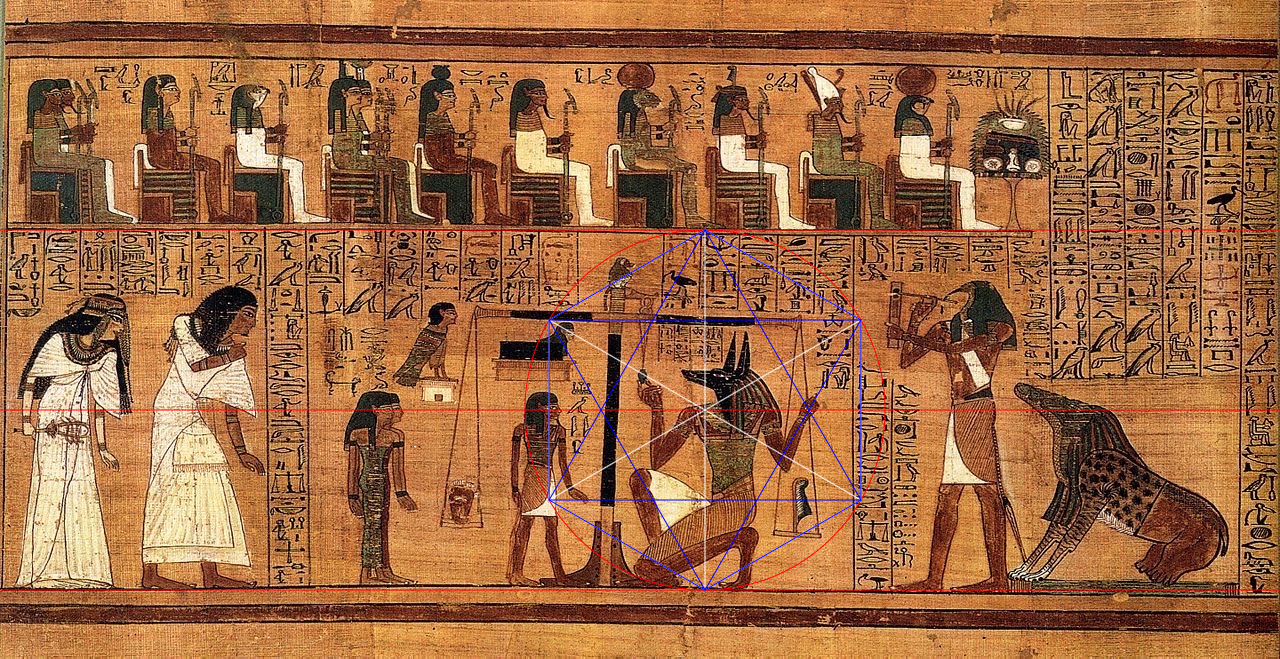
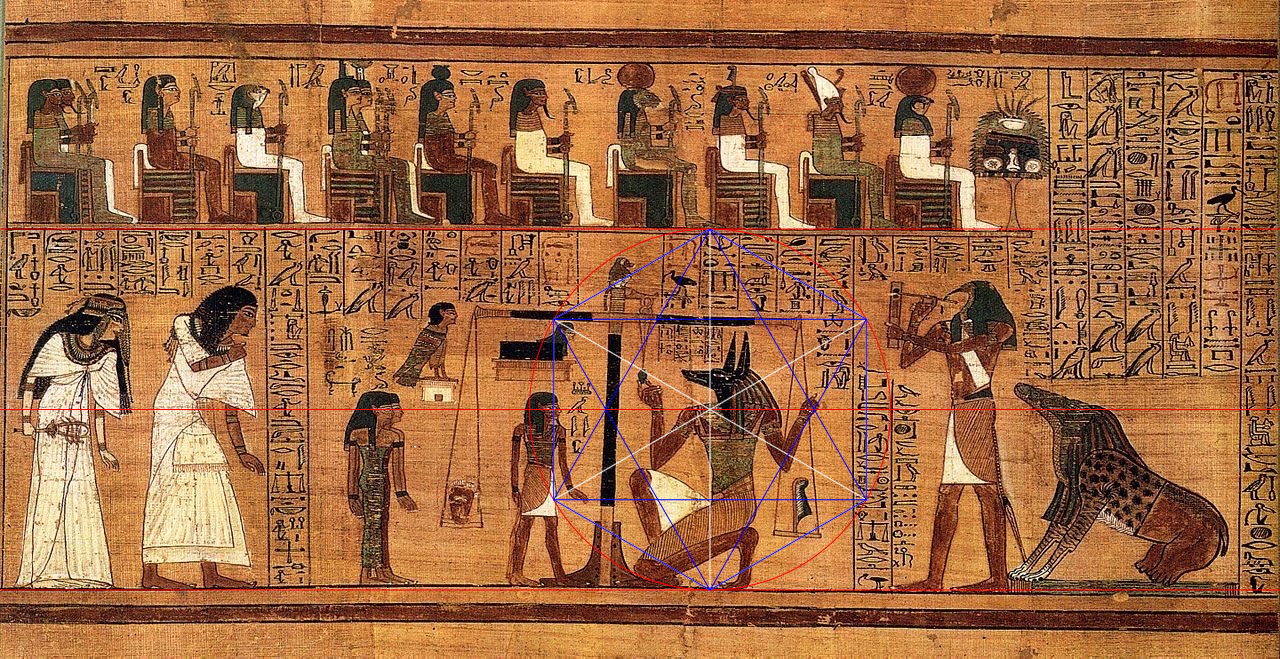
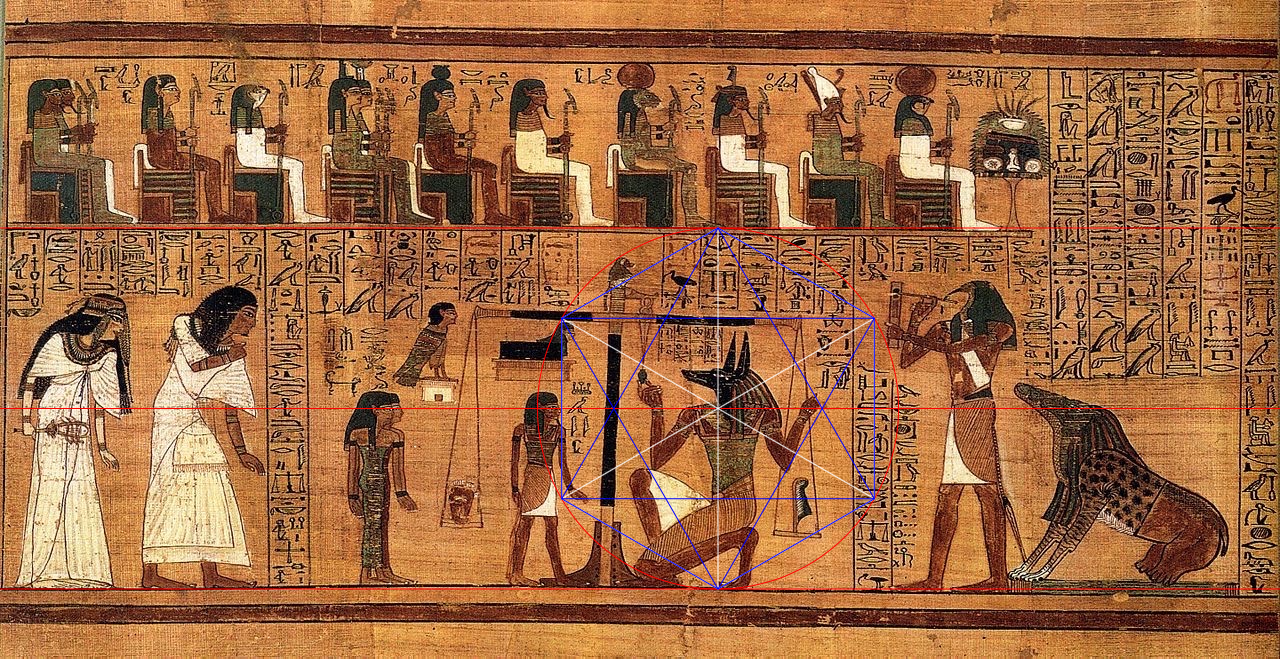
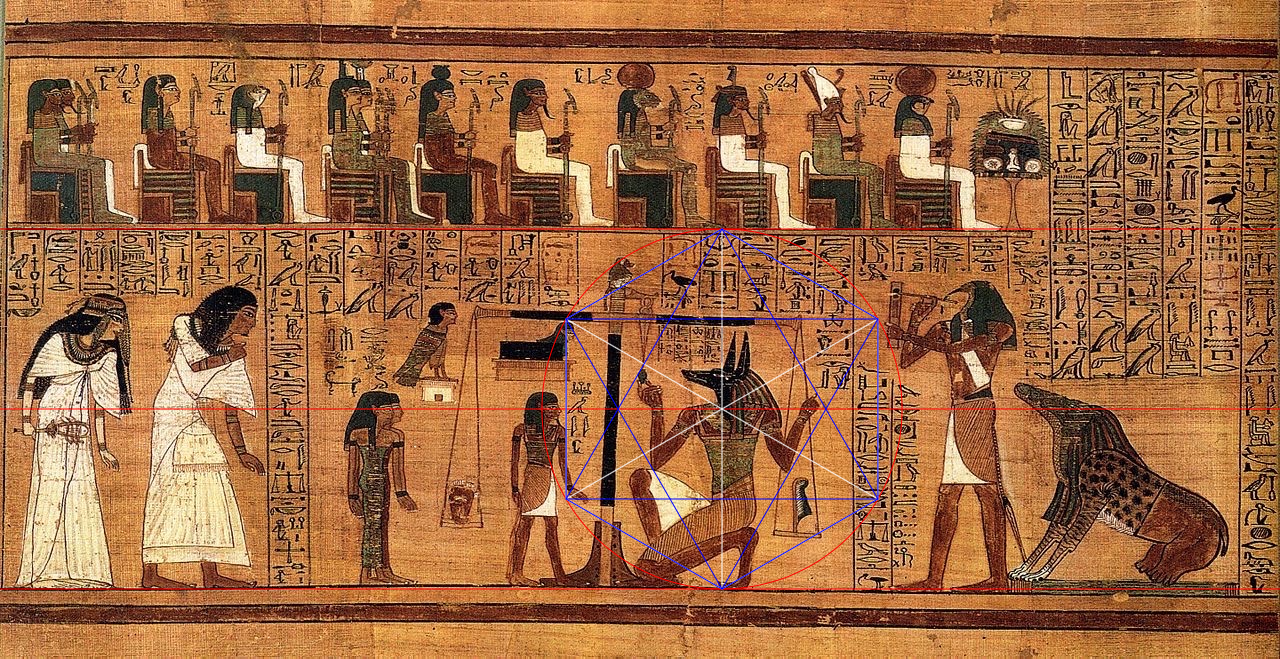
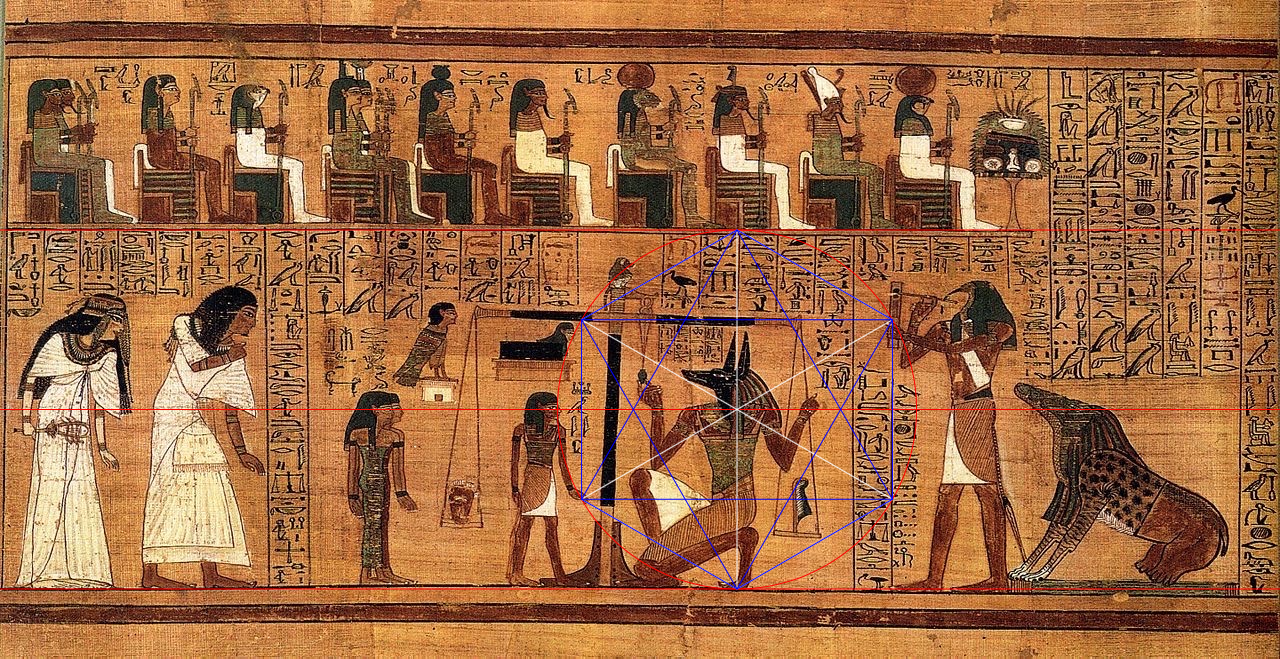
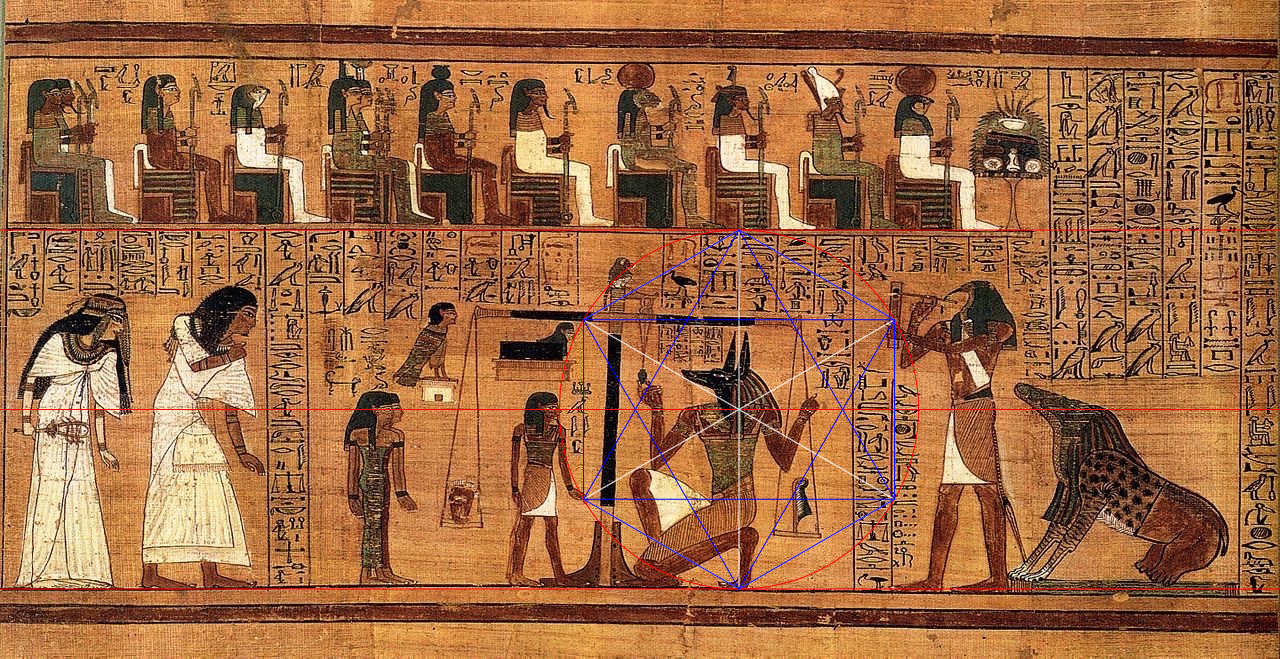
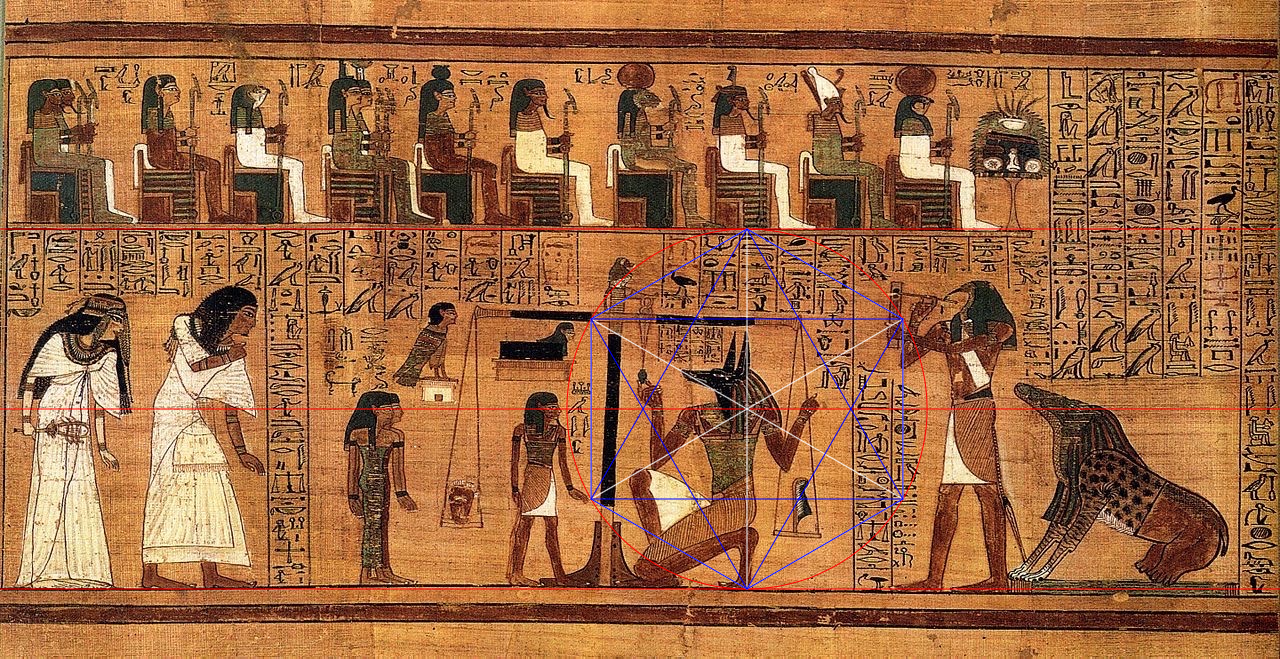
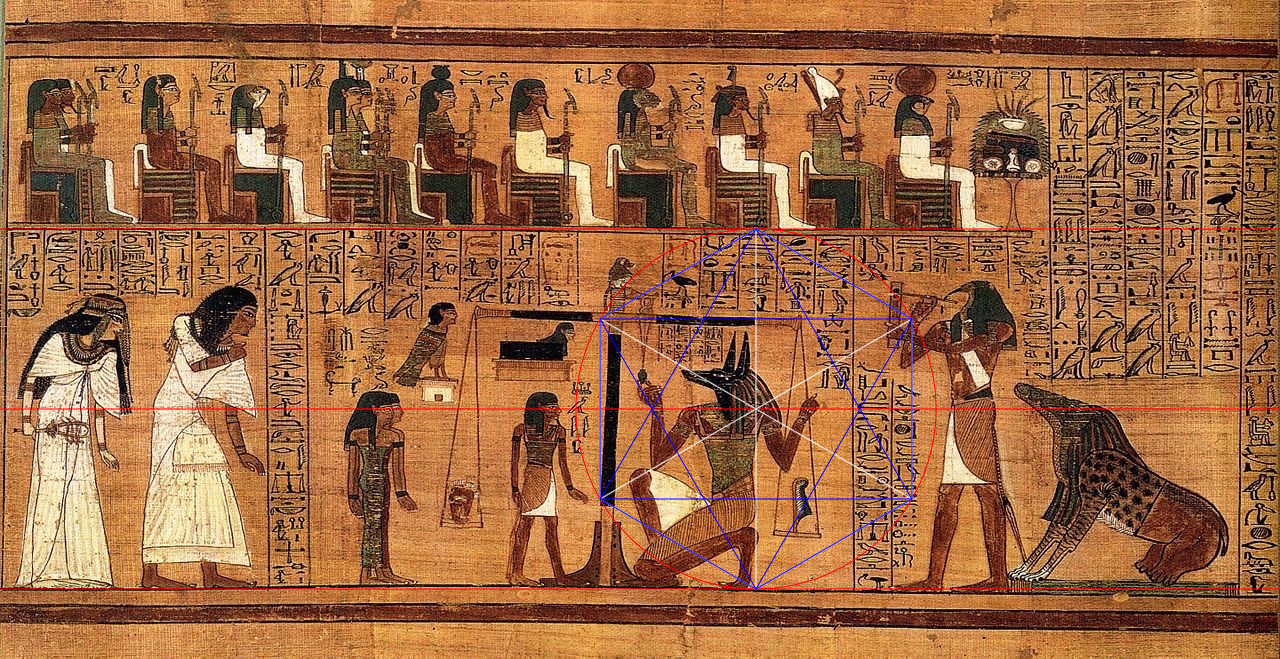
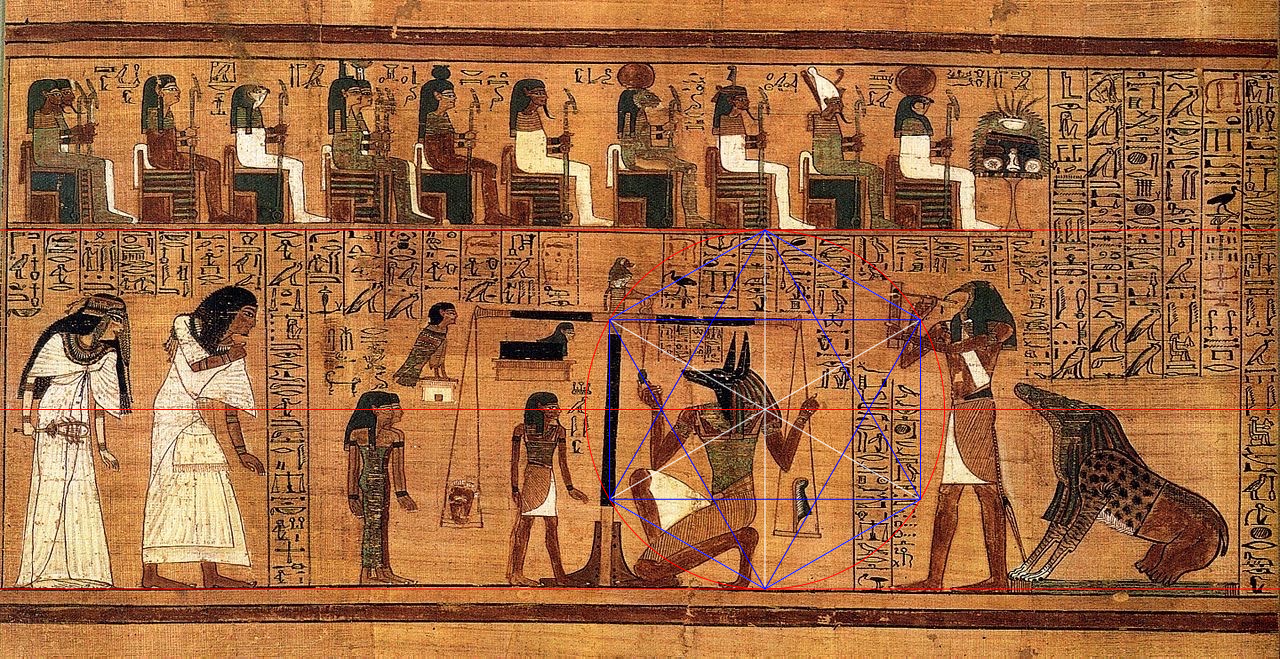

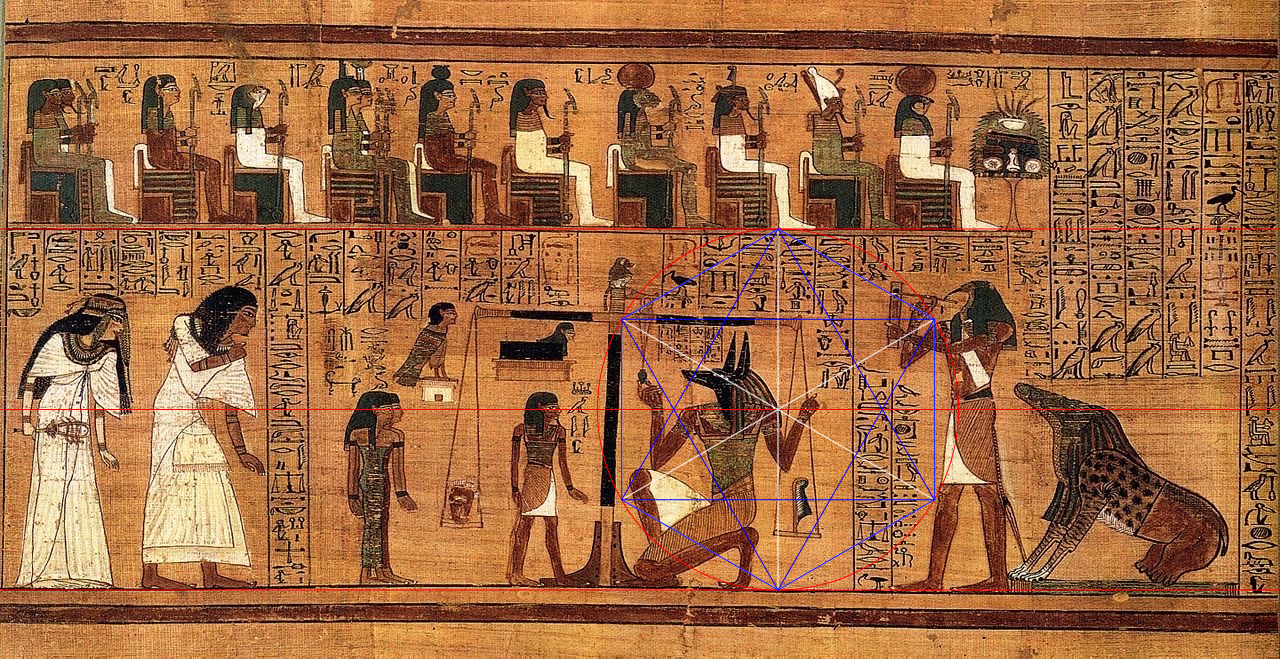
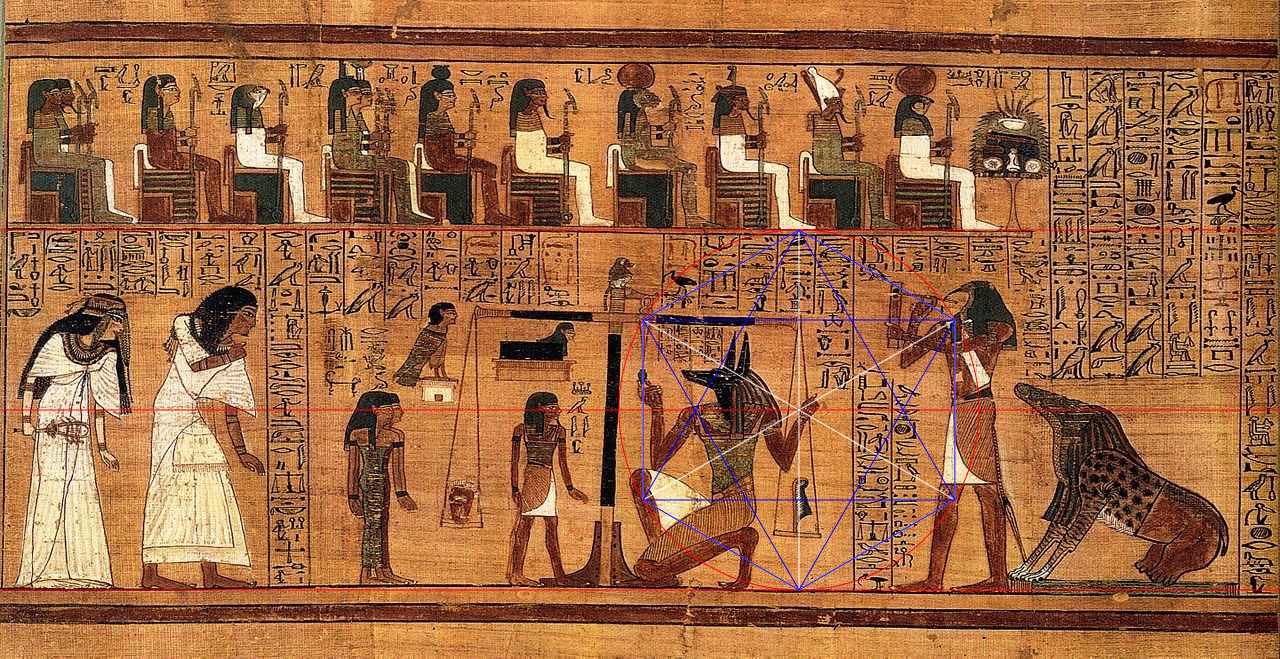
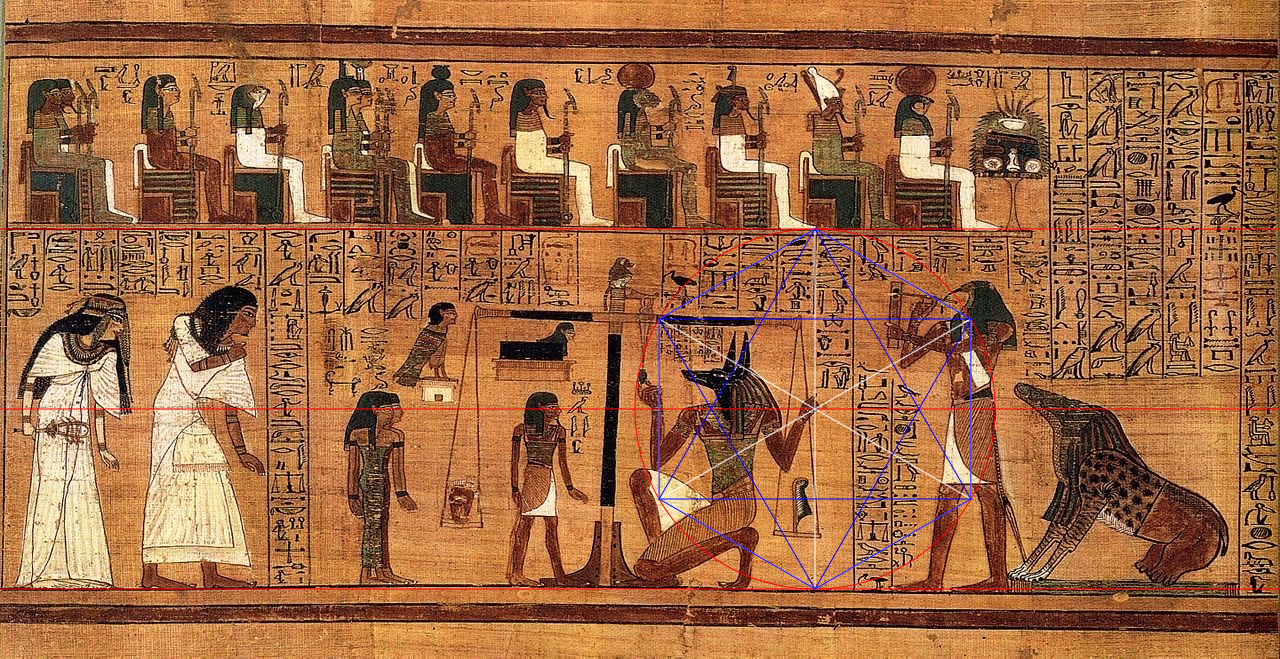
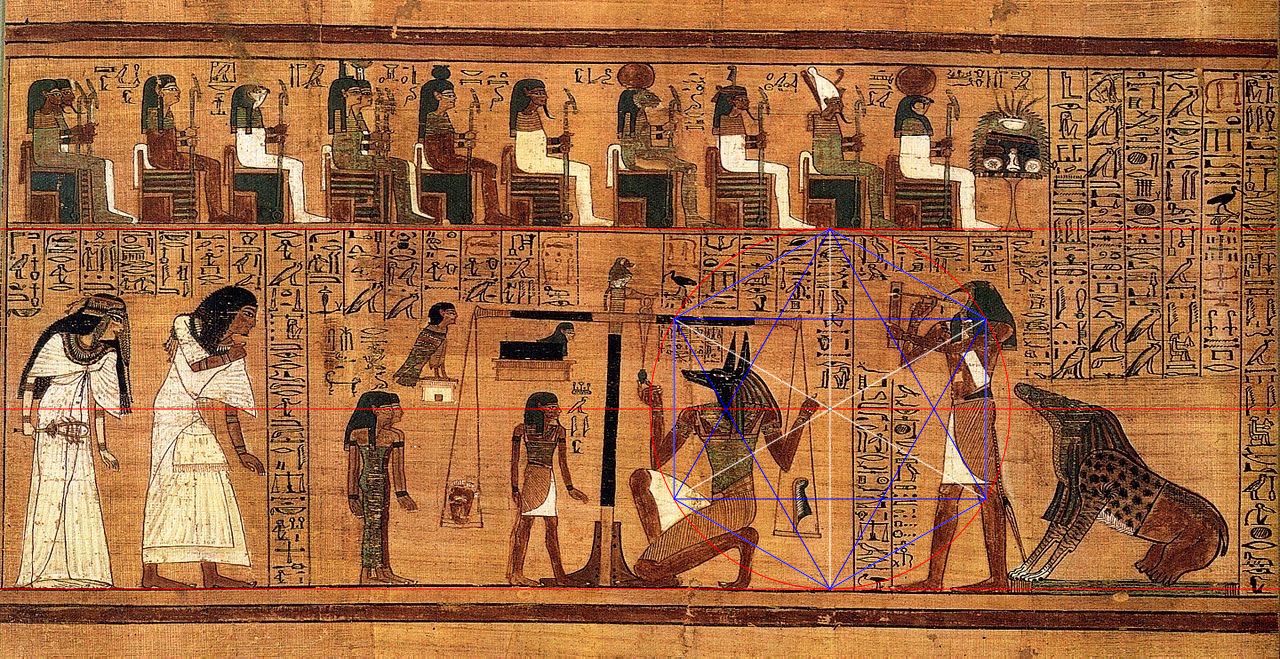
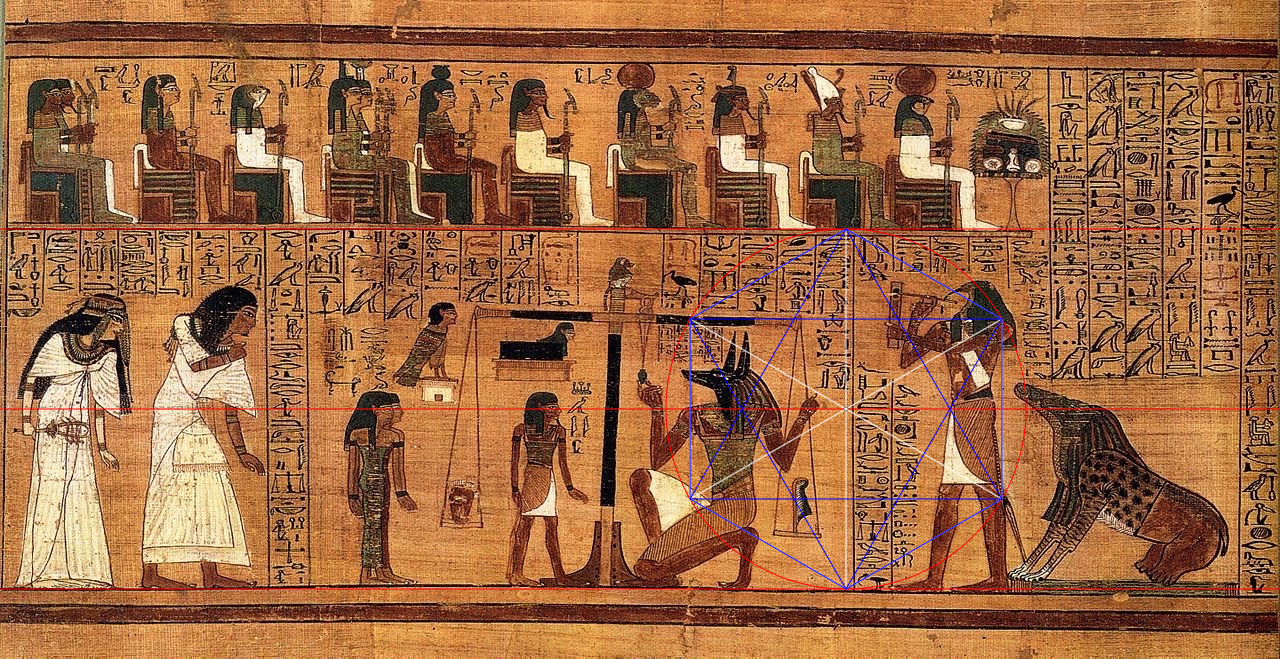
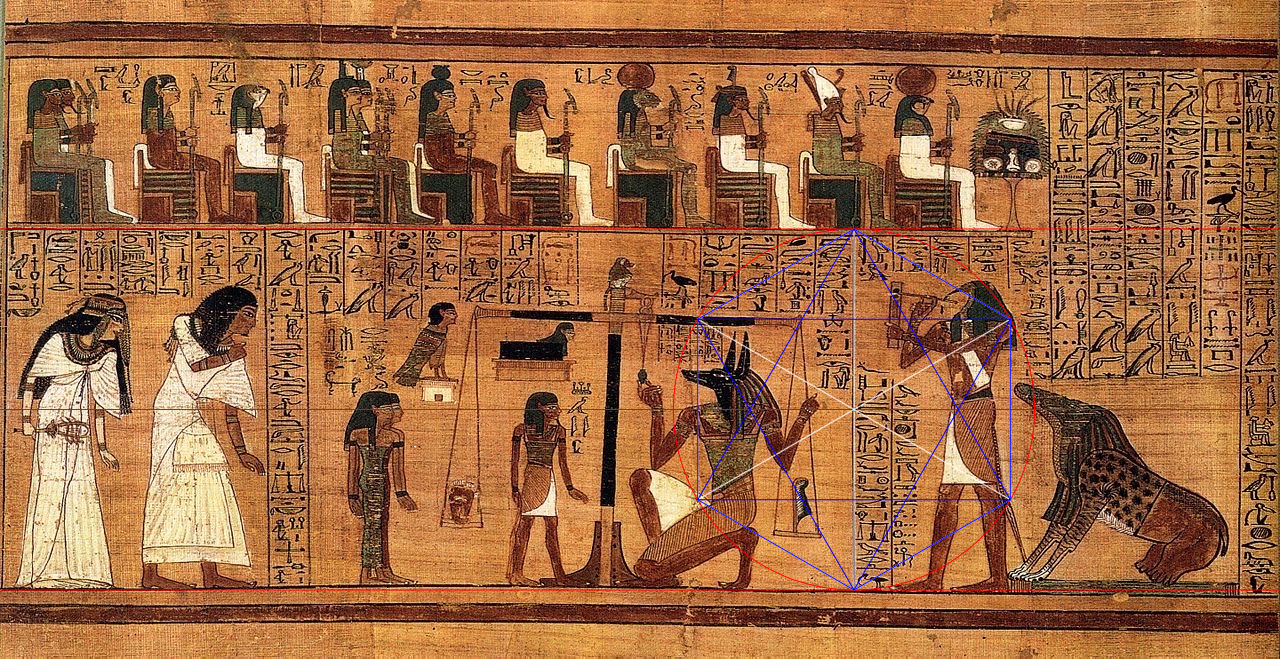
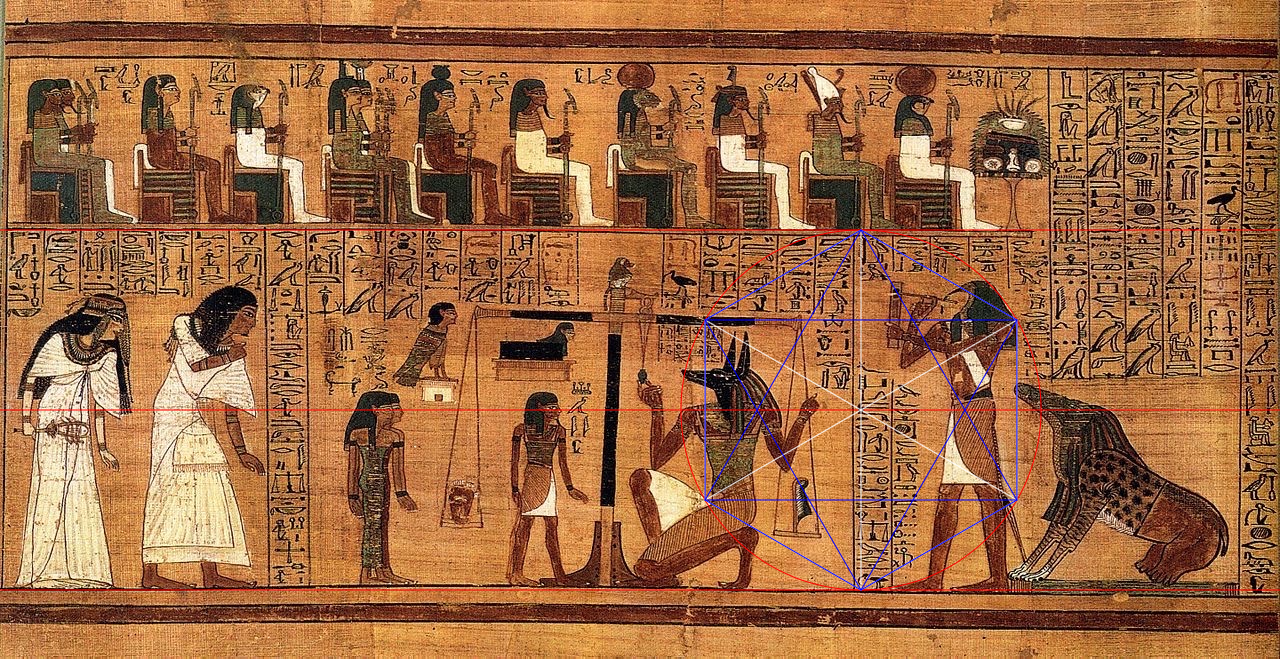

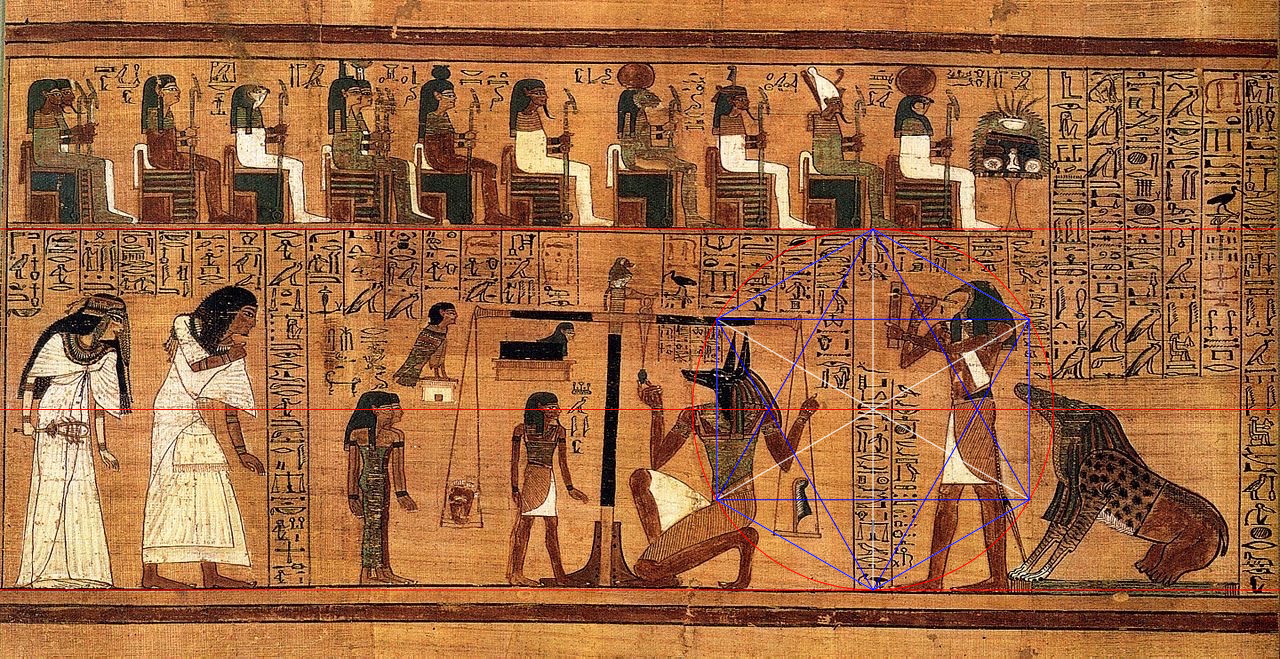
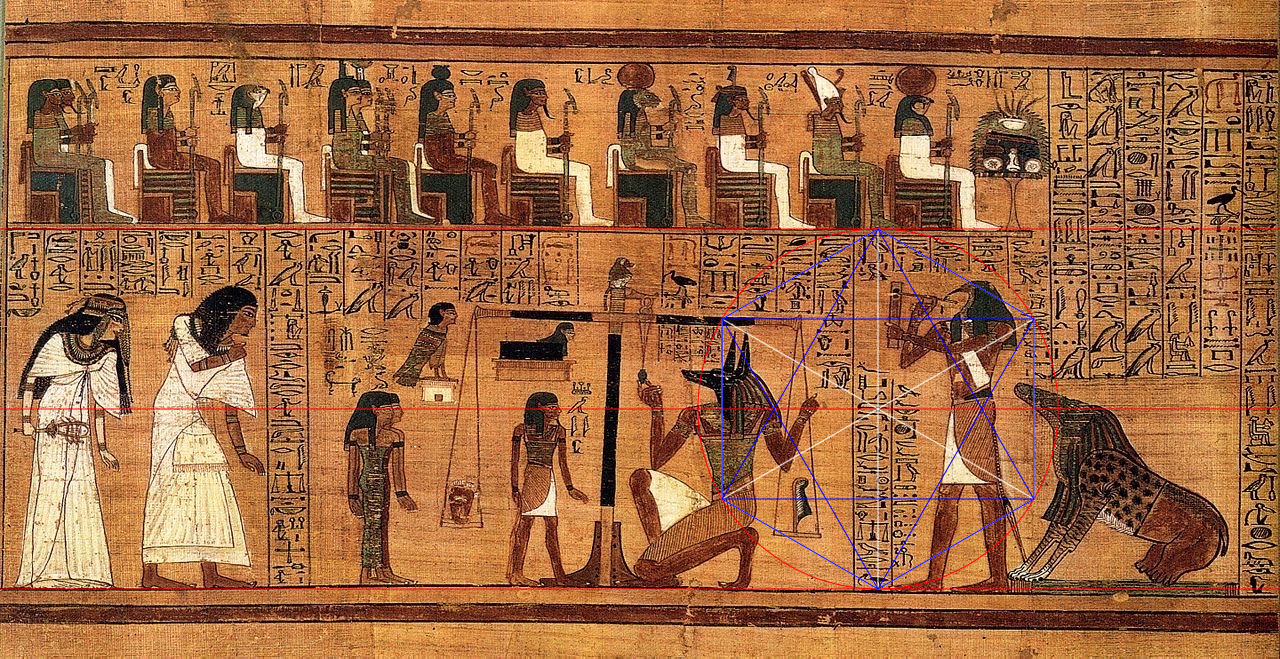
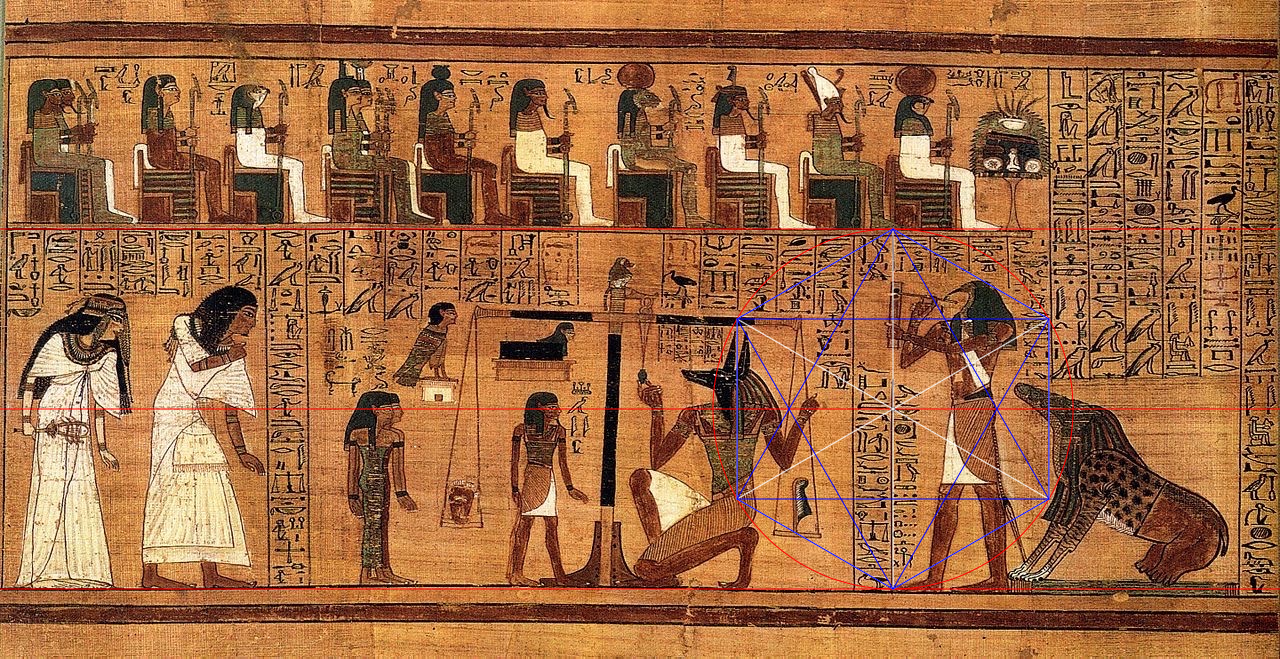
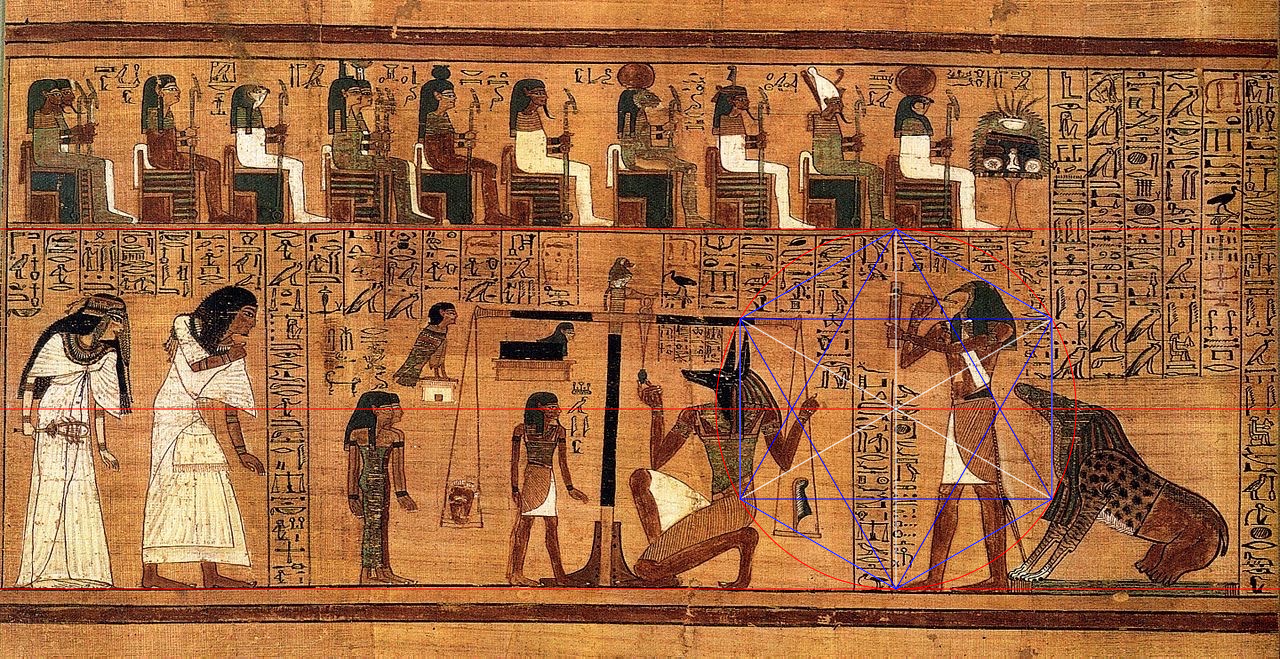
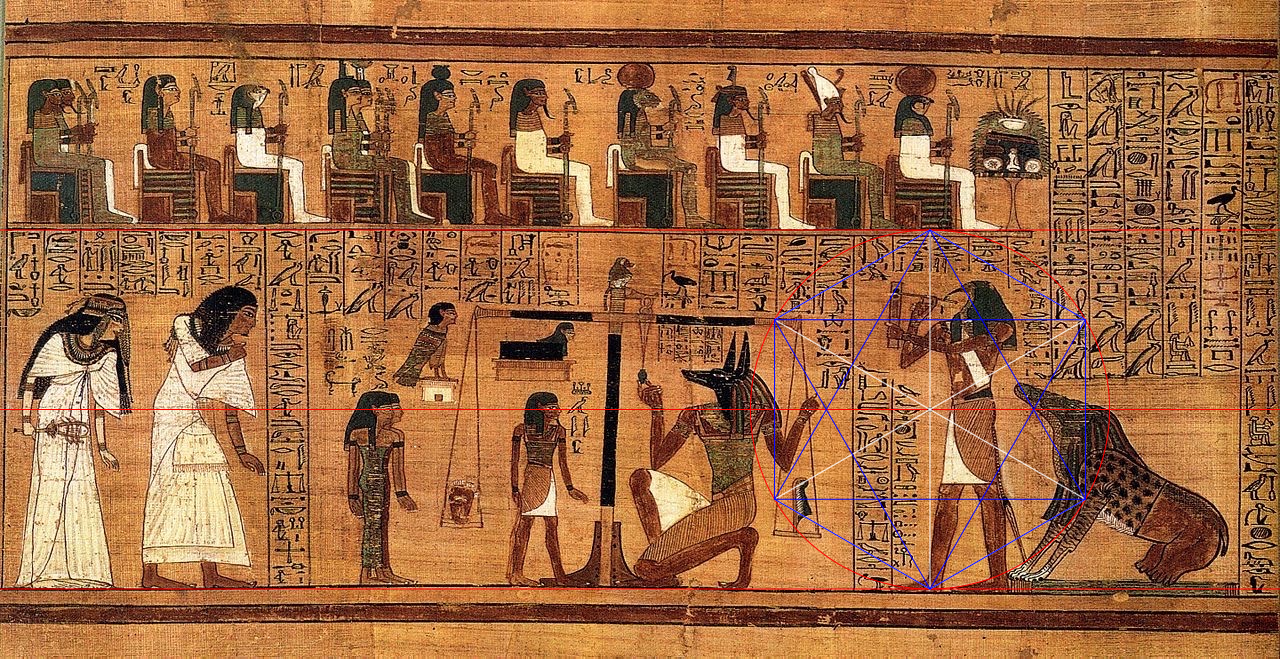
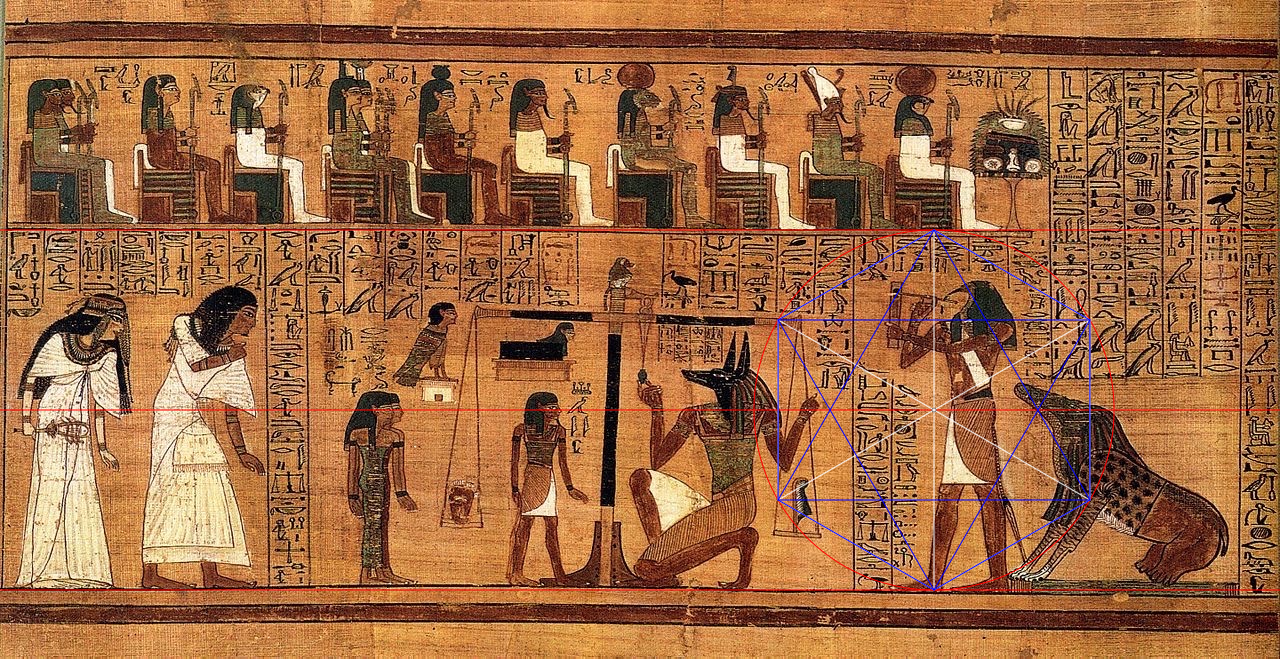
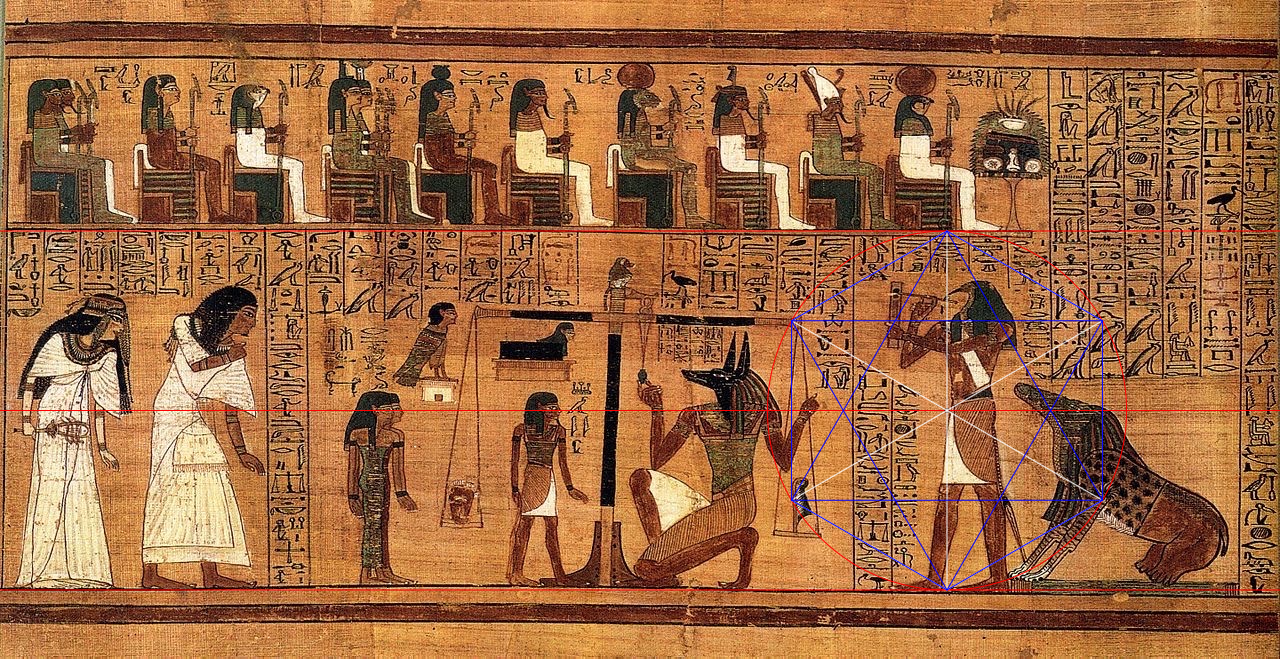
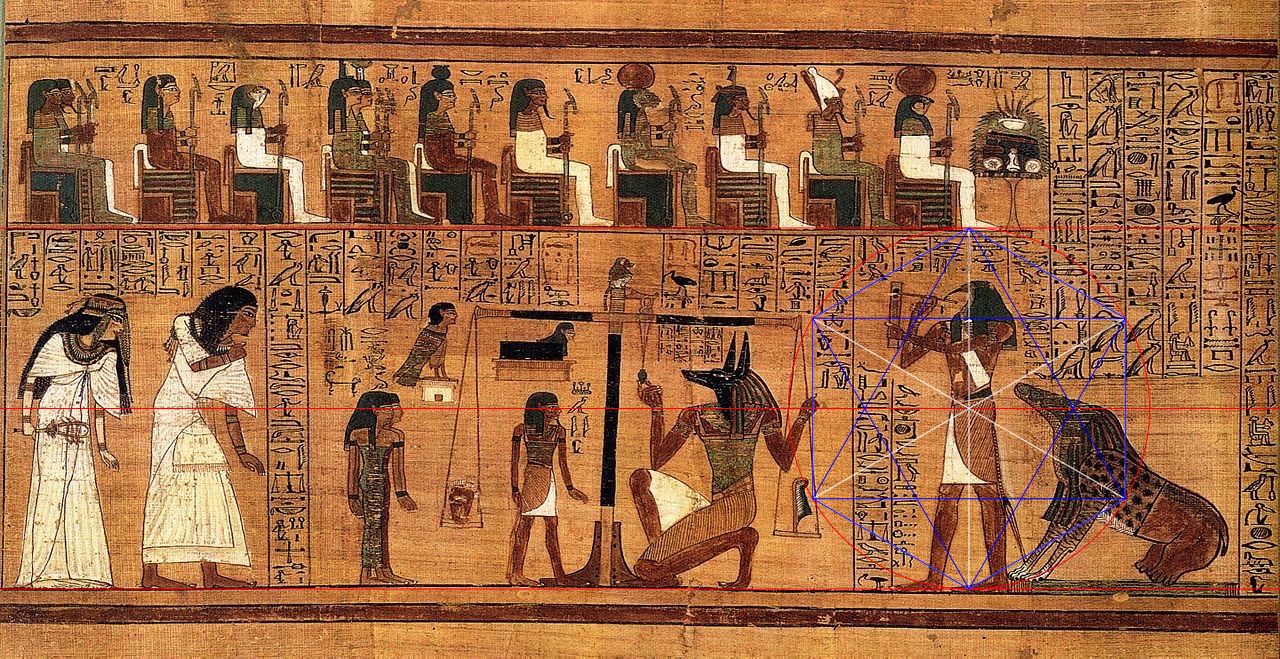
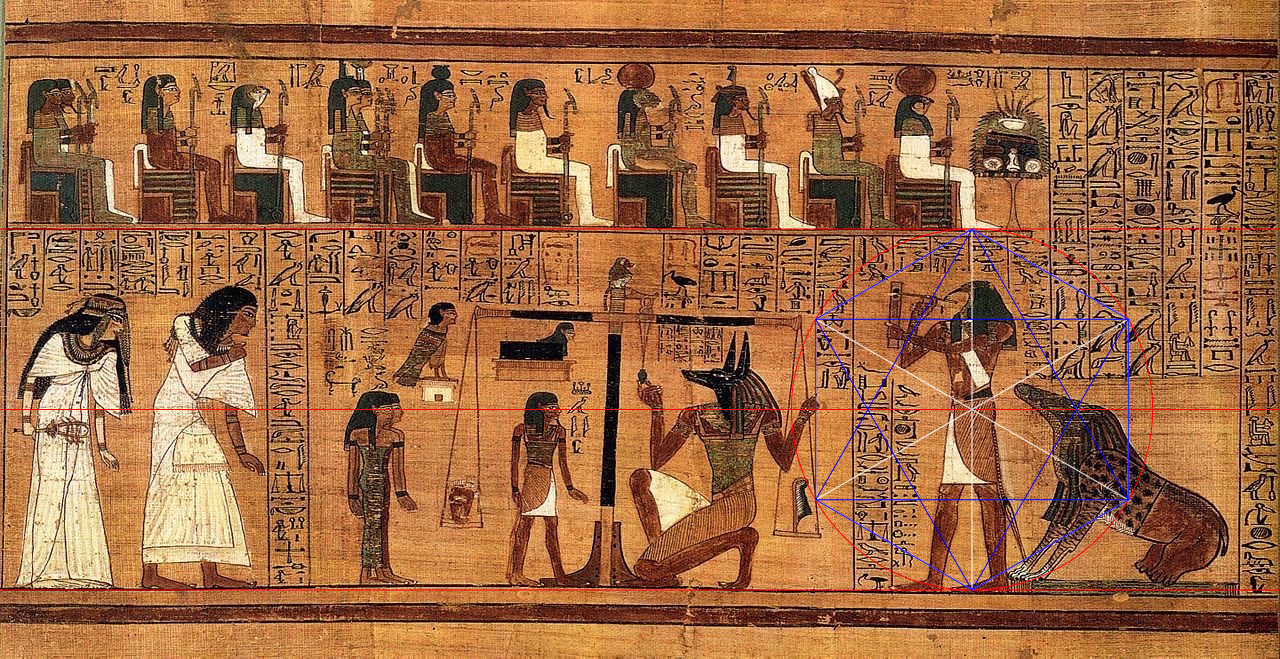
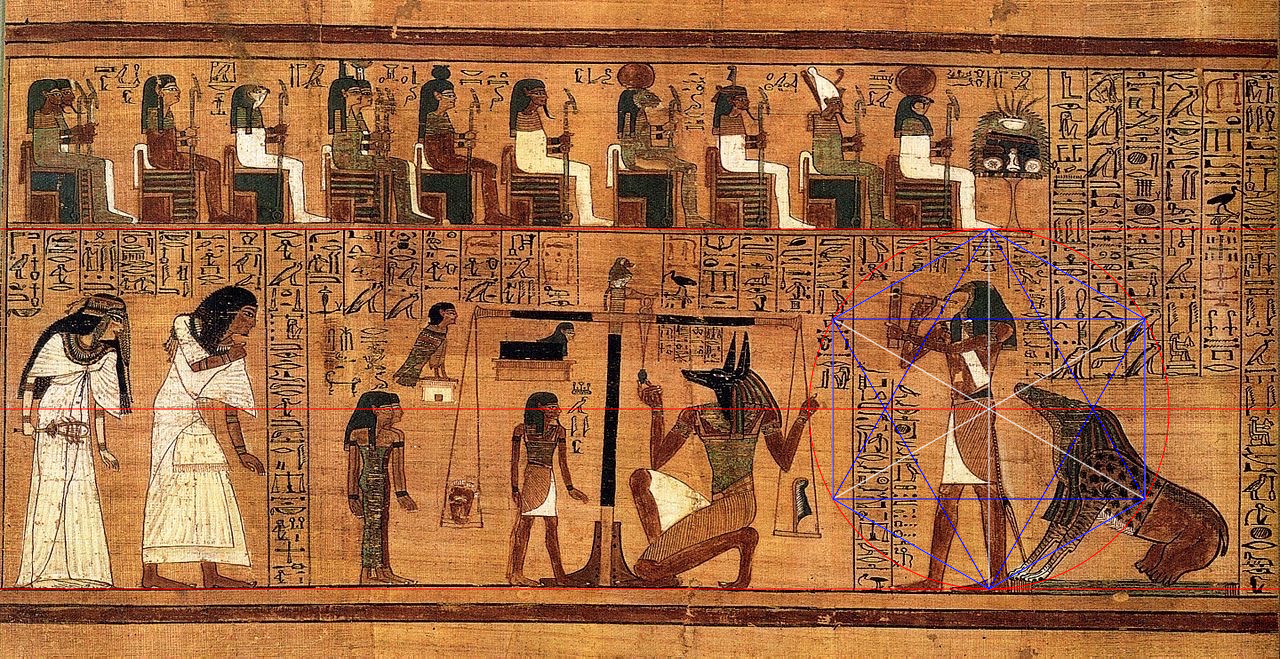
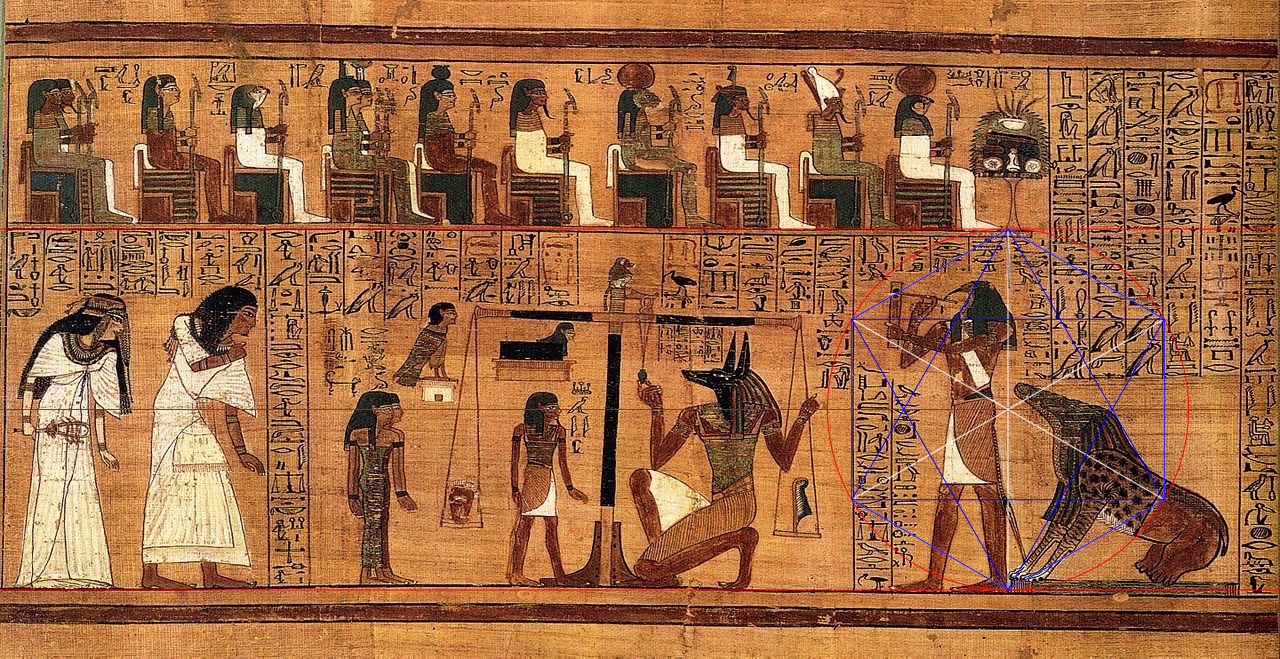
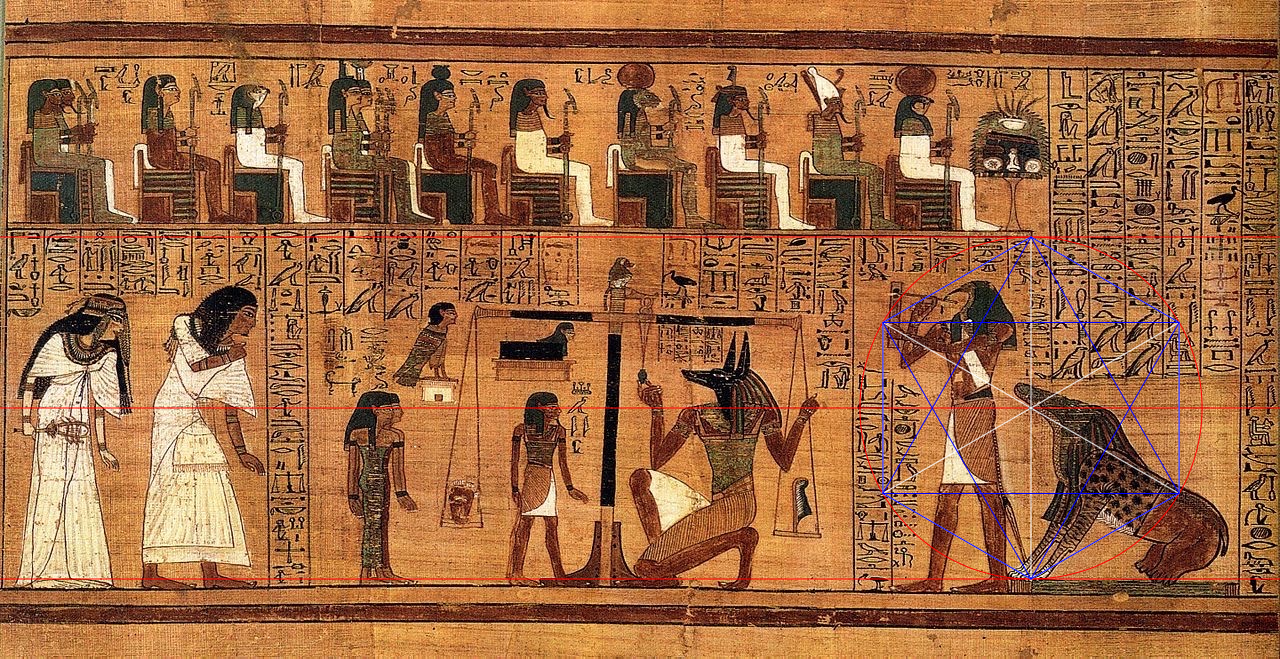
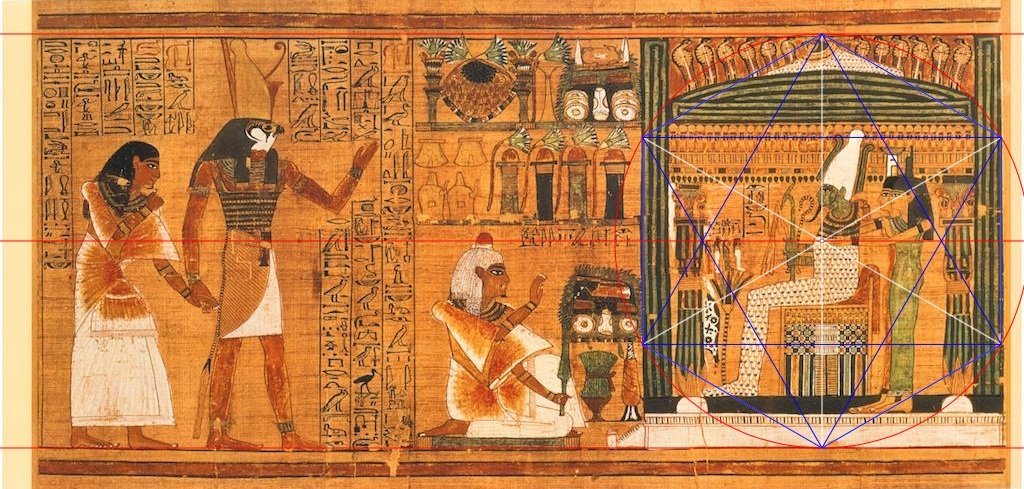

PACAL SARCOPHAGUS LID (PCL-CB6PS_A1-A11)
The outer baseline pair places the centerline similarly to PCL-R_A passing through Chak-Kan’s eye, Pacal’s left wrist, and Chak-Kan’s pole star ear spool. The white ‘y-axis’ of the cube is also aligned to the center divisions between the glyphs. There are countless other alignments between these divisions that align the narrative to the many subtle details of the glyphs. The first thing to notice as the alignments progress is the shape or dimensions of the six-pointed star’s rectangle. This rectangle’s shape represents the Square Root of Three and begins to align perfectly with the sides of the ‘portals’ between the hooks as it ‘pushes’ through the pairs of hooks that represent the plane of the ecliptic and earth’s celestial equator. As mentioned in the descriptions of the Papyrus of Ani, all of the arcs, chords, and lines of this composite geometric shape are associated with the Square Root of Three. As the narrative ‘progresses’ watch the corners of the rectangle and the ‘hooks’ along with Pacal’s hands and feet.
(Art Motifs/Image Sources Fig.114)
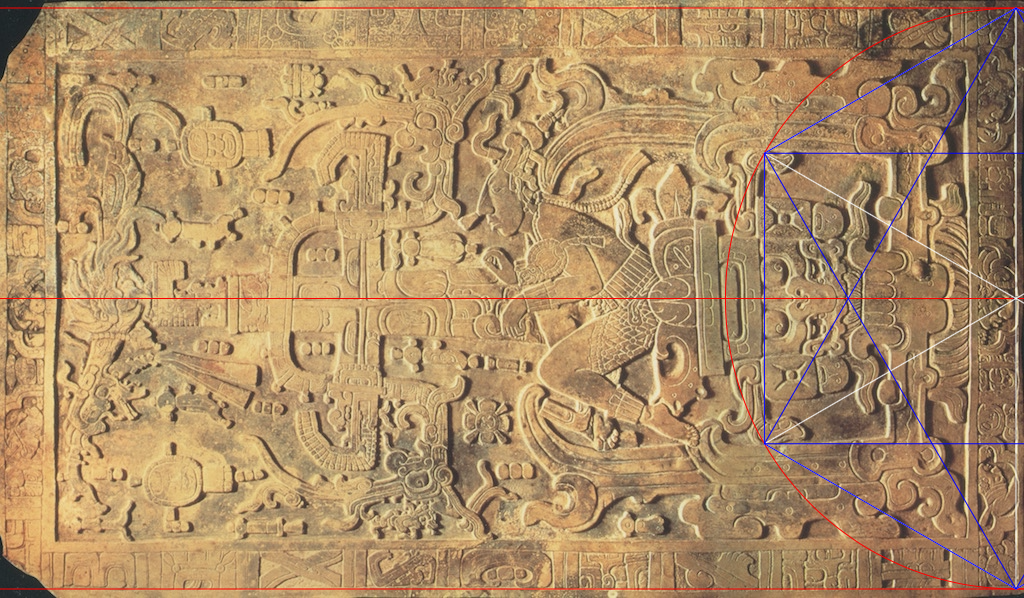
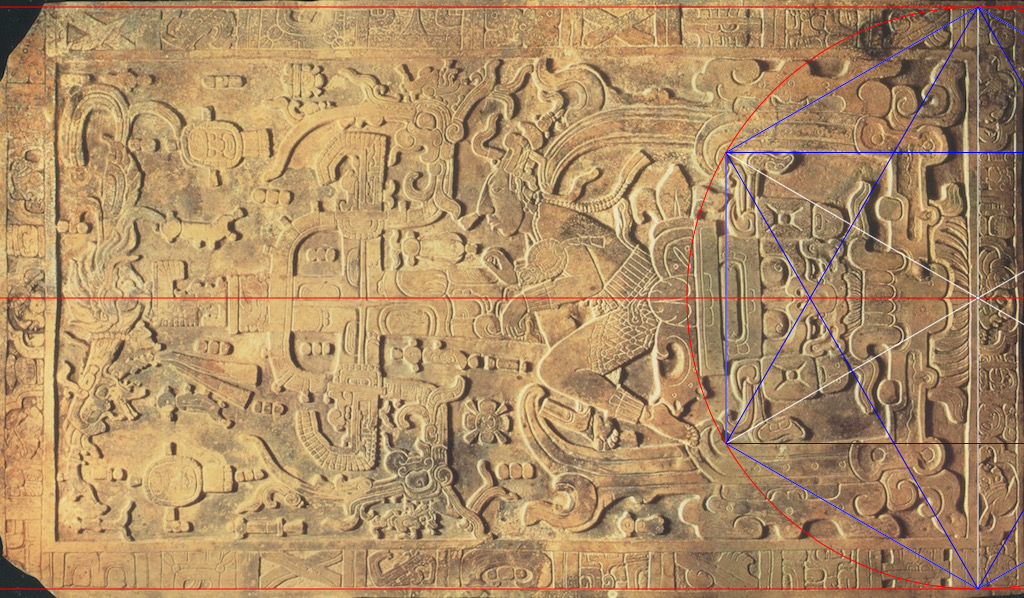
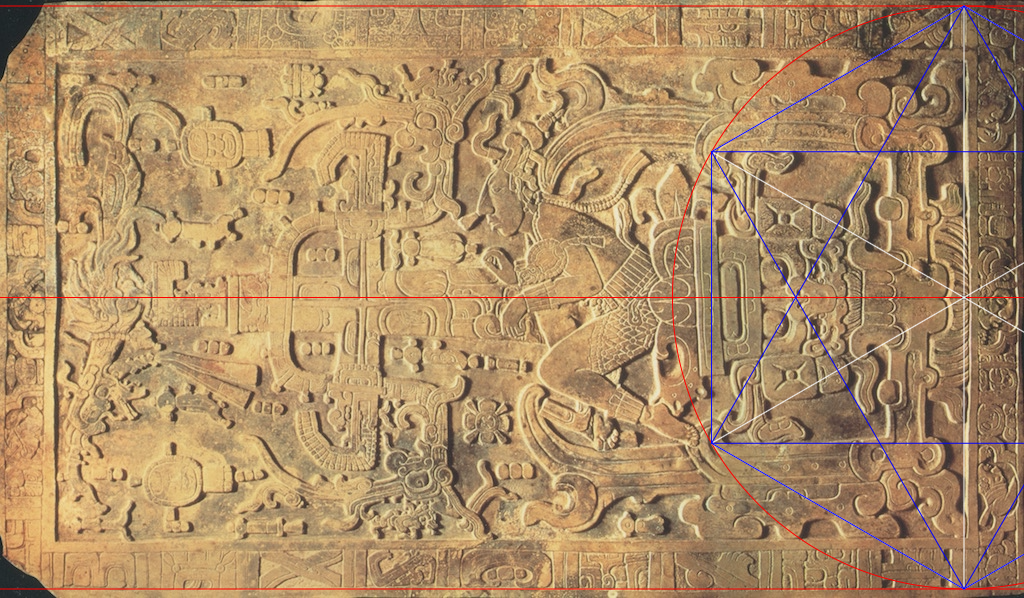
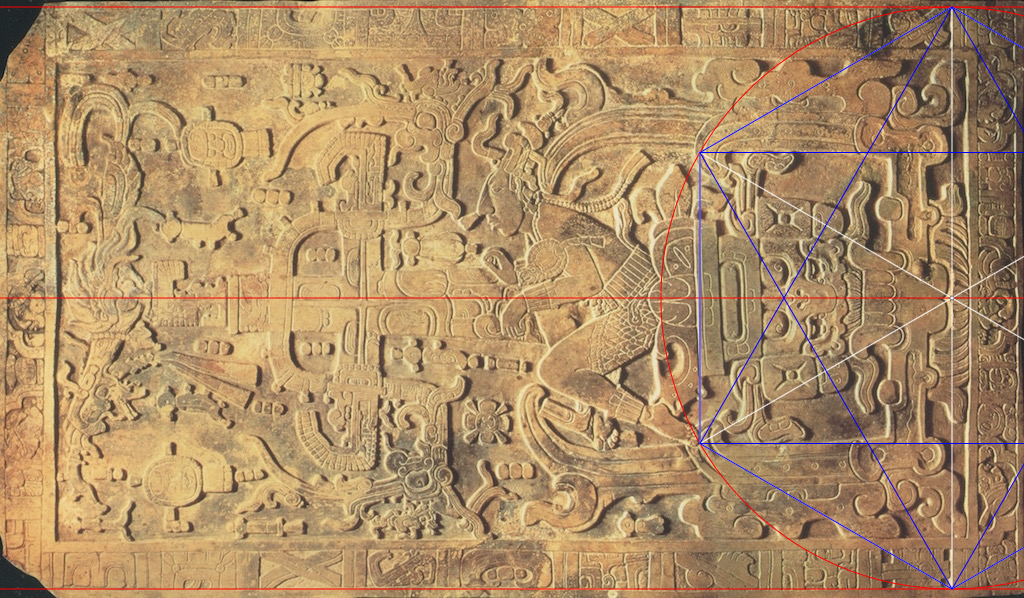
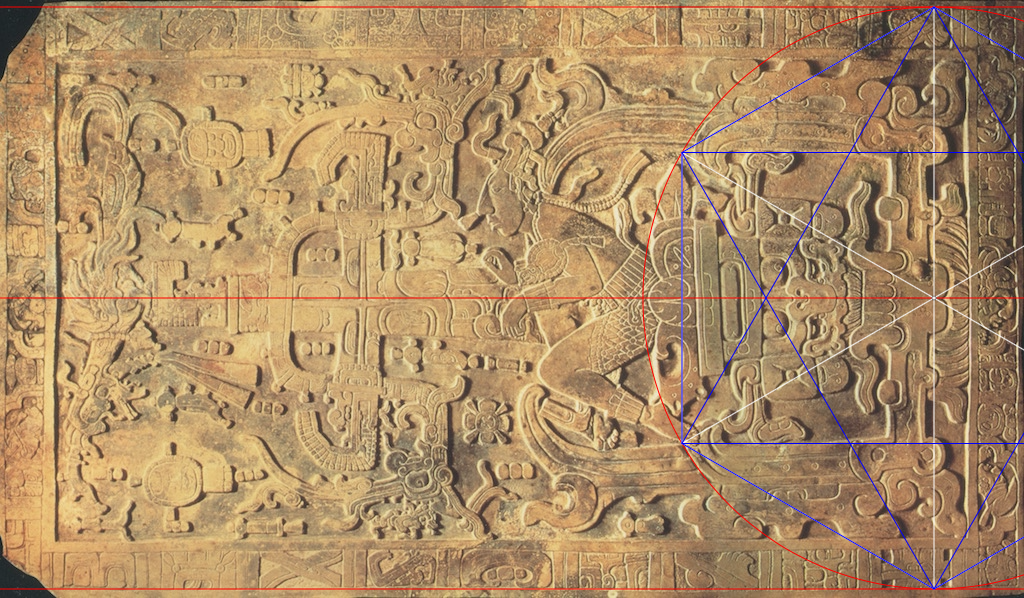
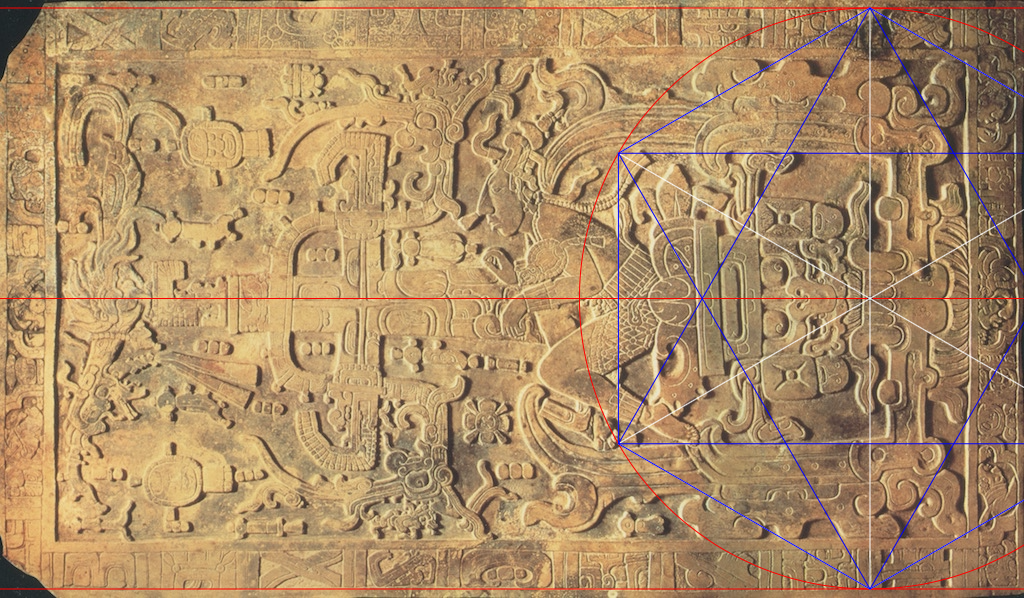
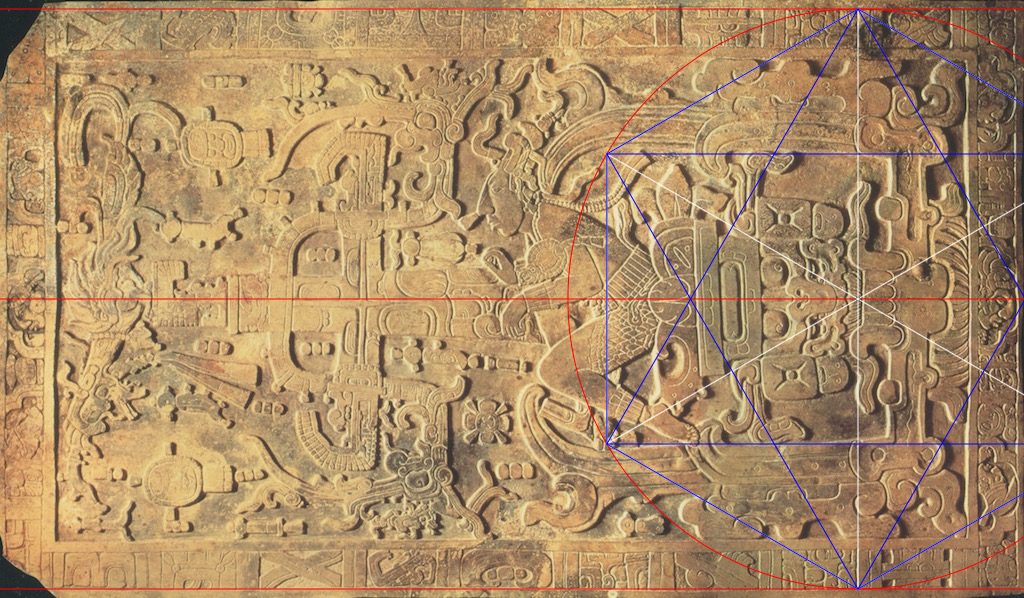
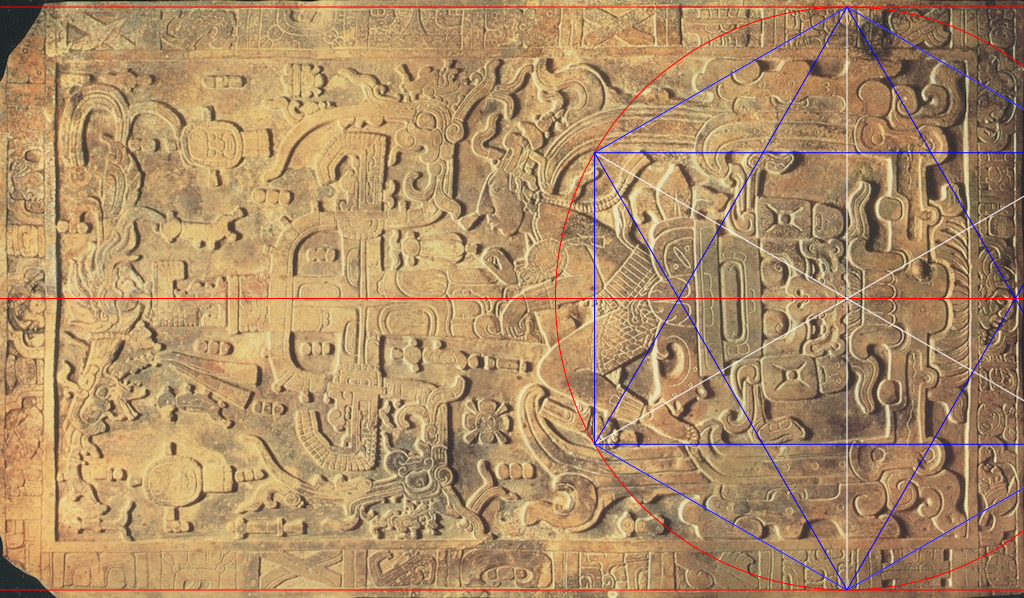
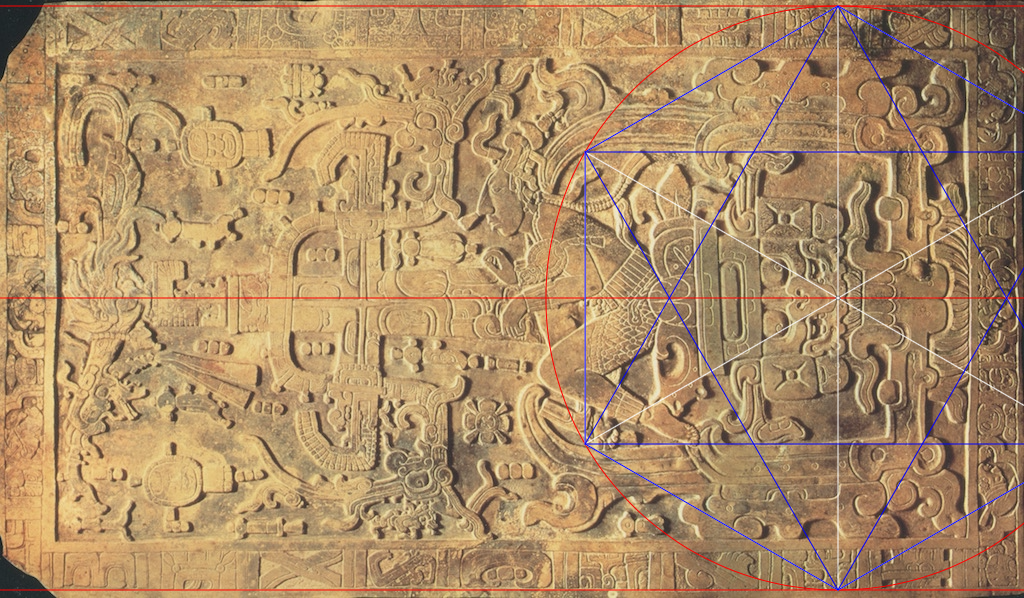
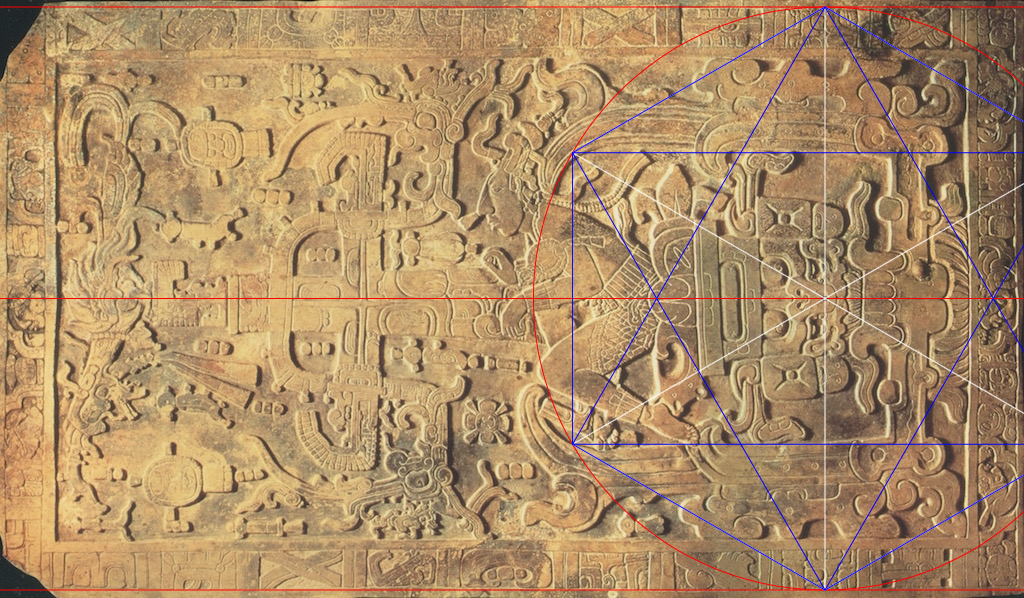
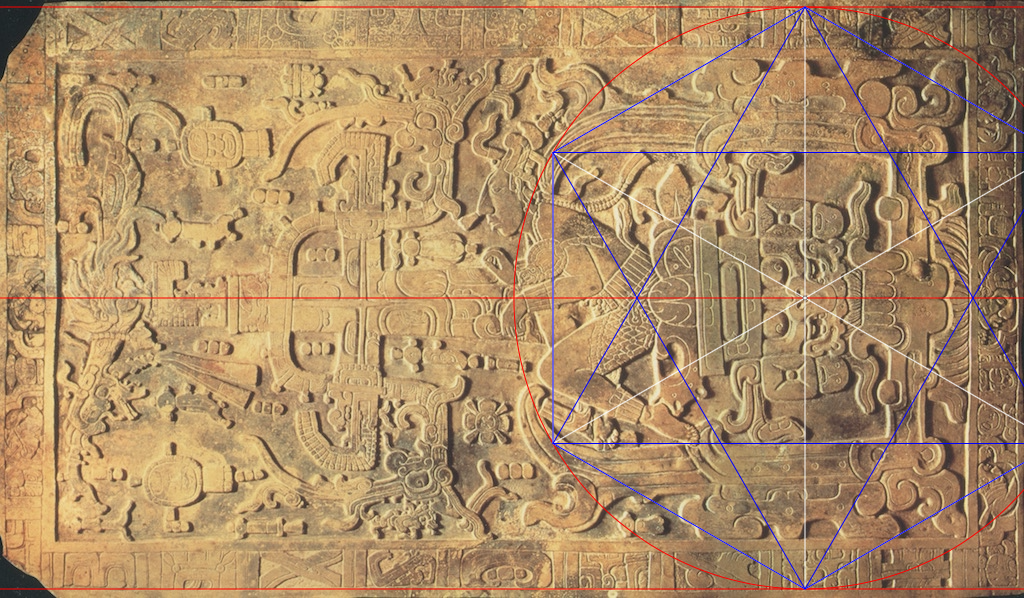
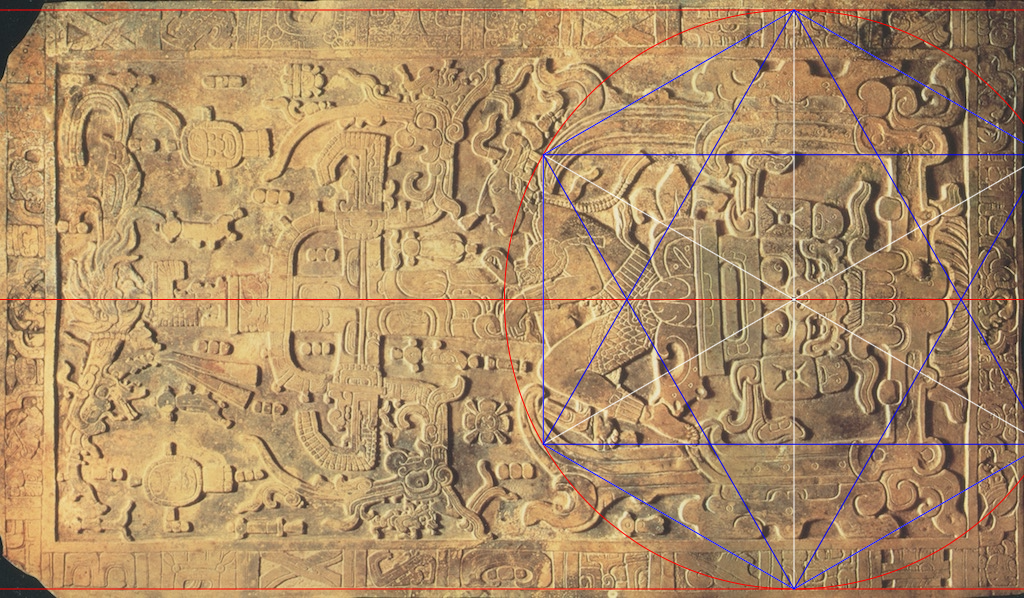
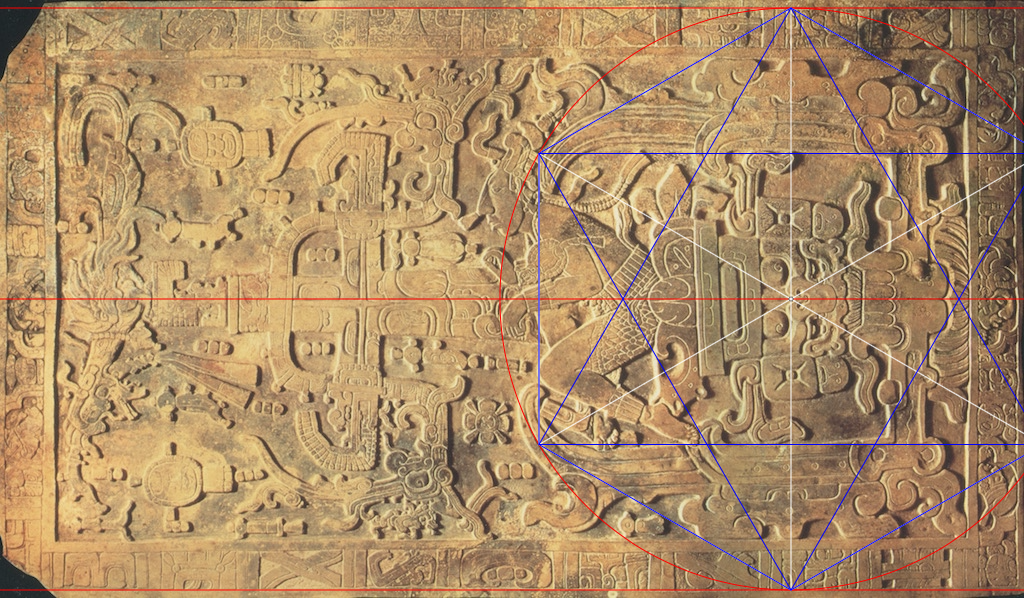
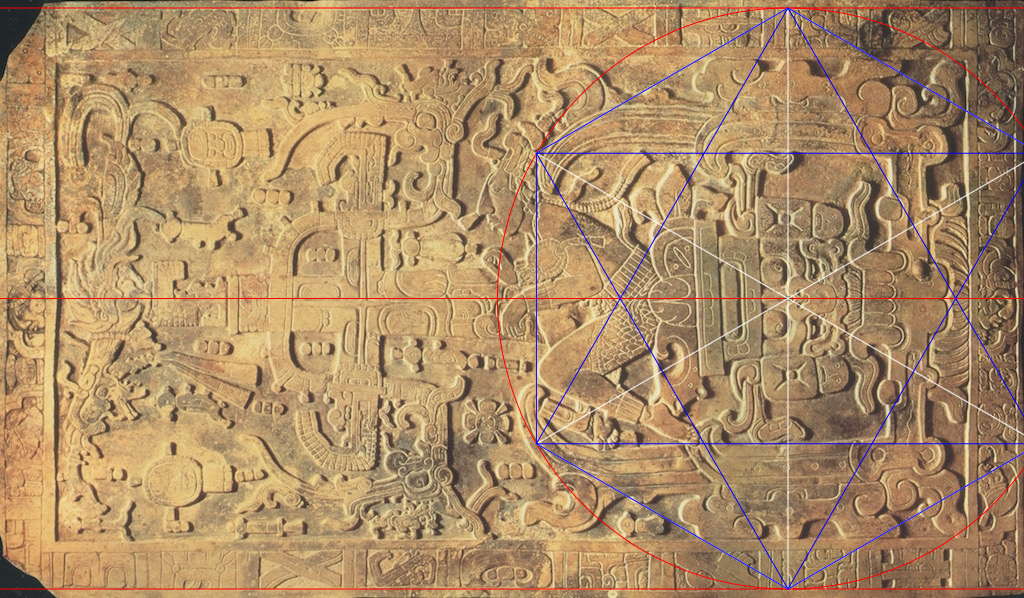
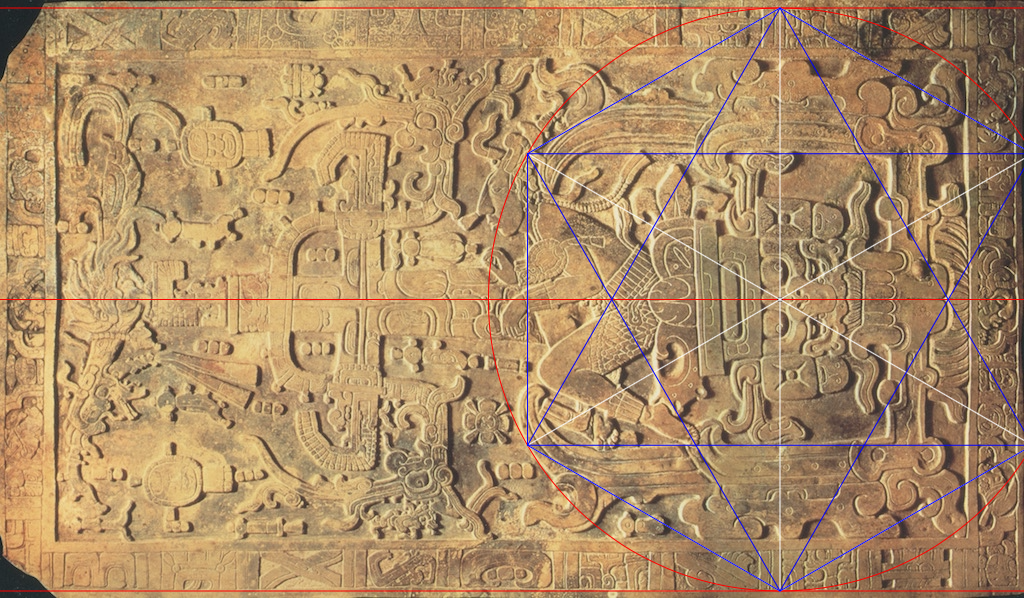
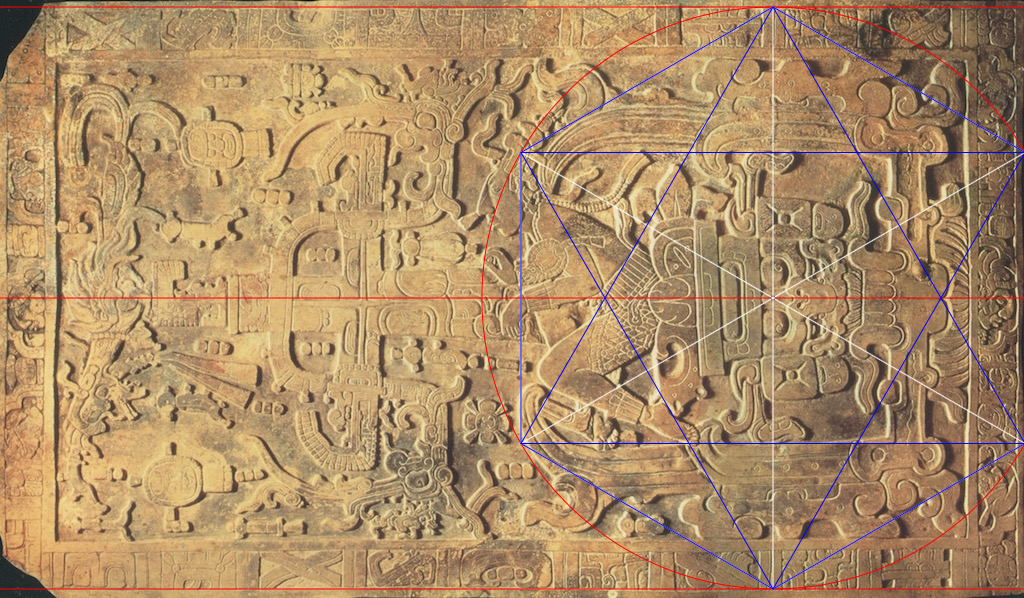

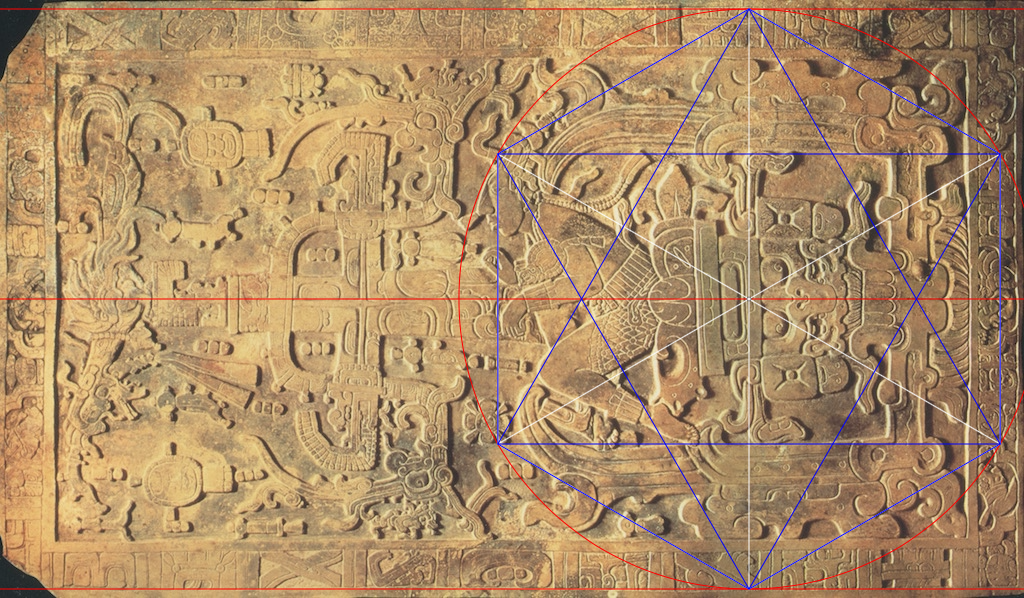
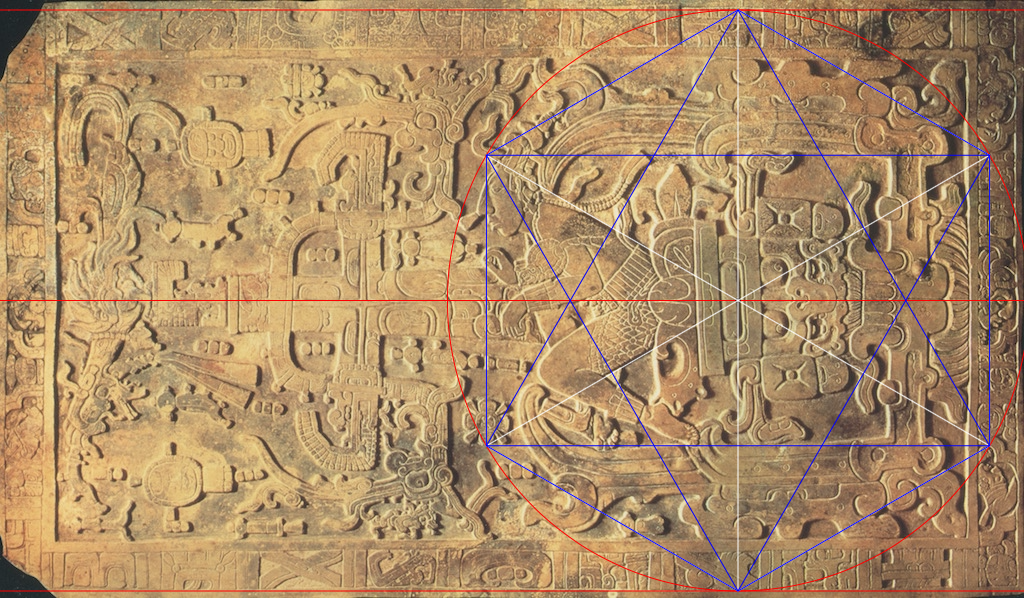
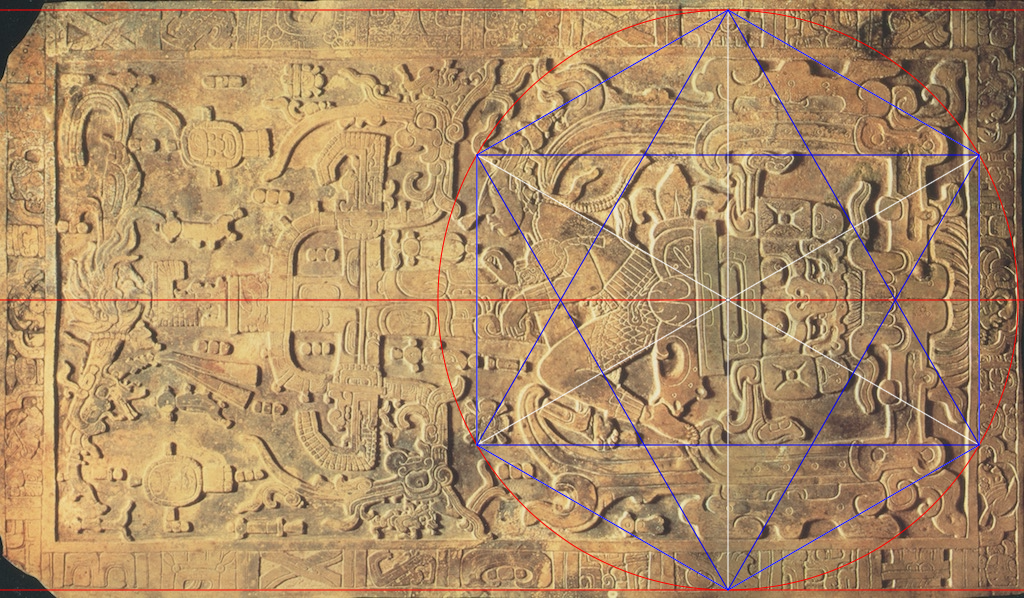
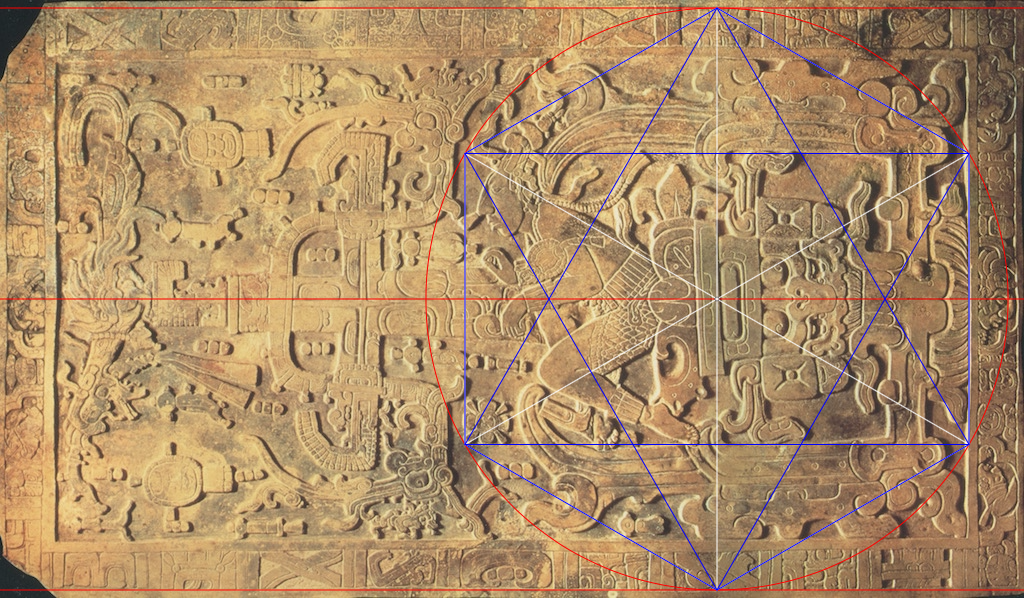
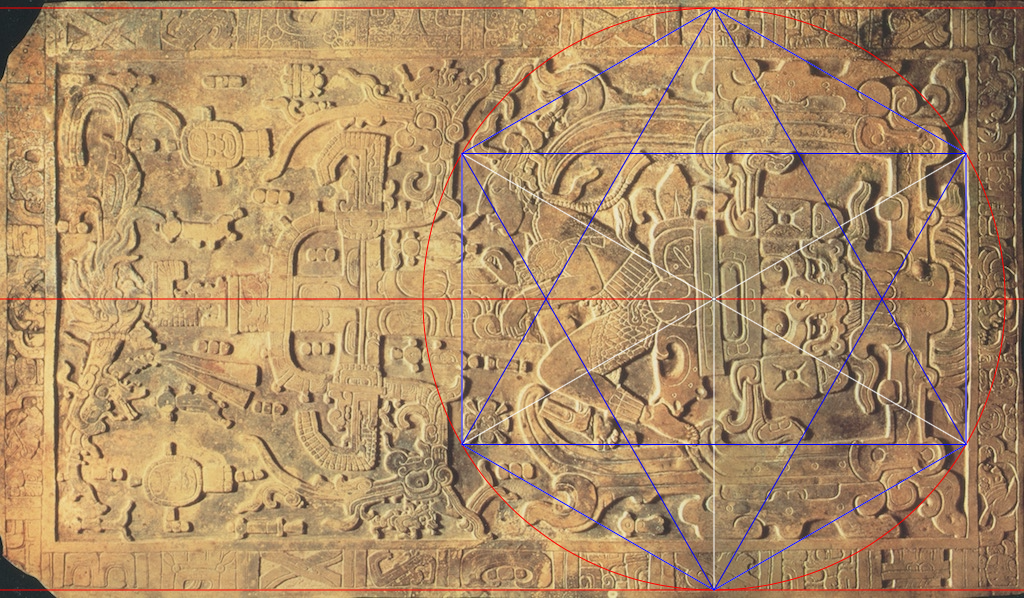
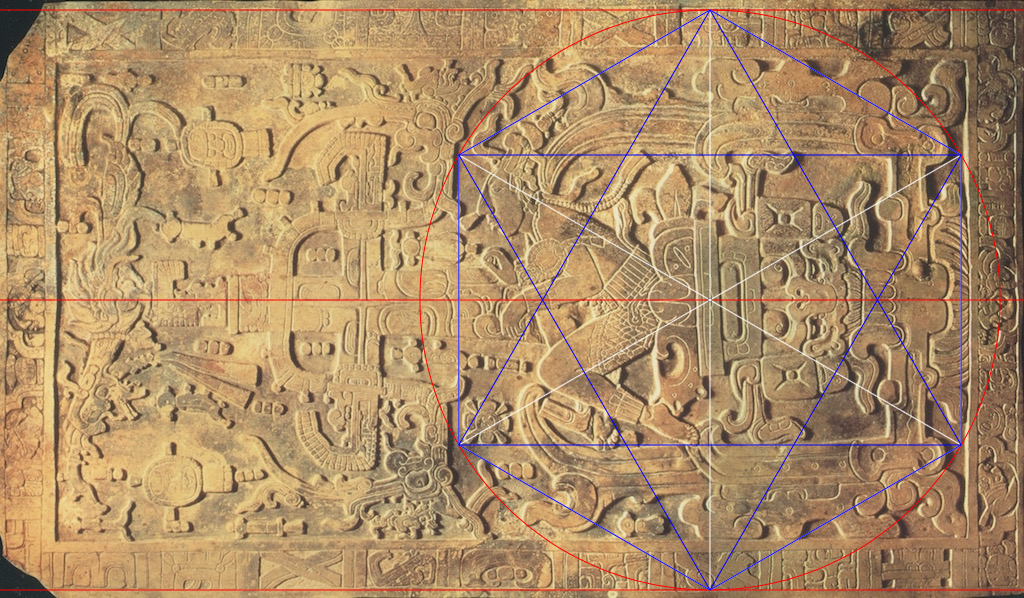
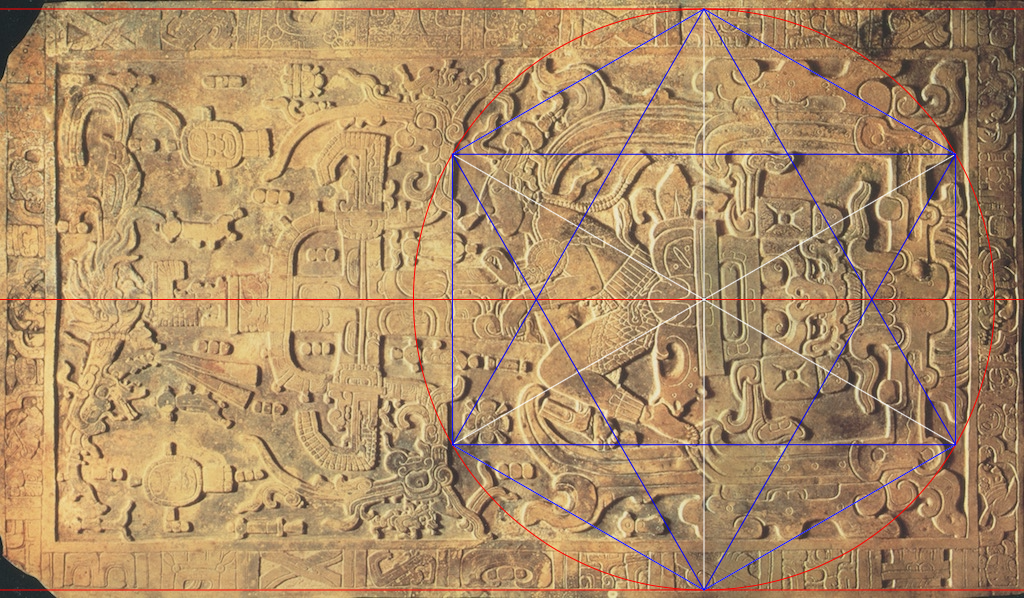
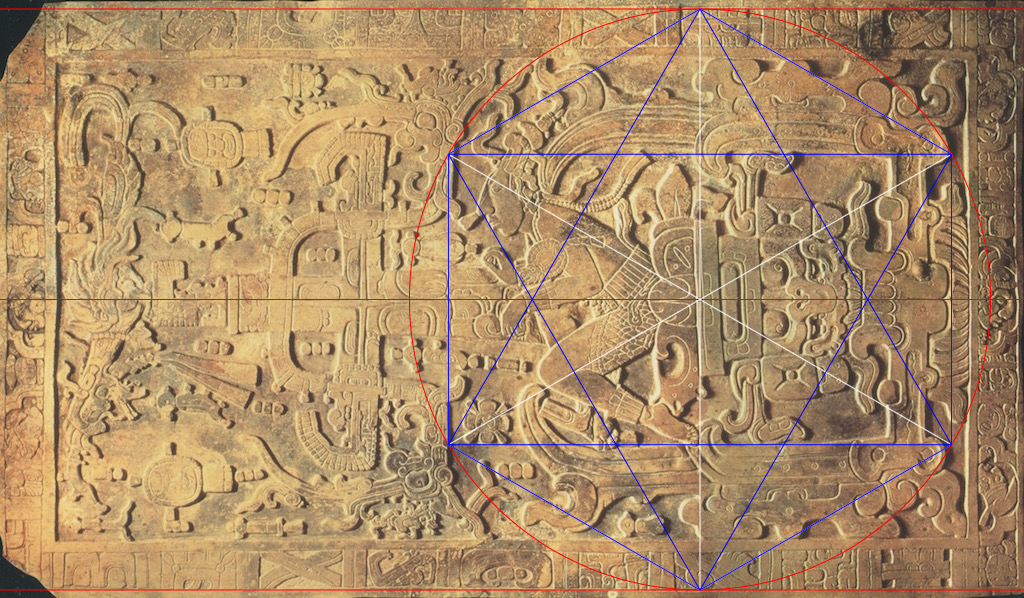
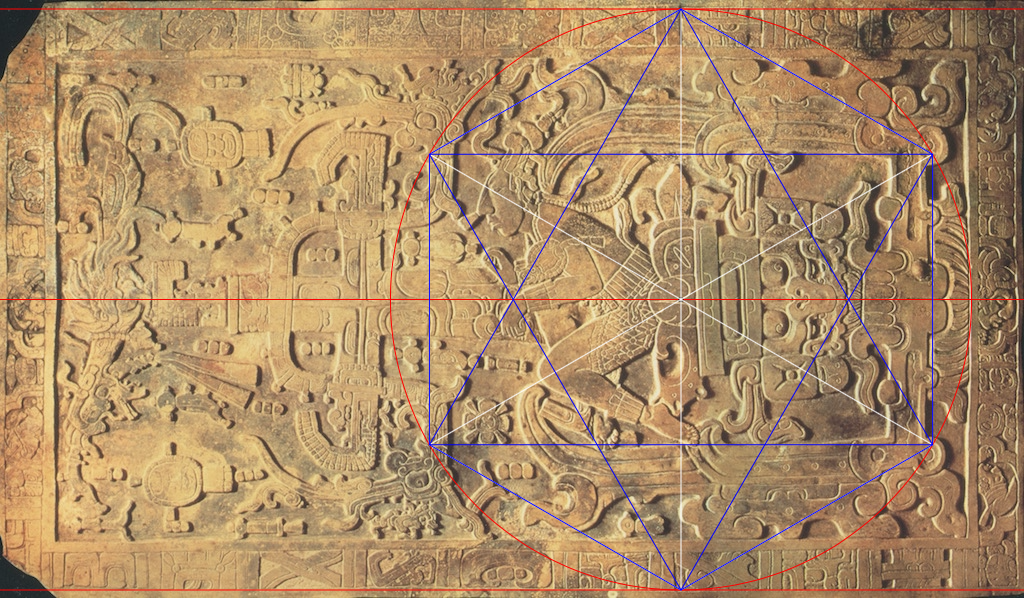
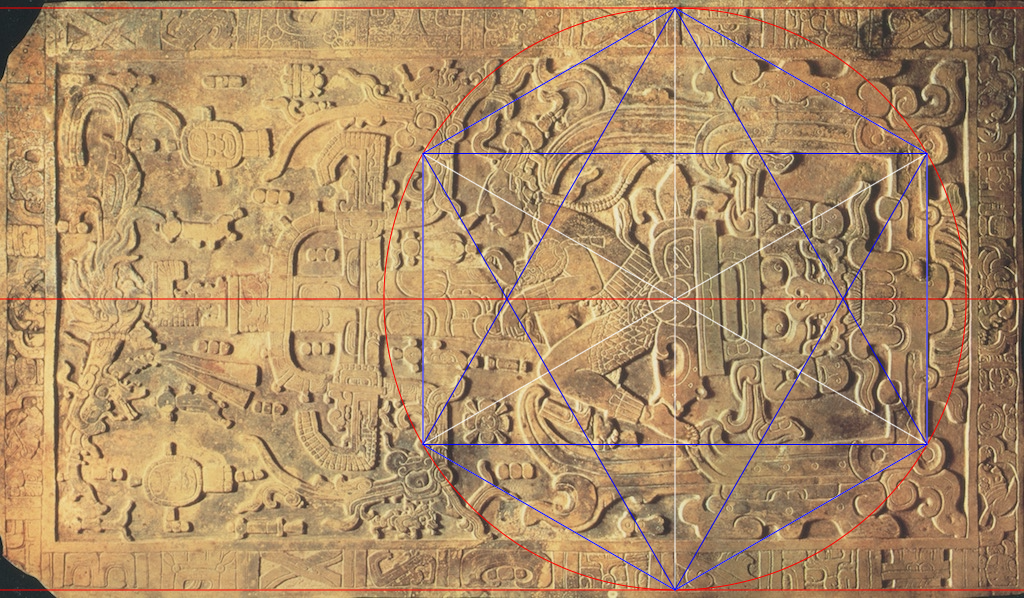
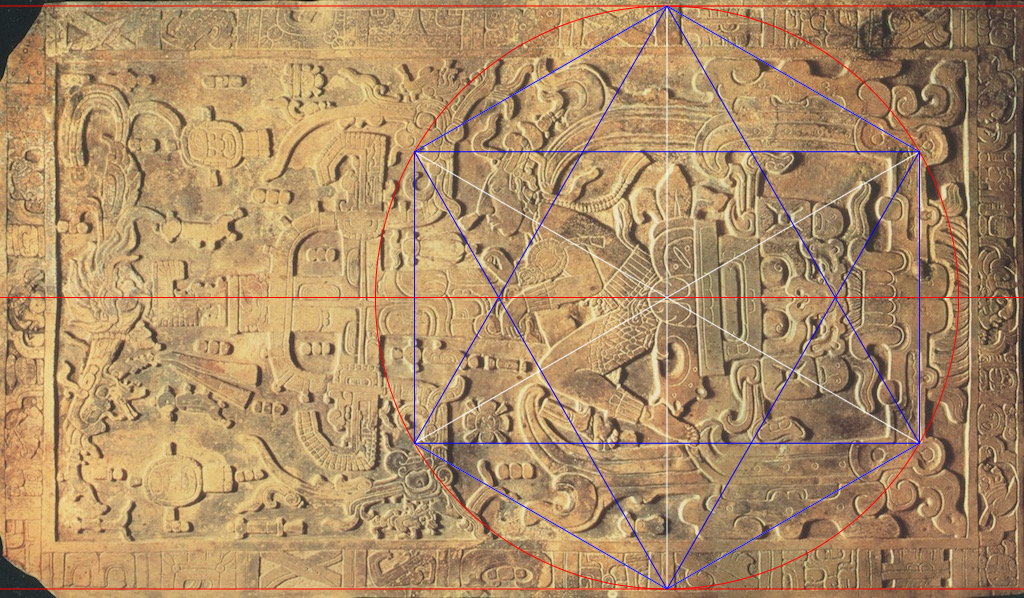
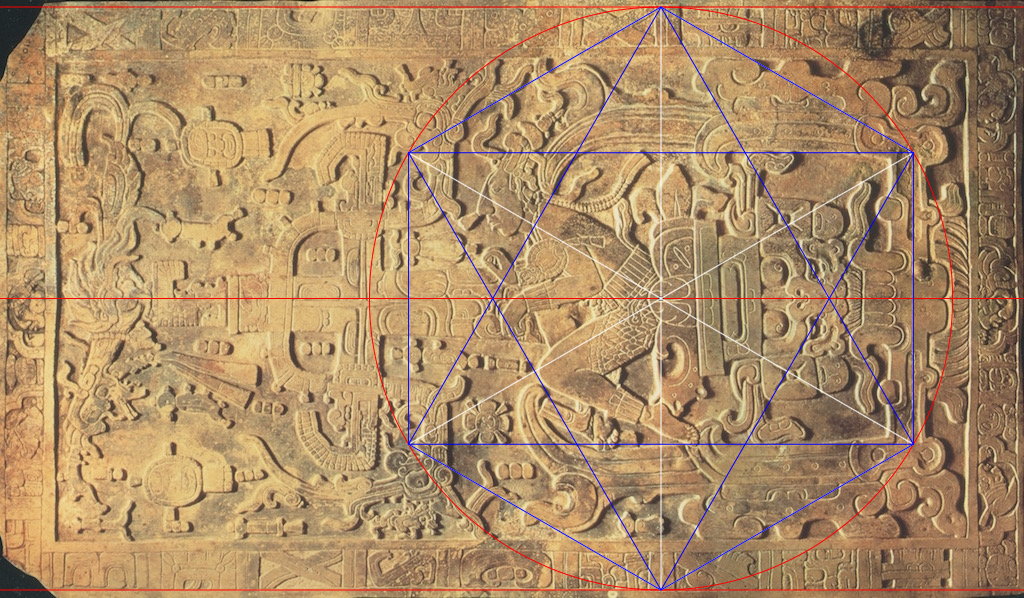
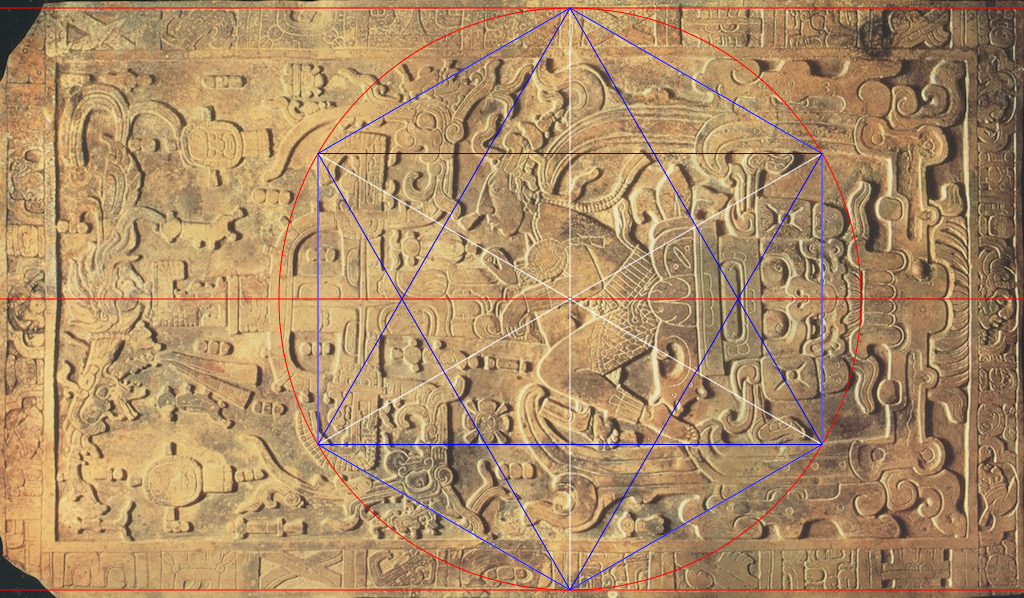
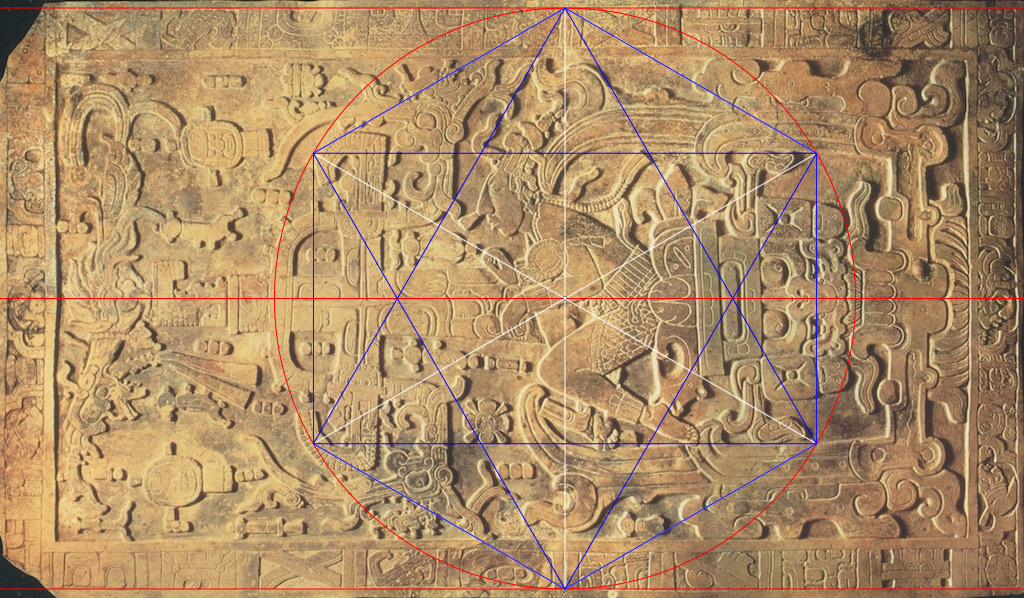
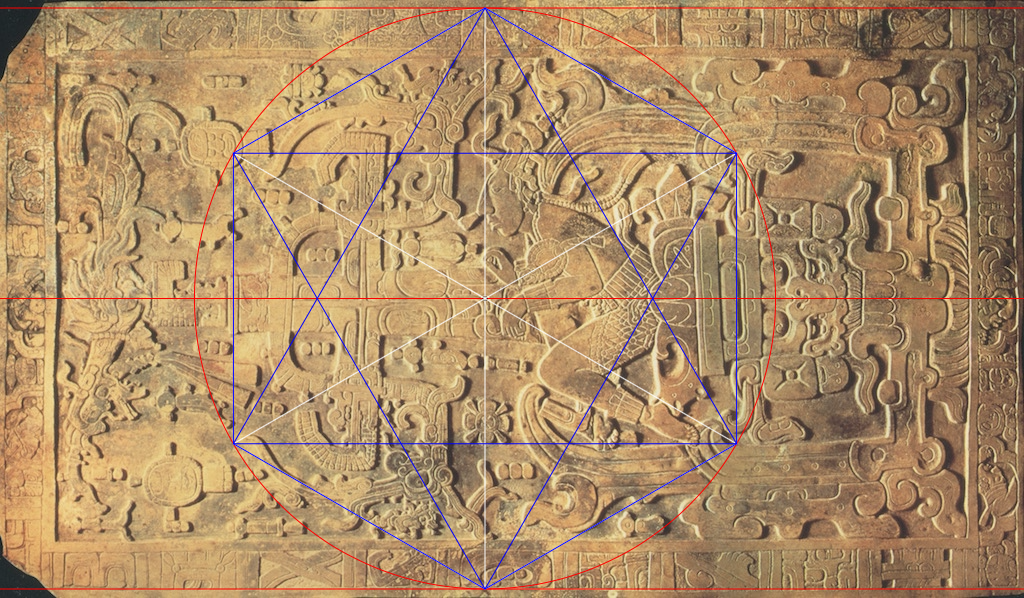
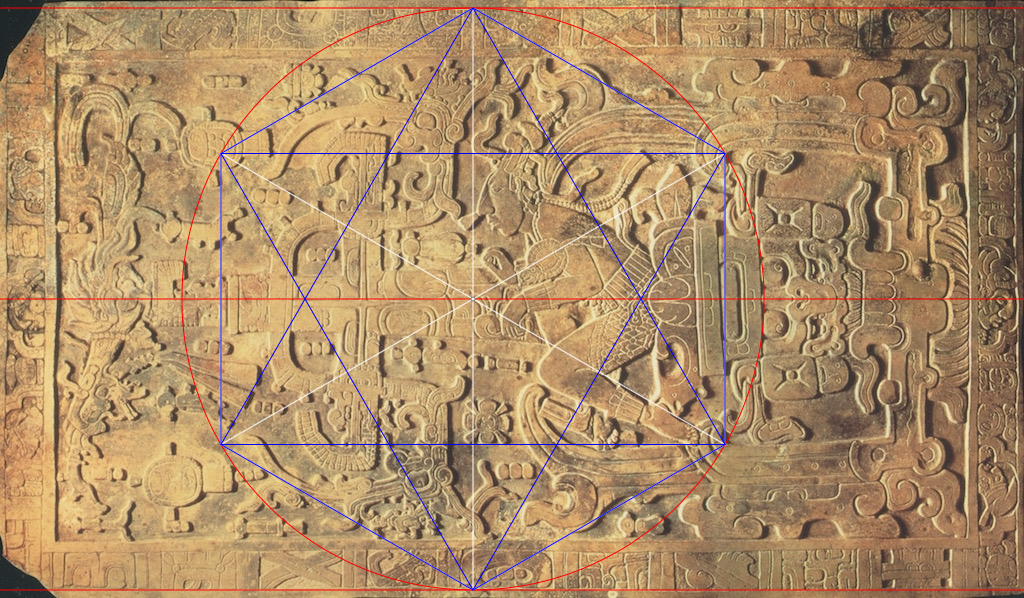
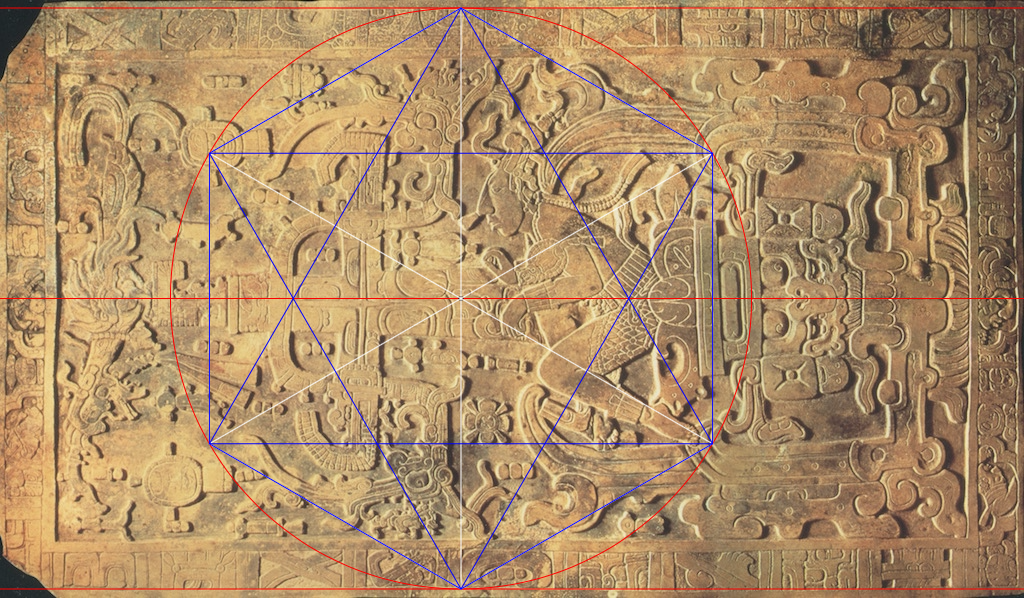
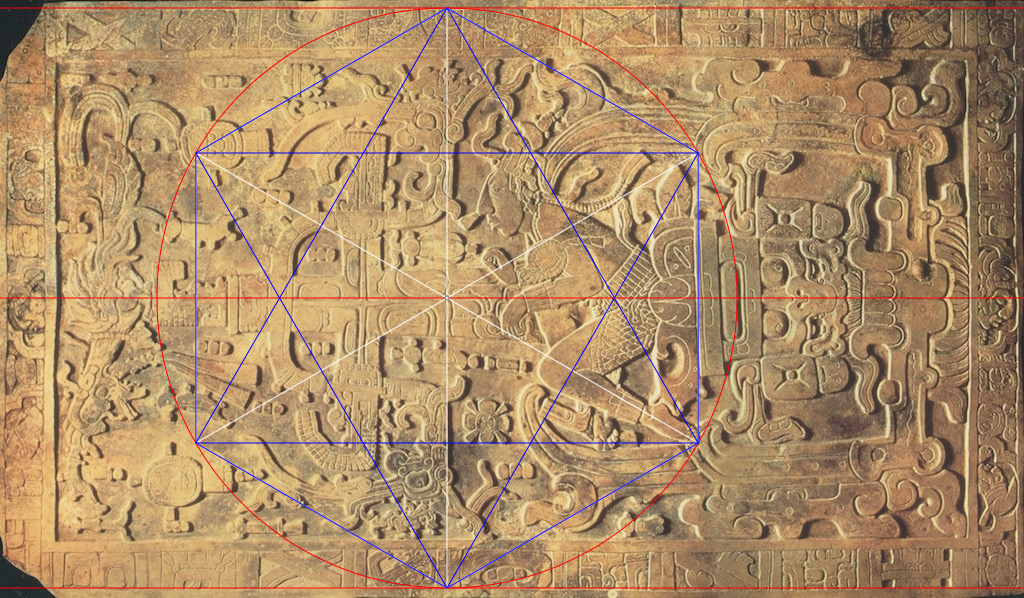
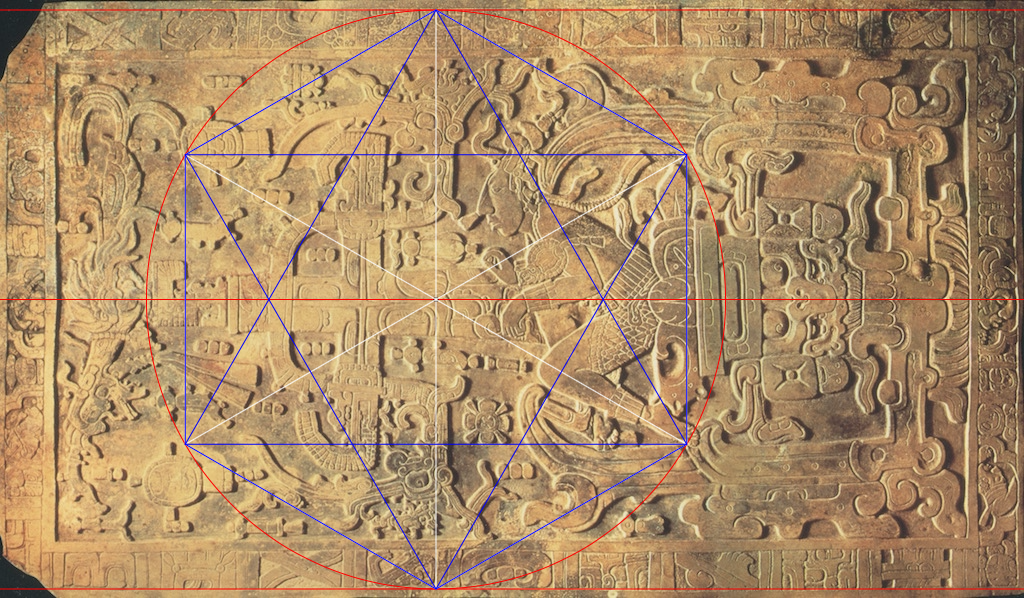
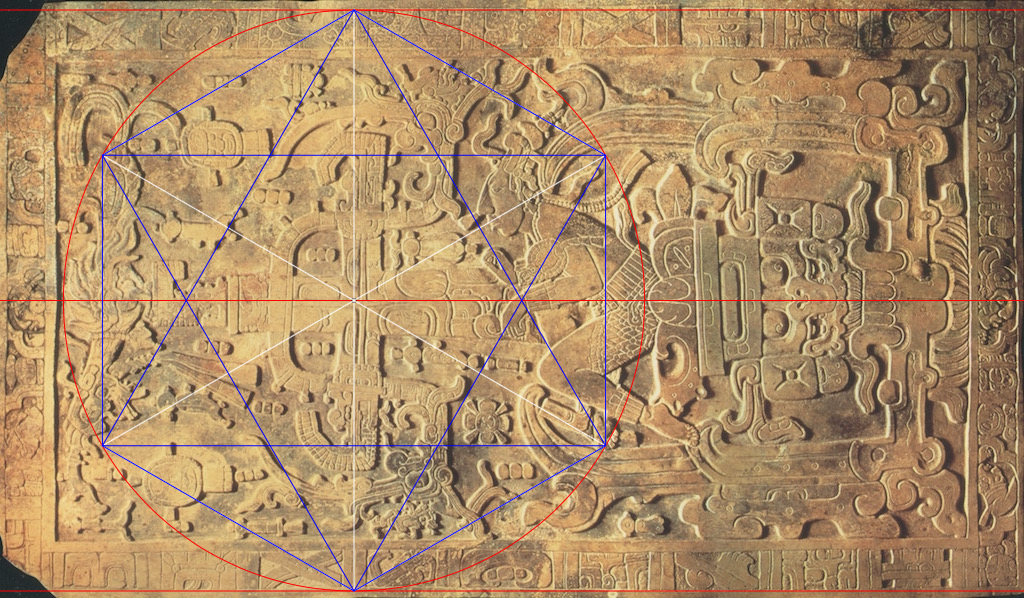
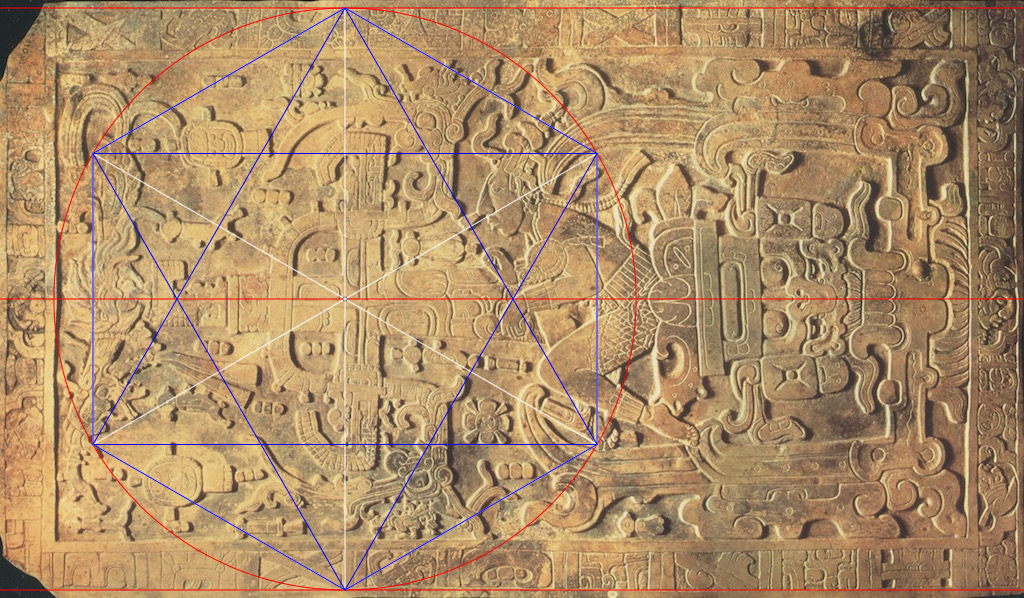
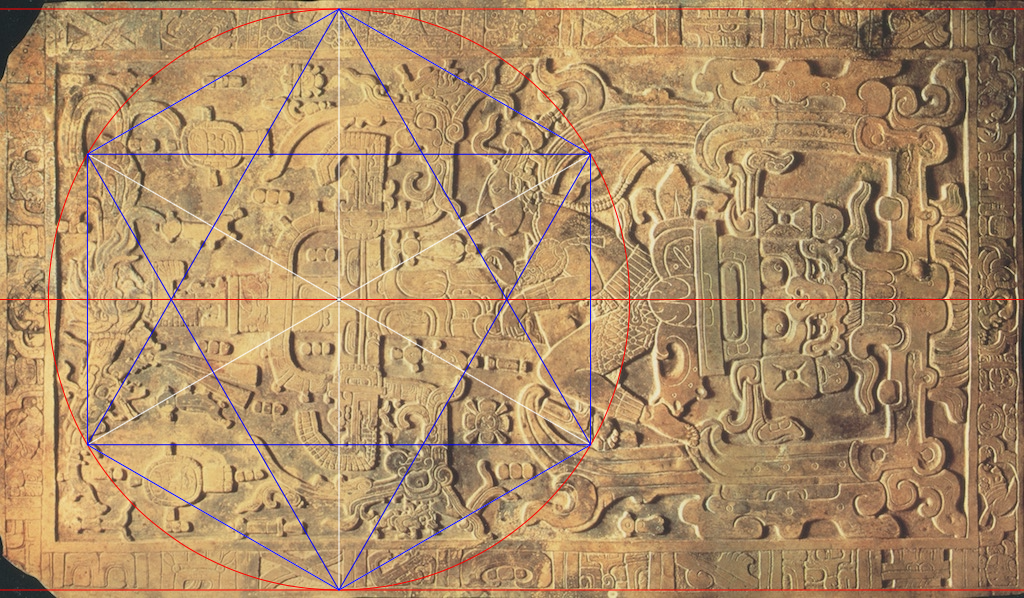
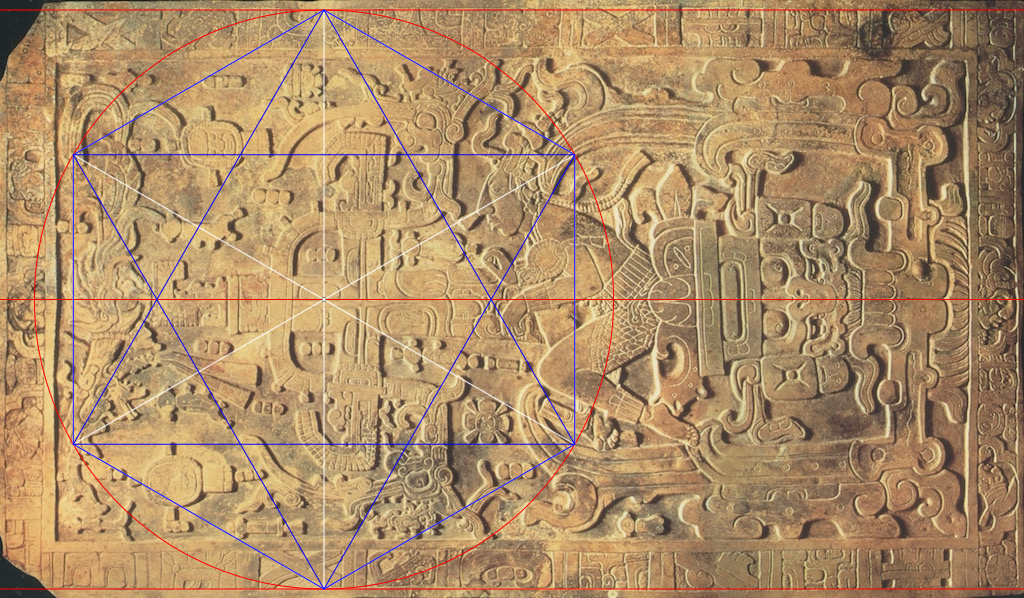
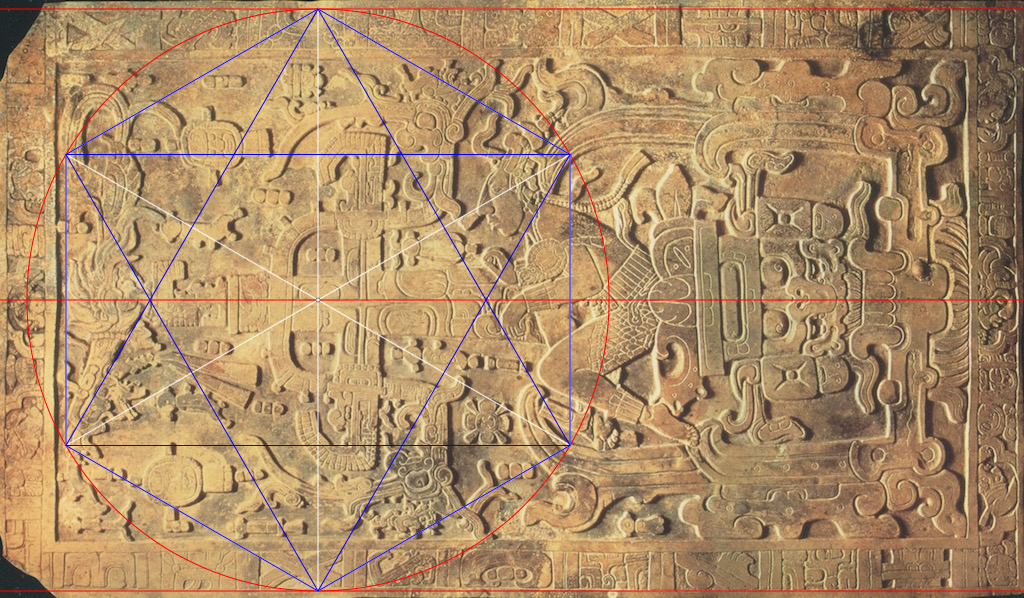
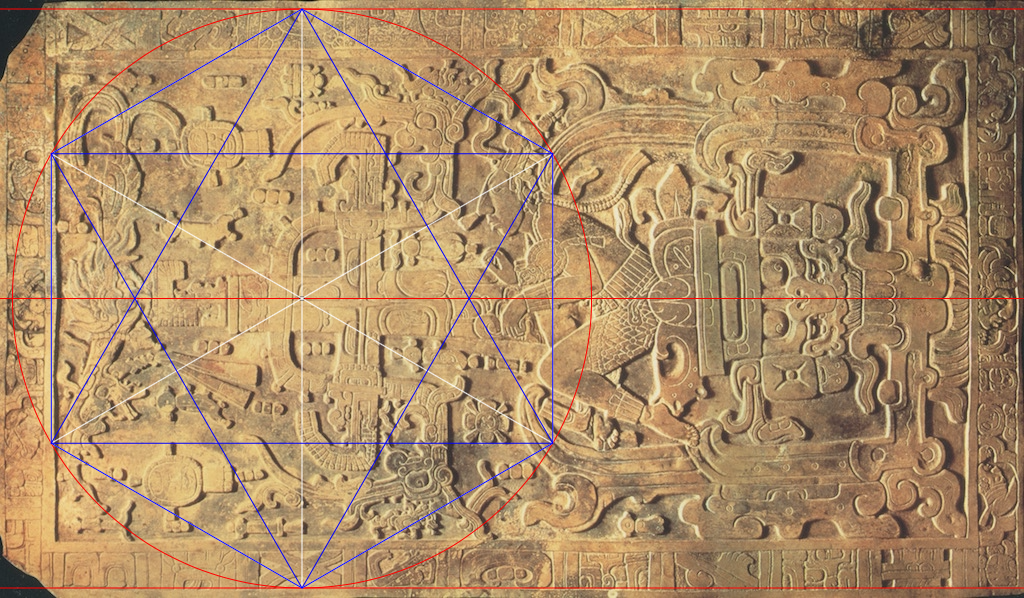
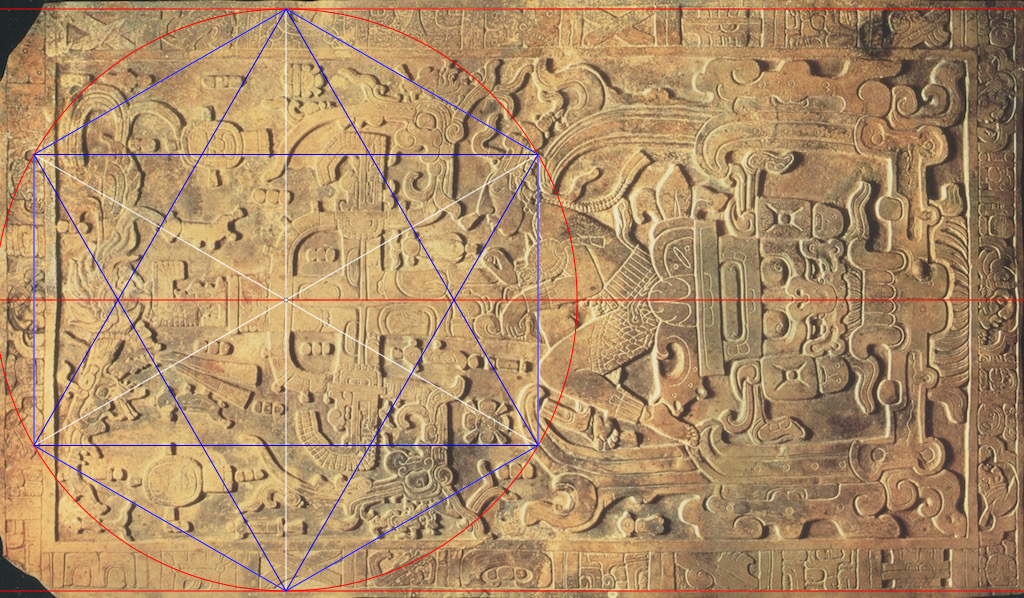
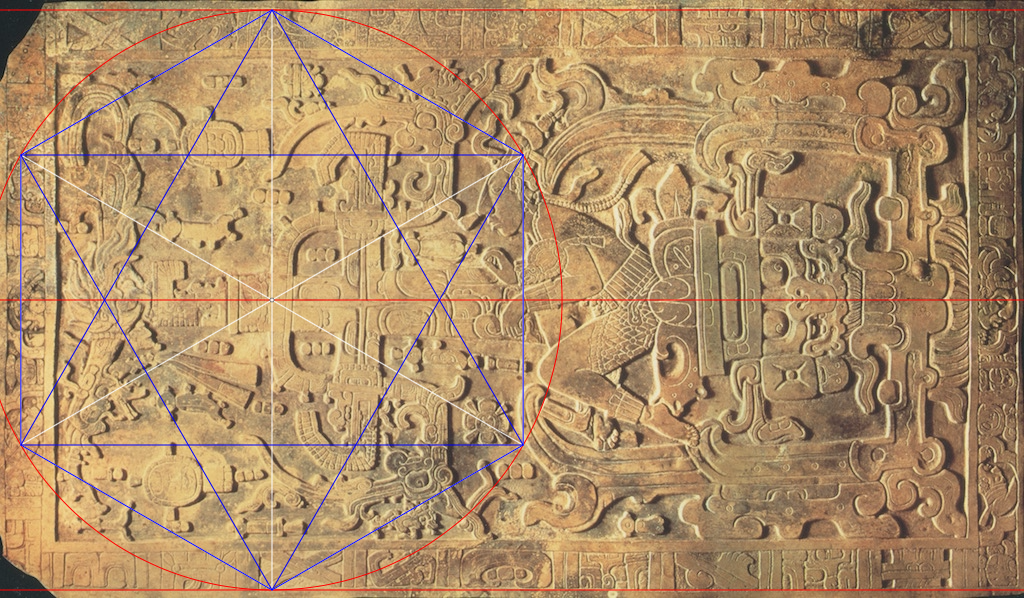
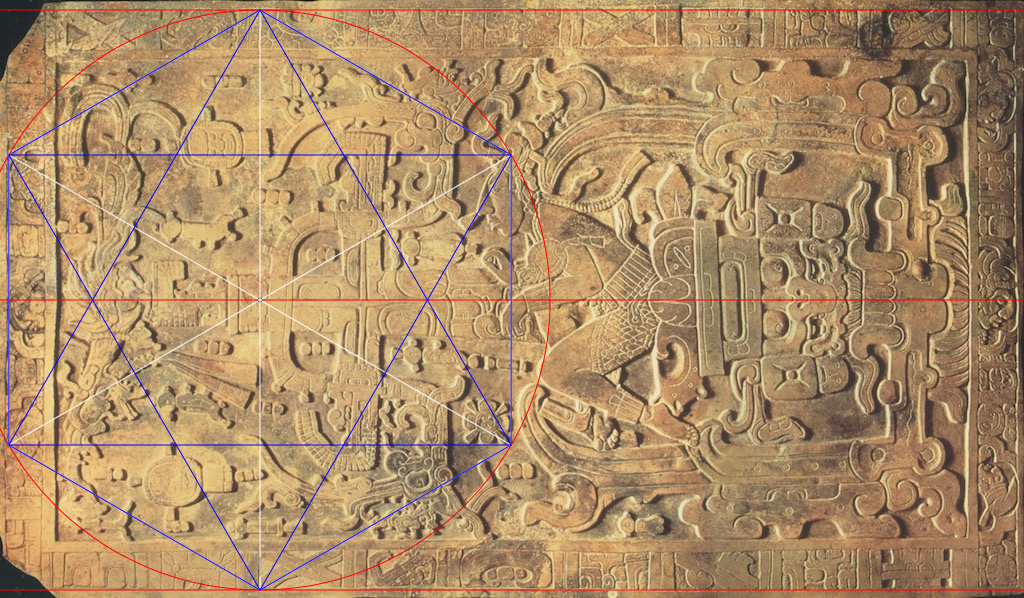
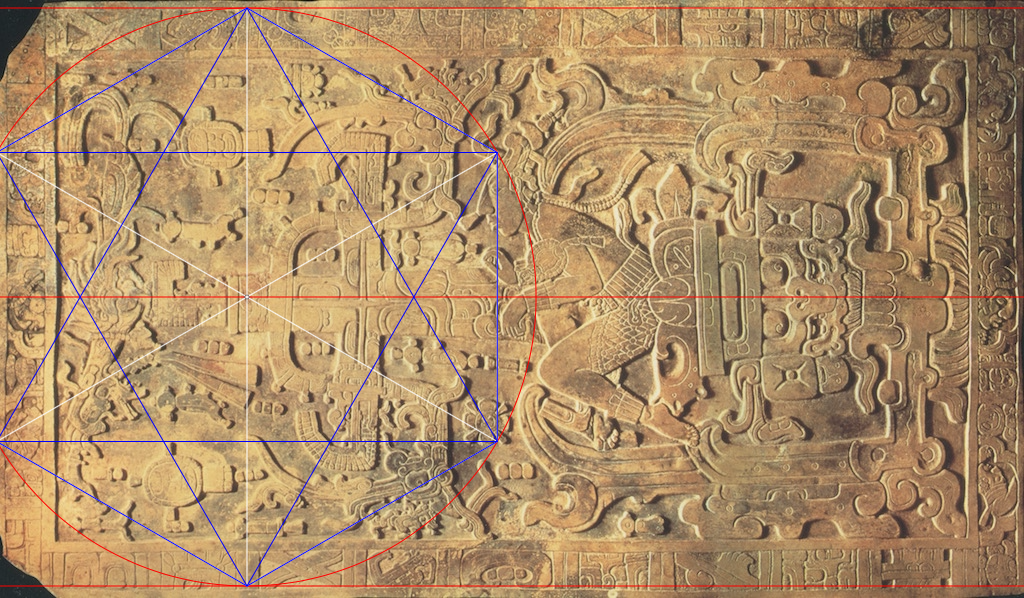
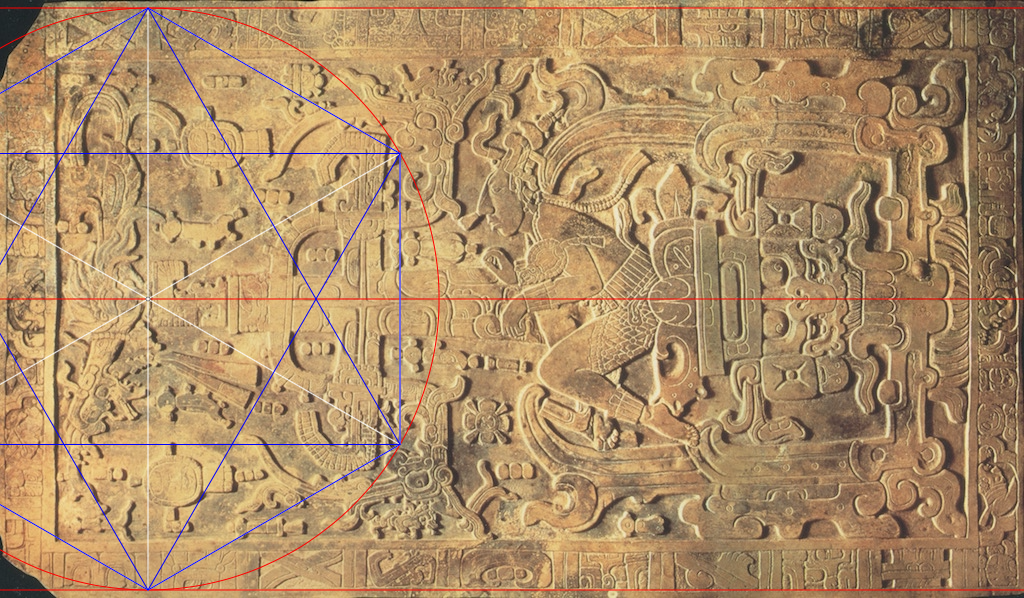
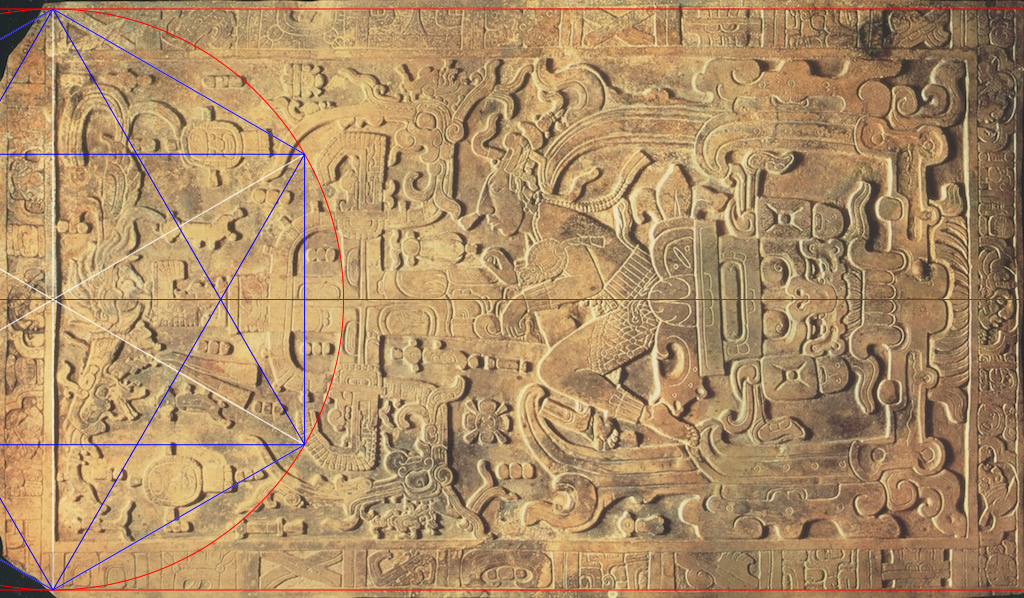
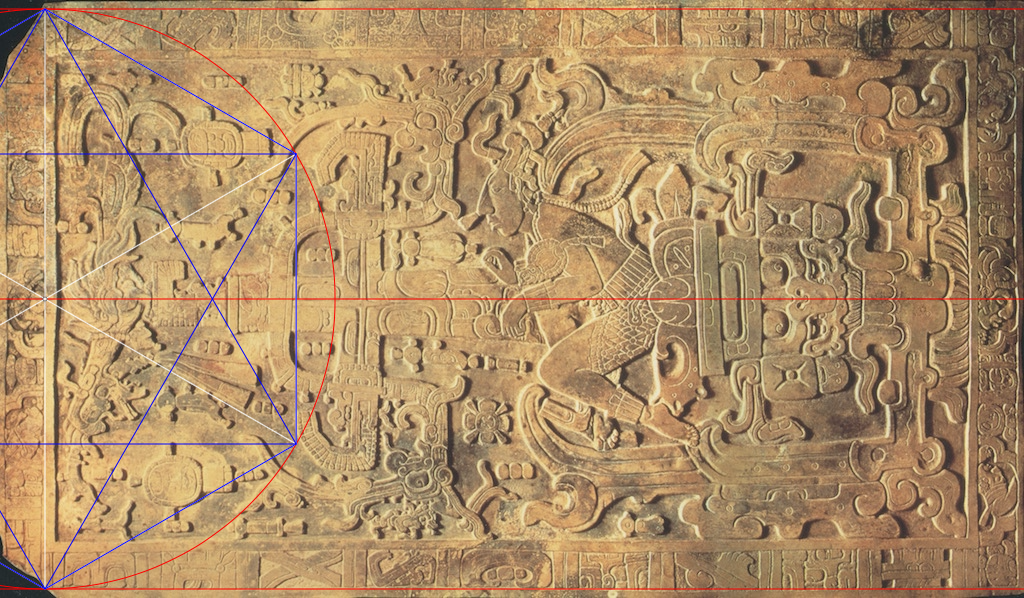

PACAL SARCOPHAGUS LID (PCL-R_B1-B11)
The lower or western baseline is located on the same inside border of the glyph column as PCL-R_A and PCL_CB6PS. The upper, or eastern baseline is the same as the centerline projected by the outer baseline pair also found in PCL-R_A CB6PS_A. This is an example of multiple baseline arrangements encoding different parts of the narrative. This baseline pair places the centerline passing through both ‘western’ hooks and through Pacal’s big and second toes of his right foot. The upper baseline passes through his left wrist. The narrative here may be focused on the role earth’s polar axis plays when aligning to the plane of the ecliptic on the Vernal Equinox.
(Art Motifs/Image Sources Fig.114)
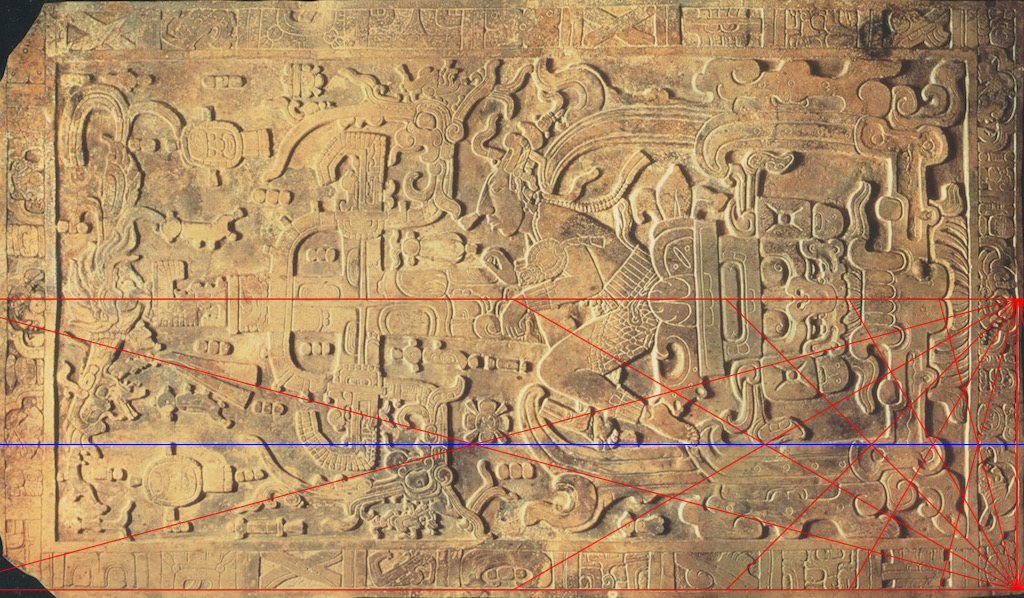
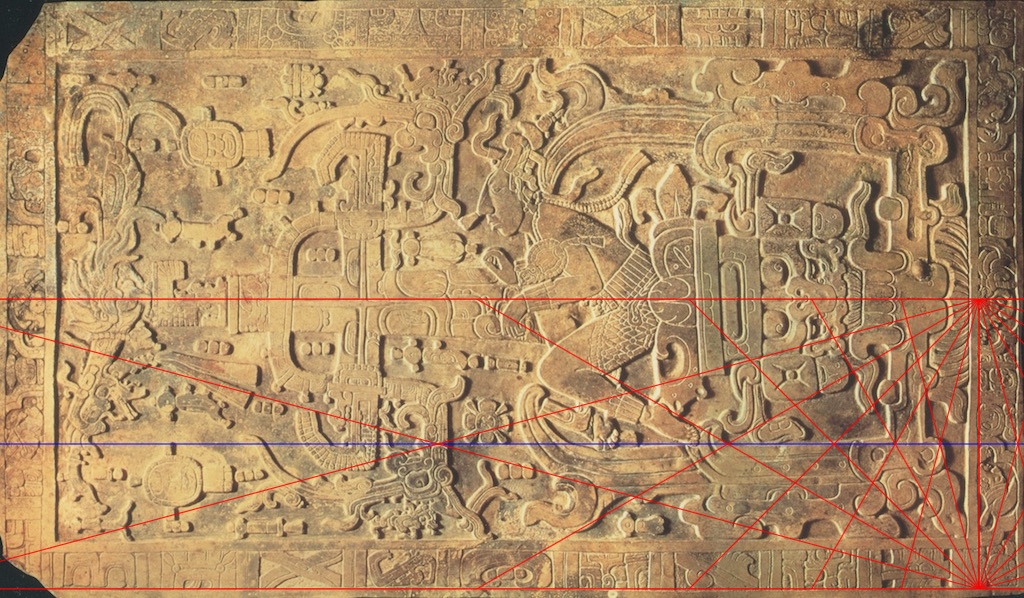
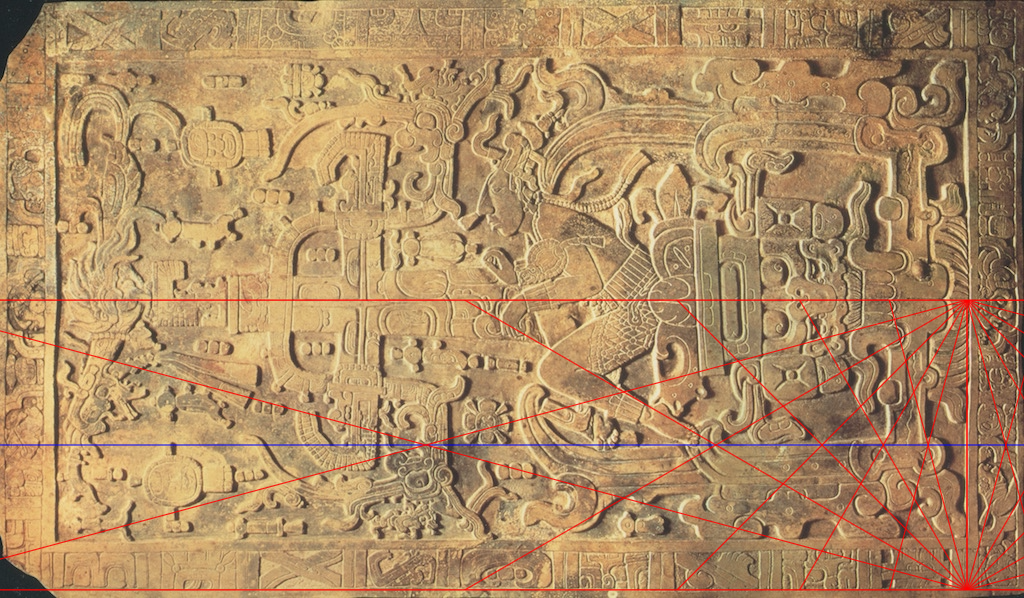
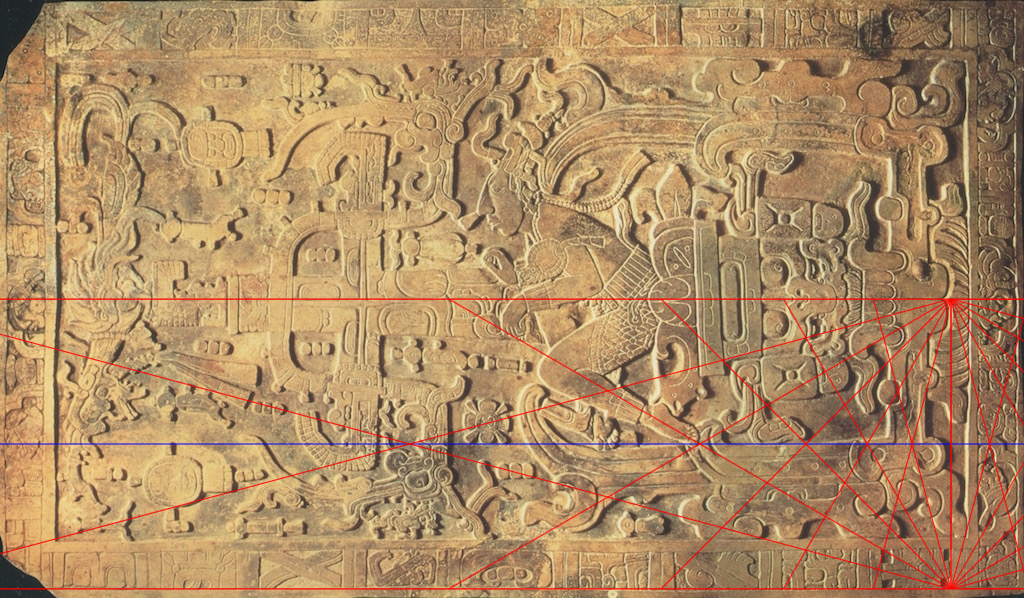
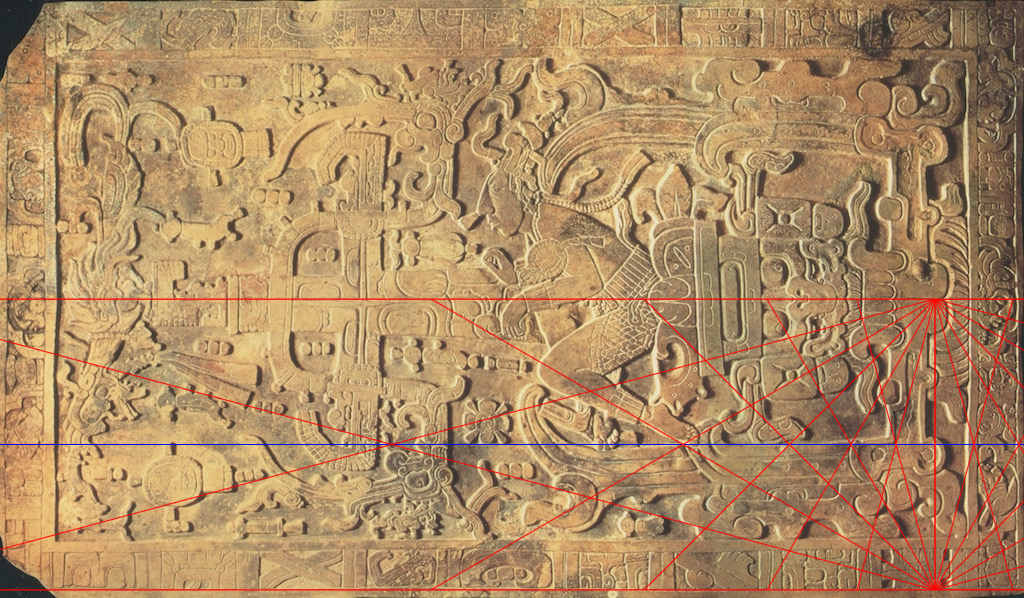
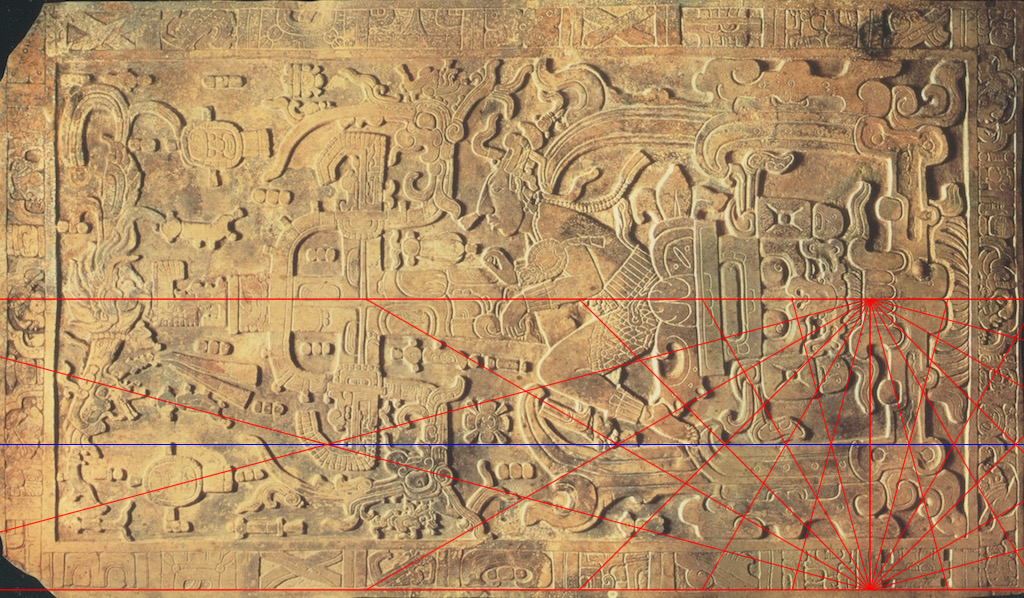
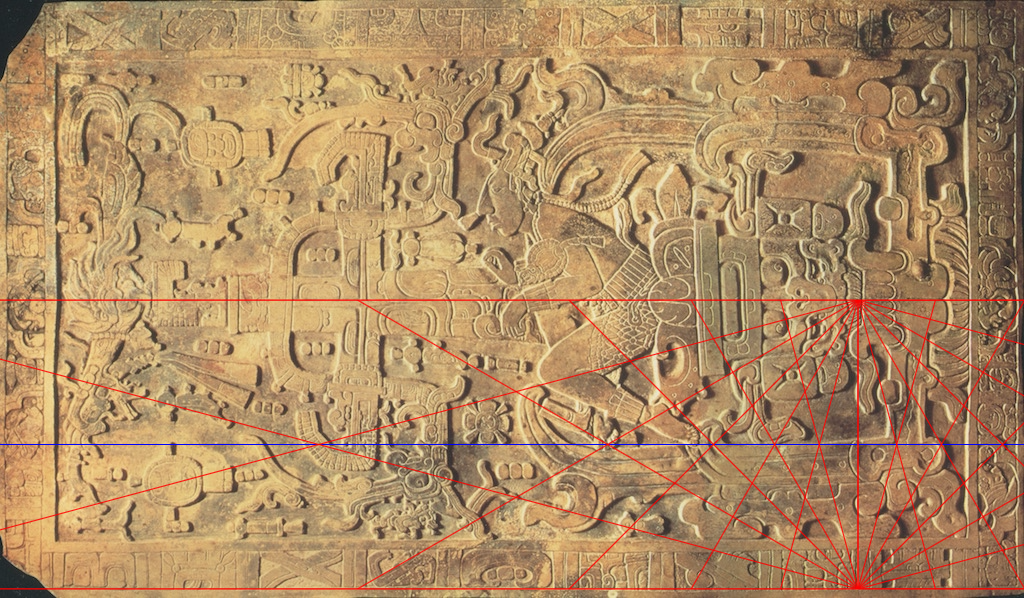
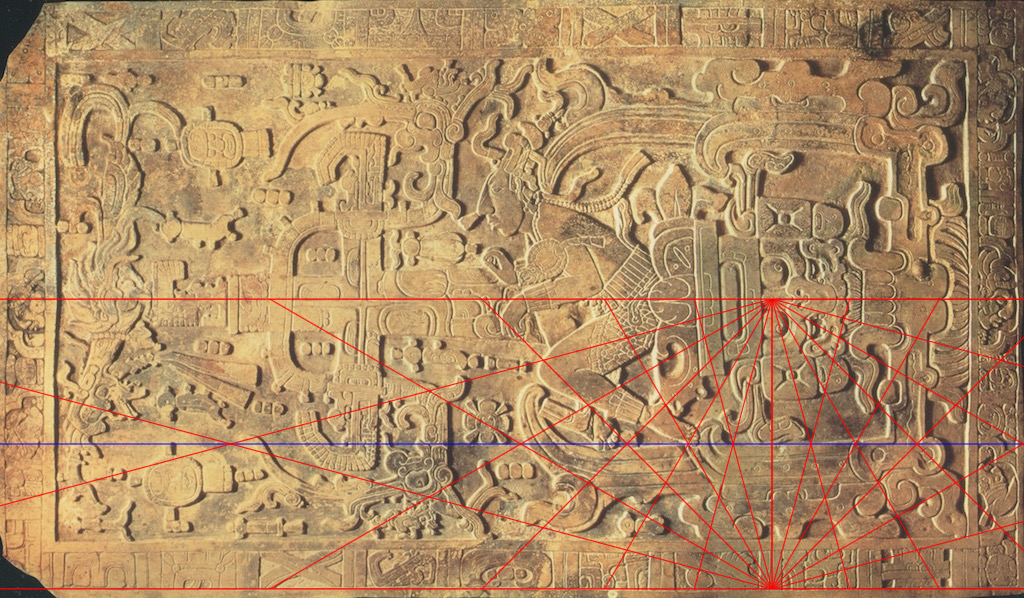
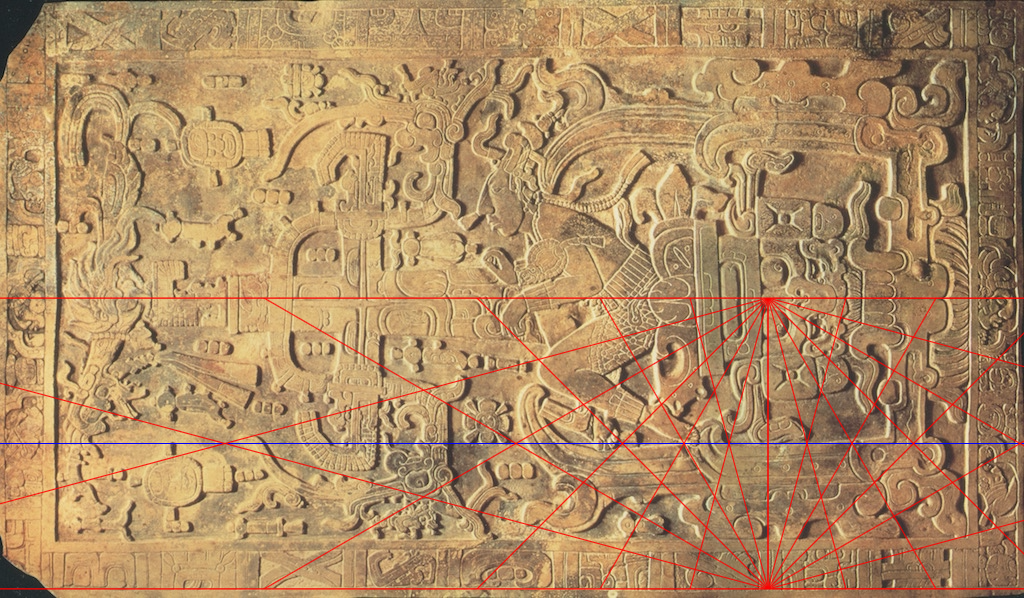
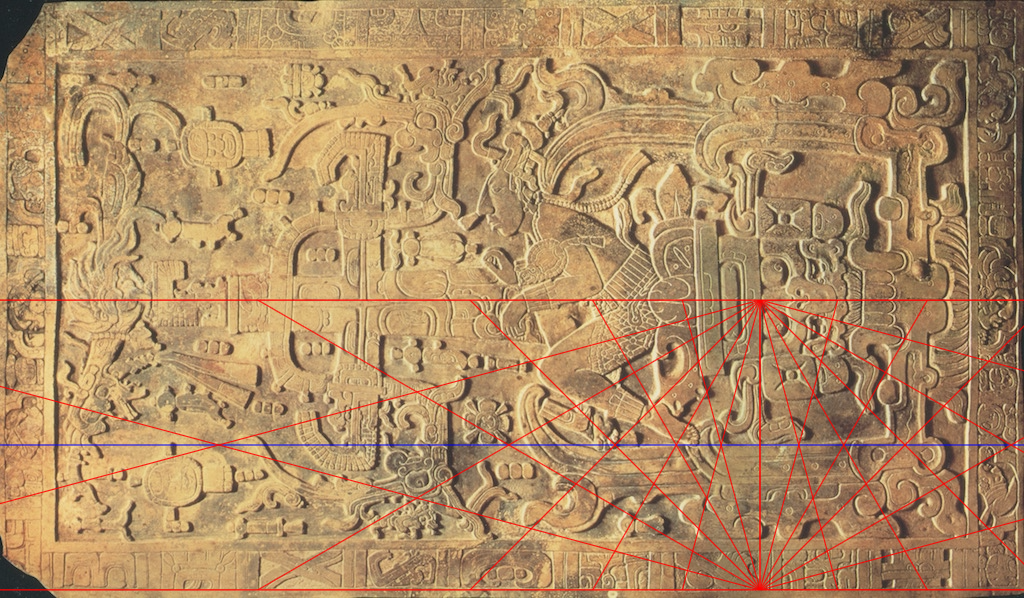
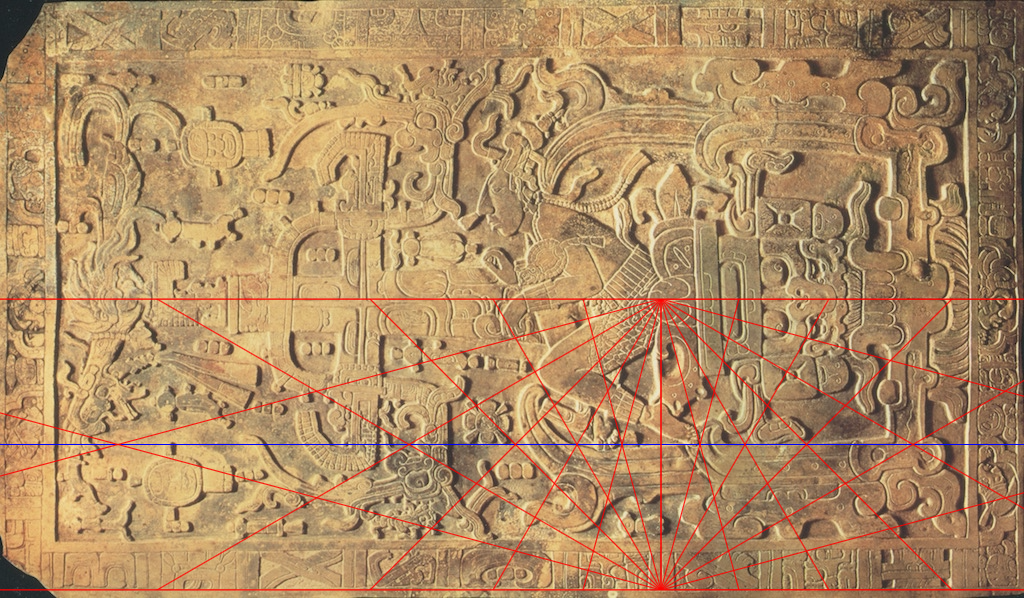
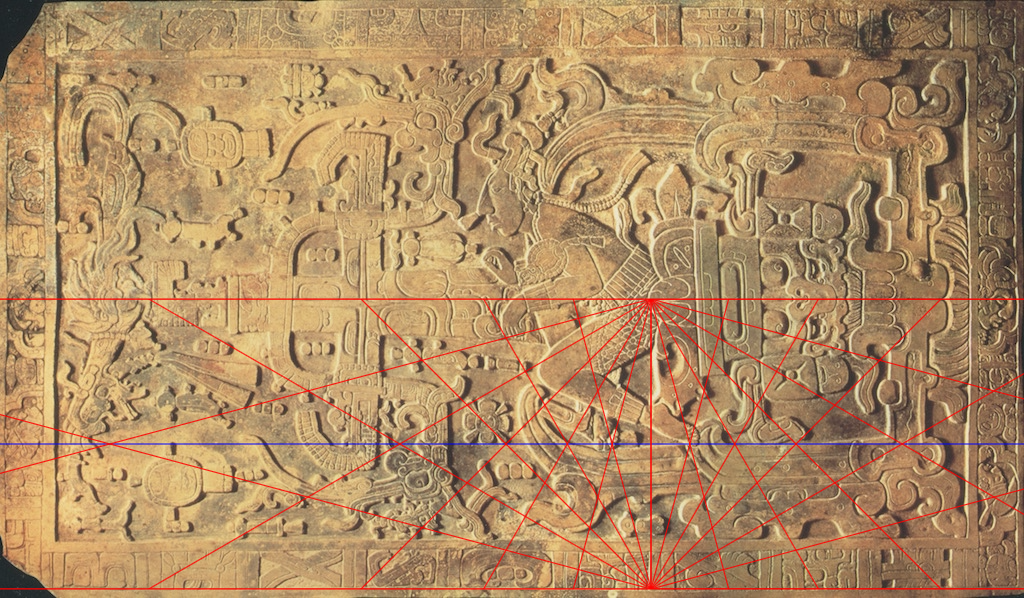
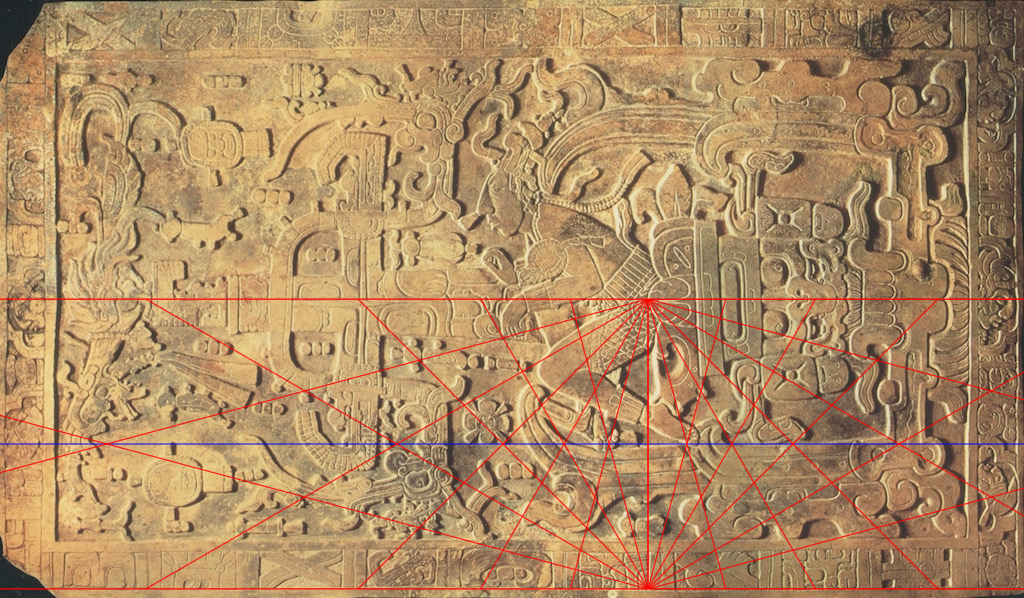
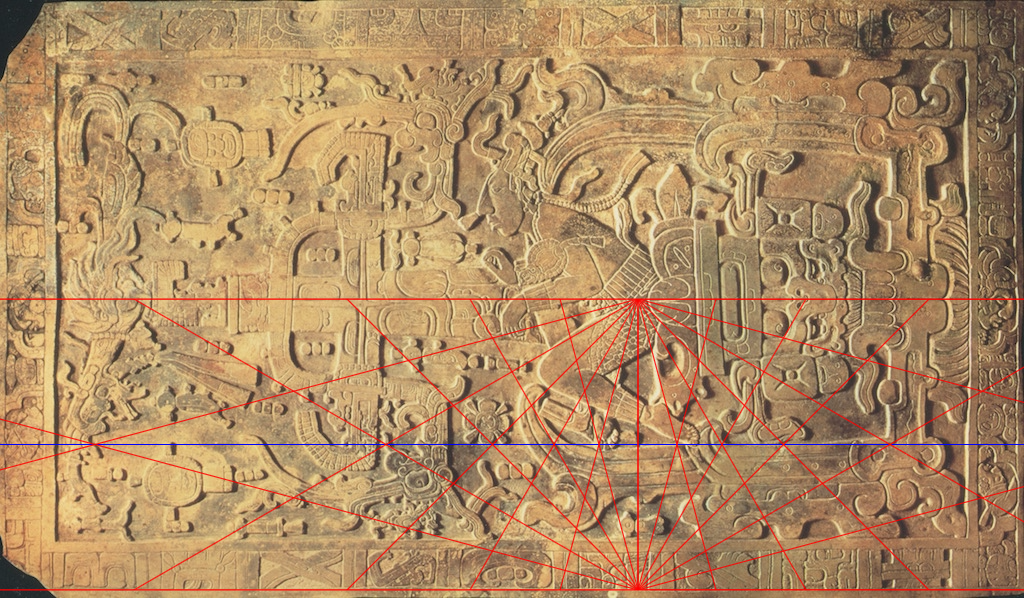
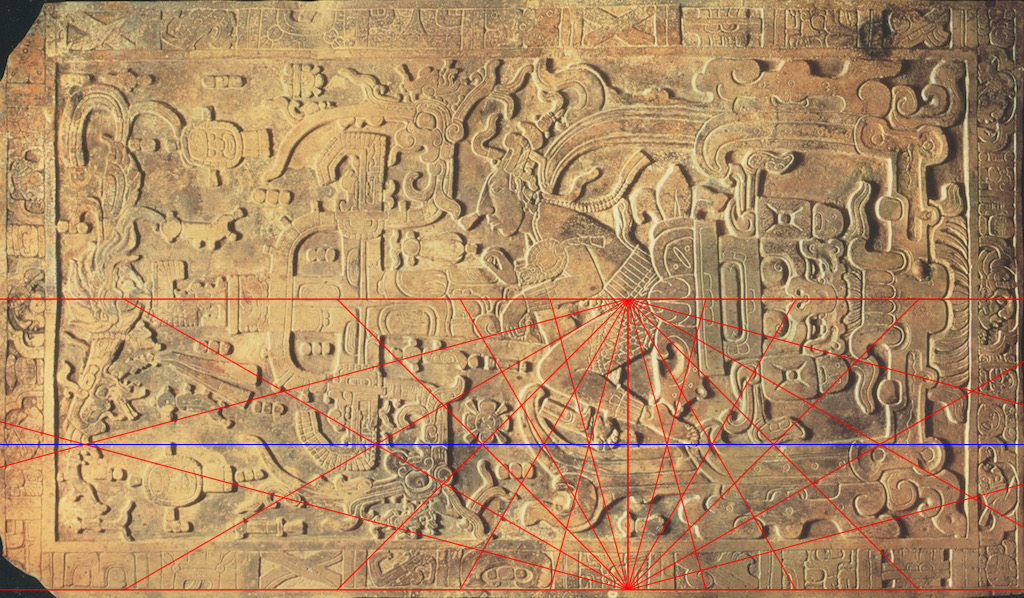
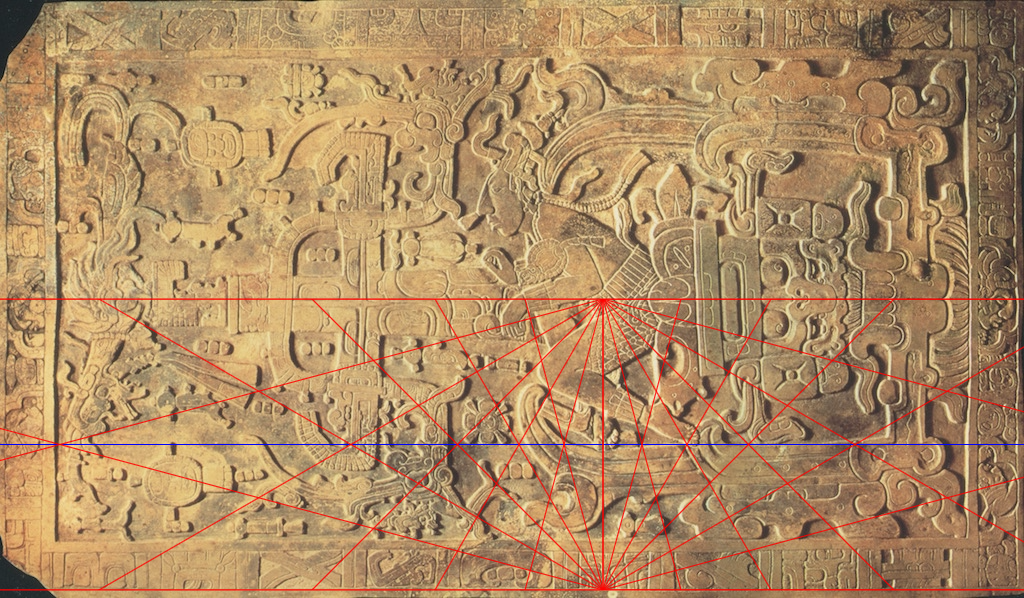
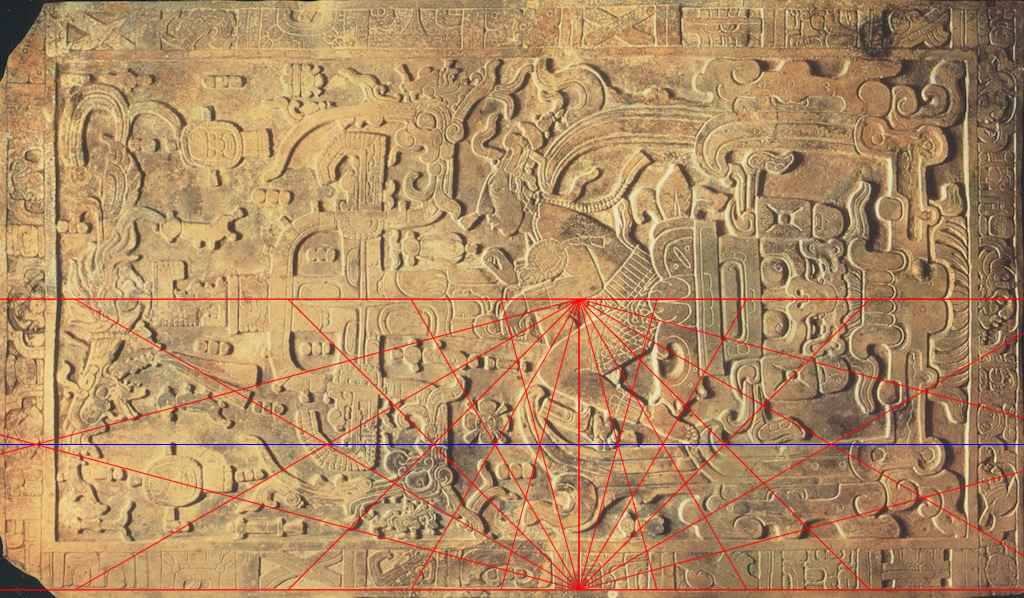
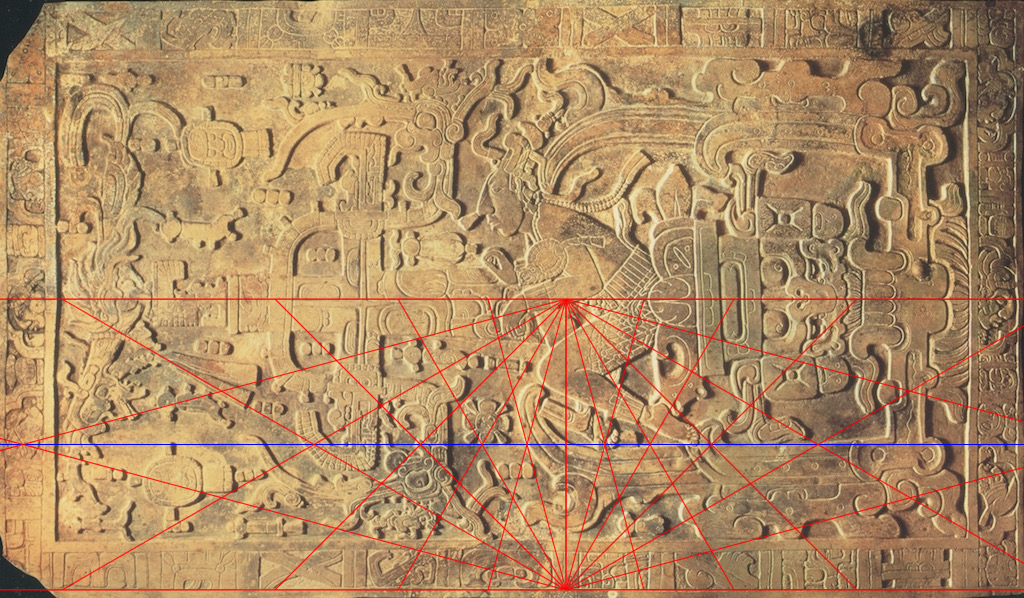
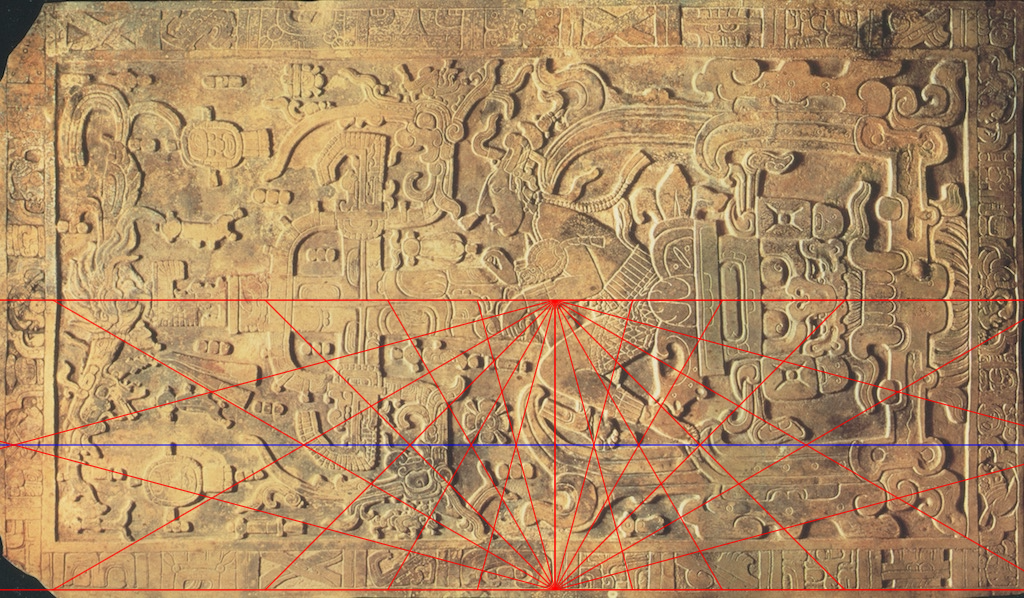
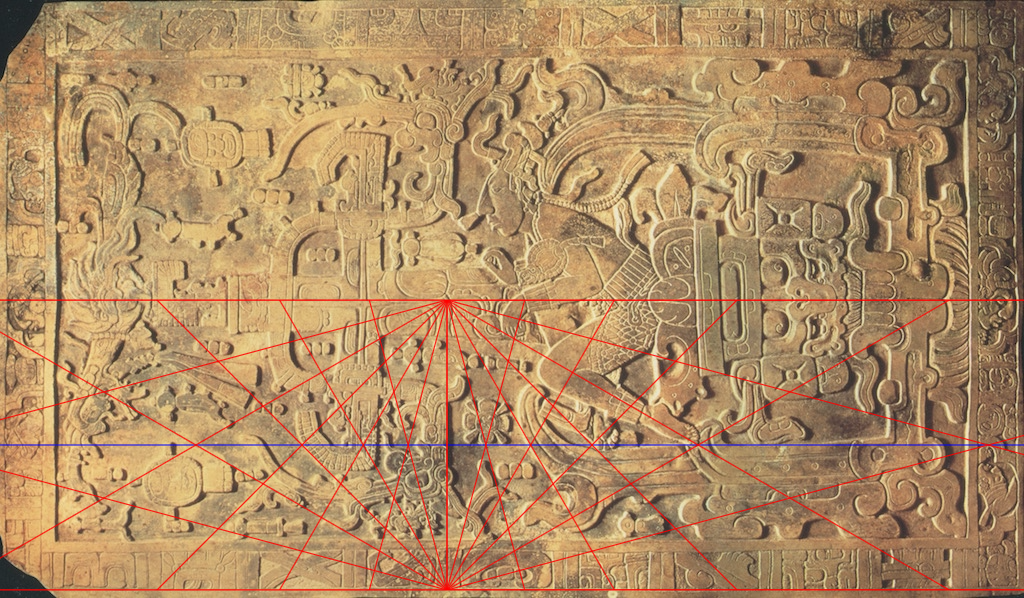
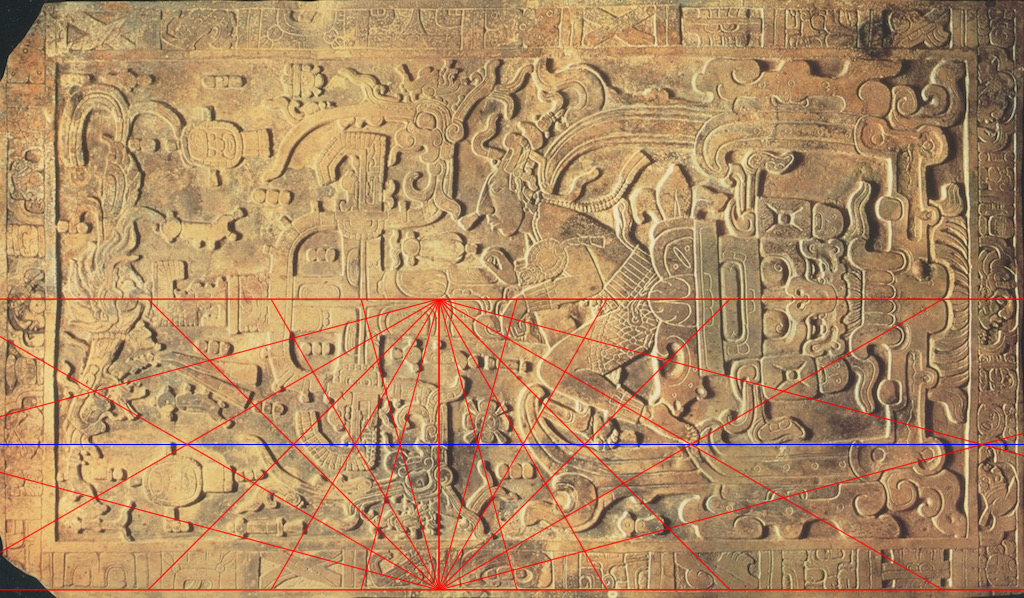
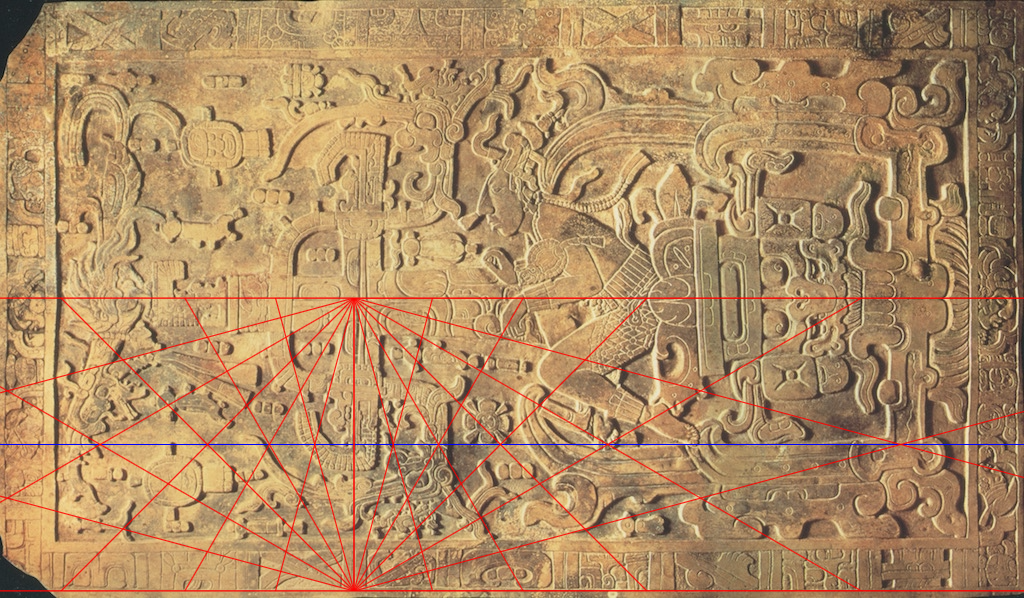
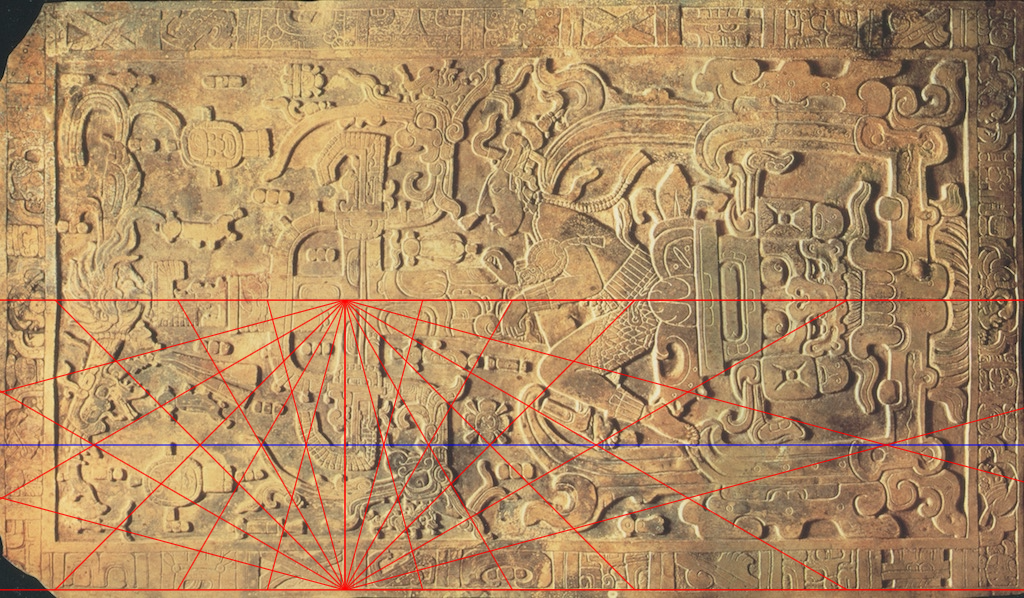
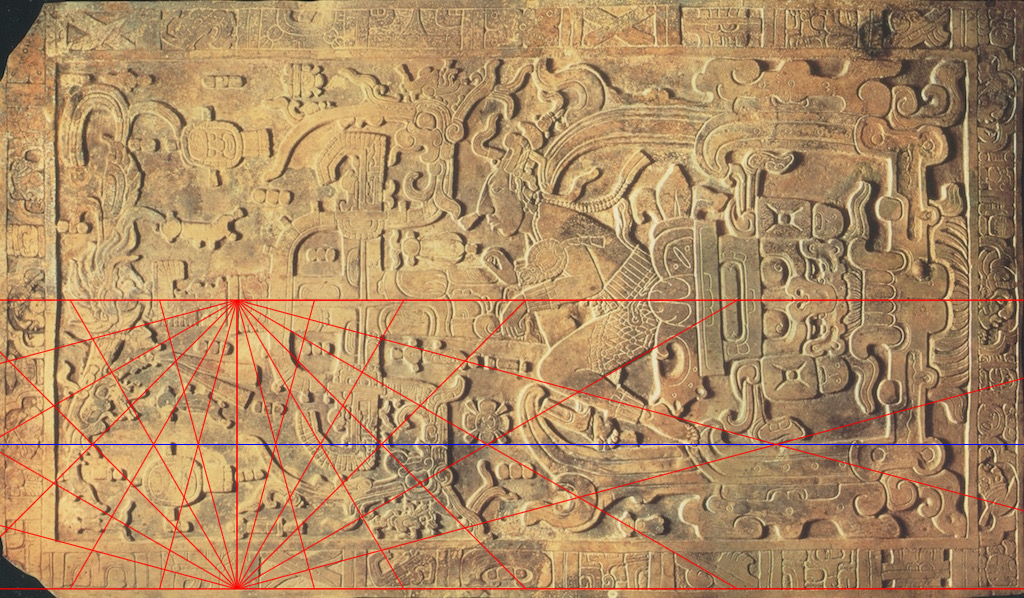
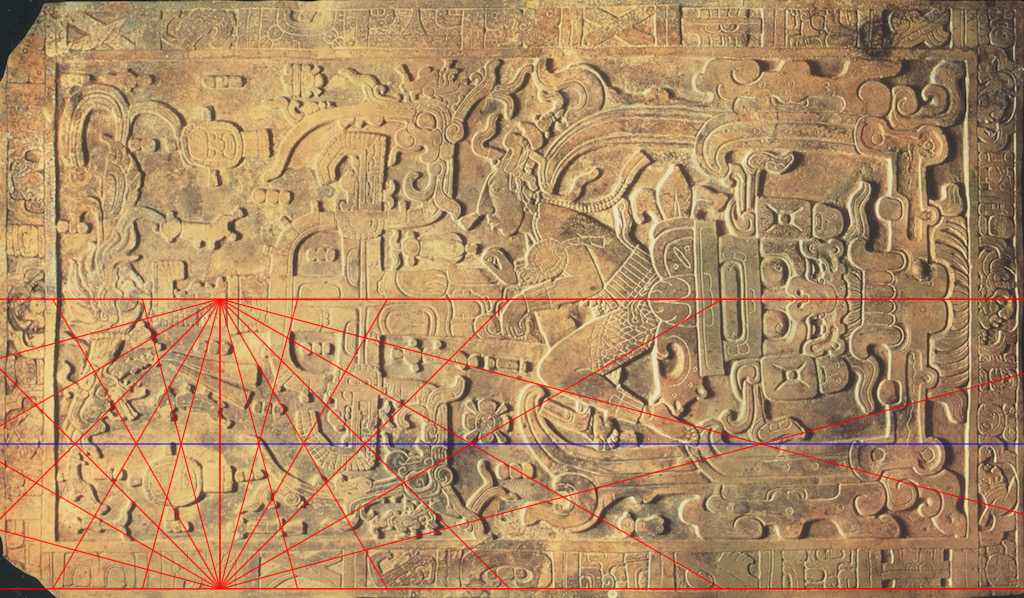
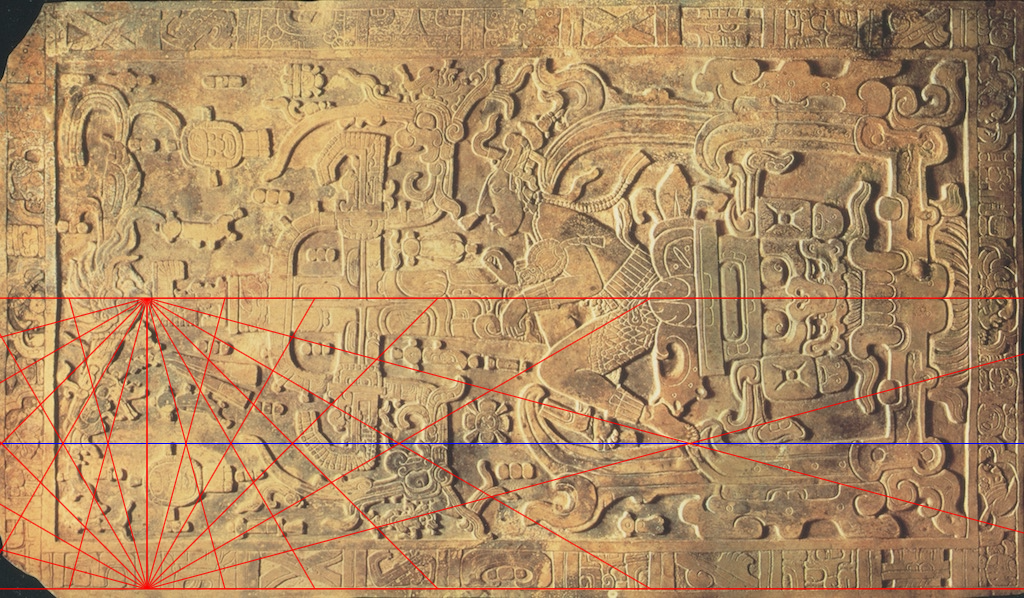
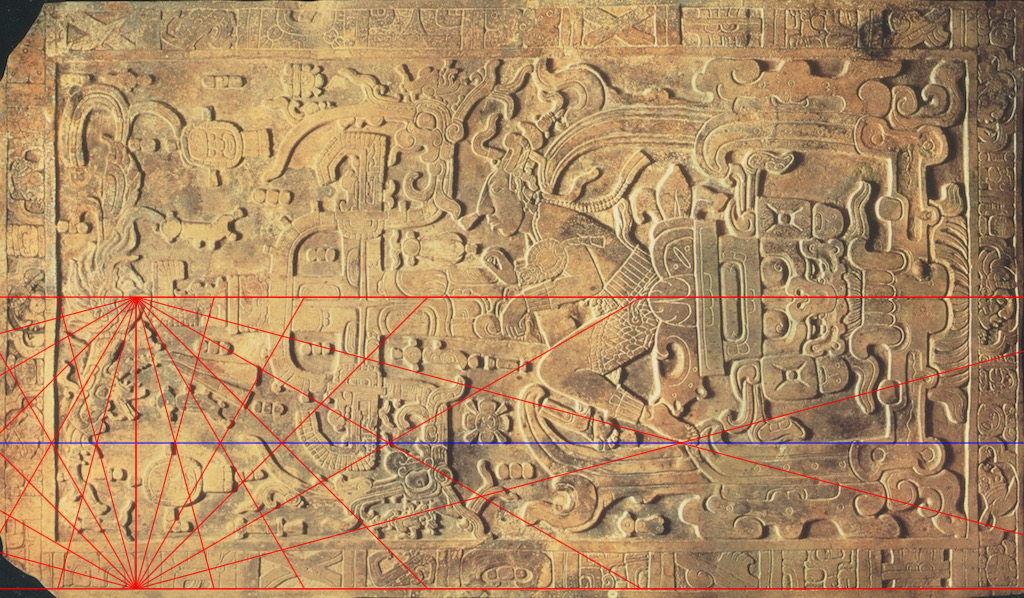
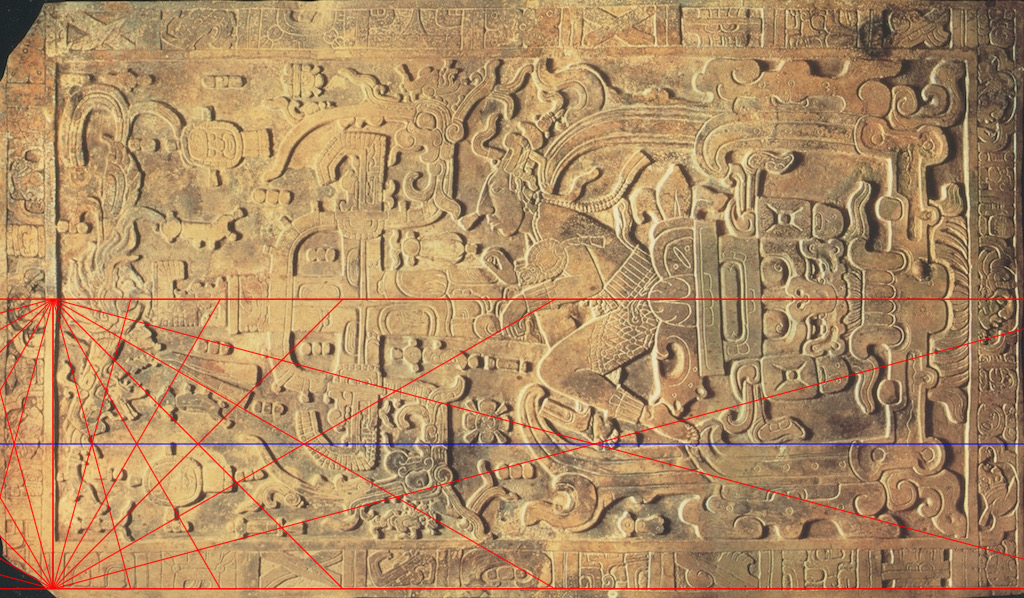
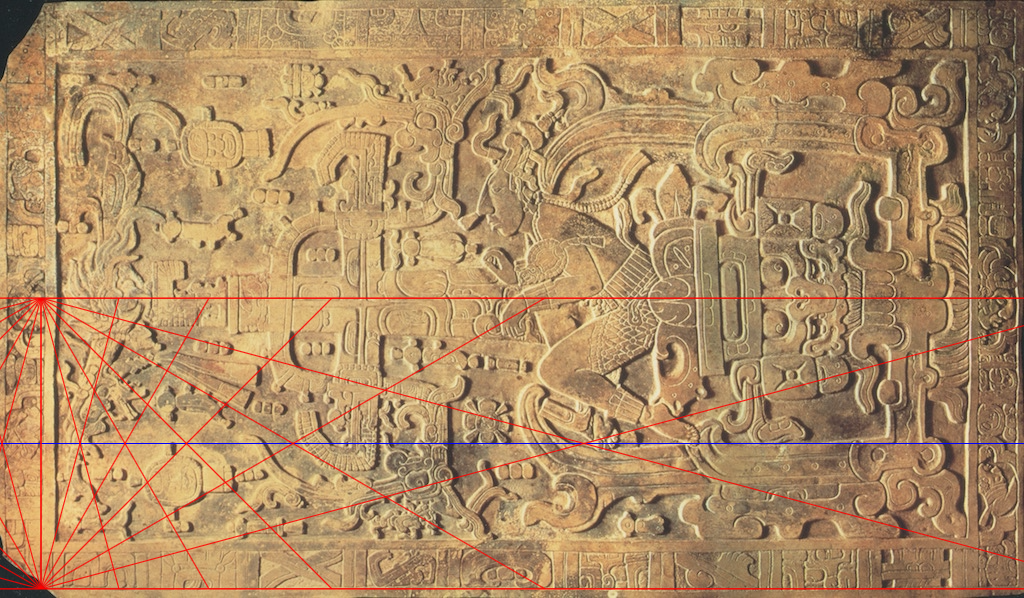
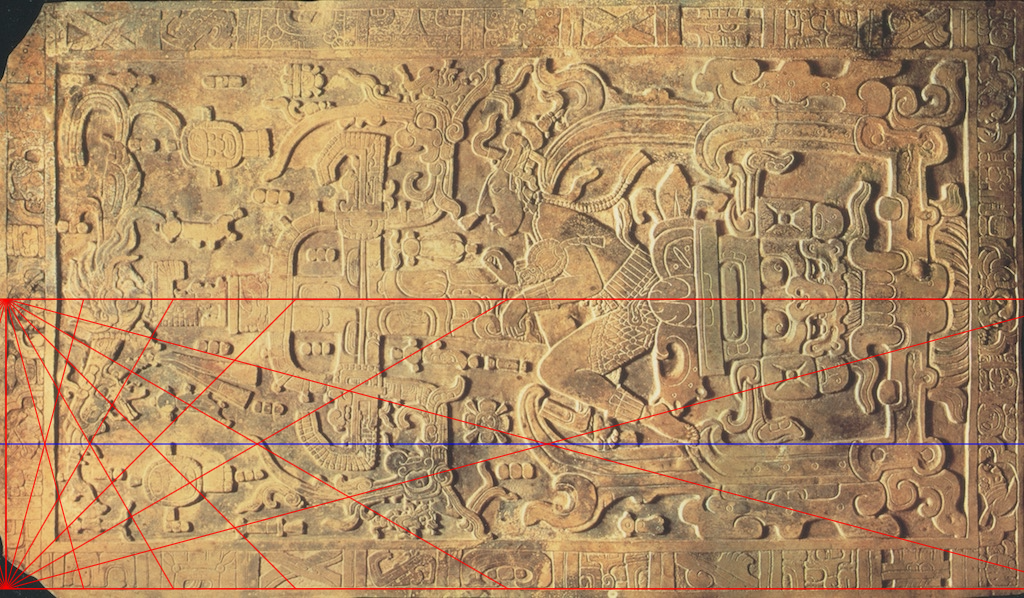

PACAL SARCOPHAGUS LID (PCL-R_C1-C11)
The lower baseline is the same as the upper baseline of PCL_R-B, which is also the centerline projected by the outer baseline pair found in PCL-R_A. The upper, or ‘eastern’ baseline is the inside border of the outer baseline pair. The centerline passes through both ‘eastern’ hooks. Watch Pacal’s mouth, eye, and his right hand and fingers as the rays projected down from above, or from the ‘east’, align them with particular features of the glyphs as the grid’s rays progress through the hooks.
(Art Motifs/Image Sources Fig.114)
